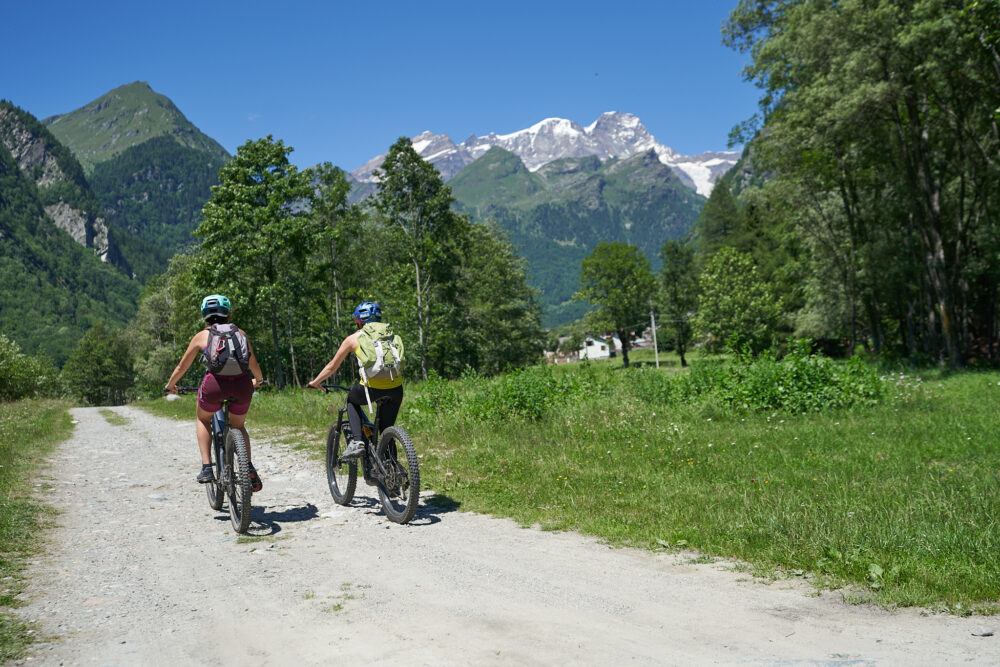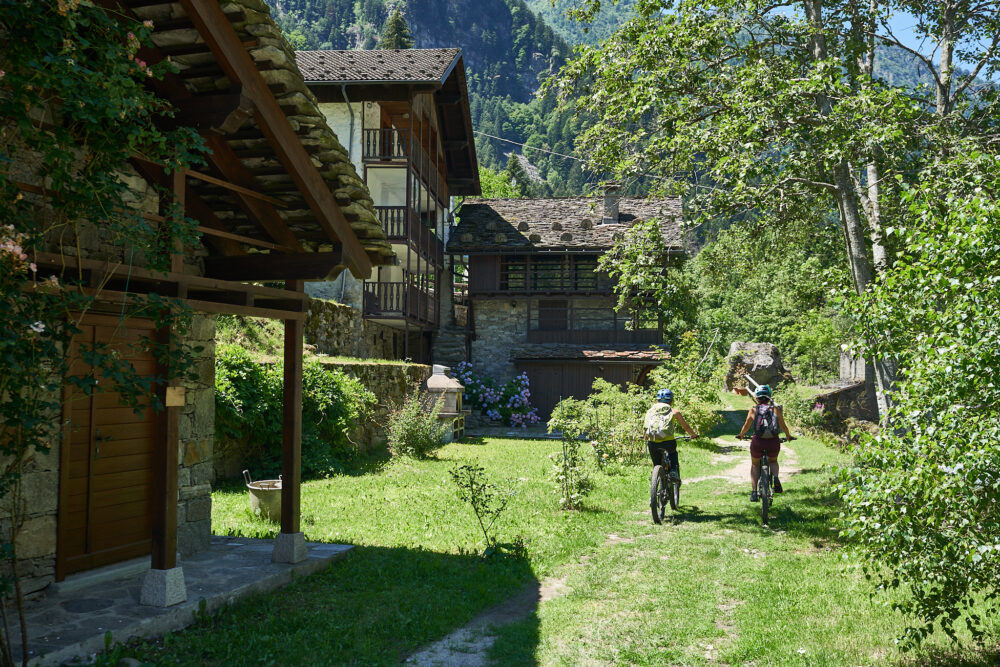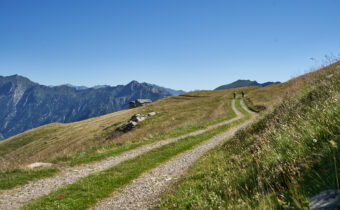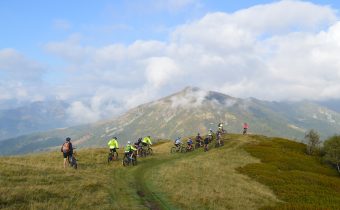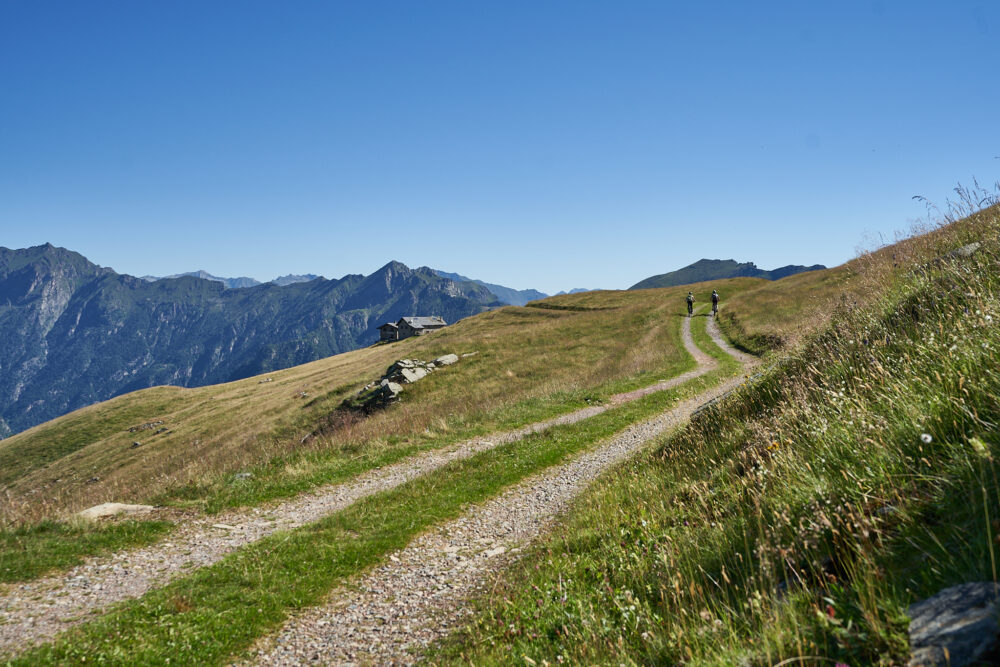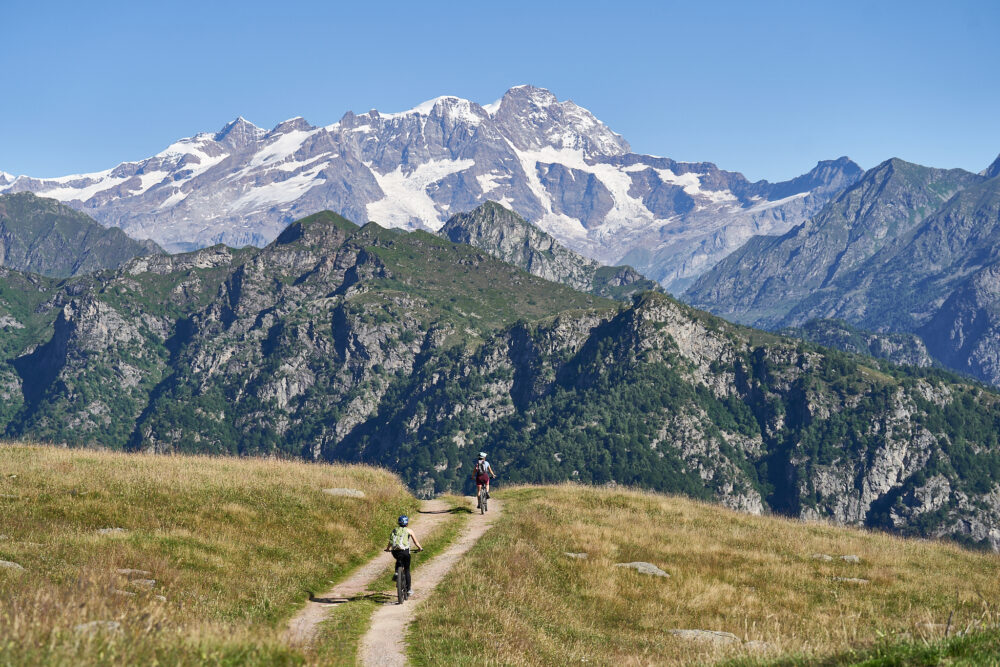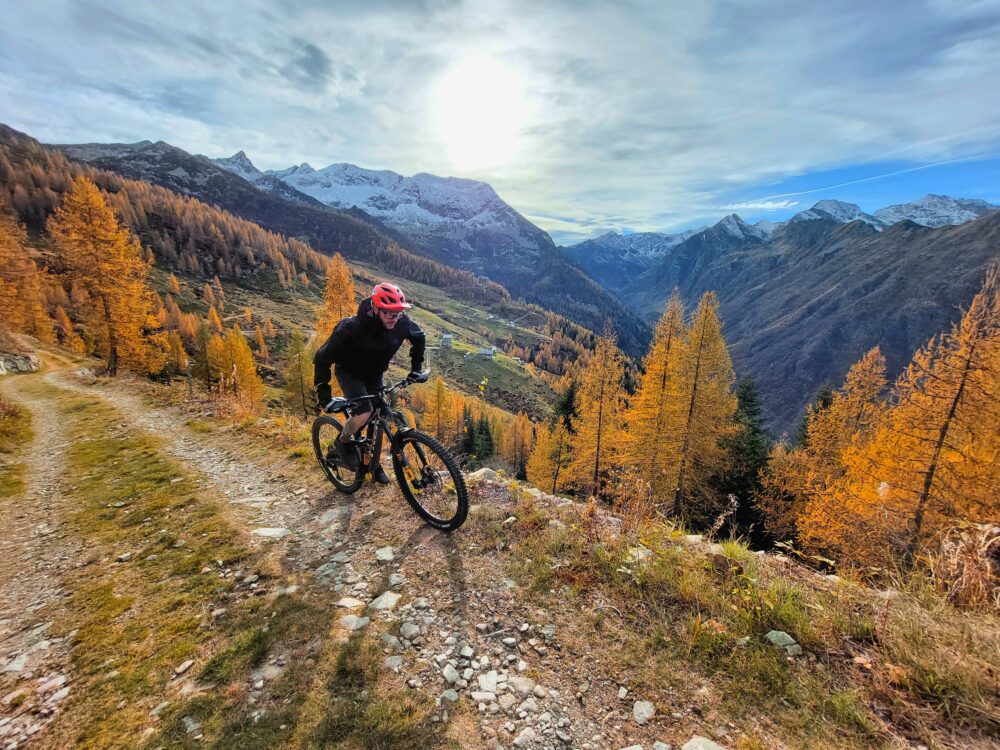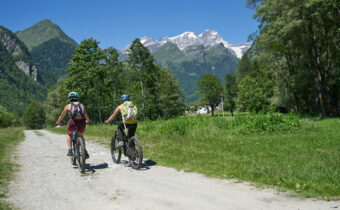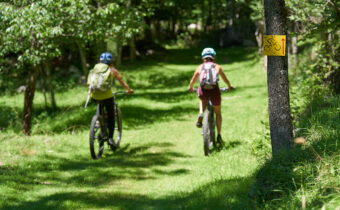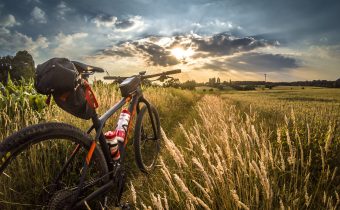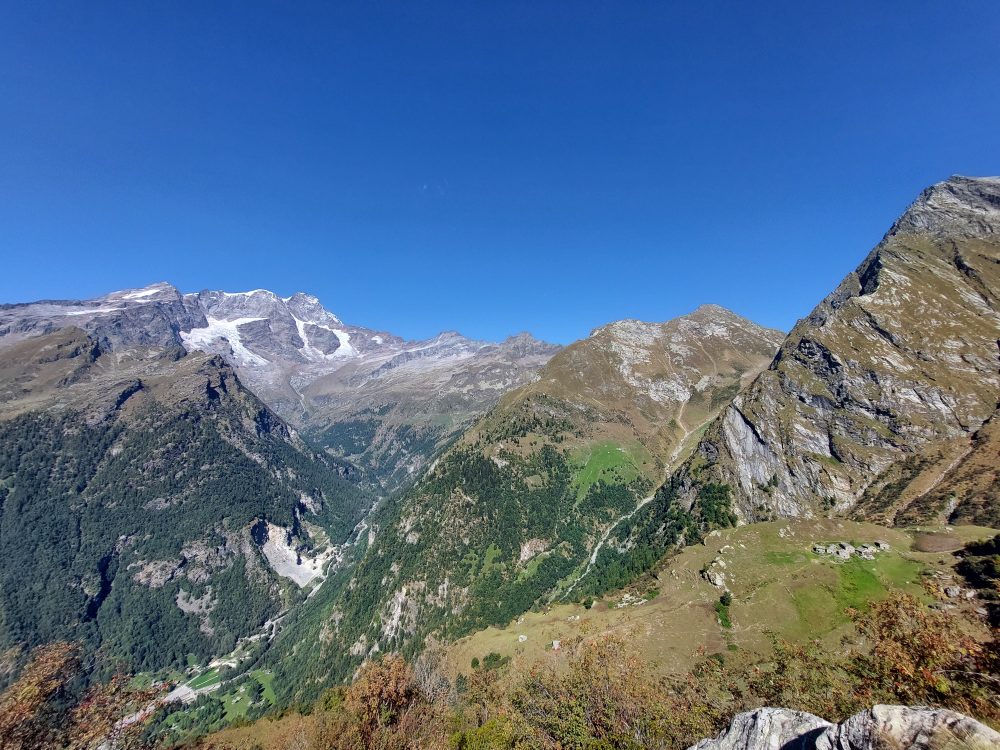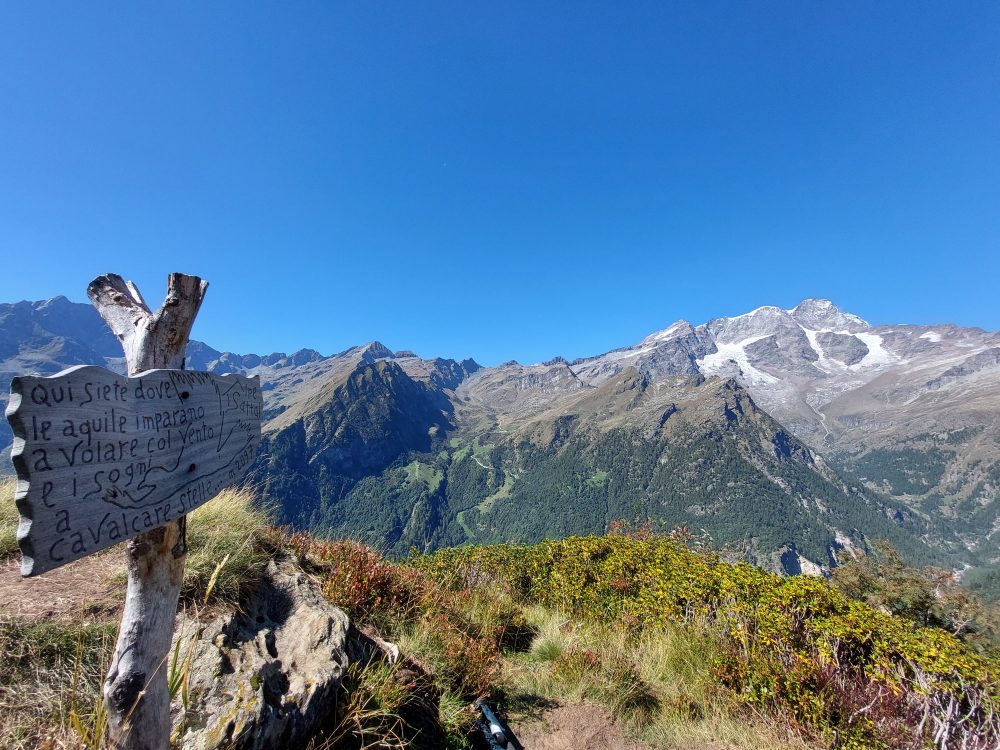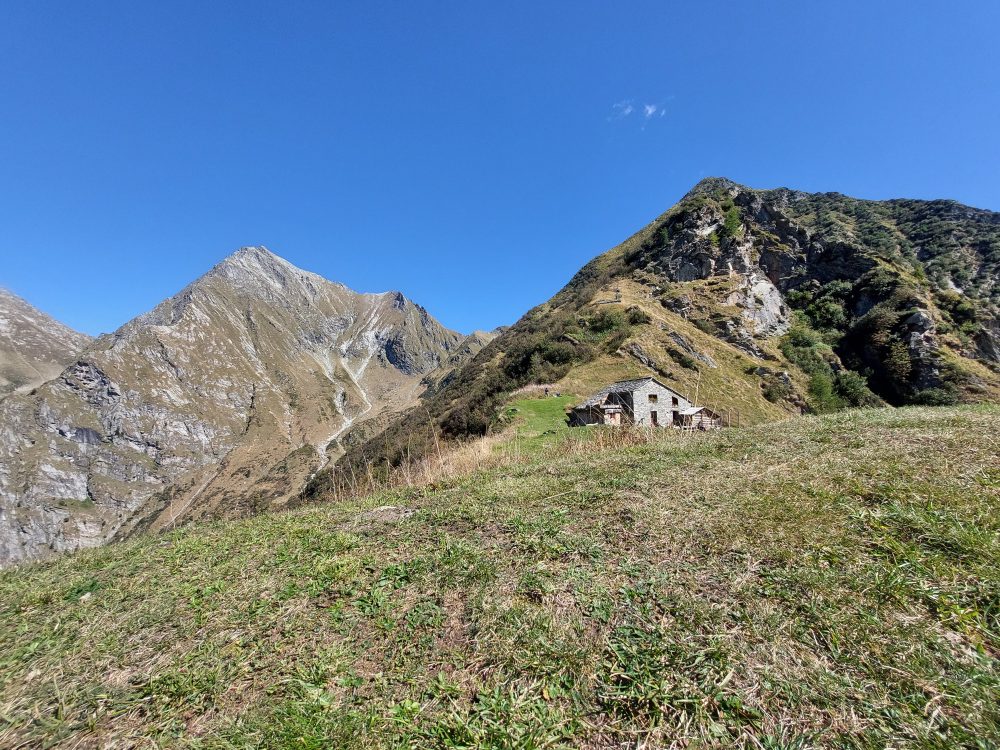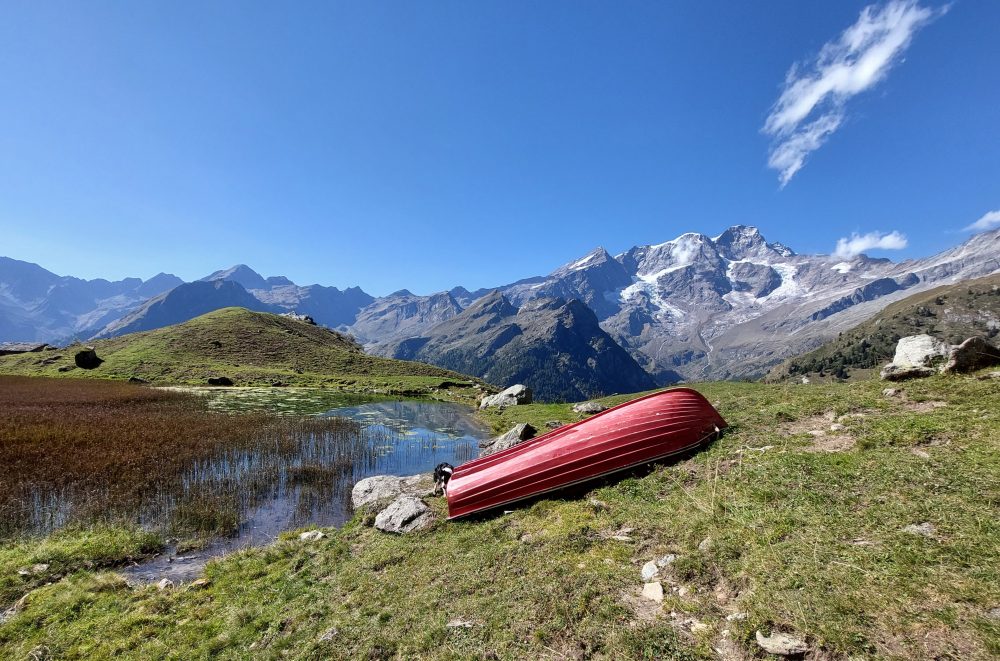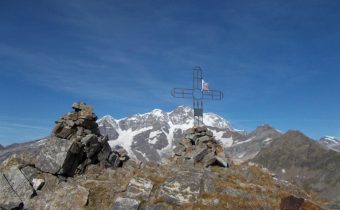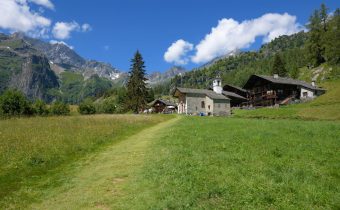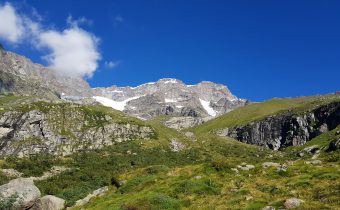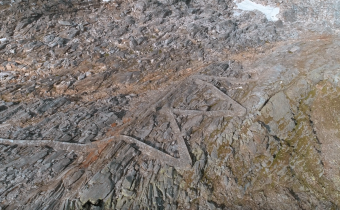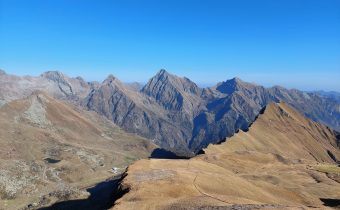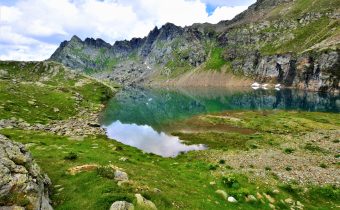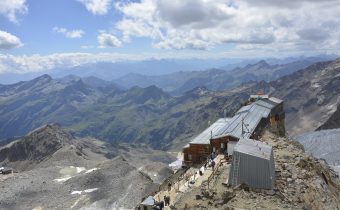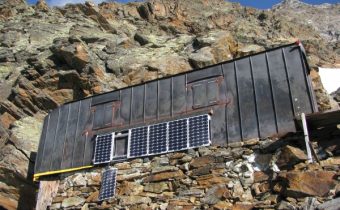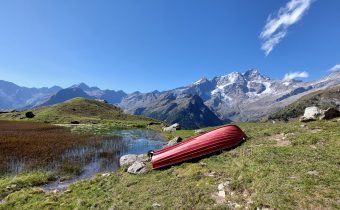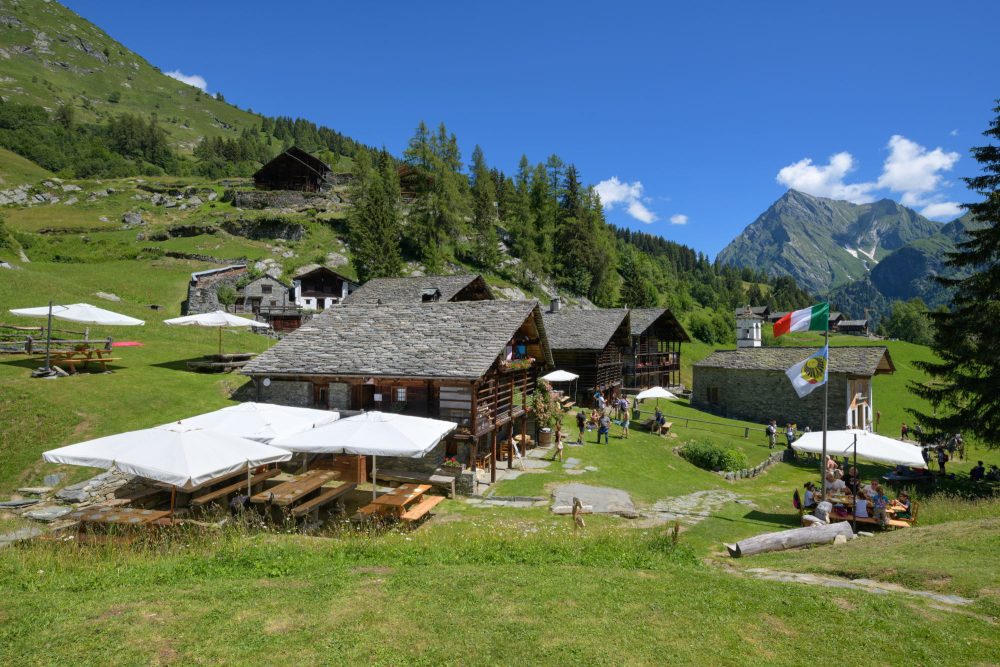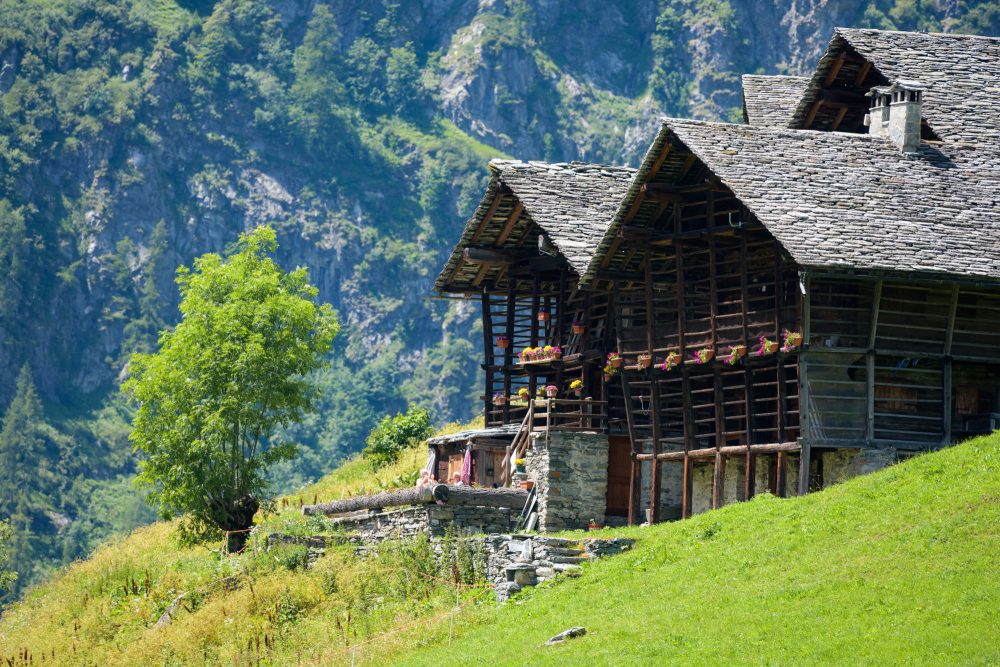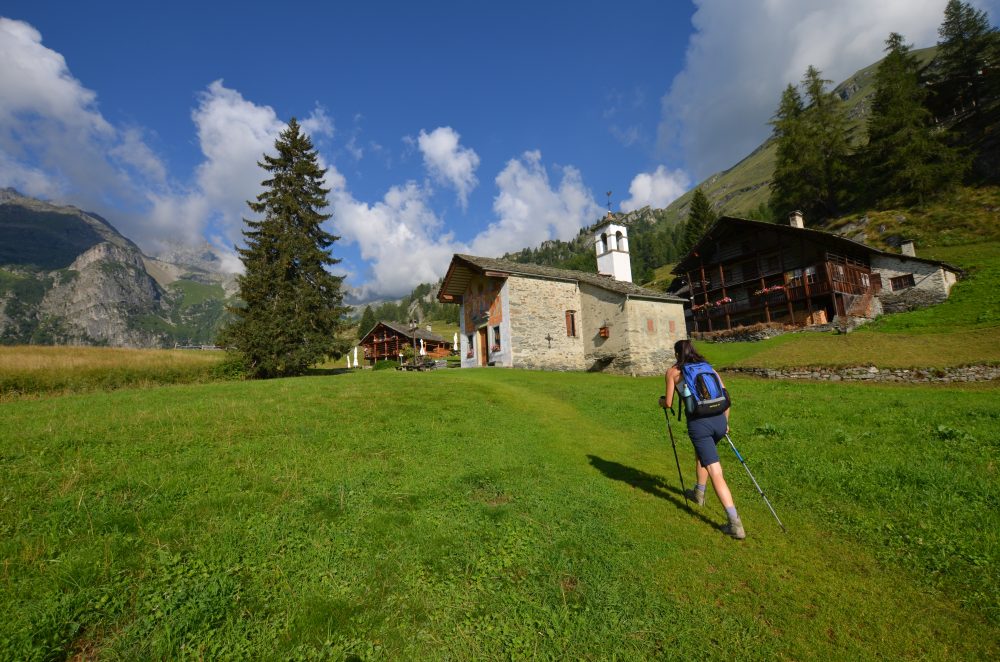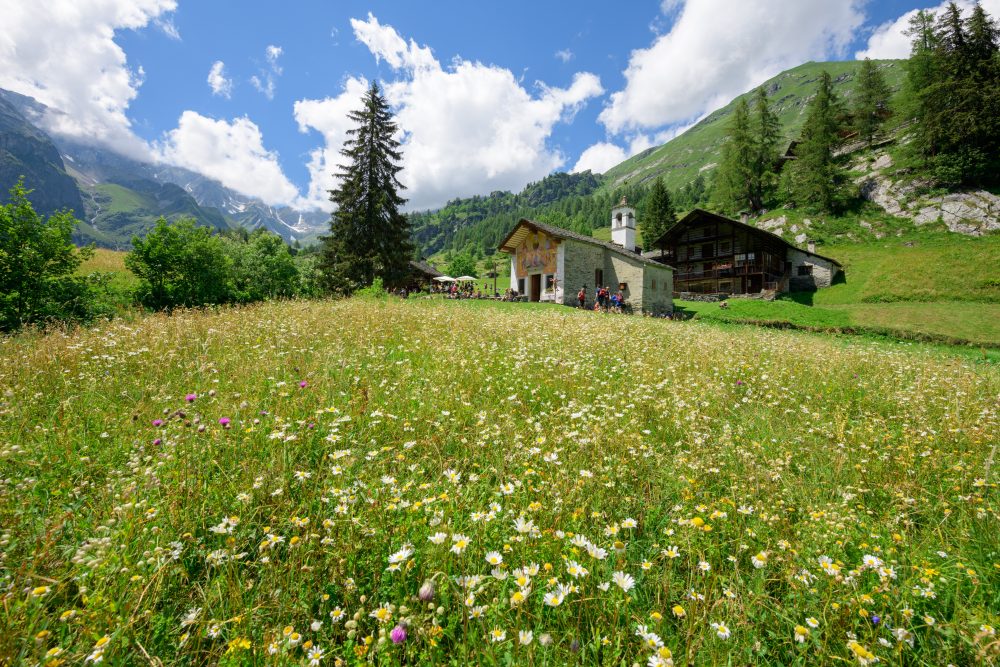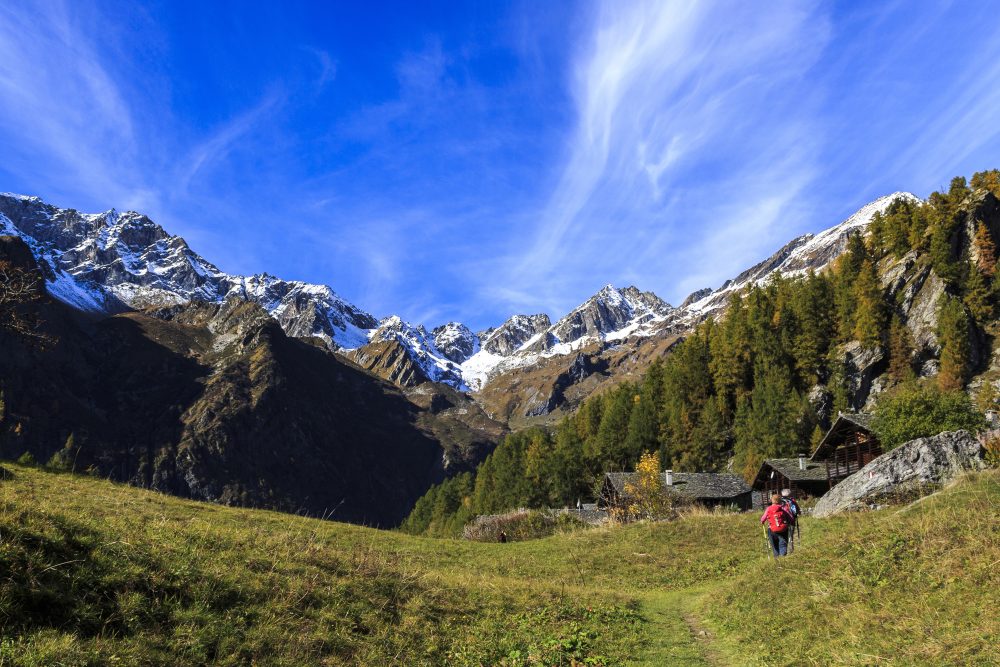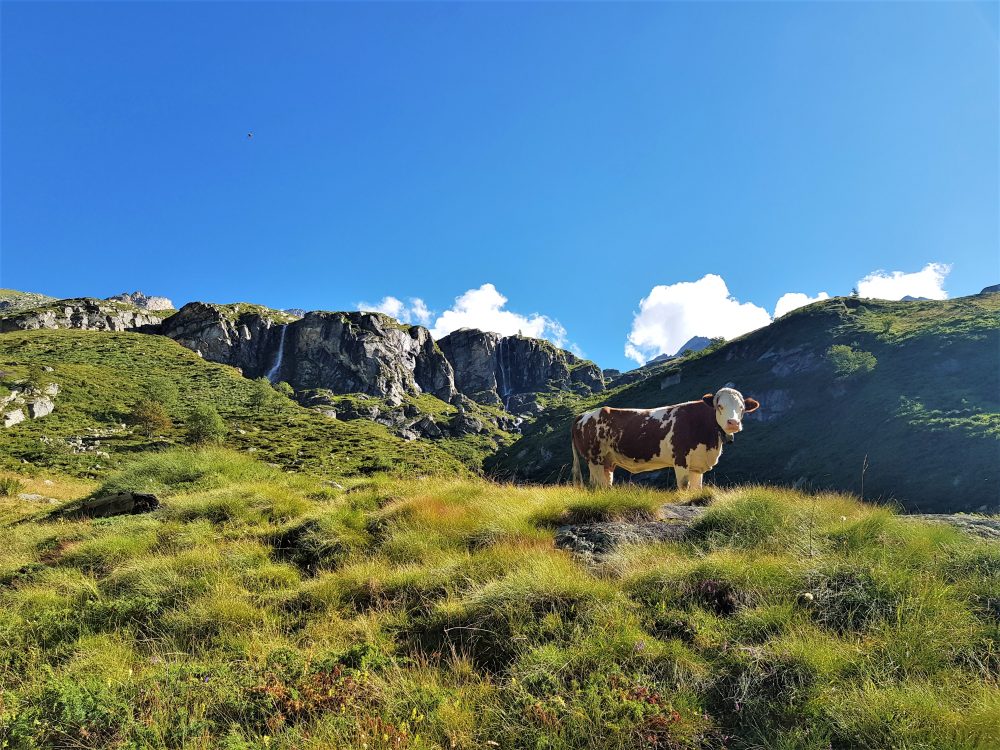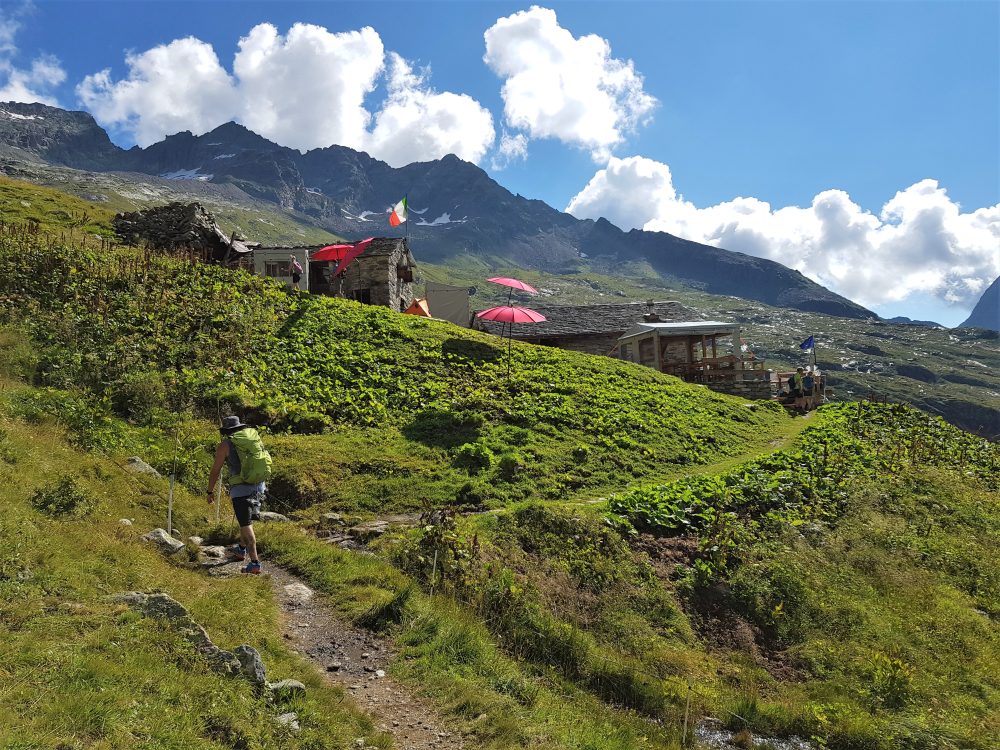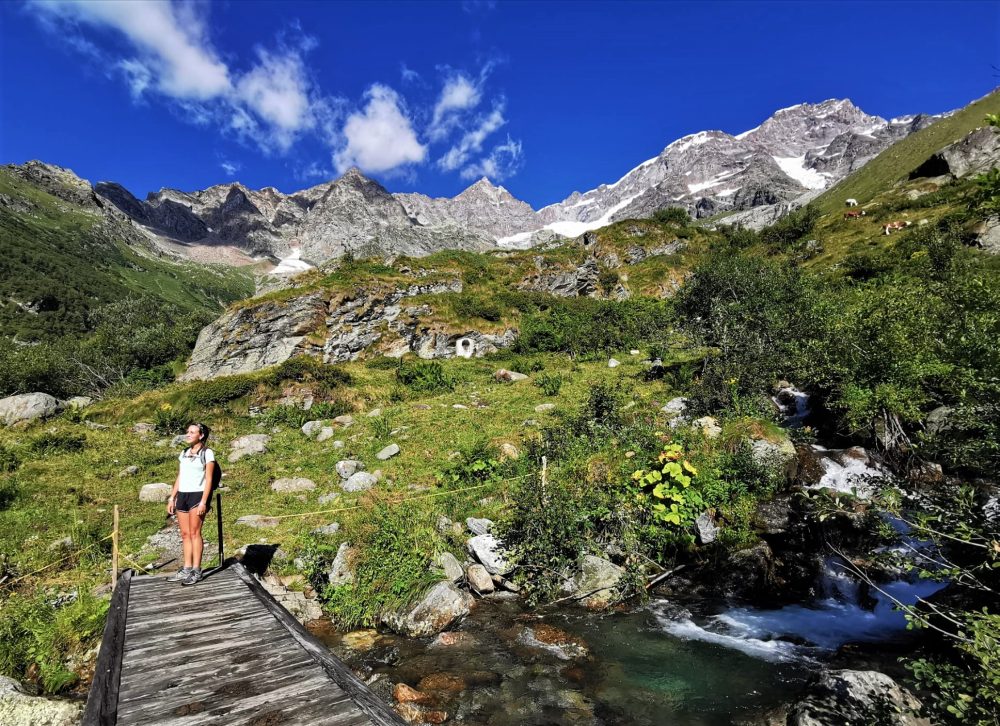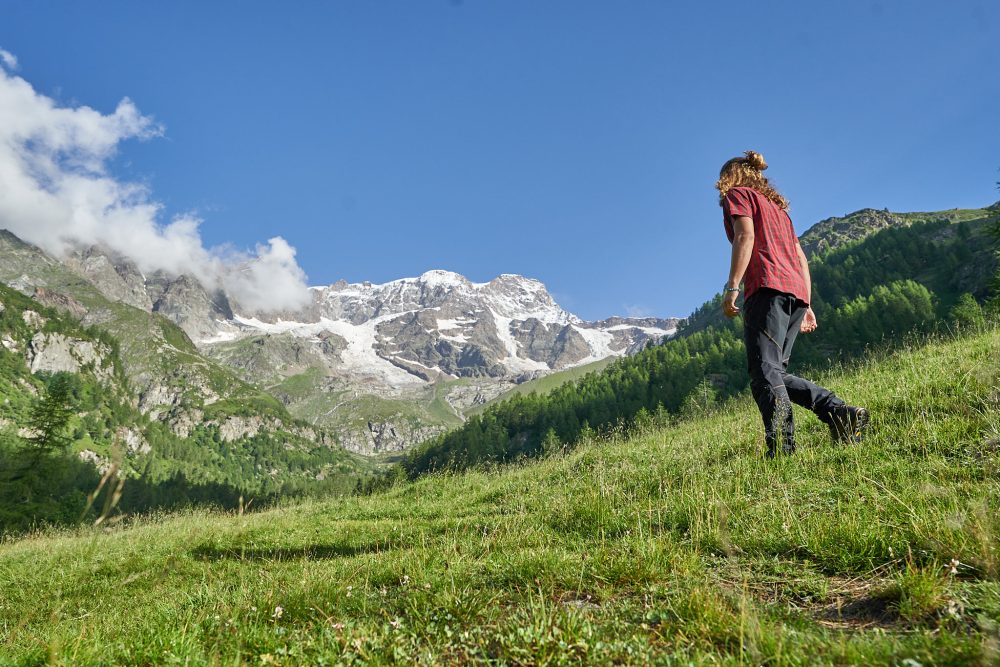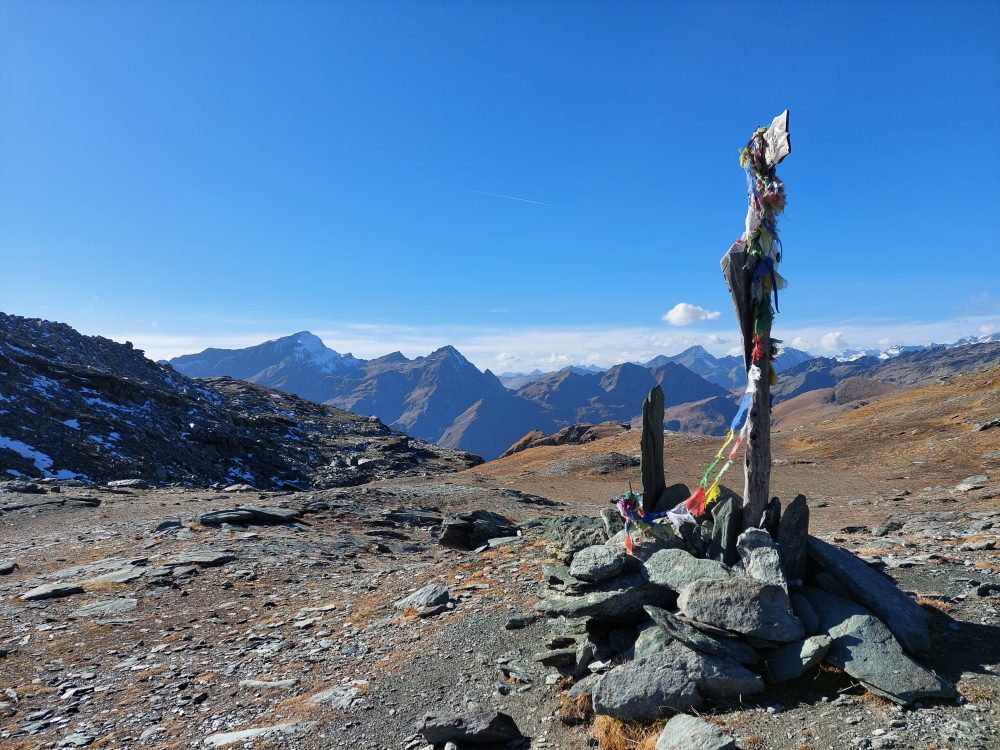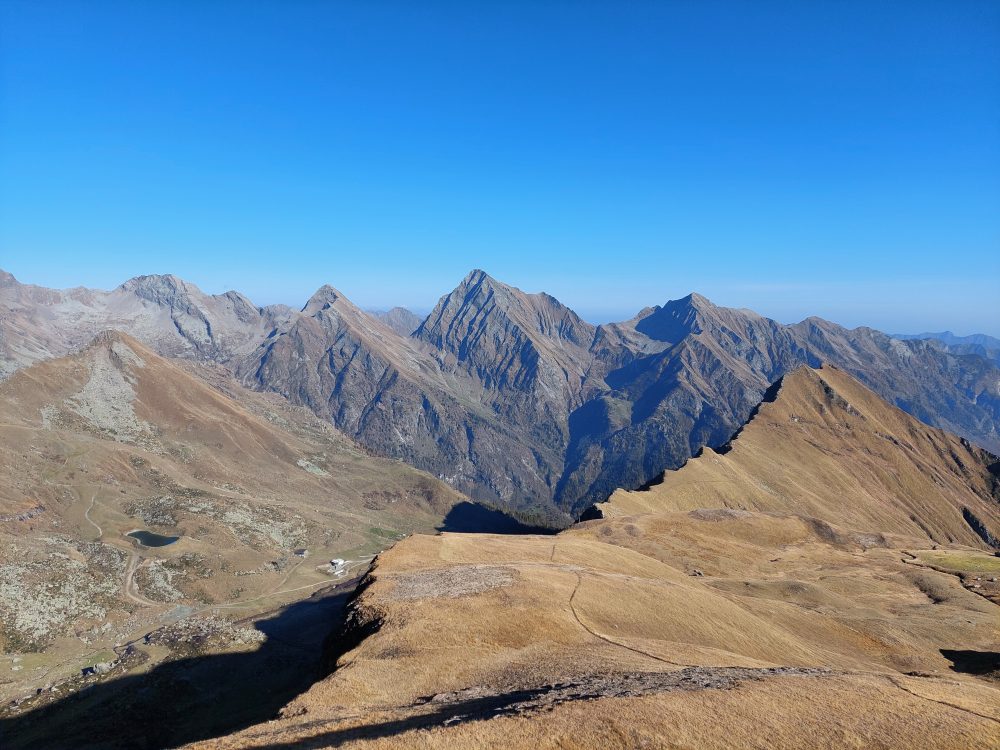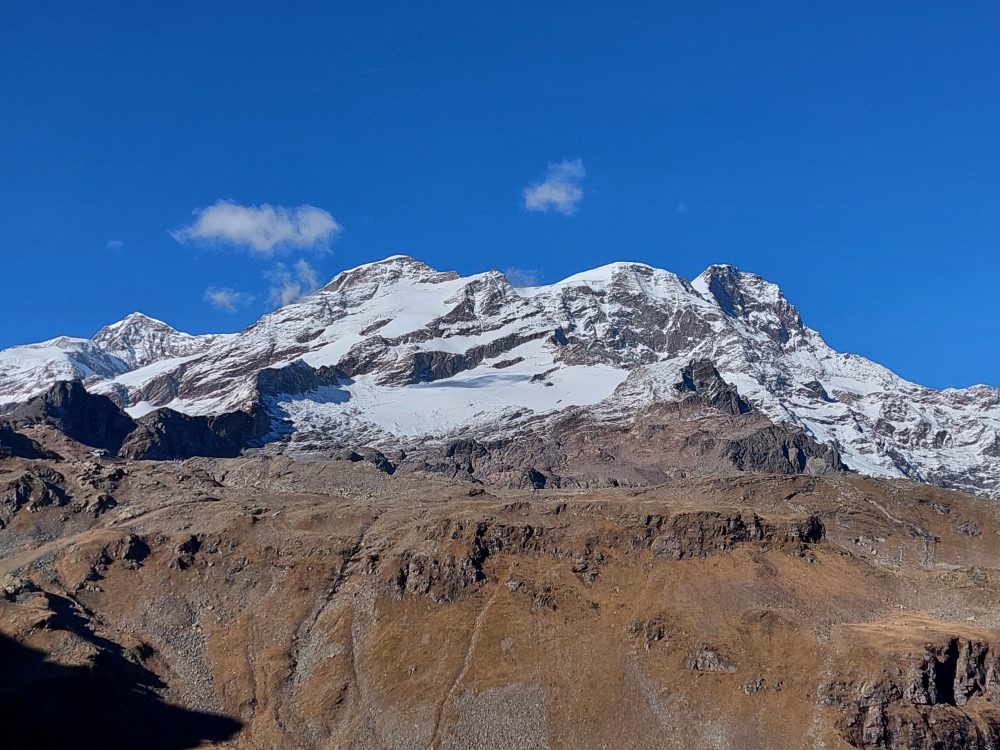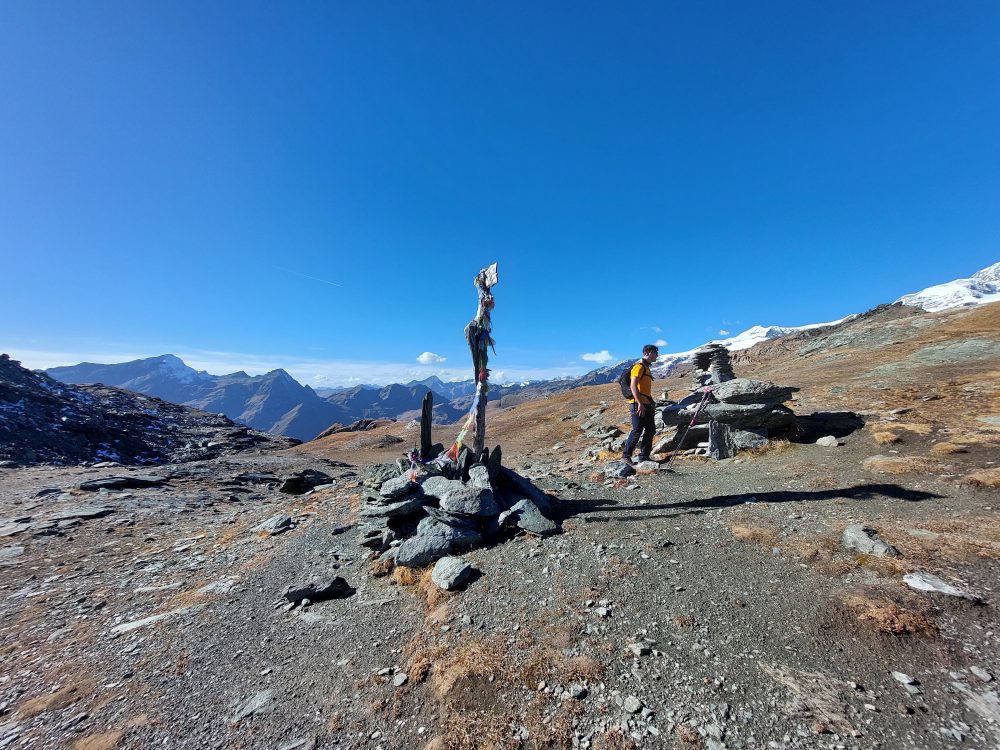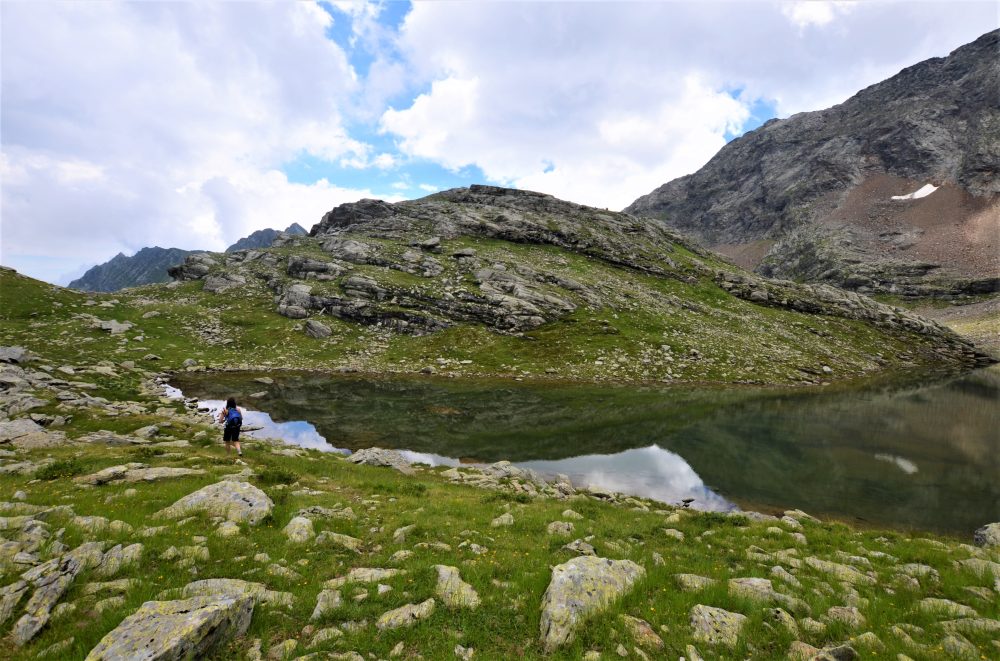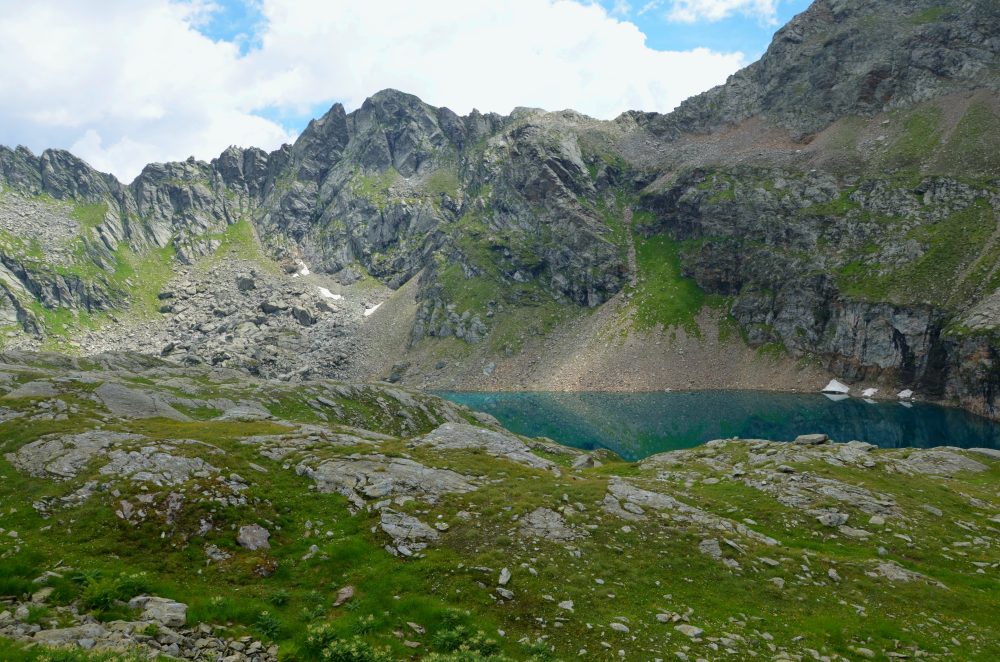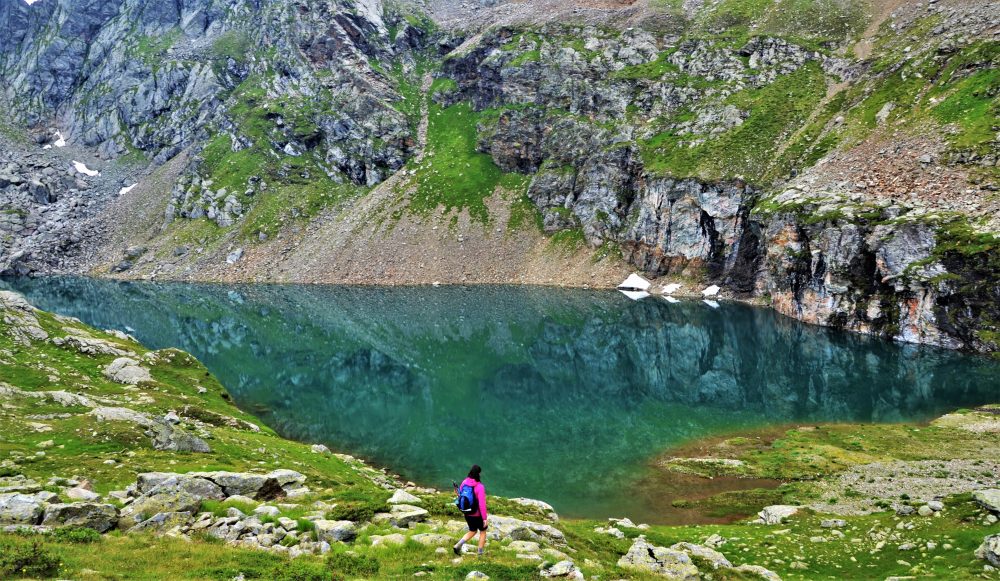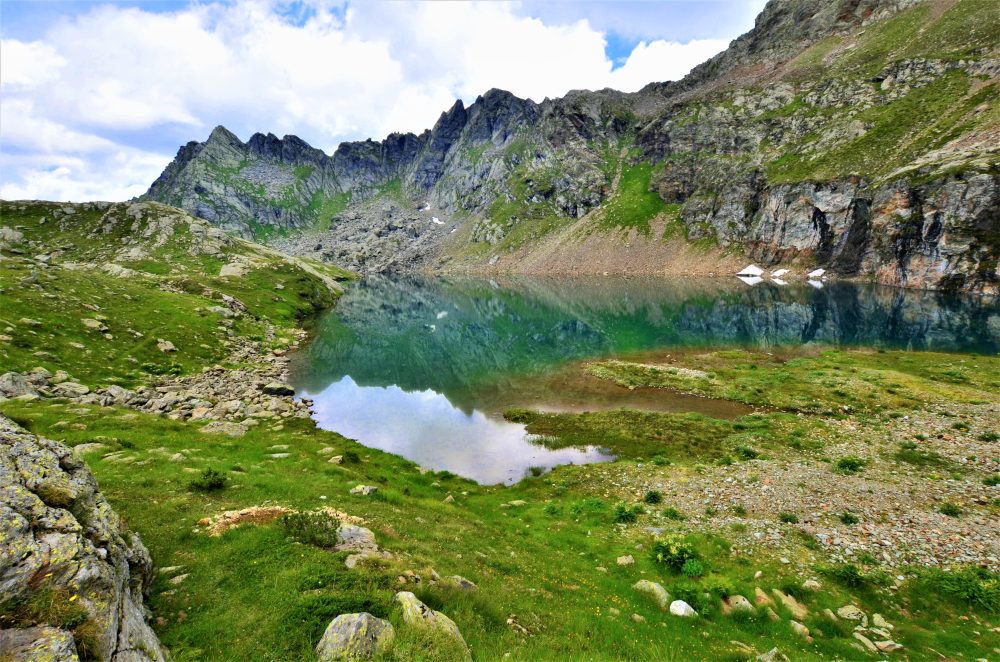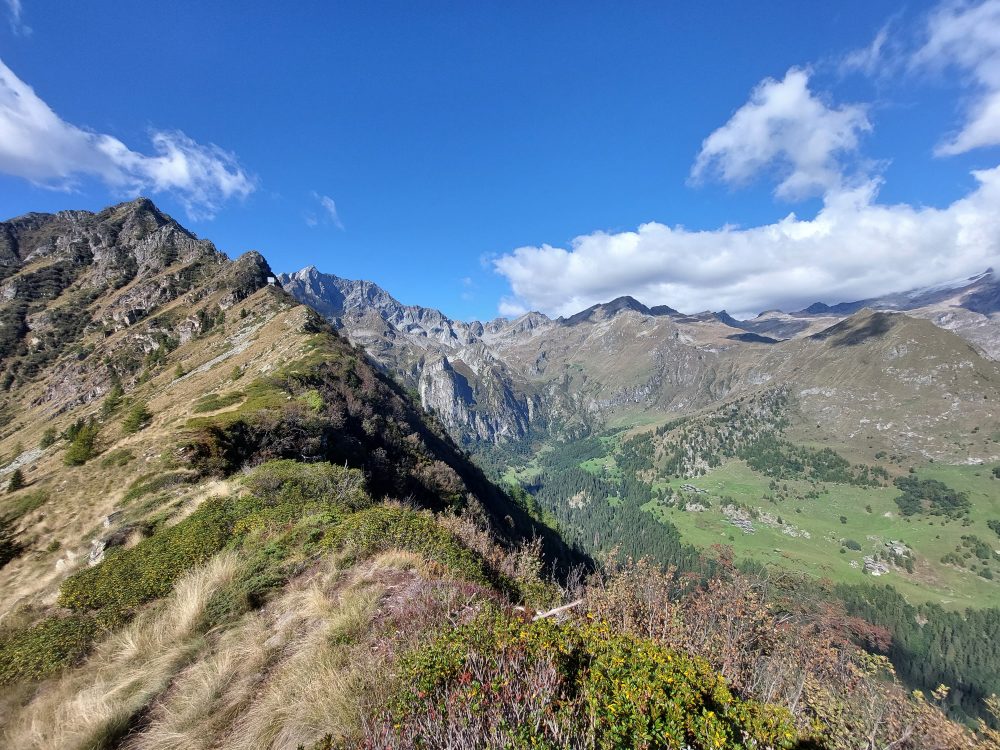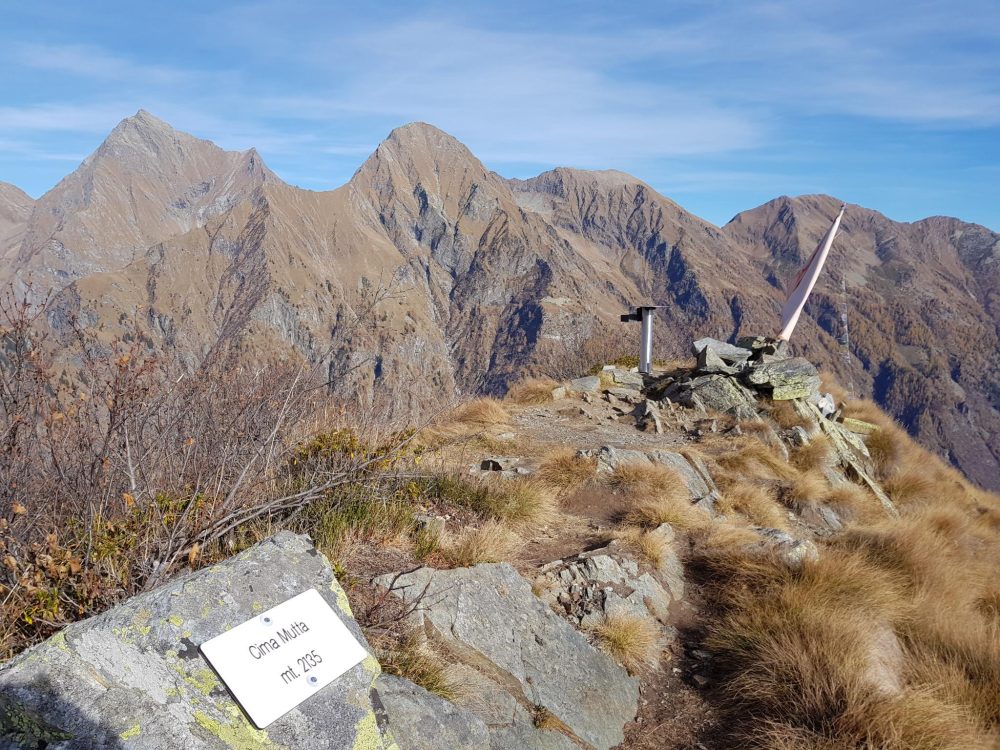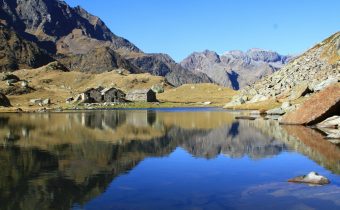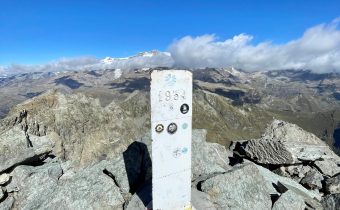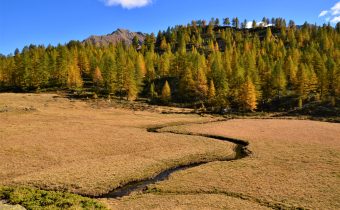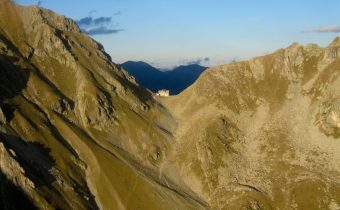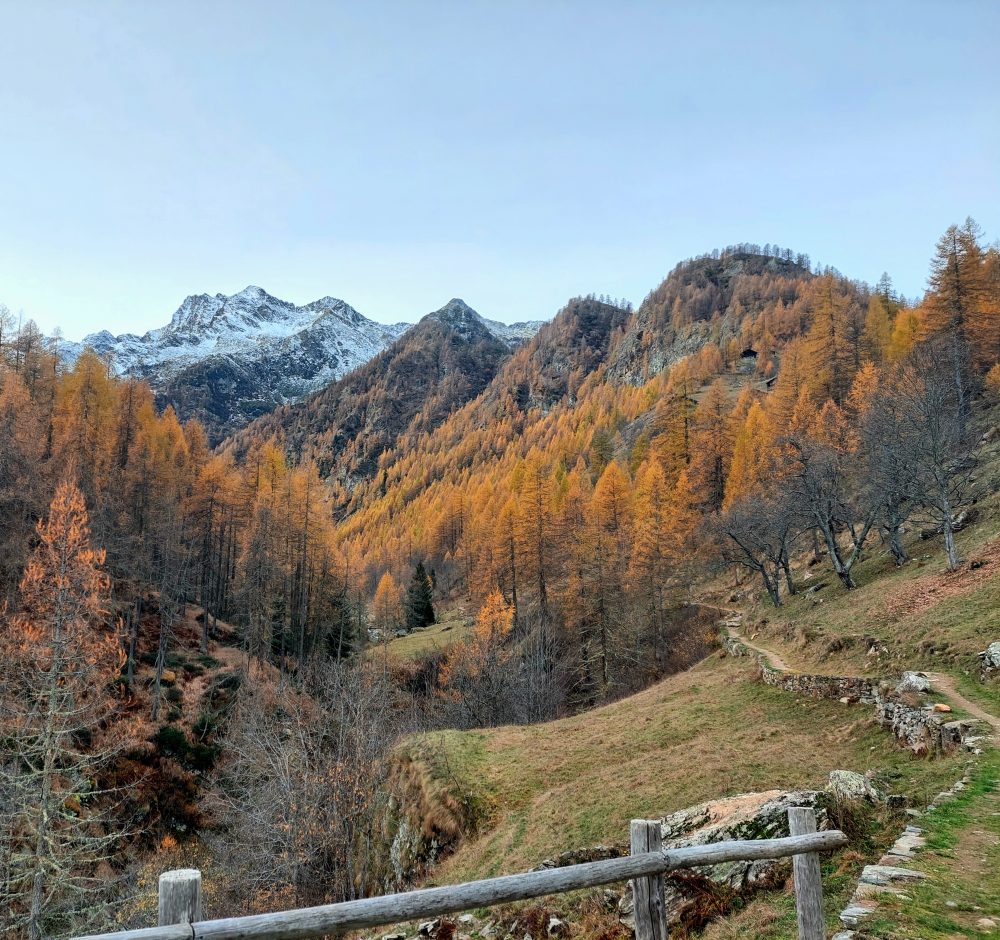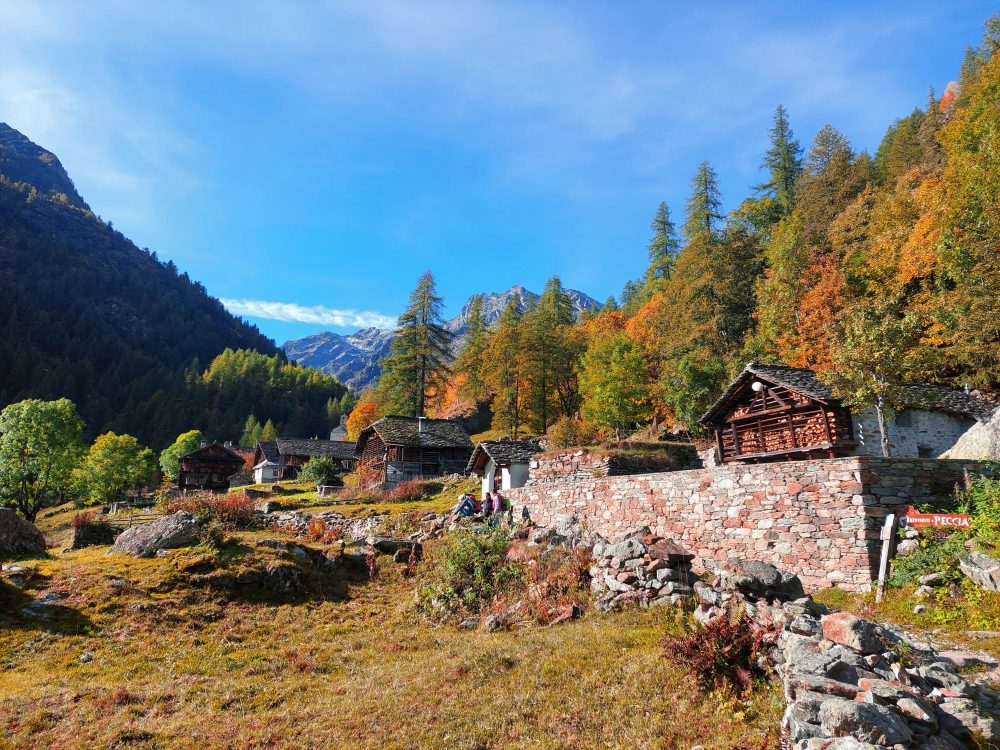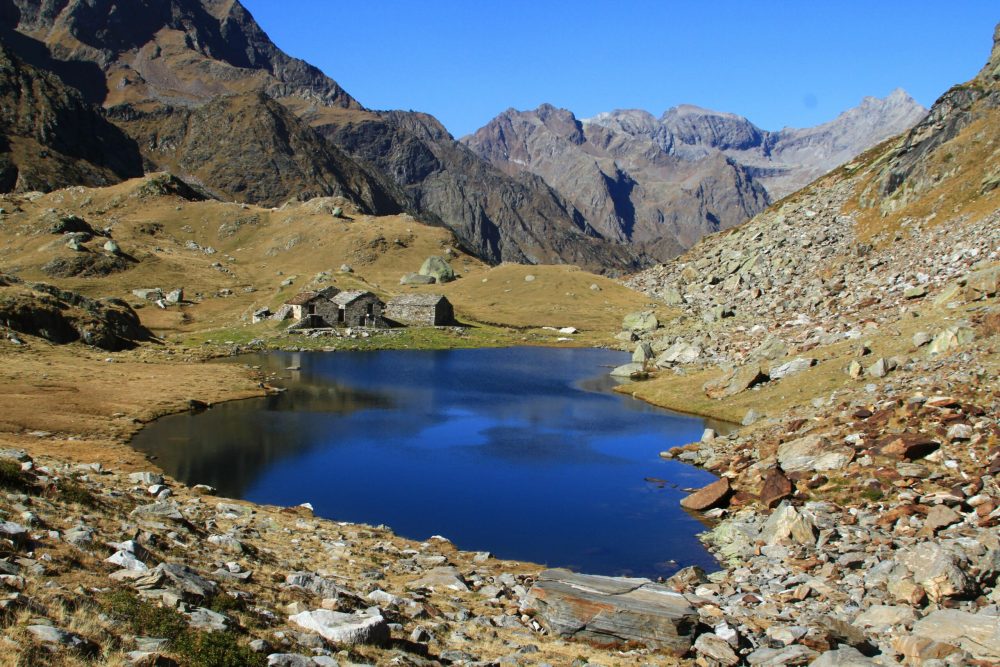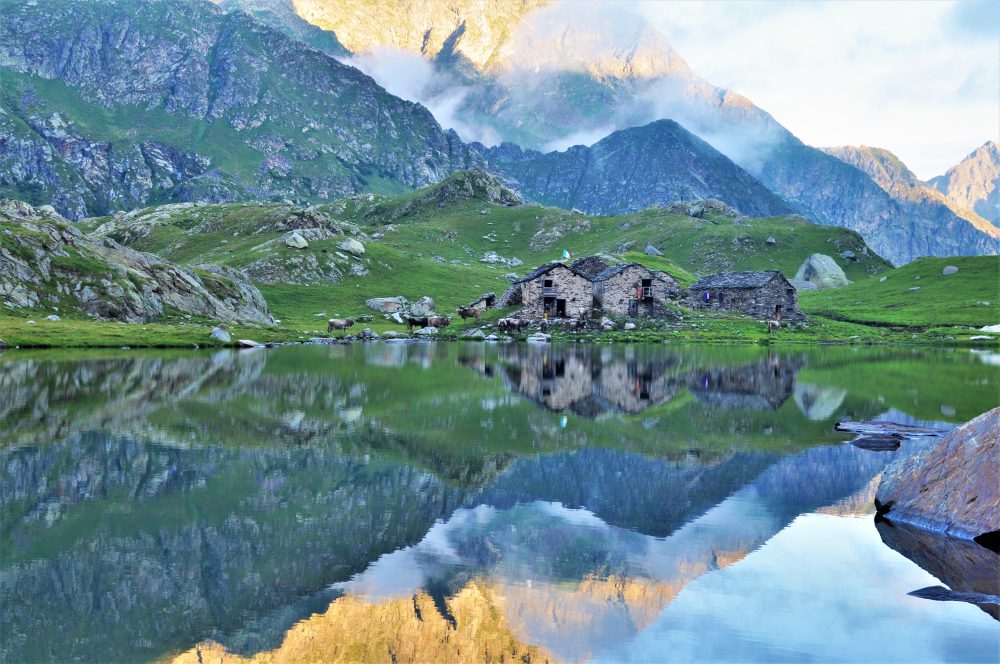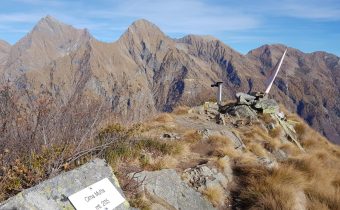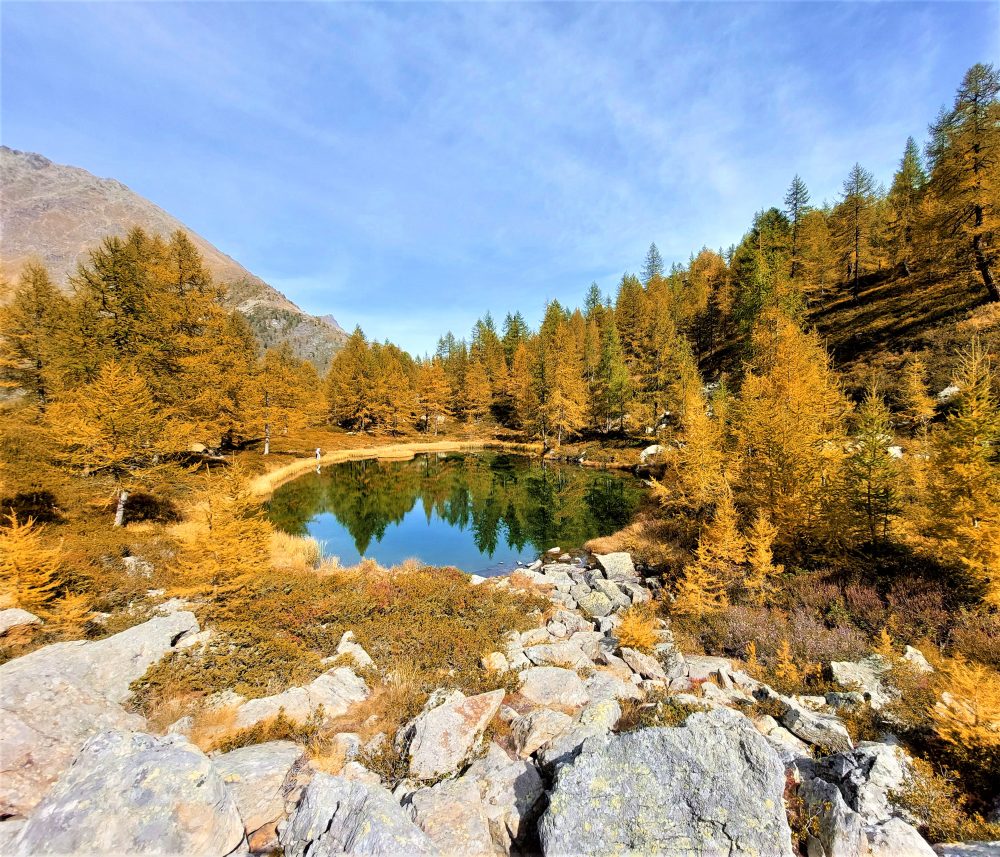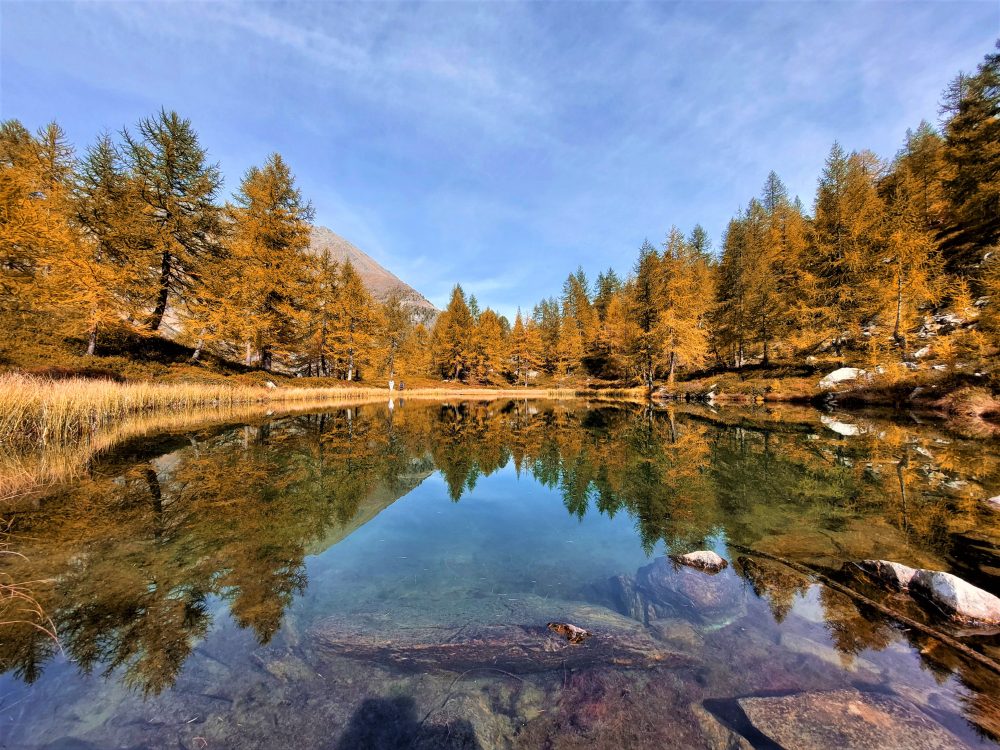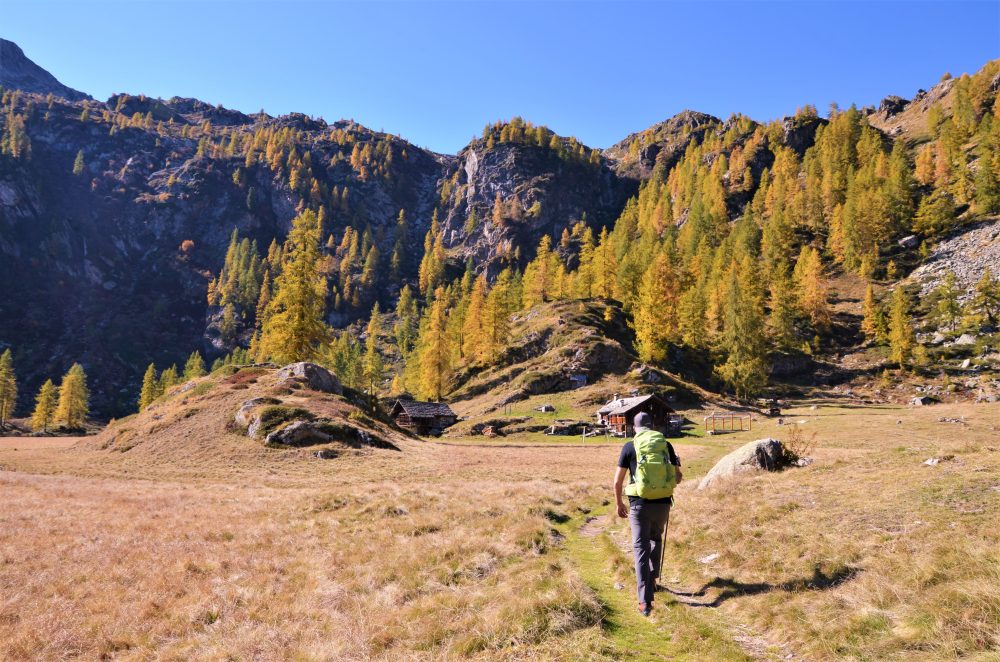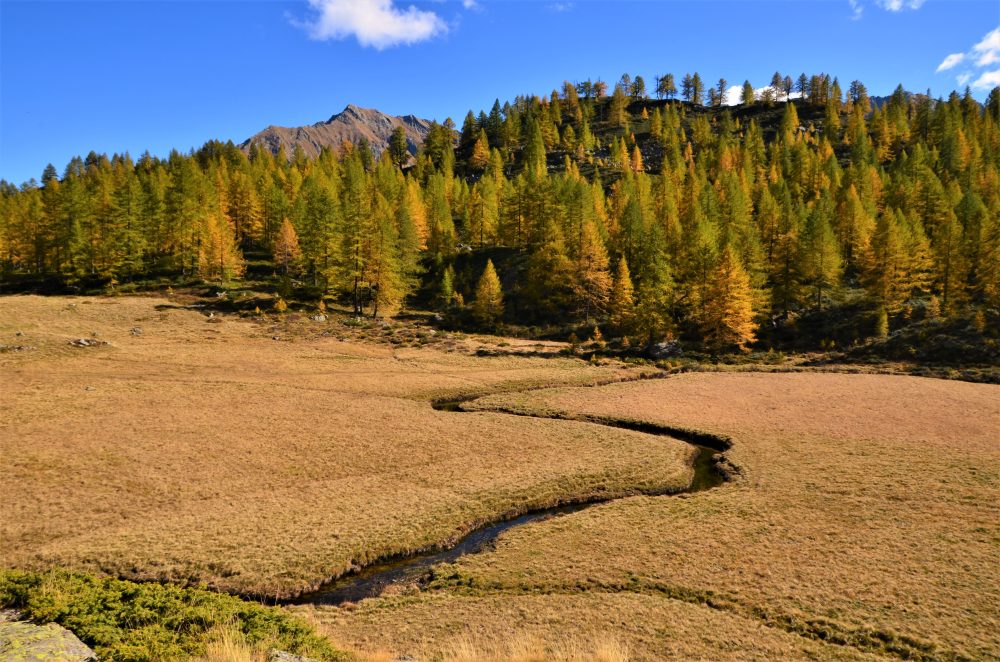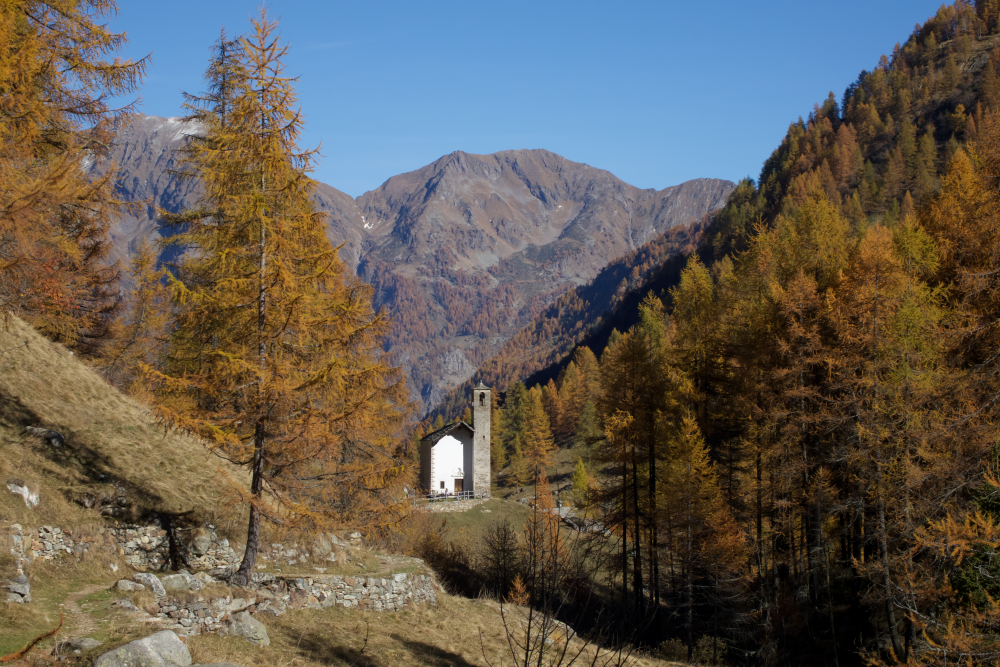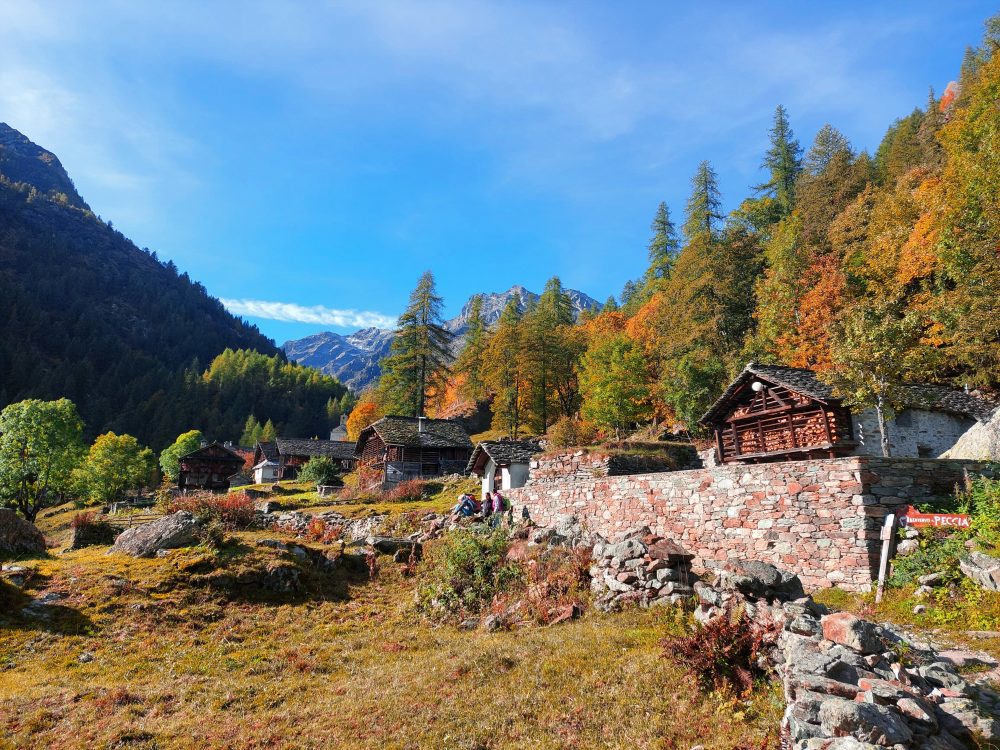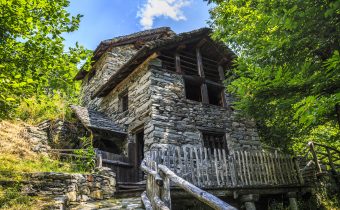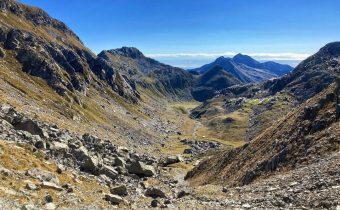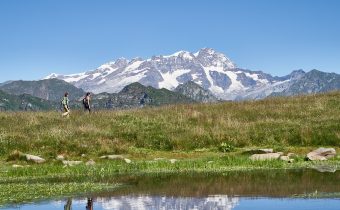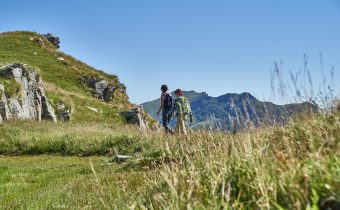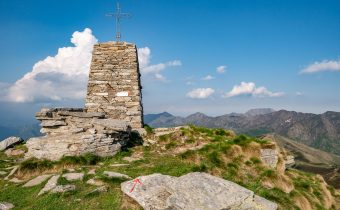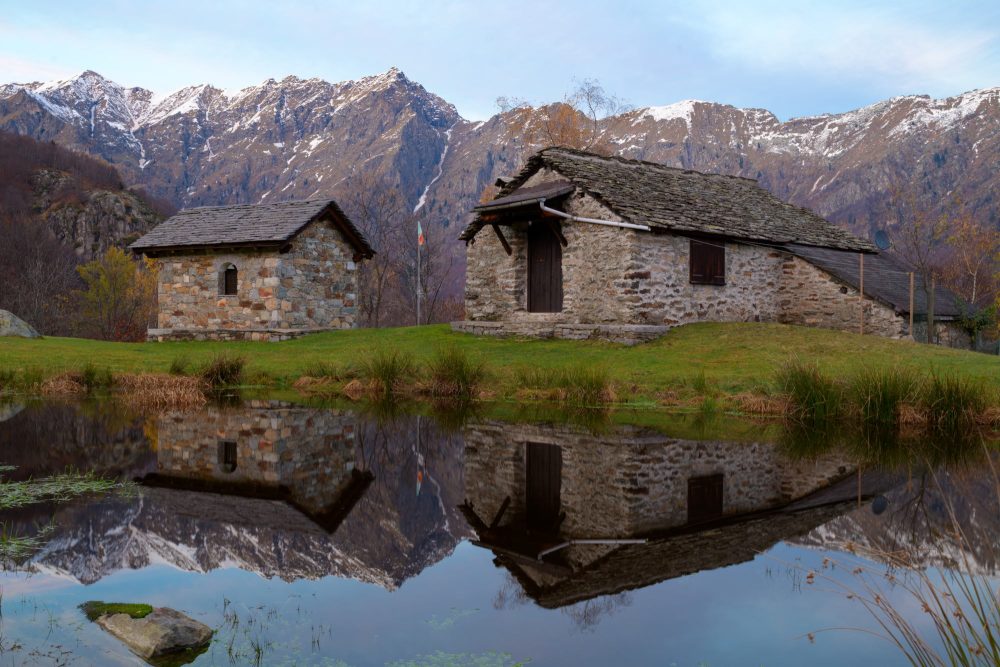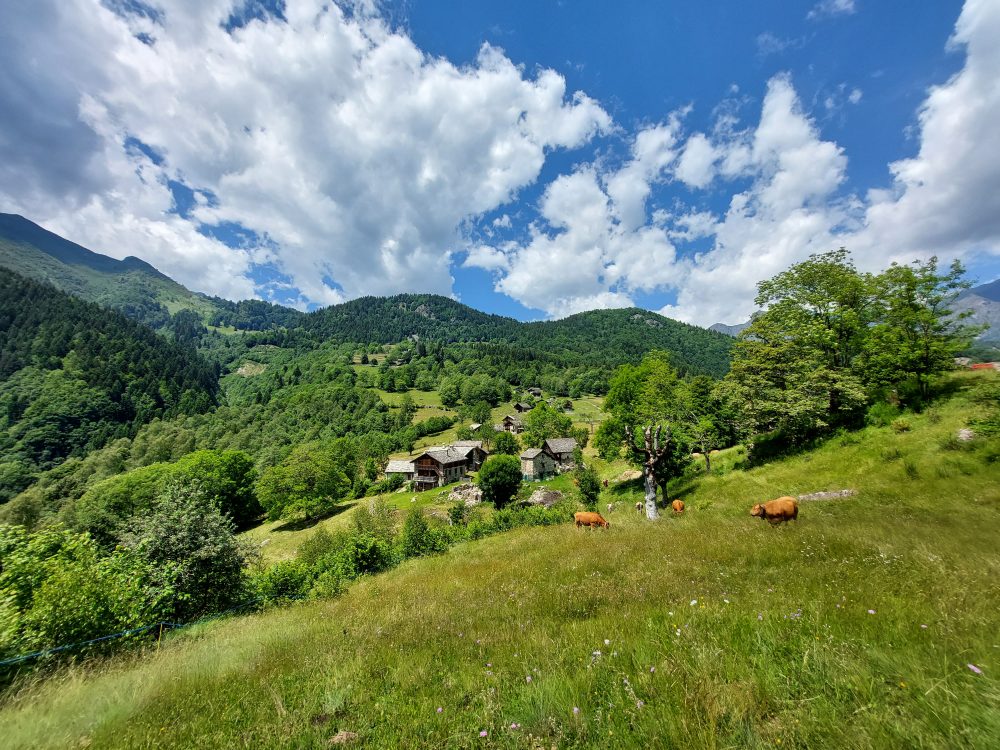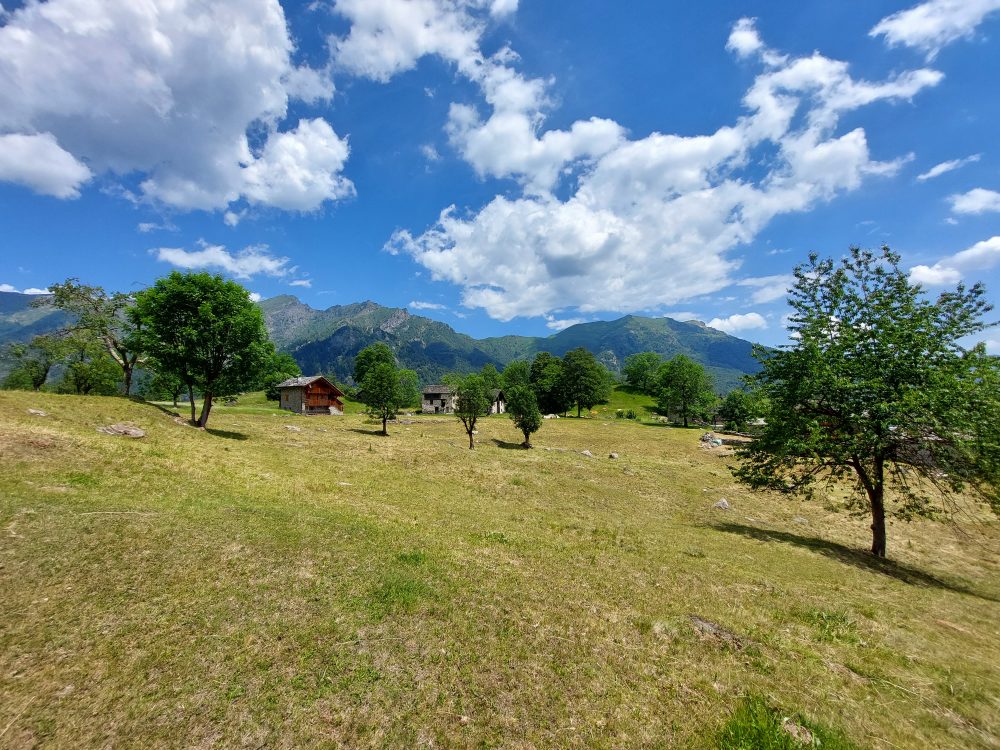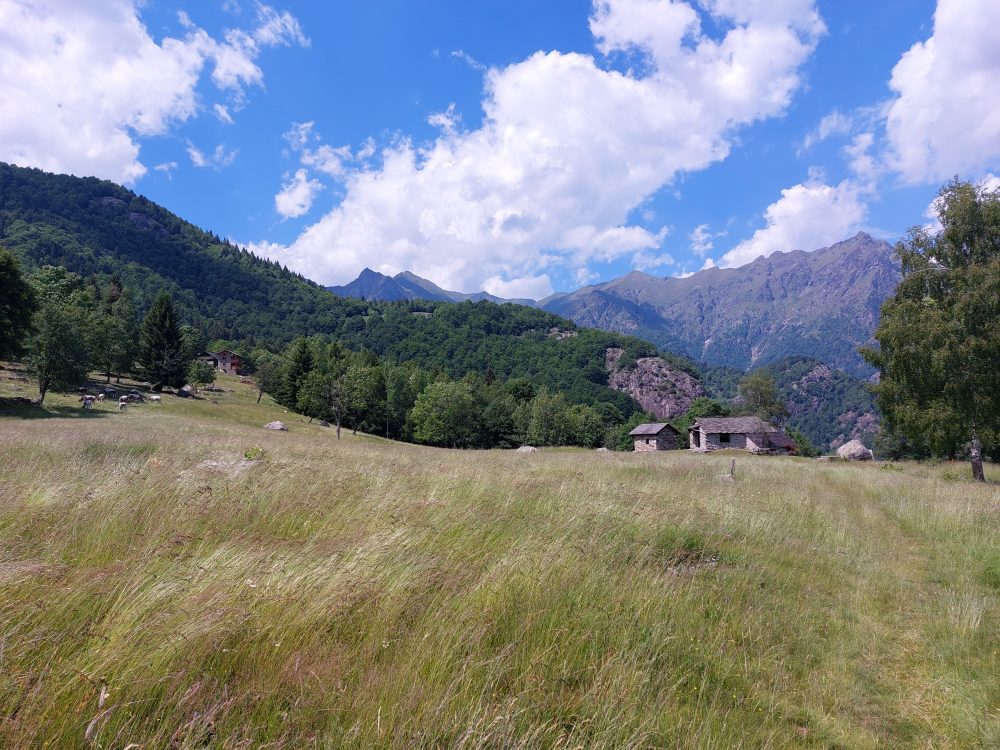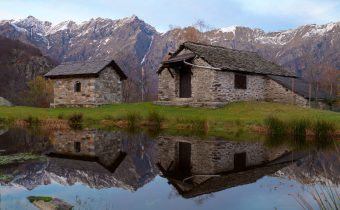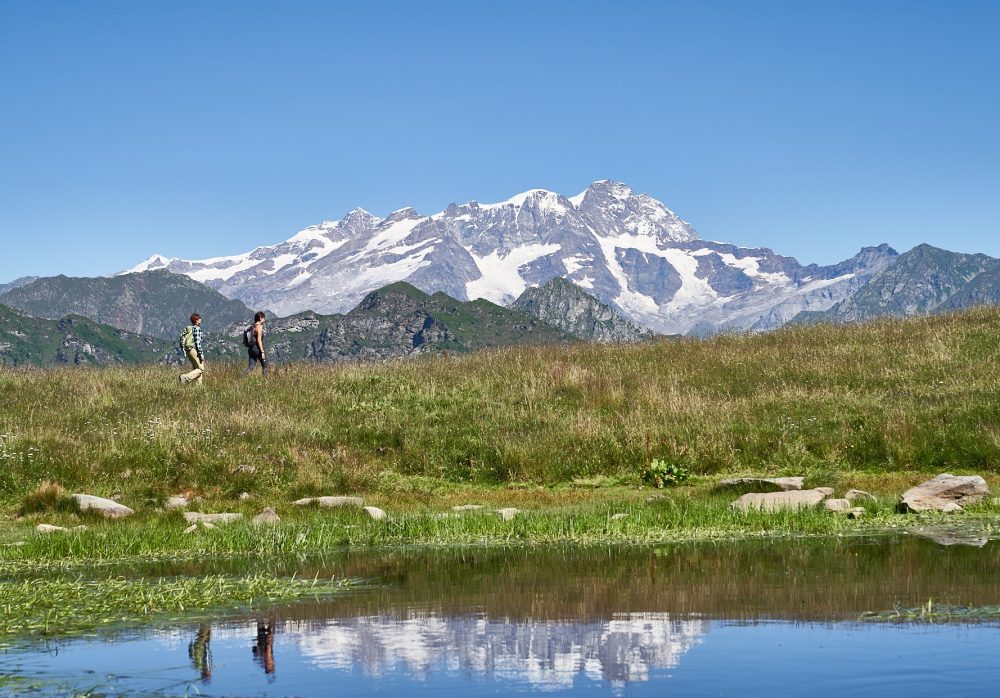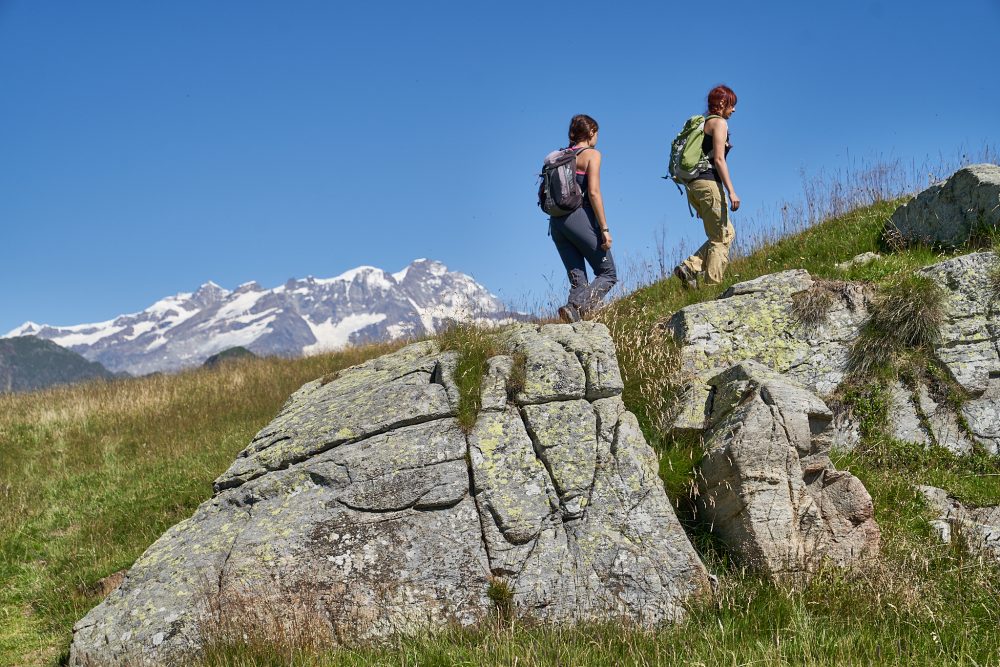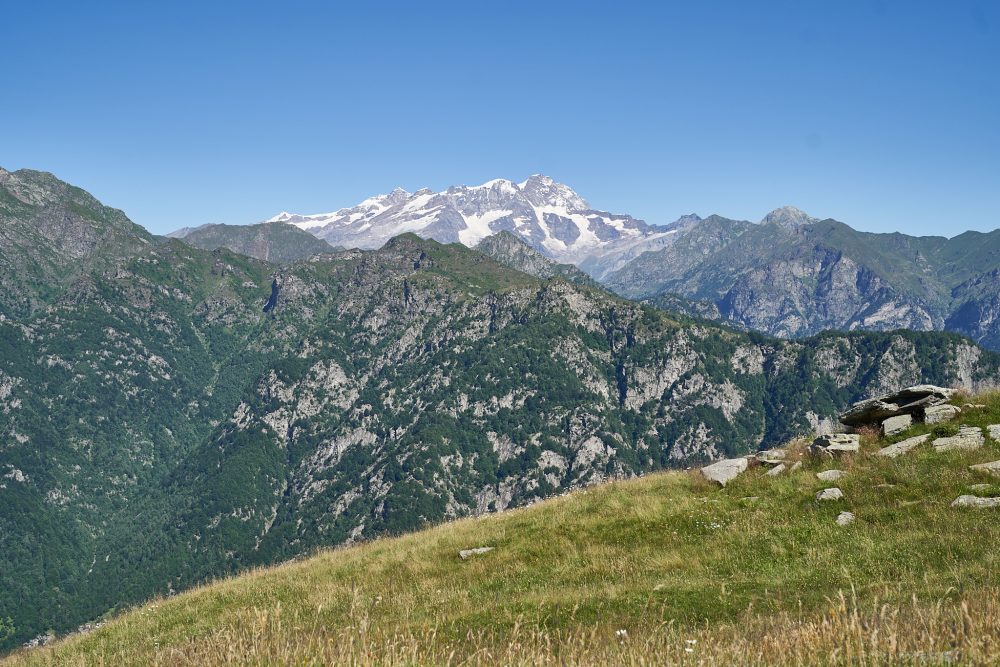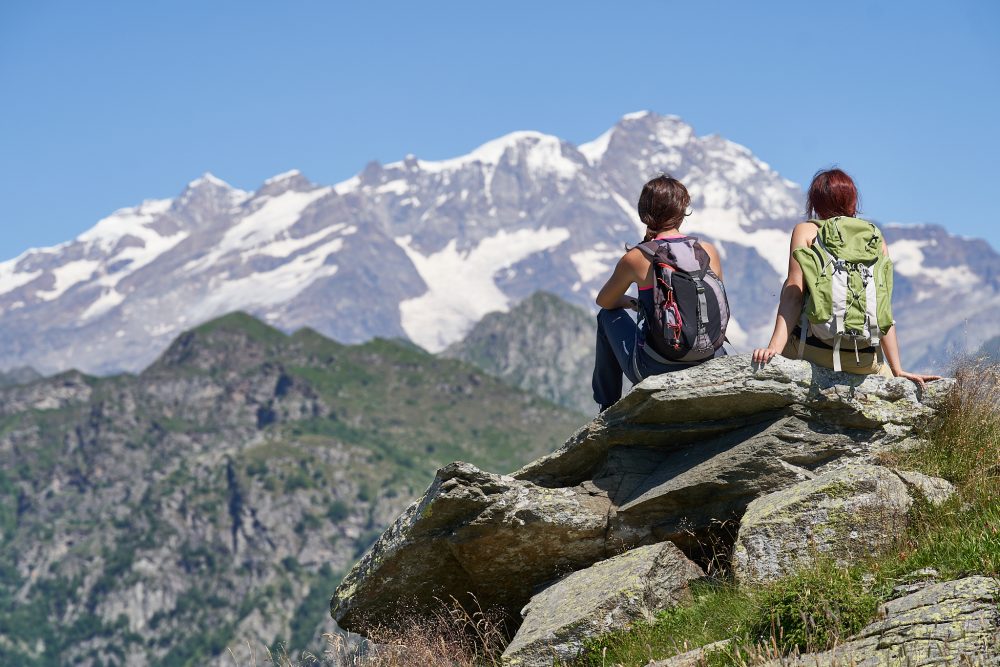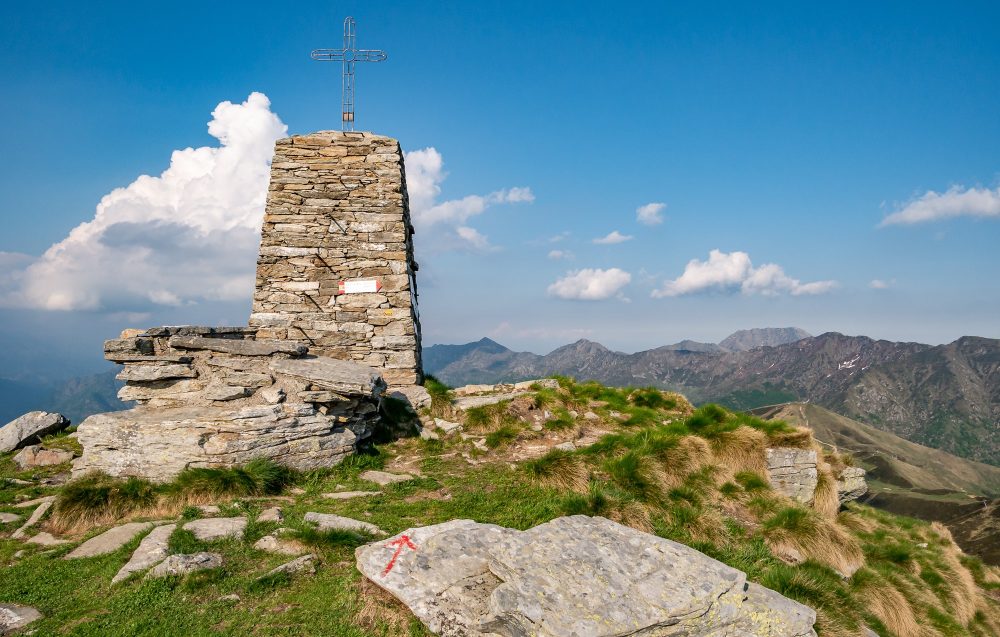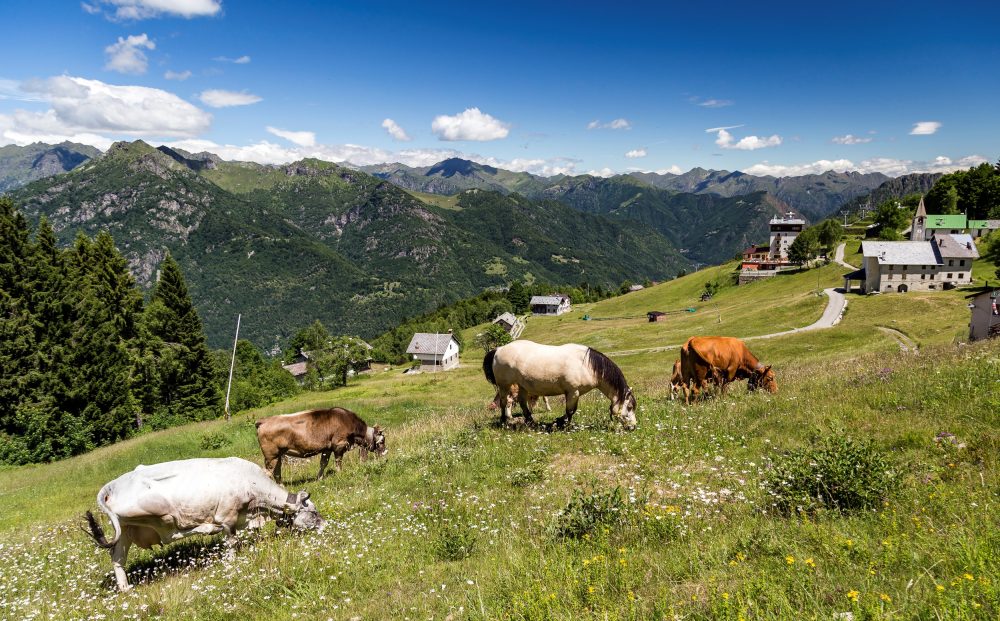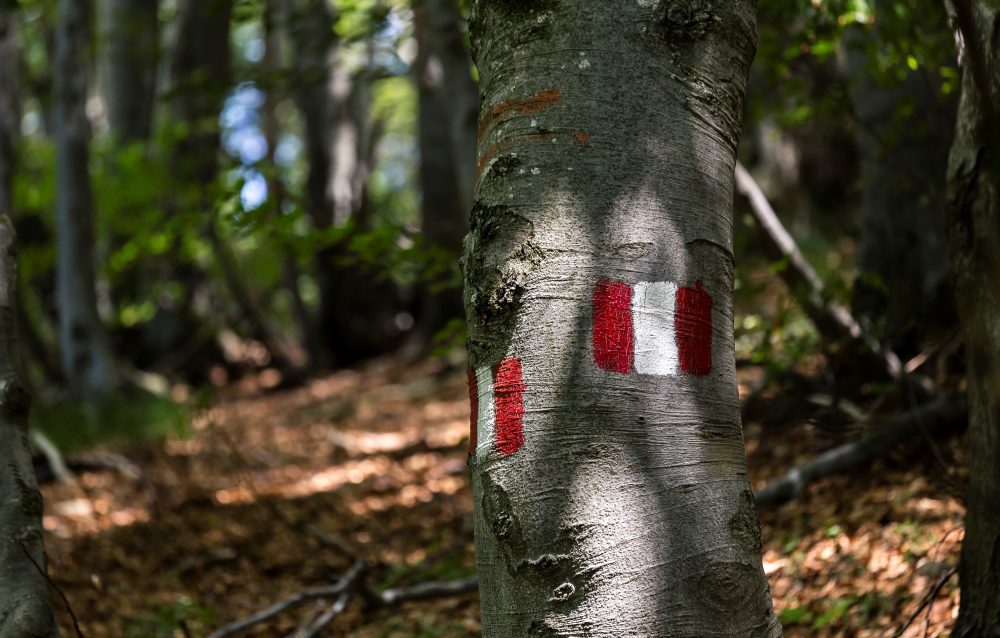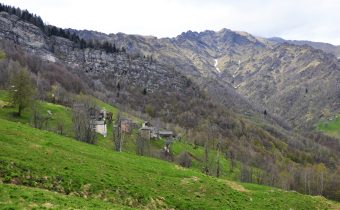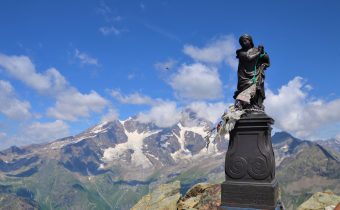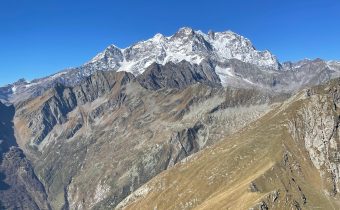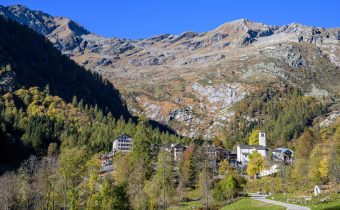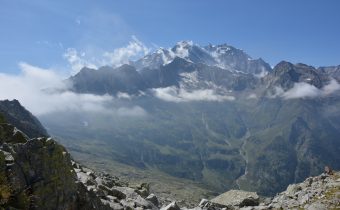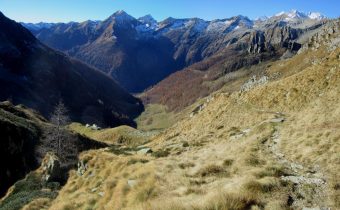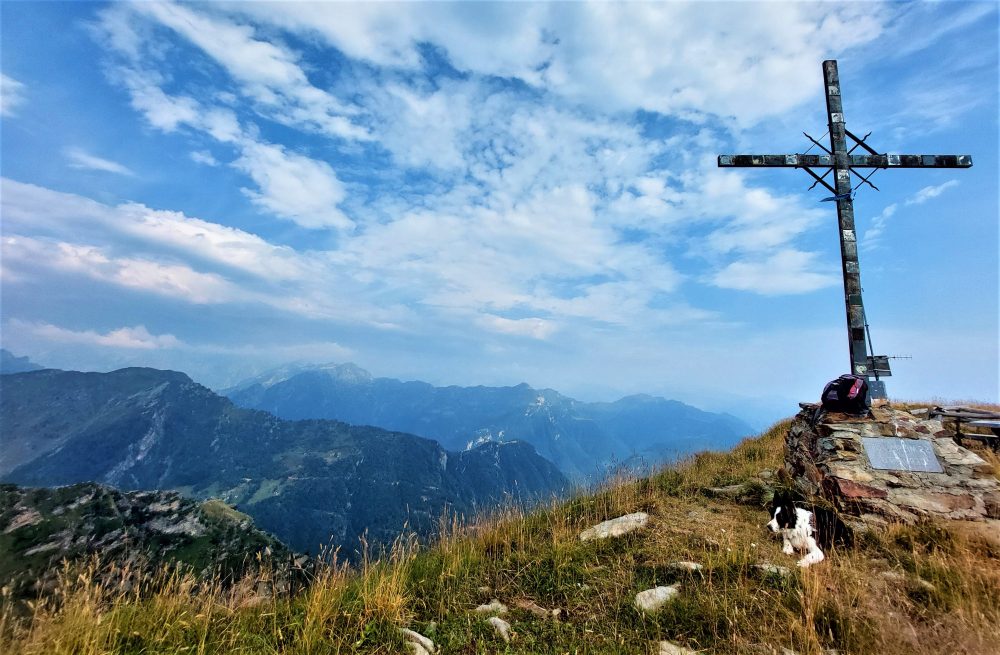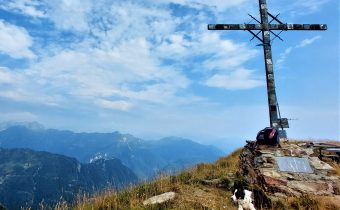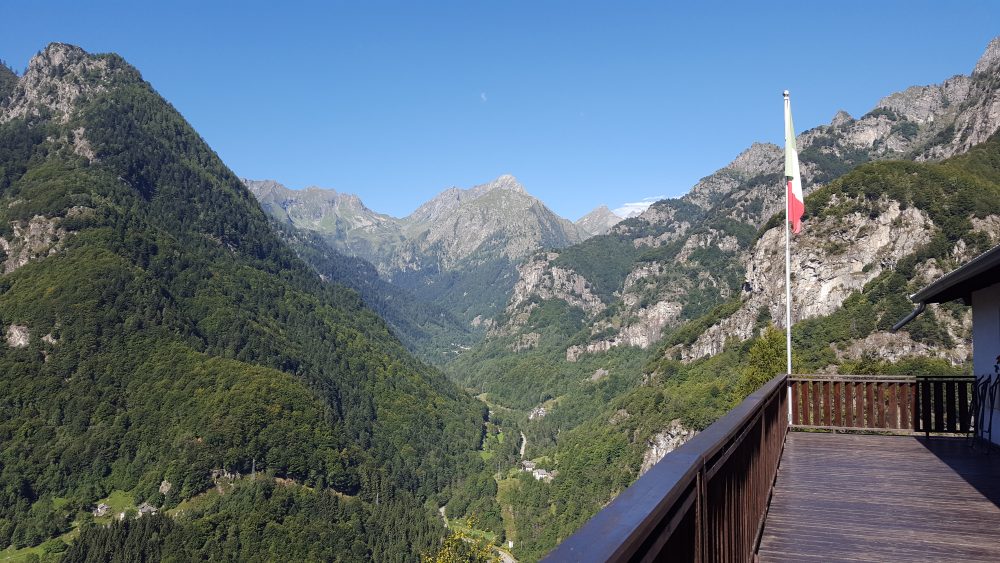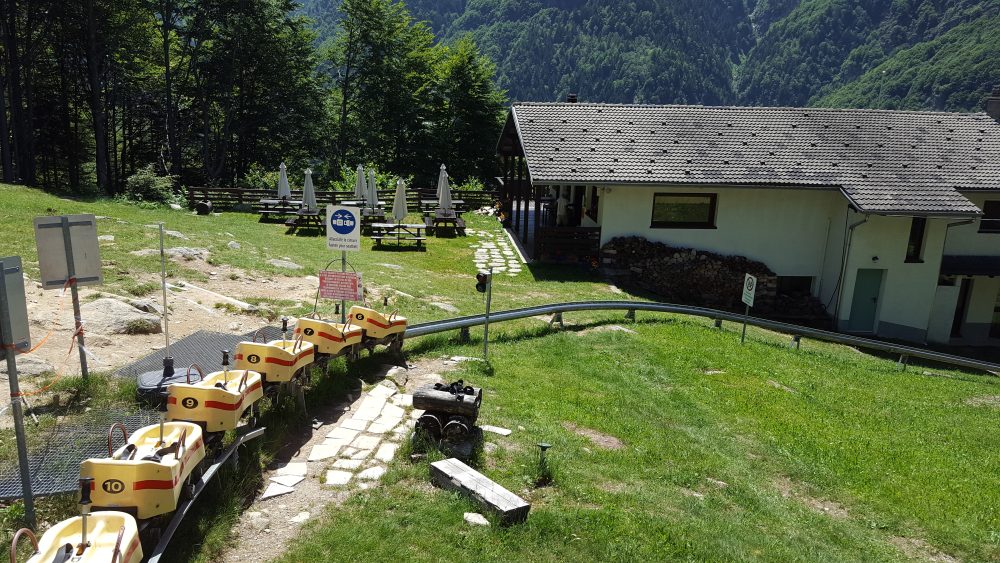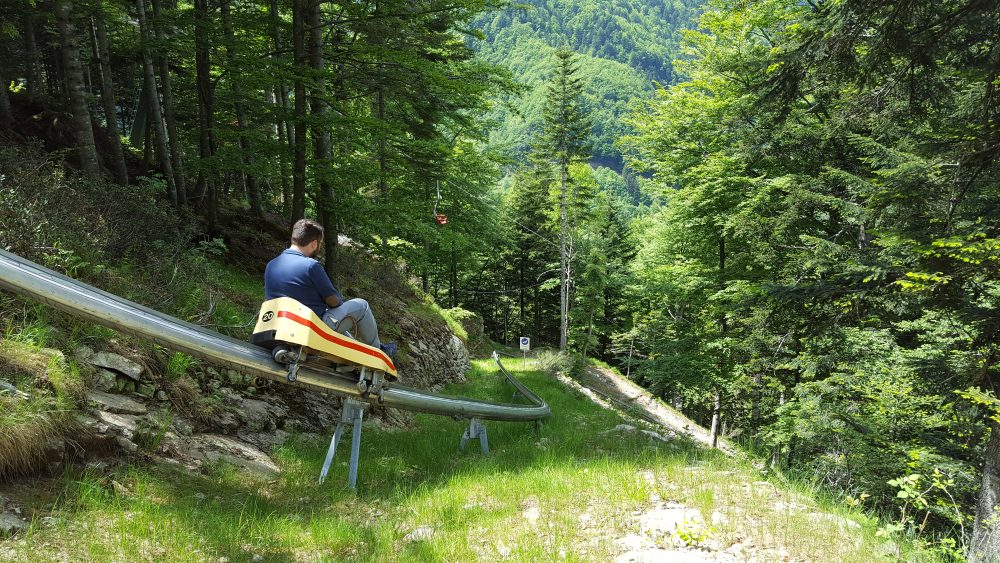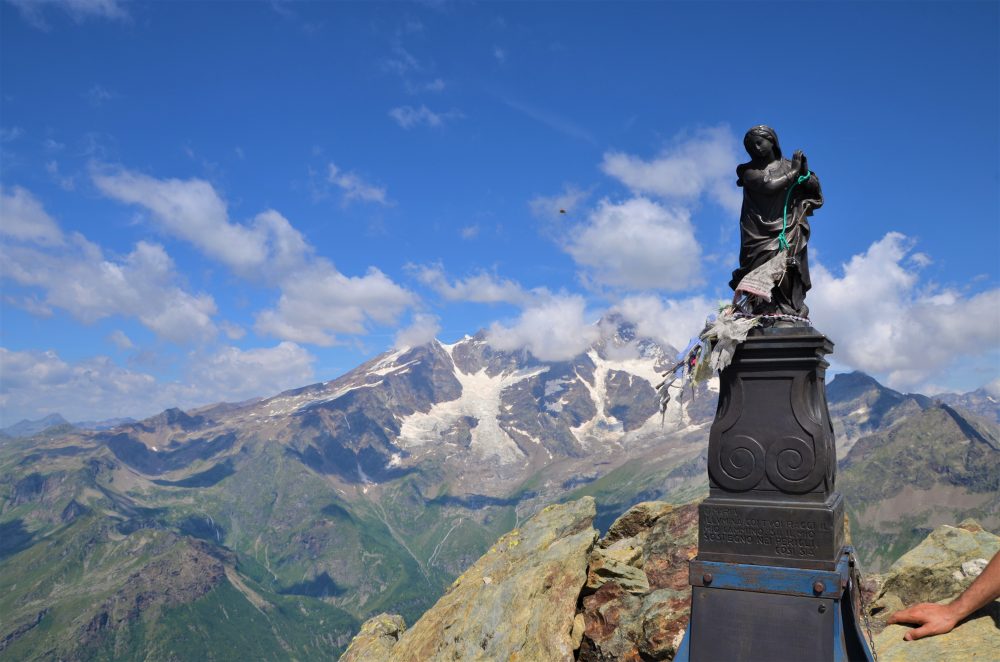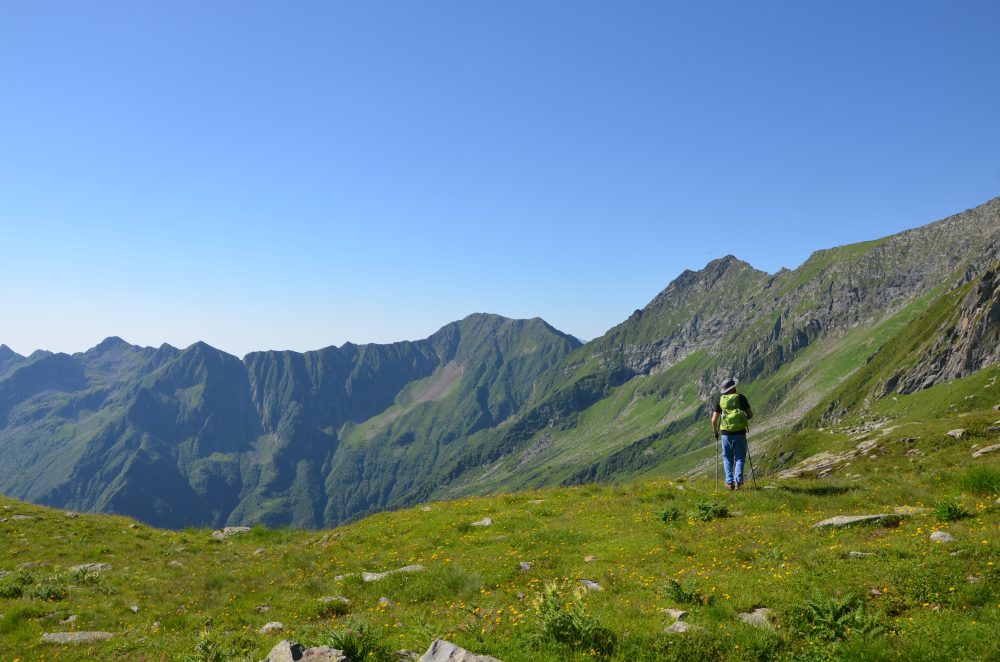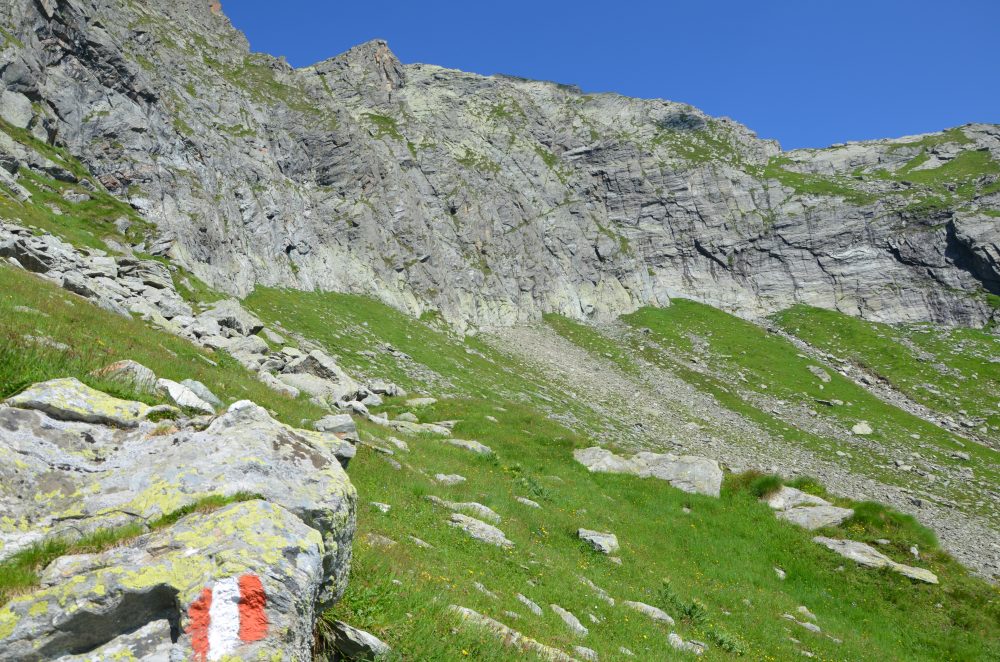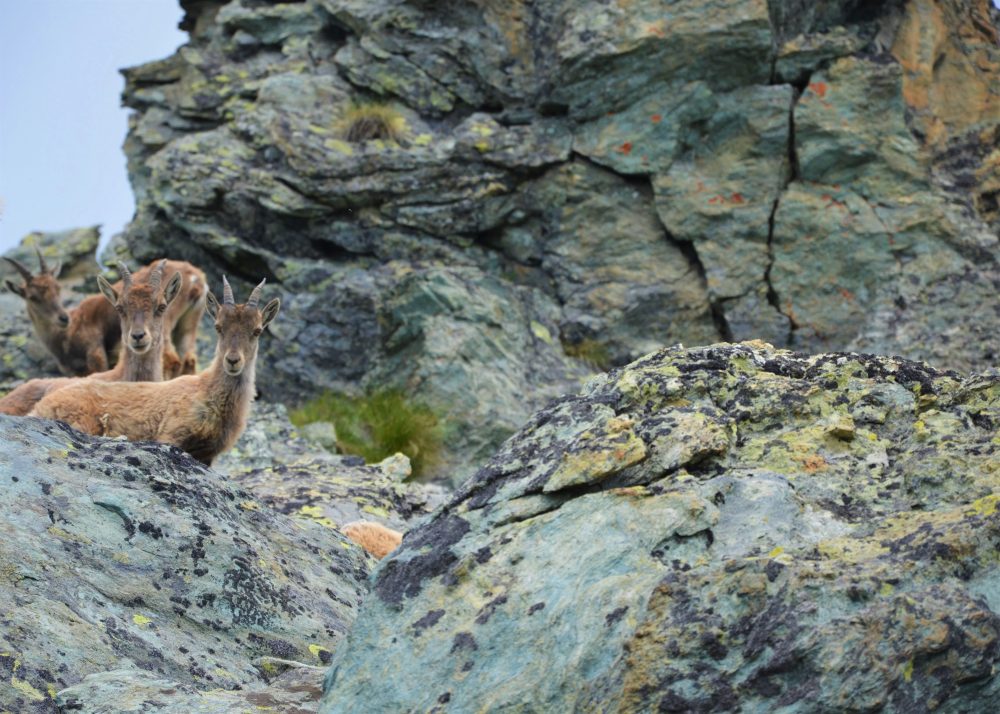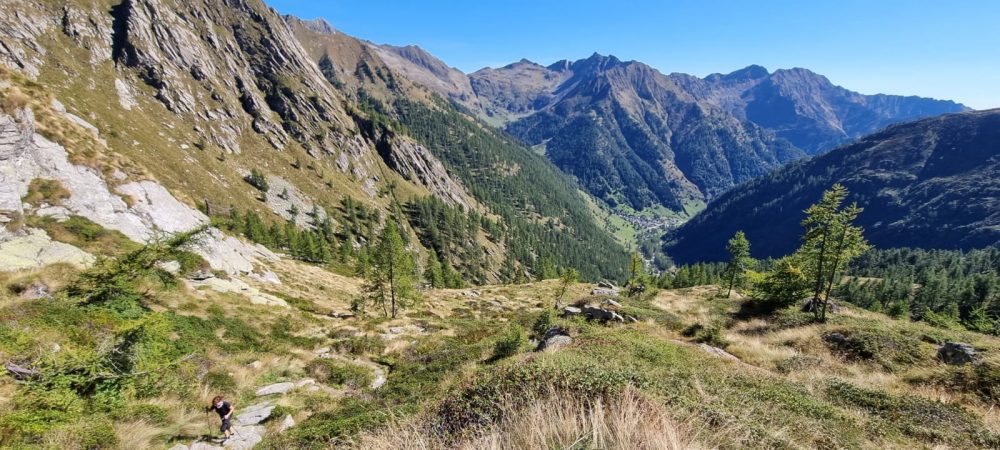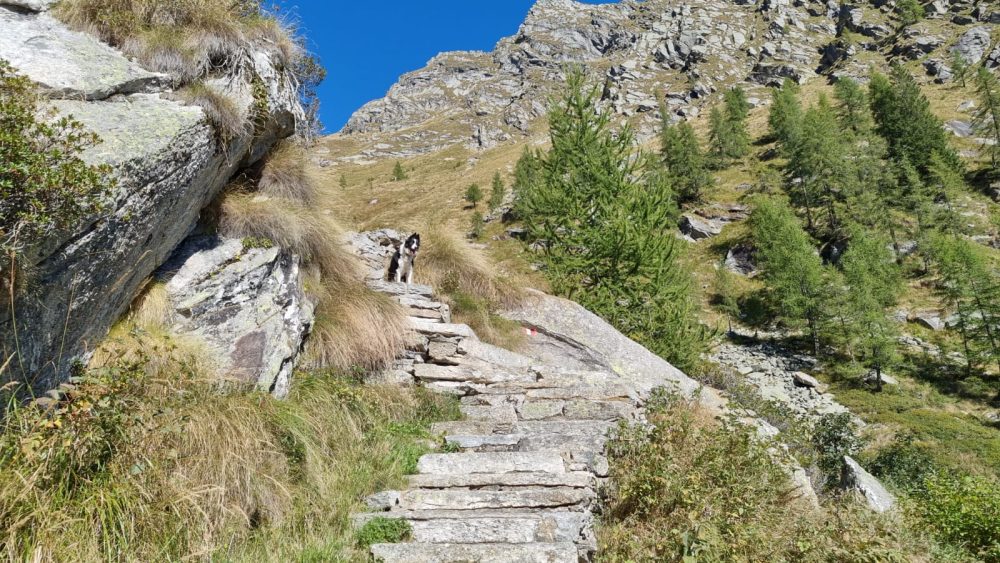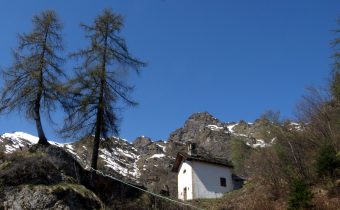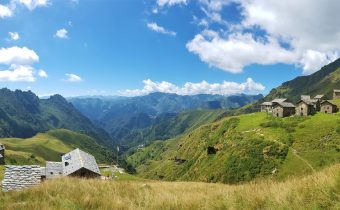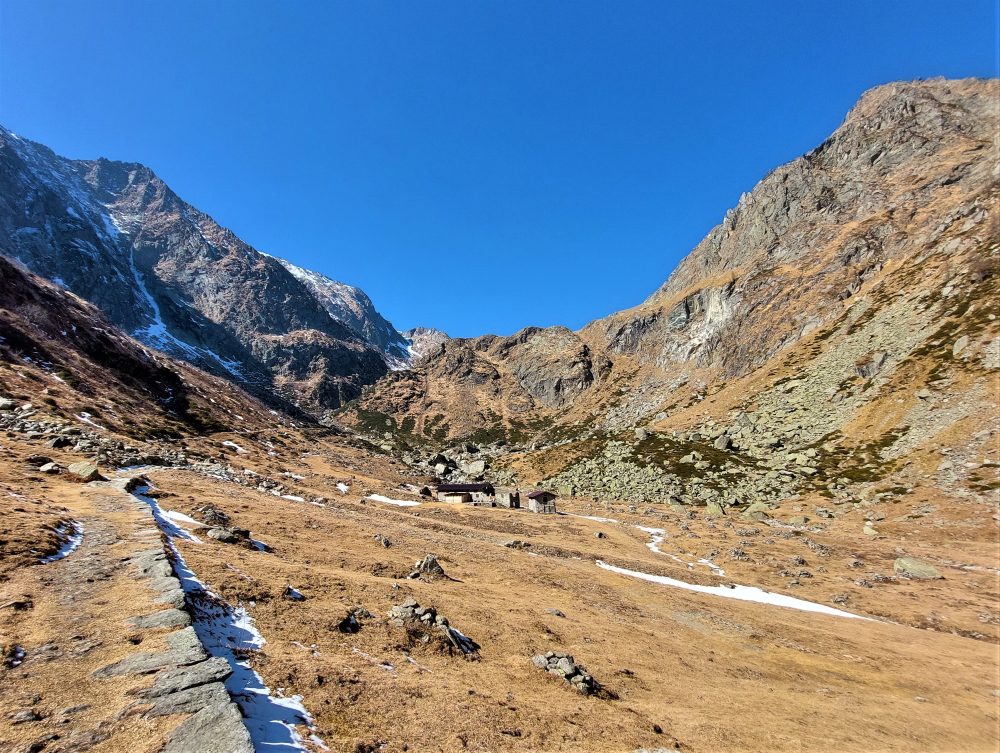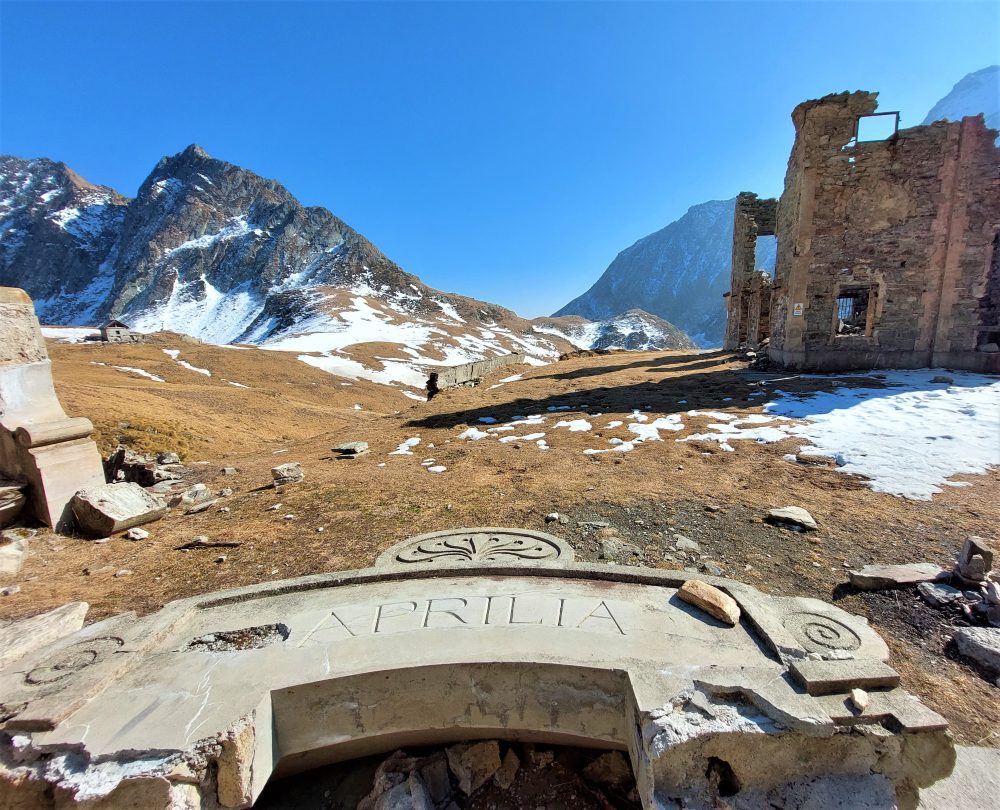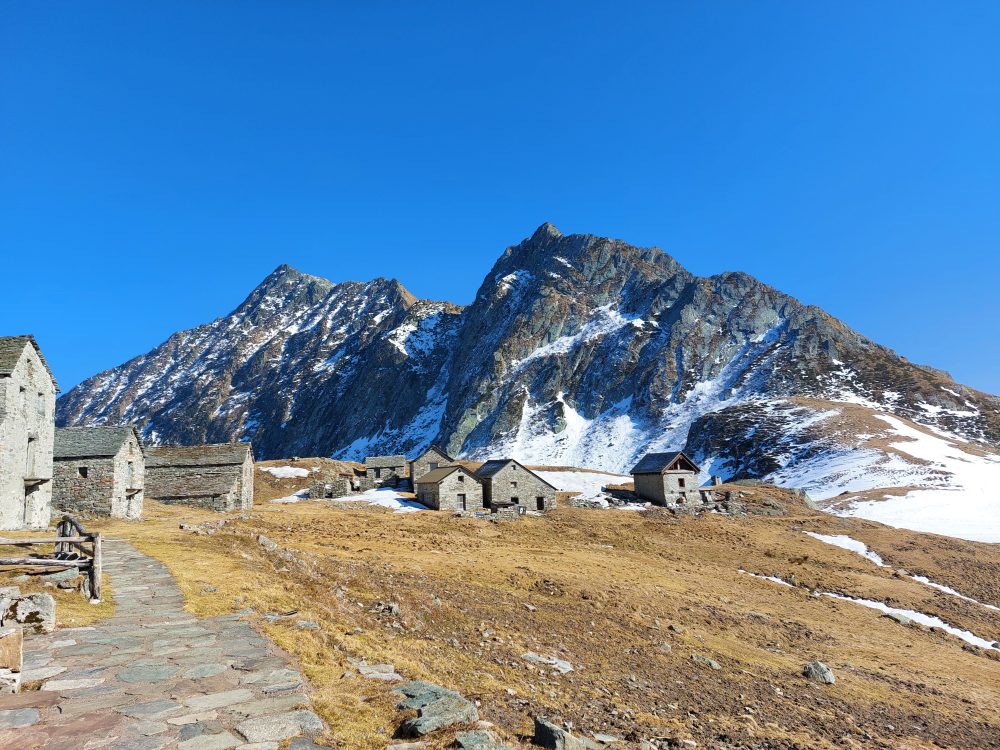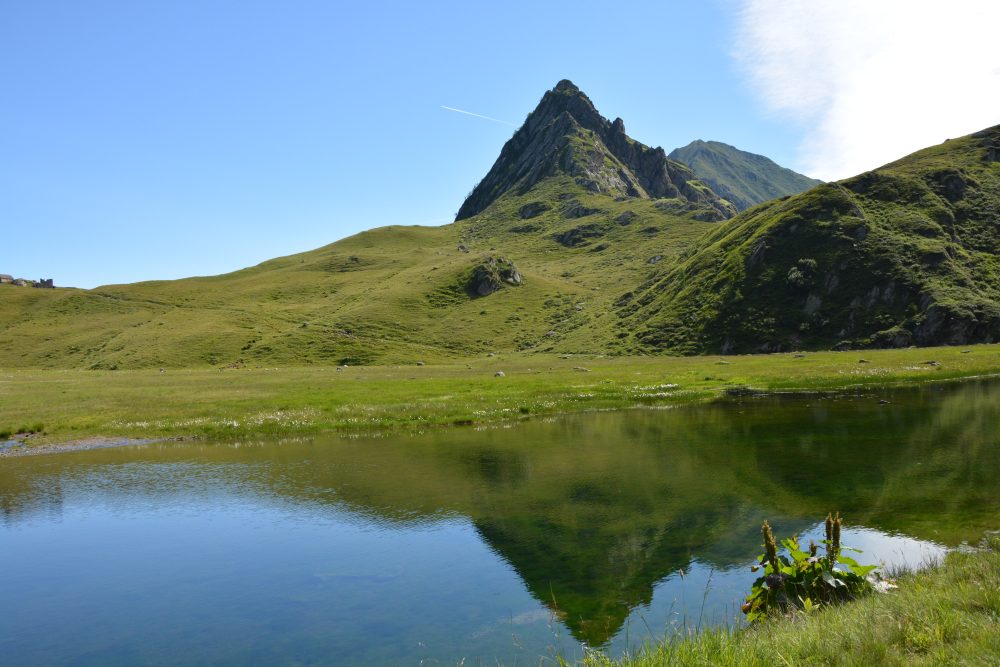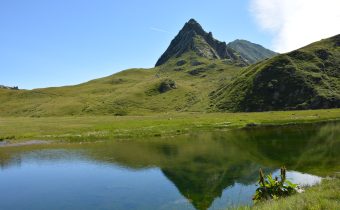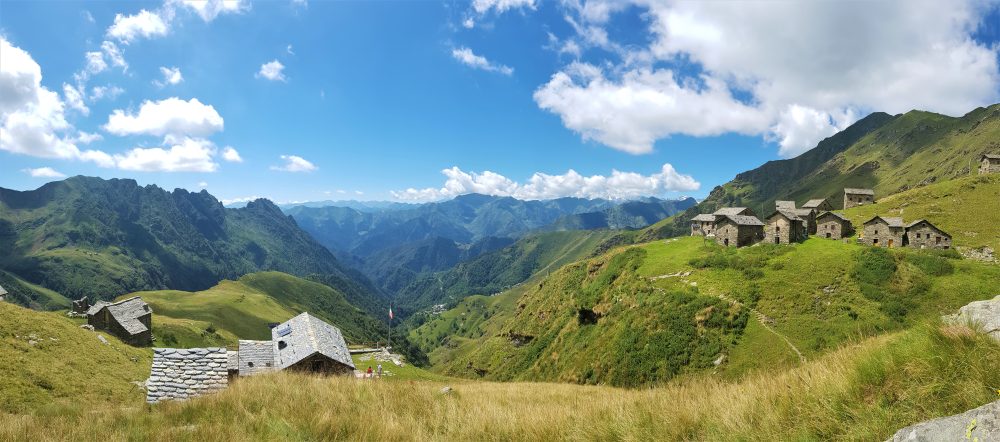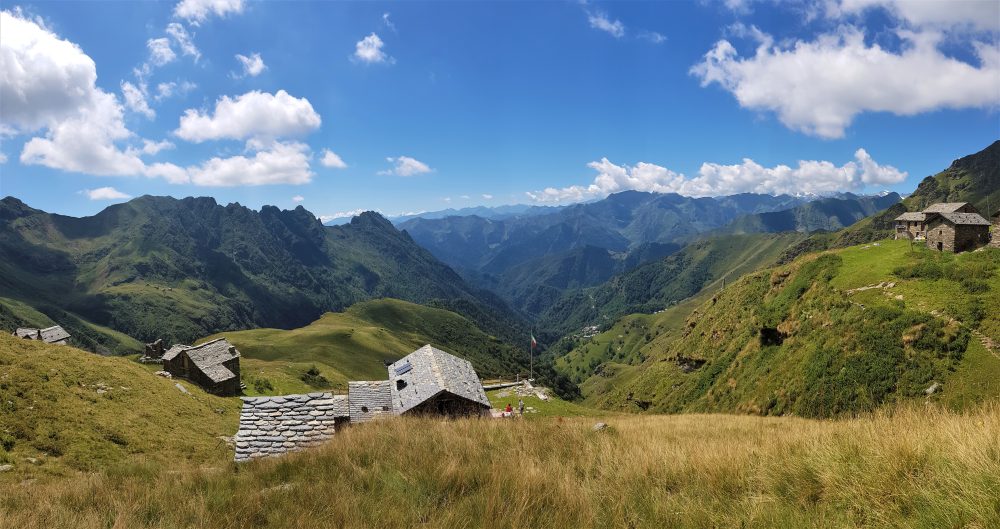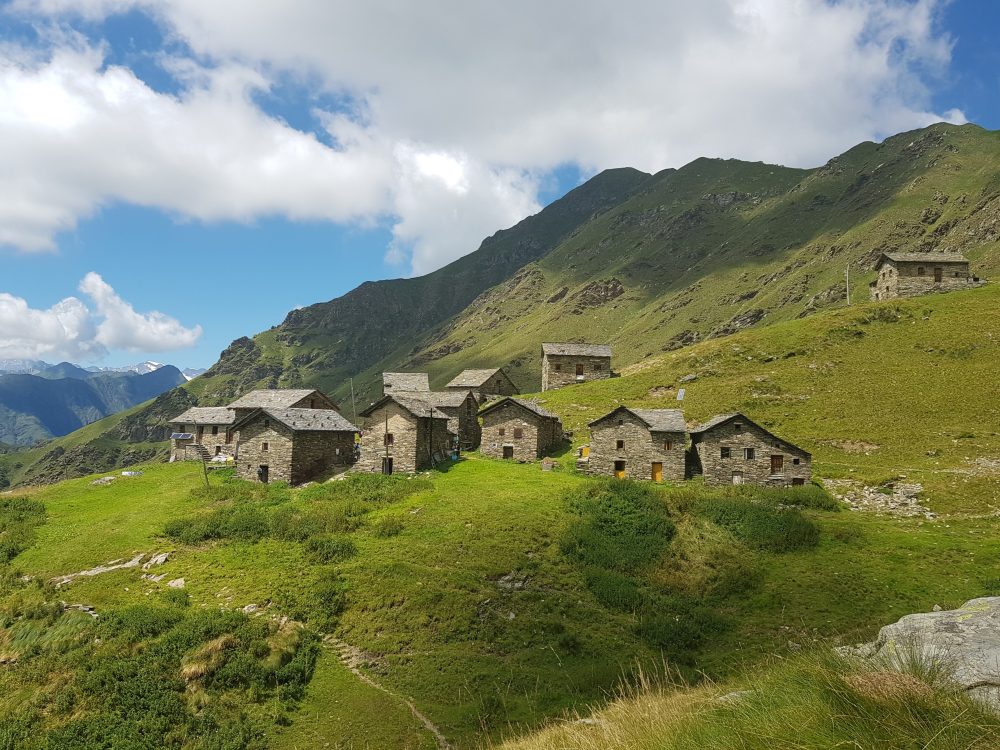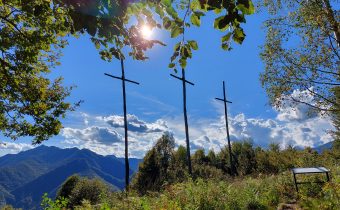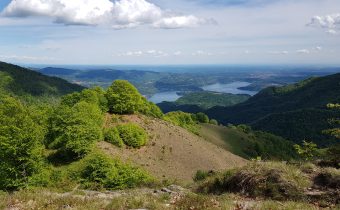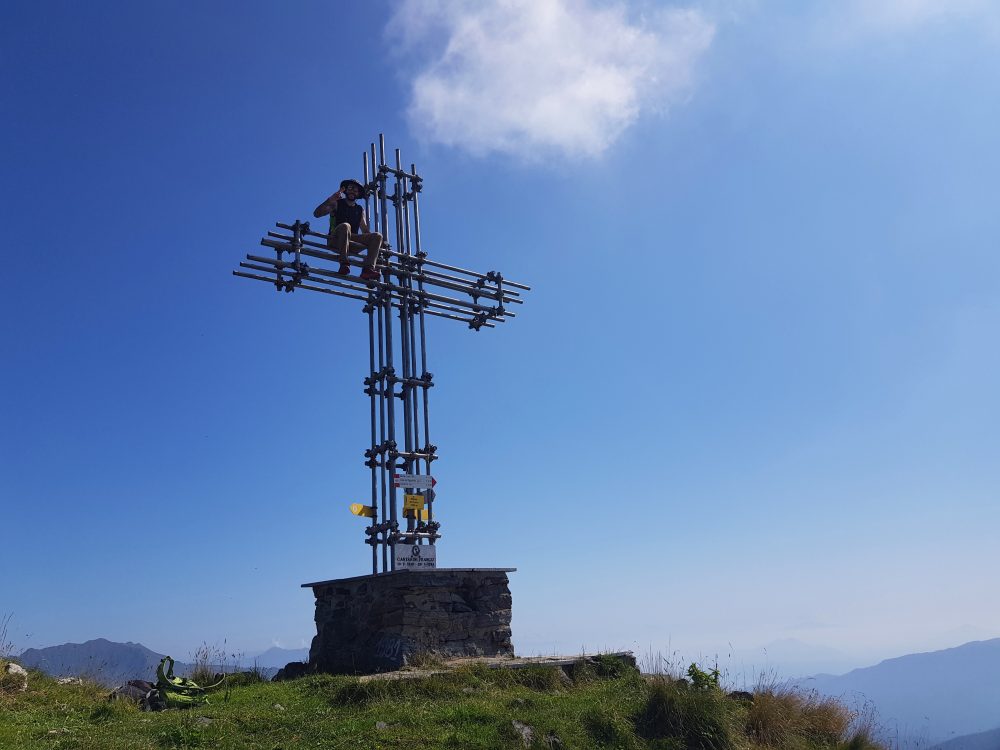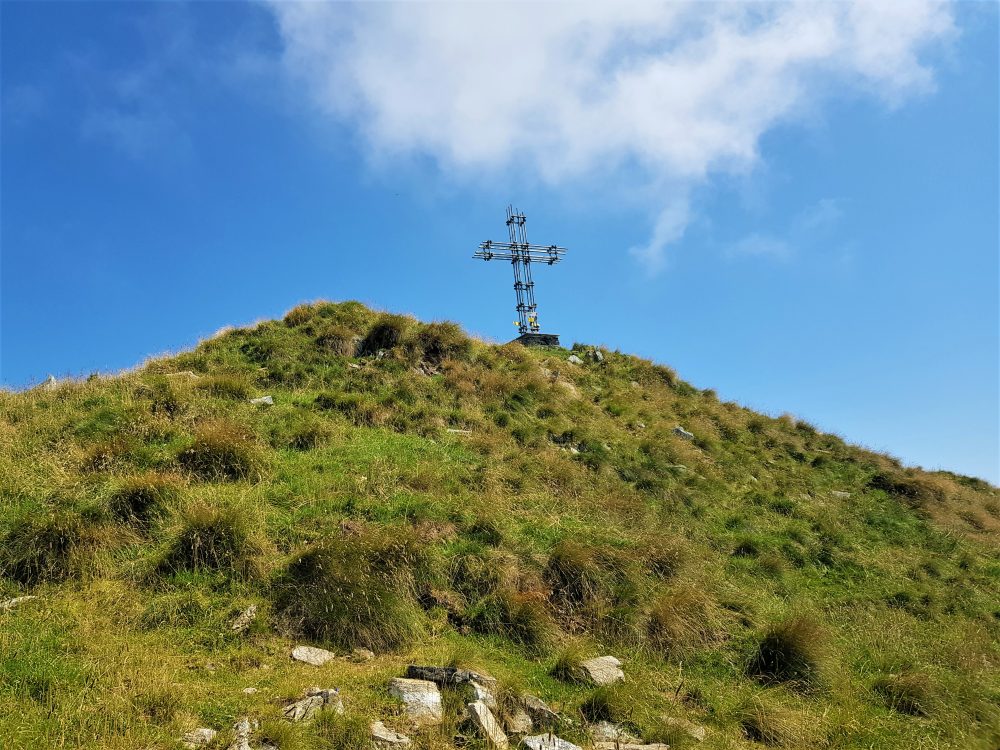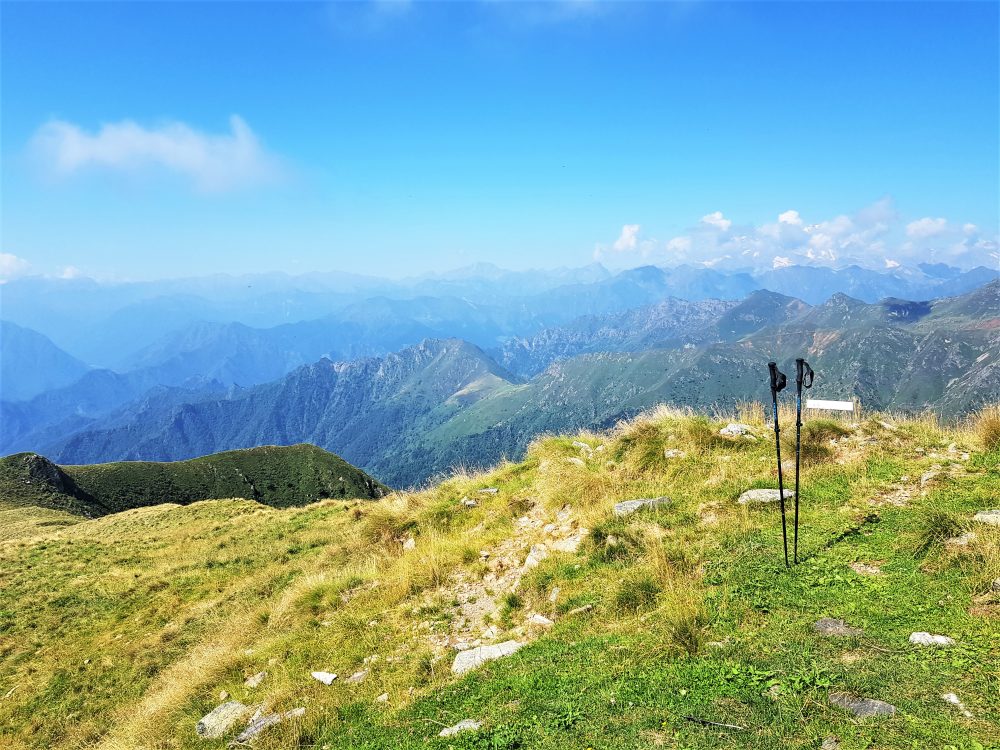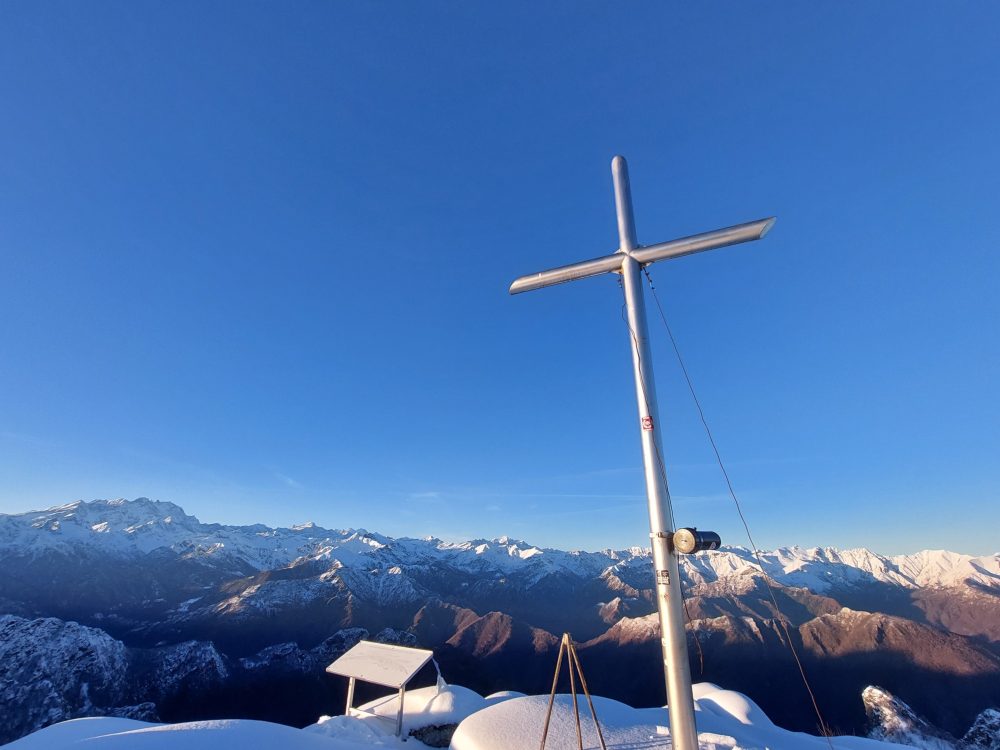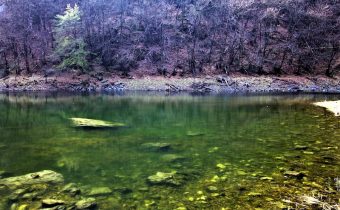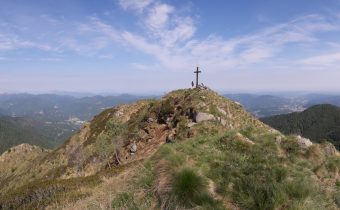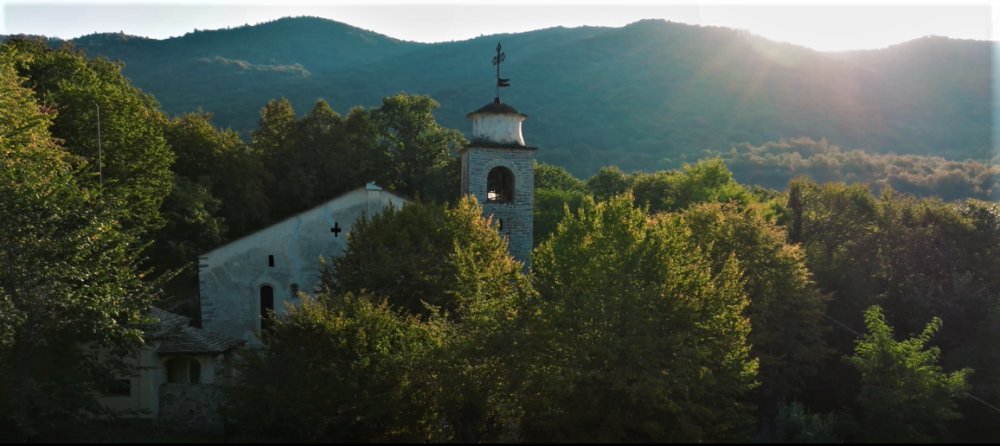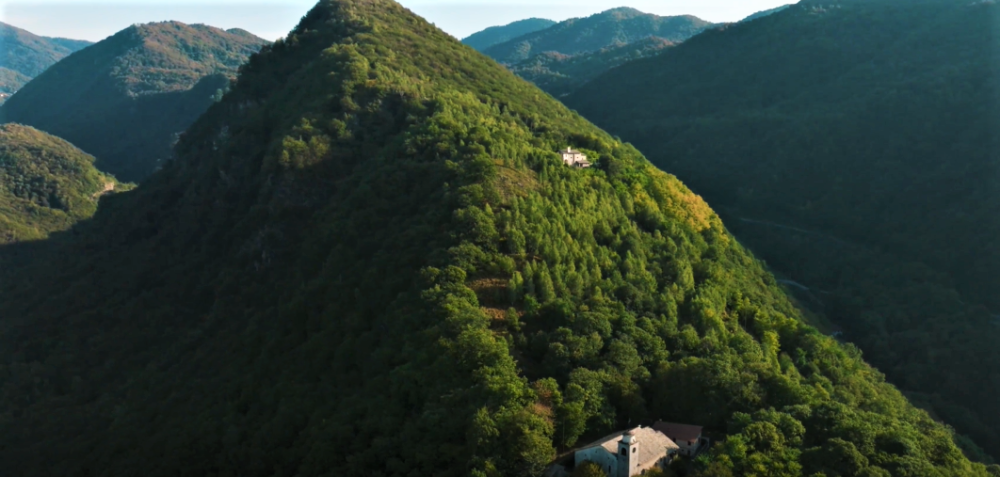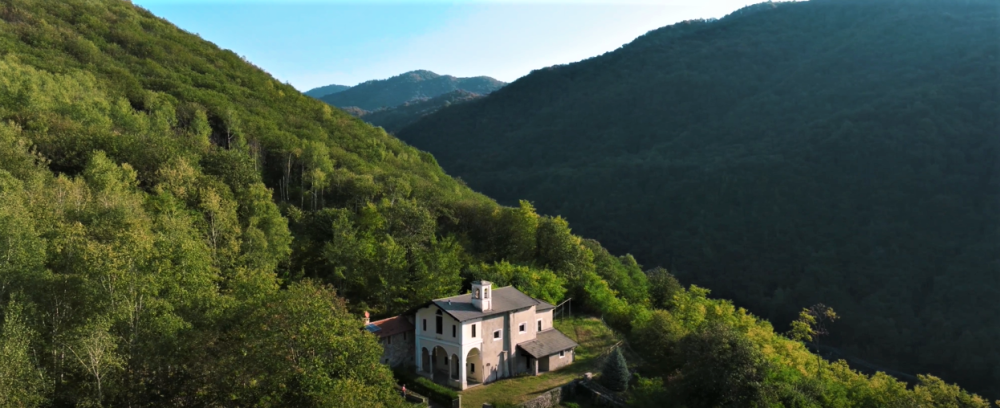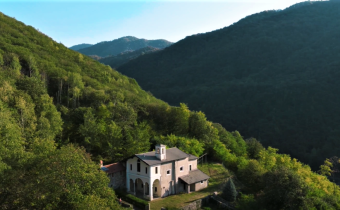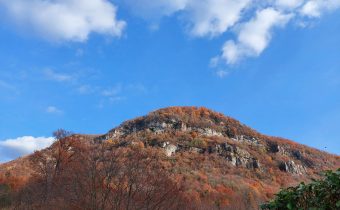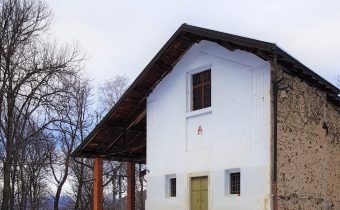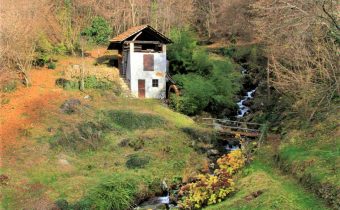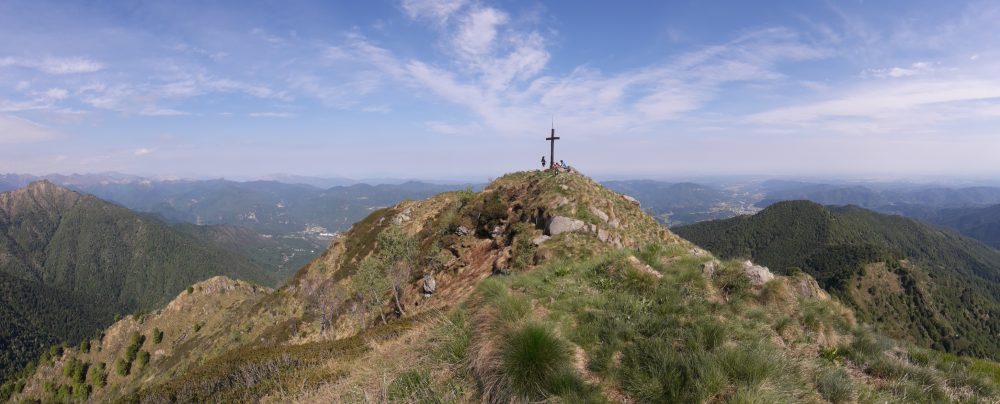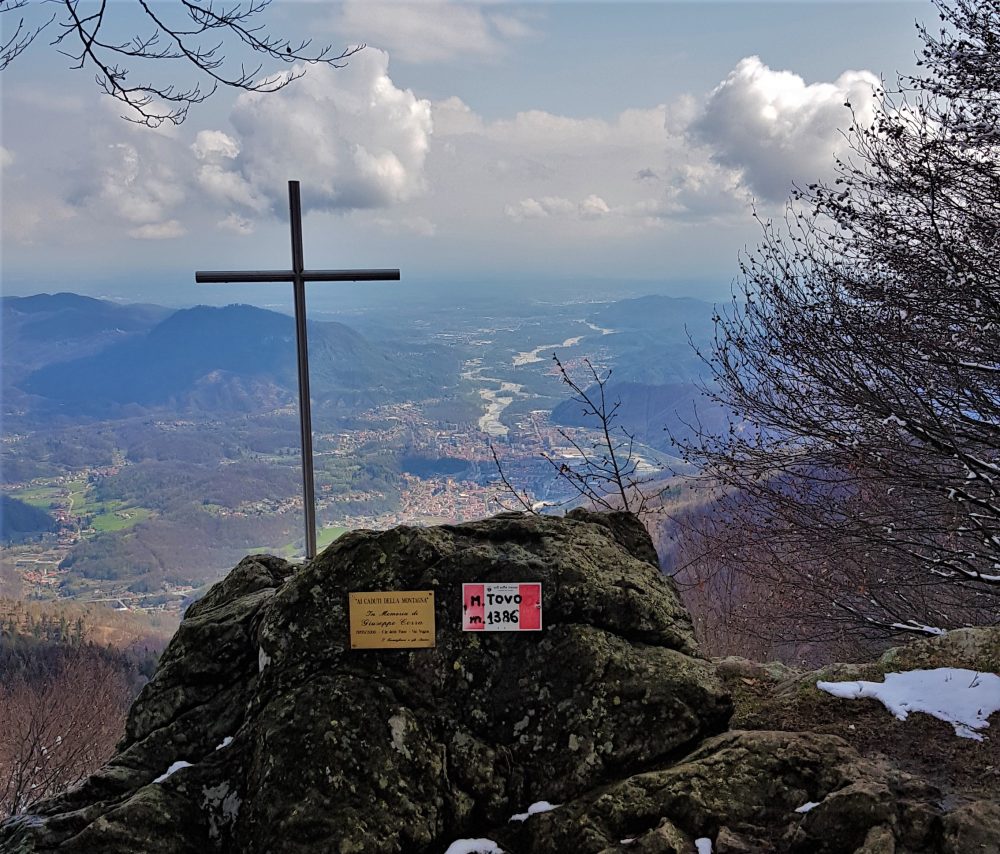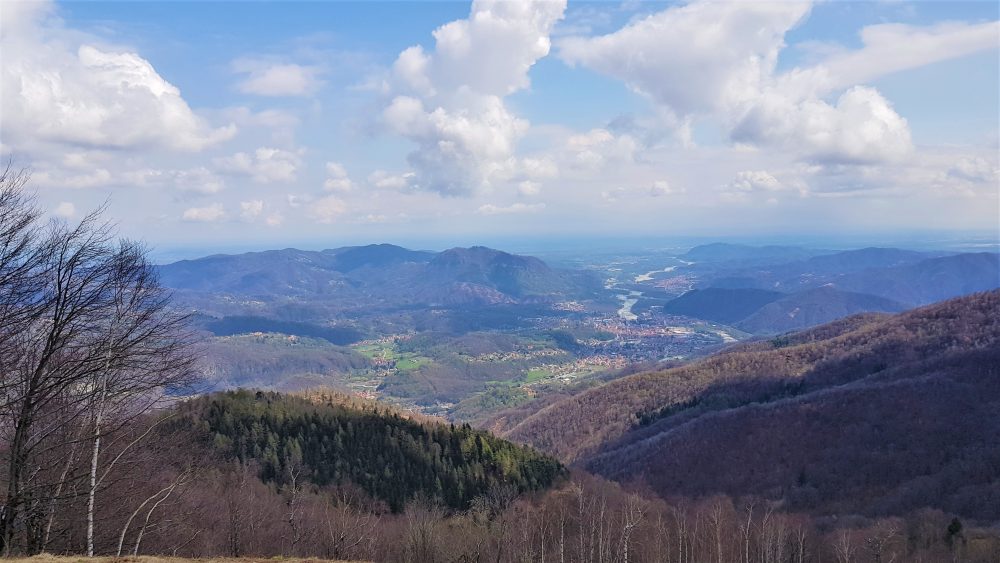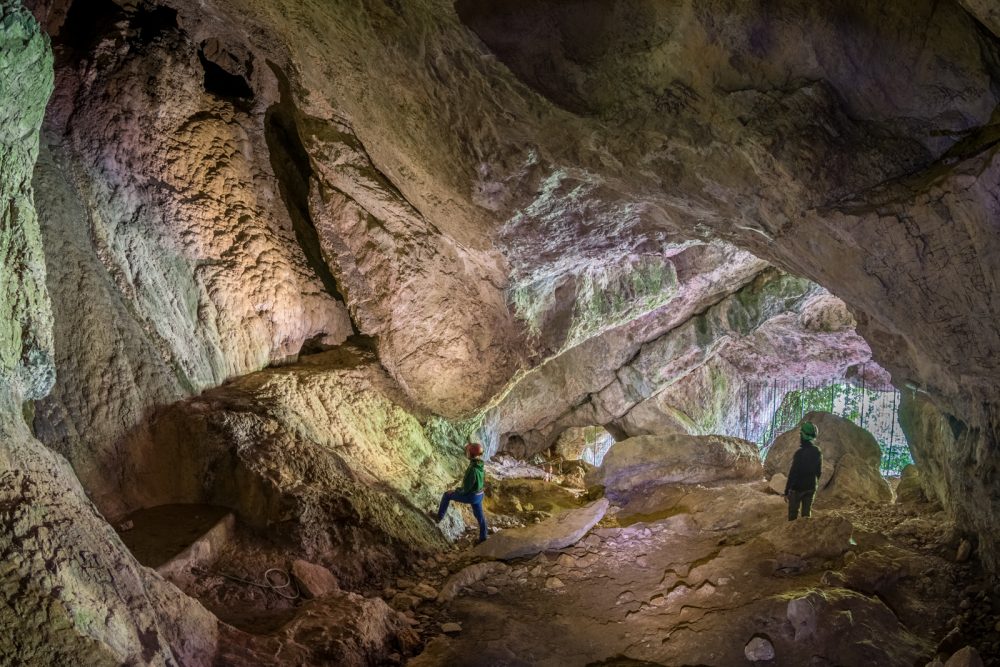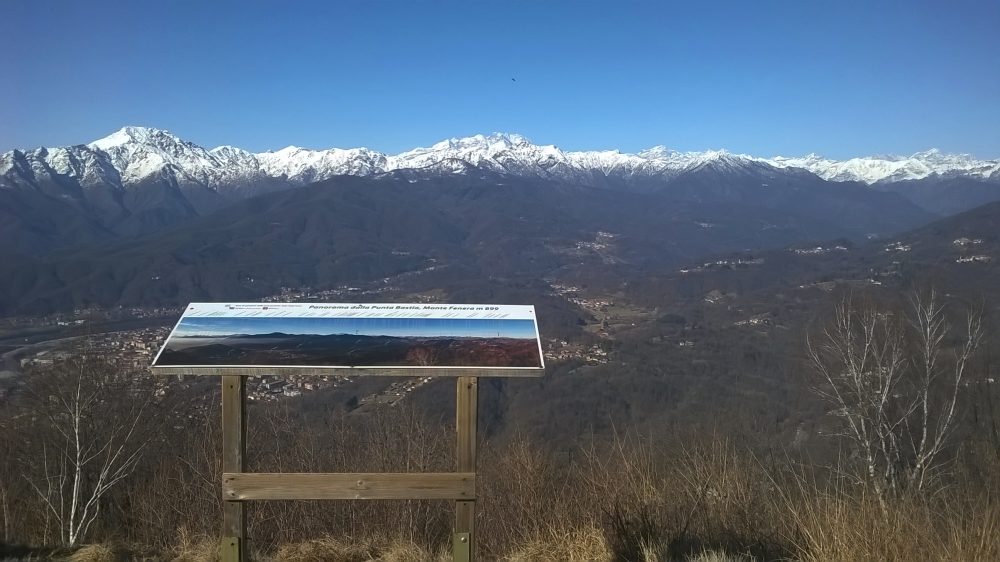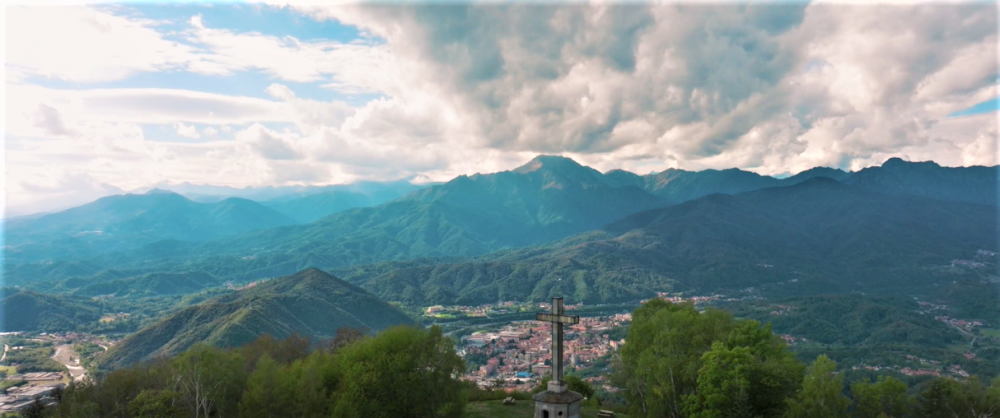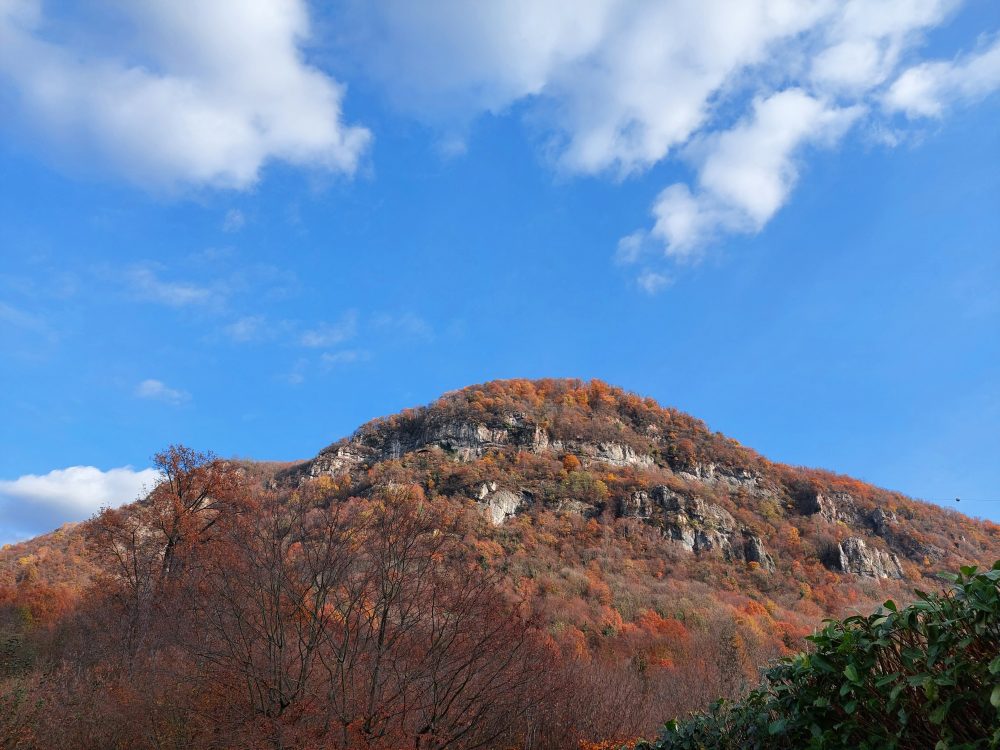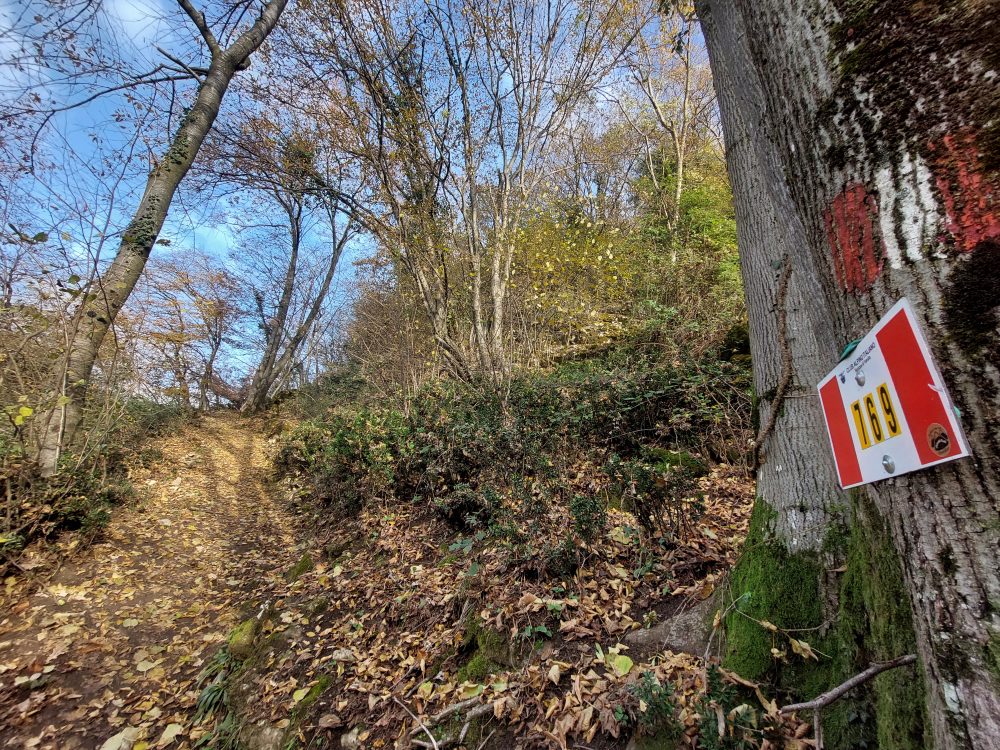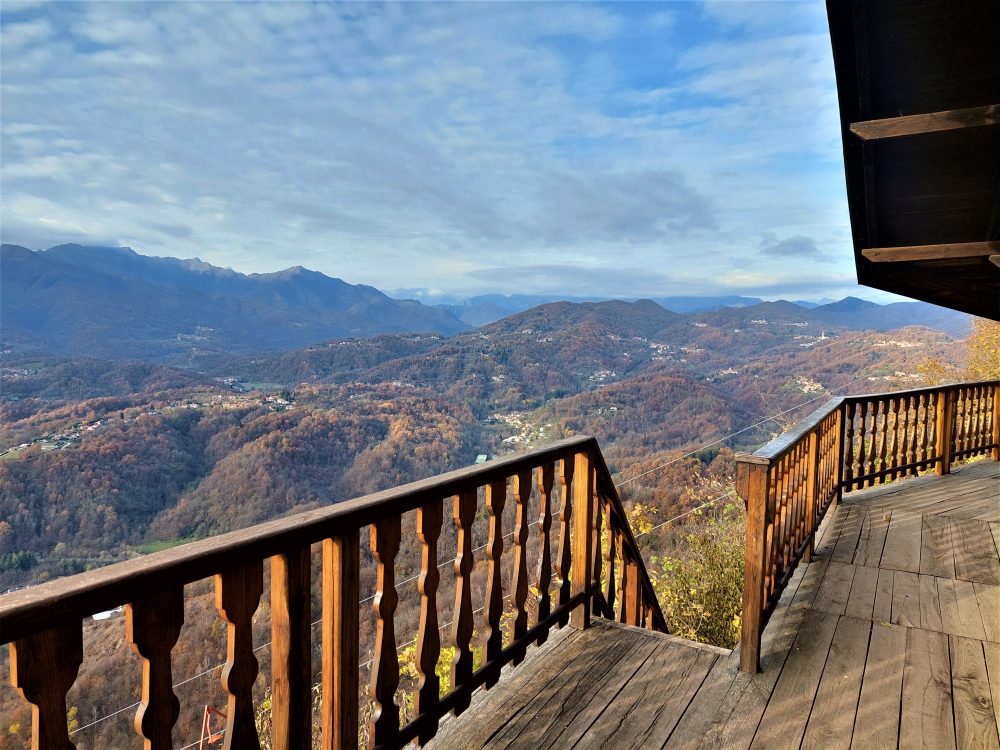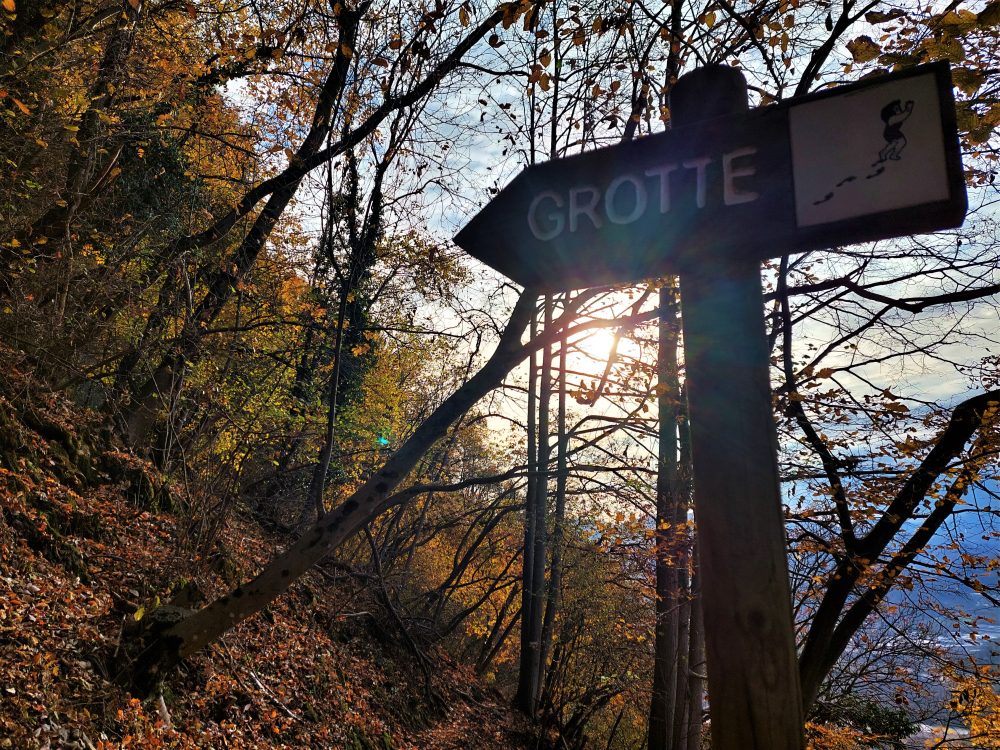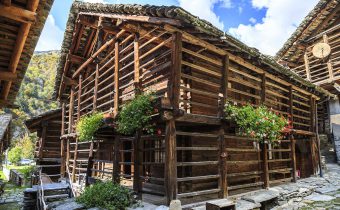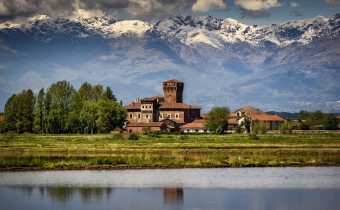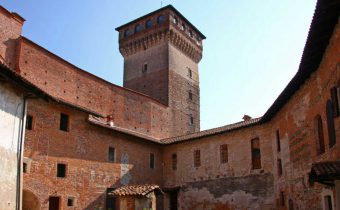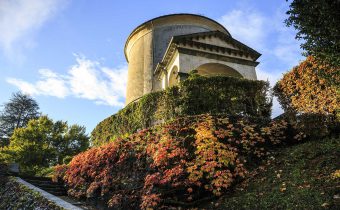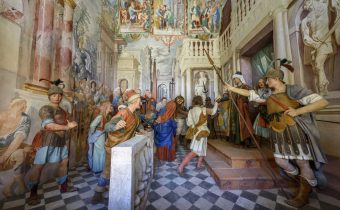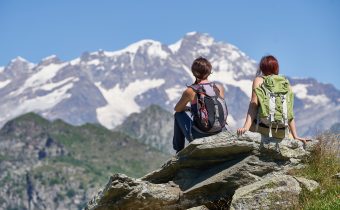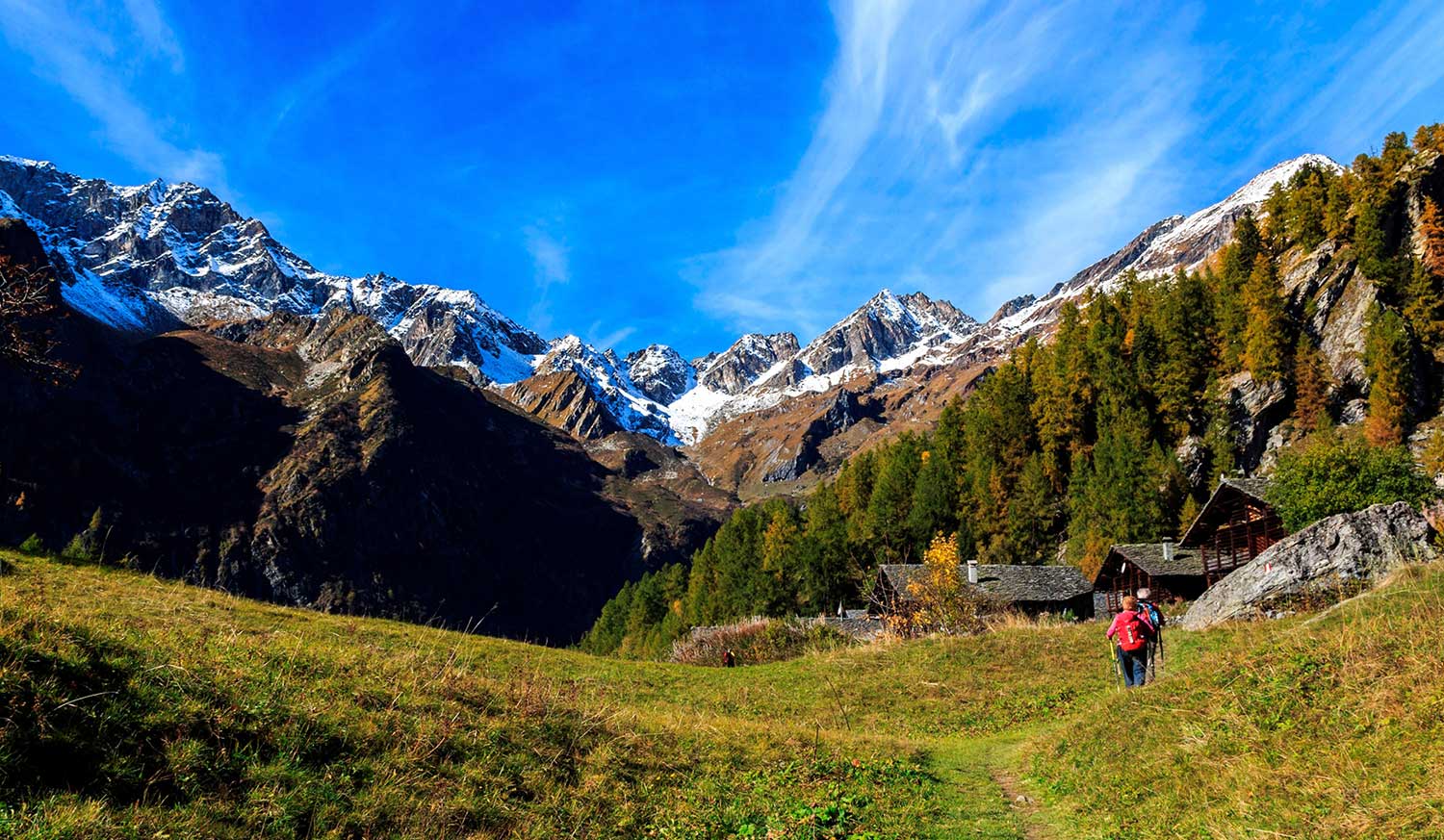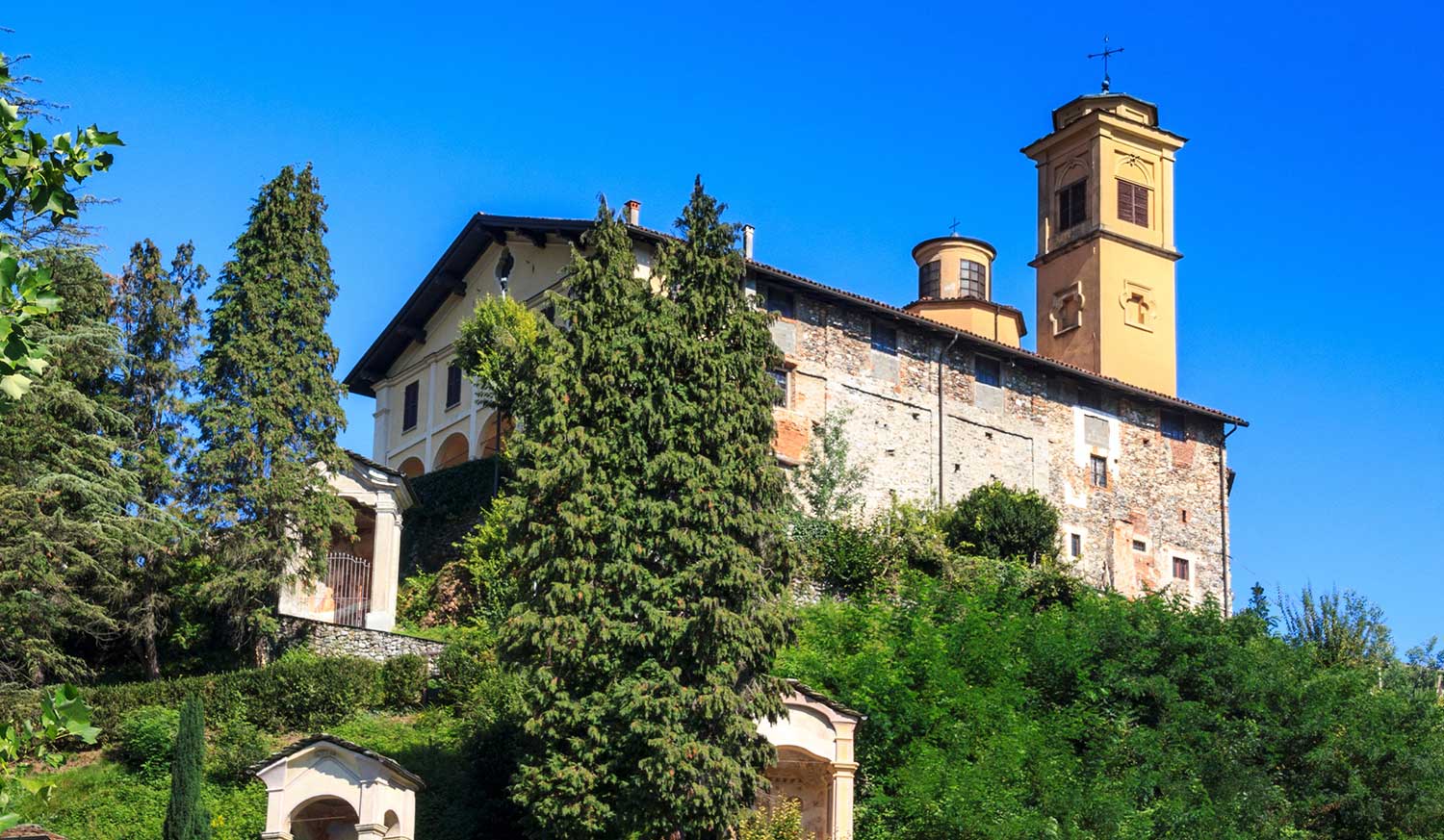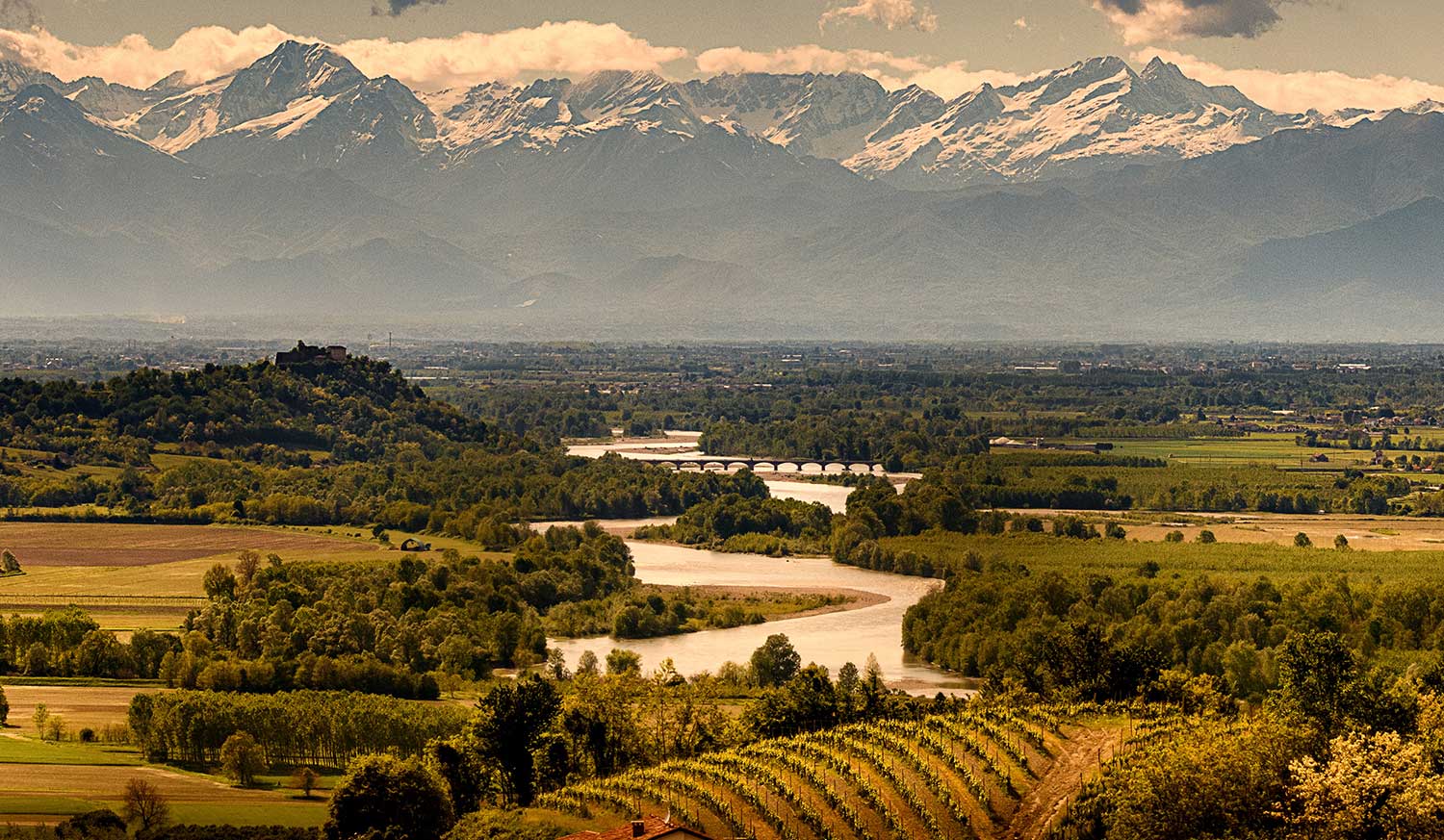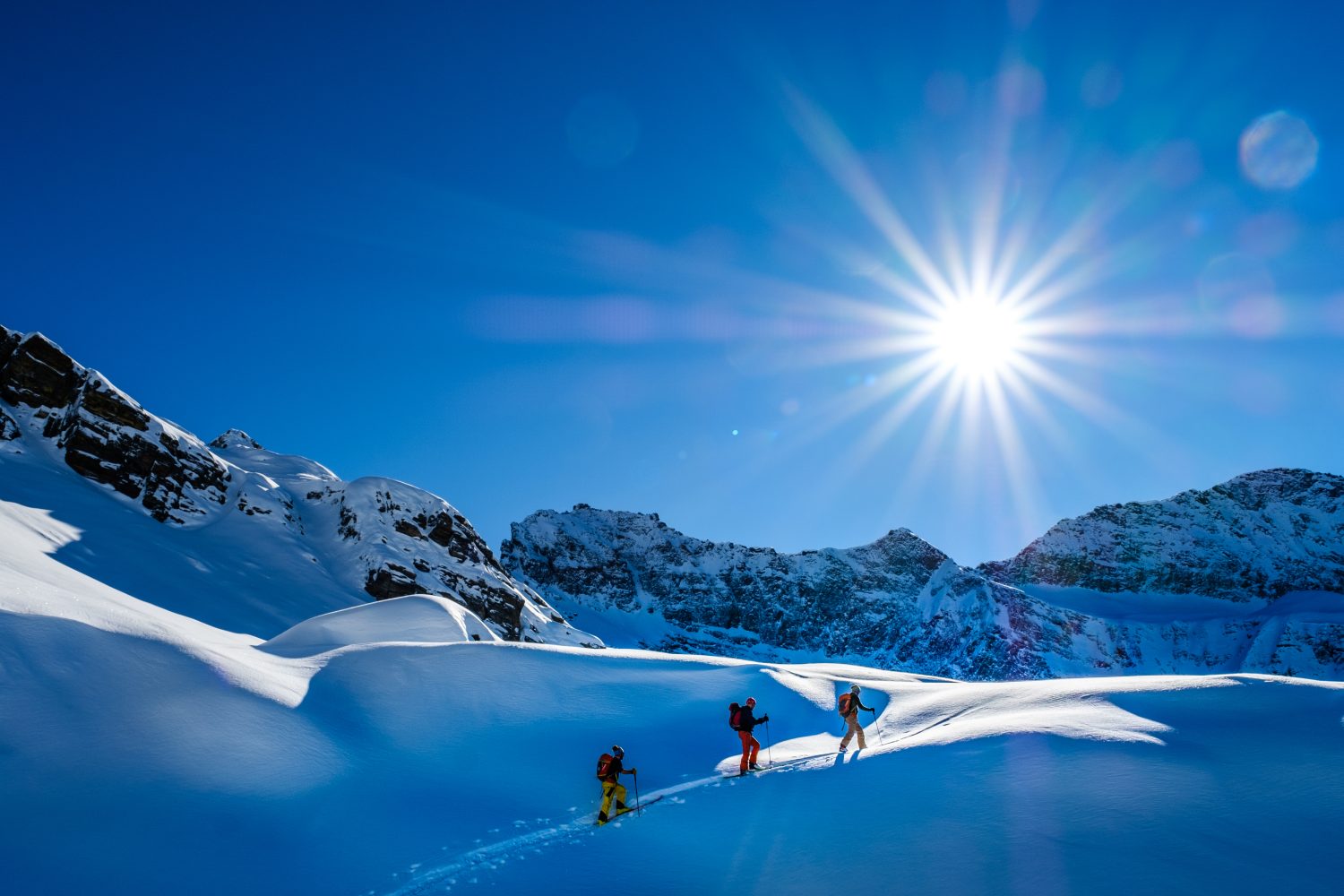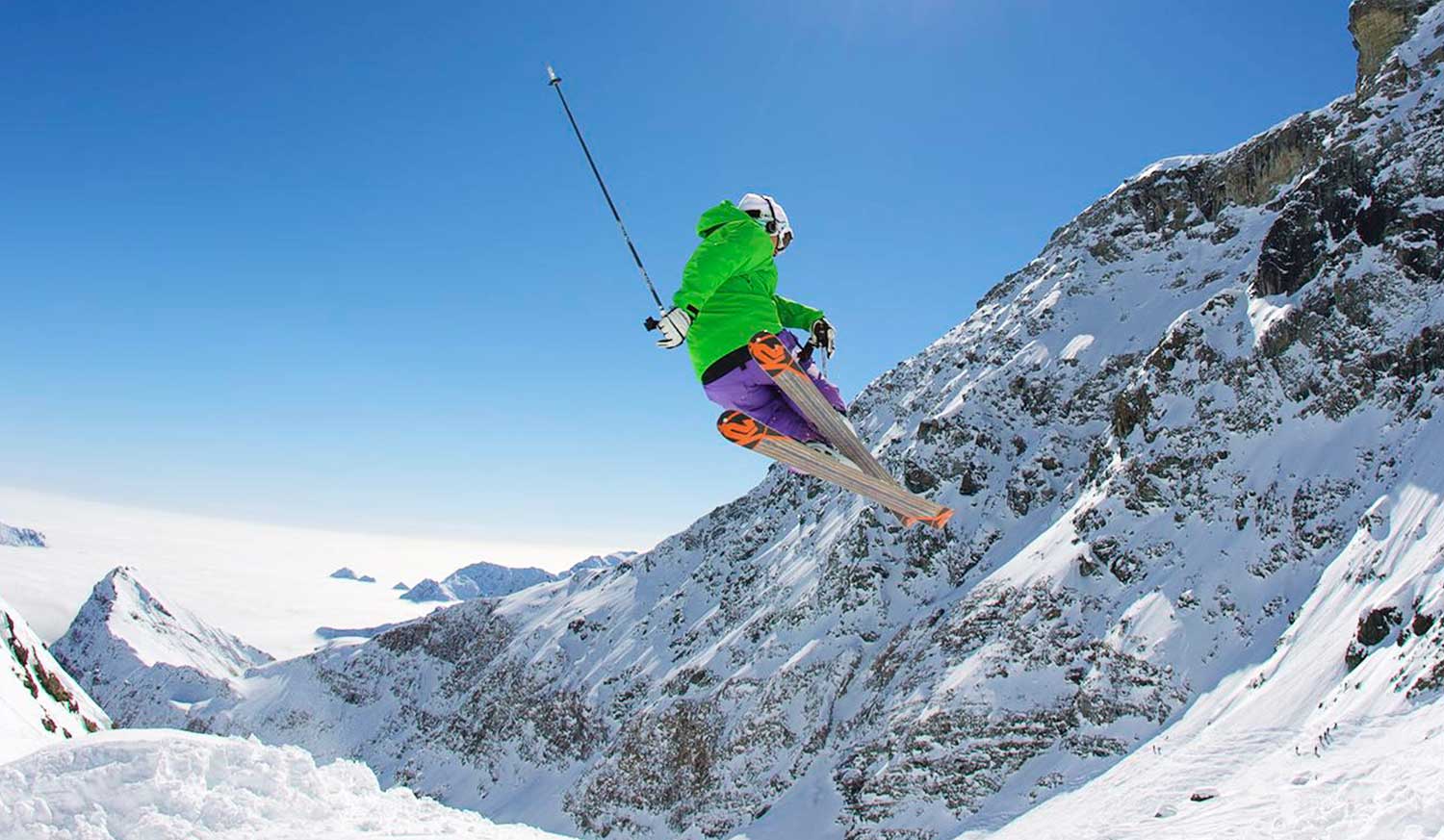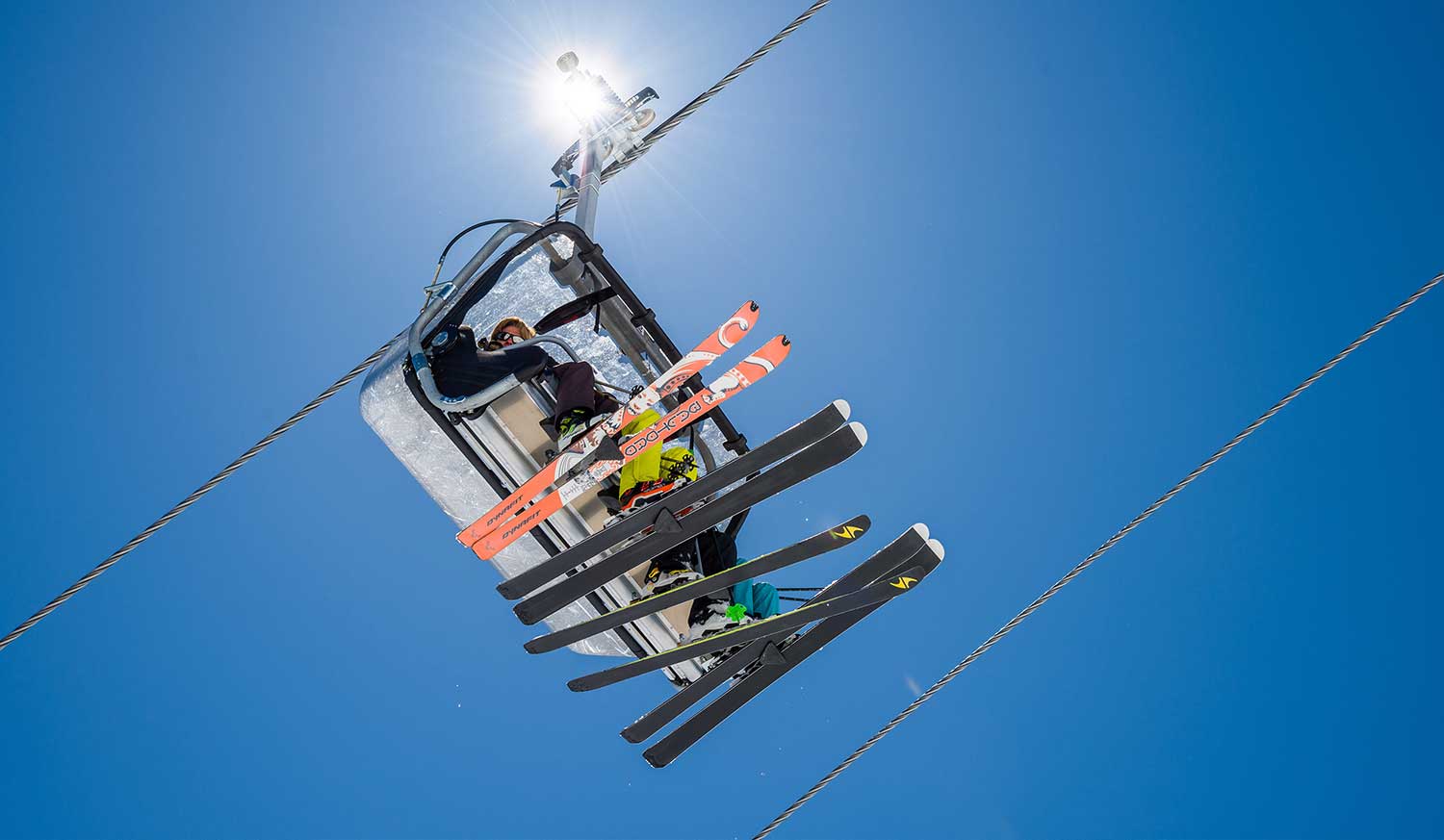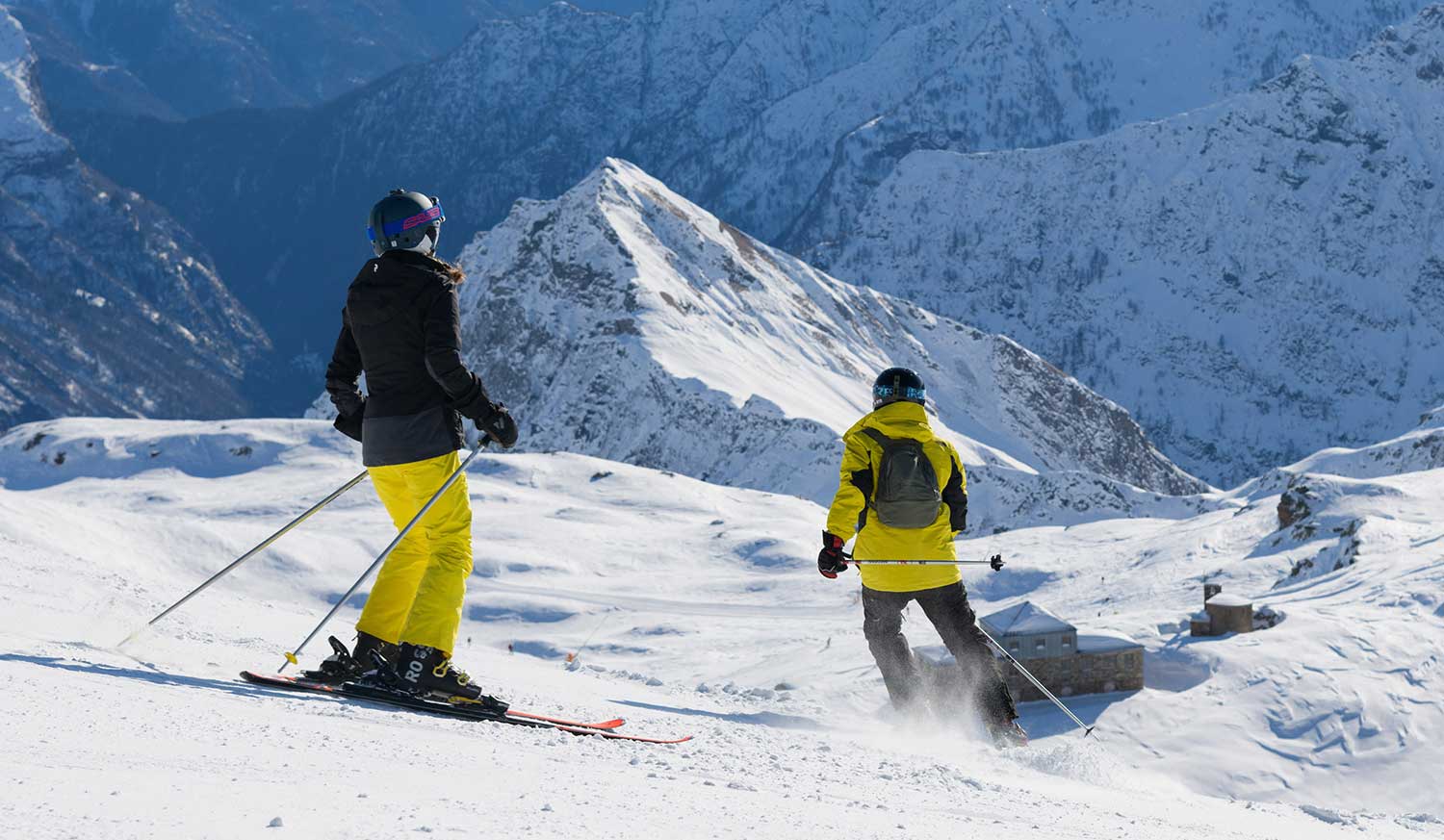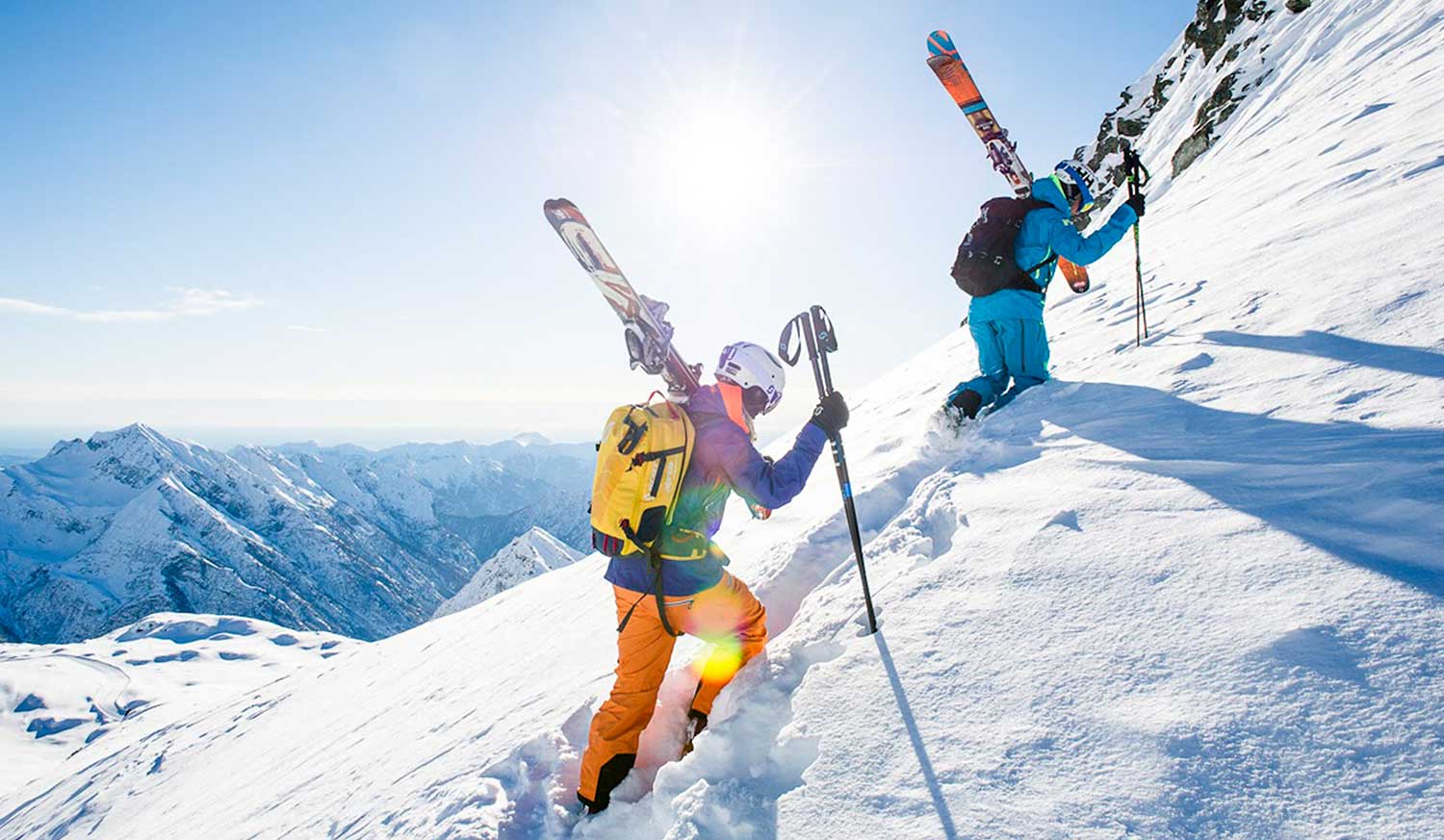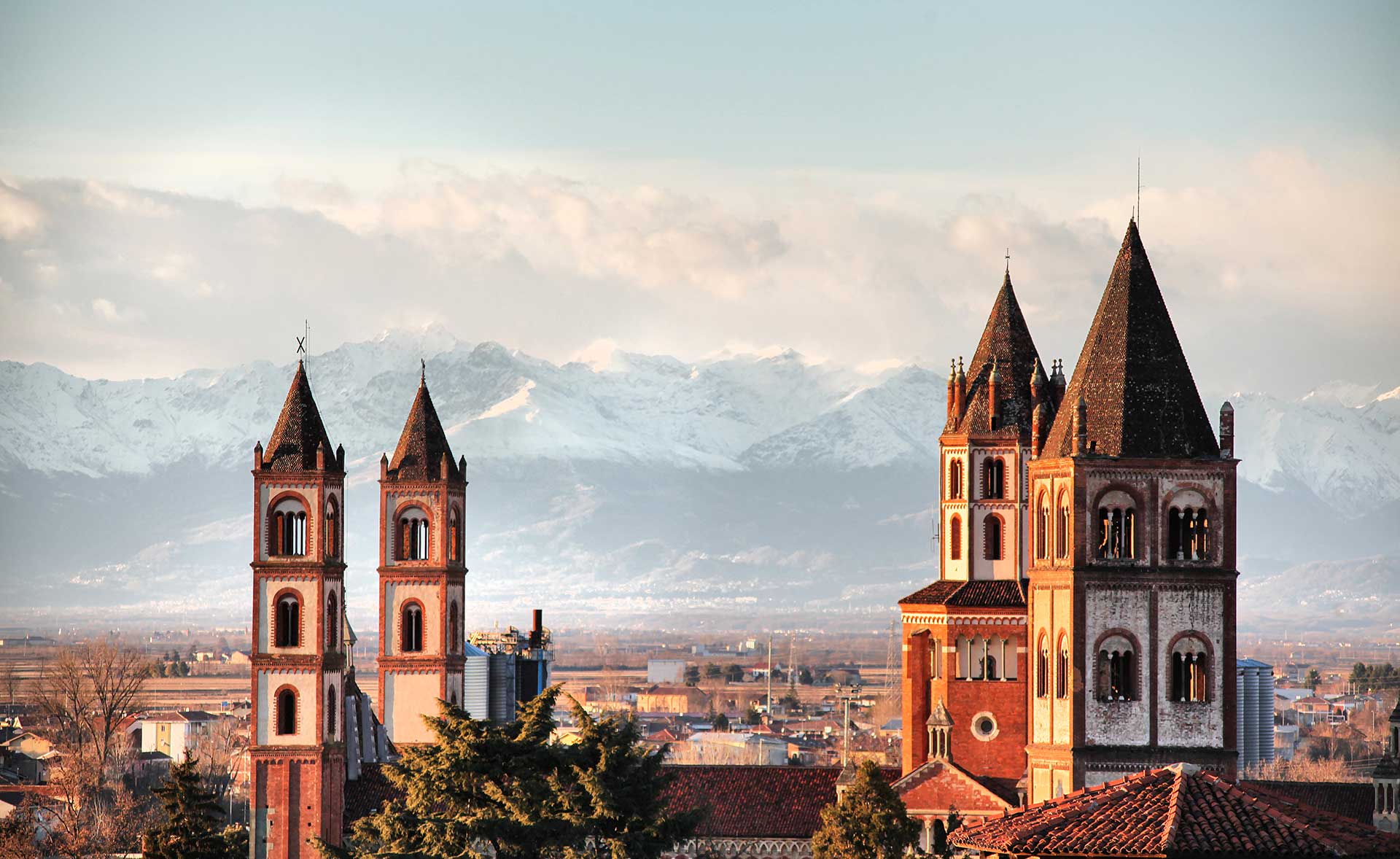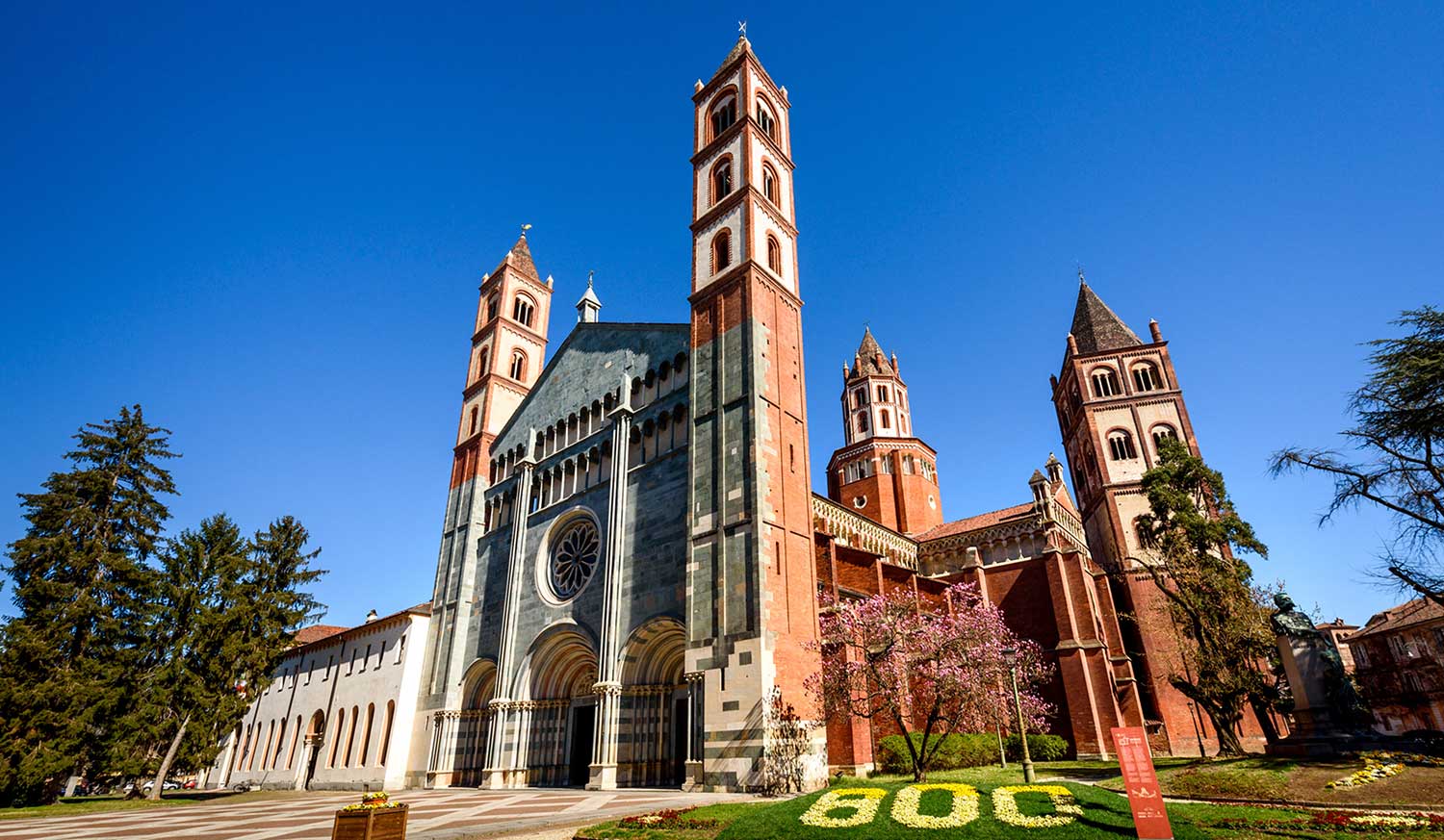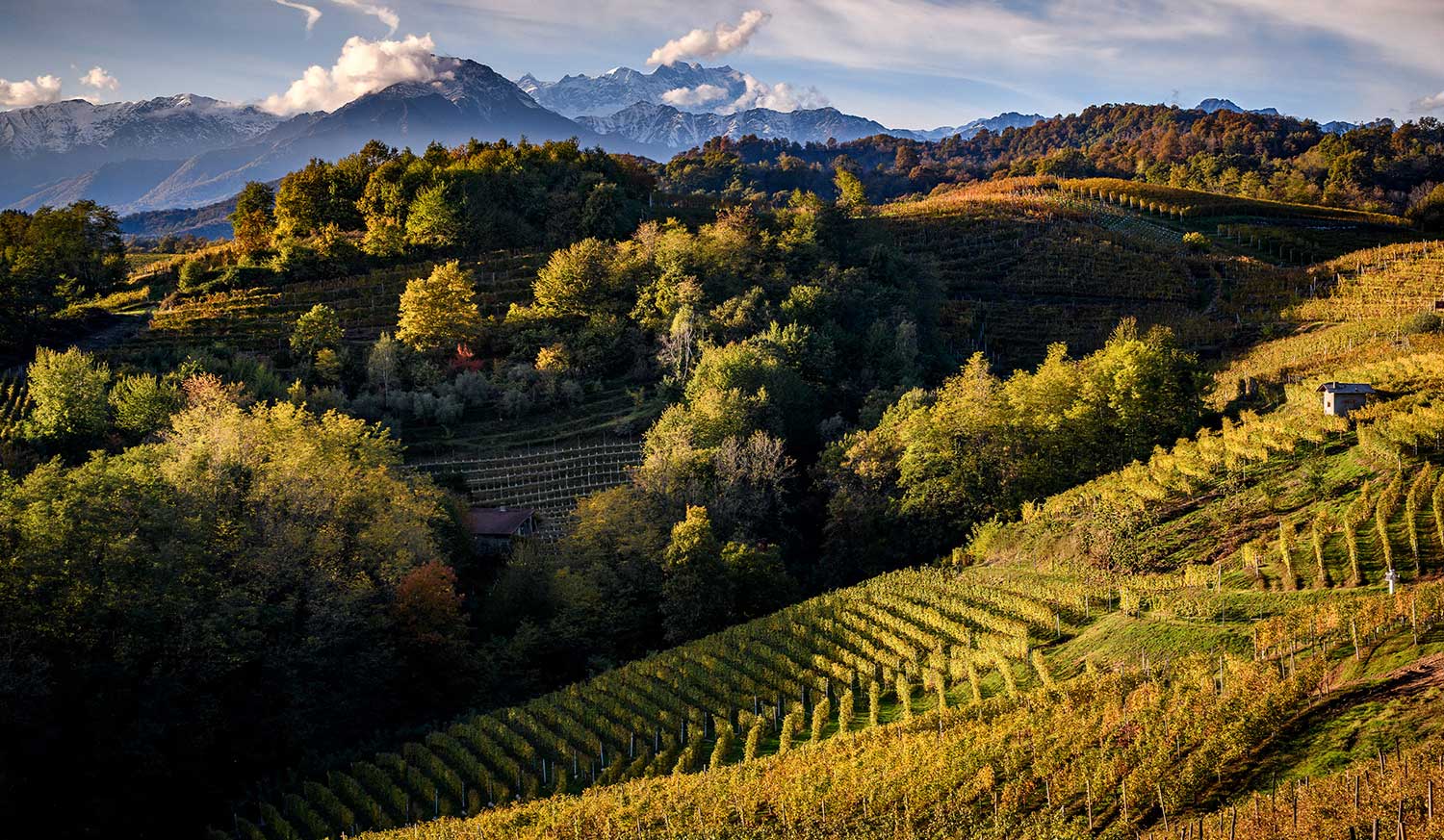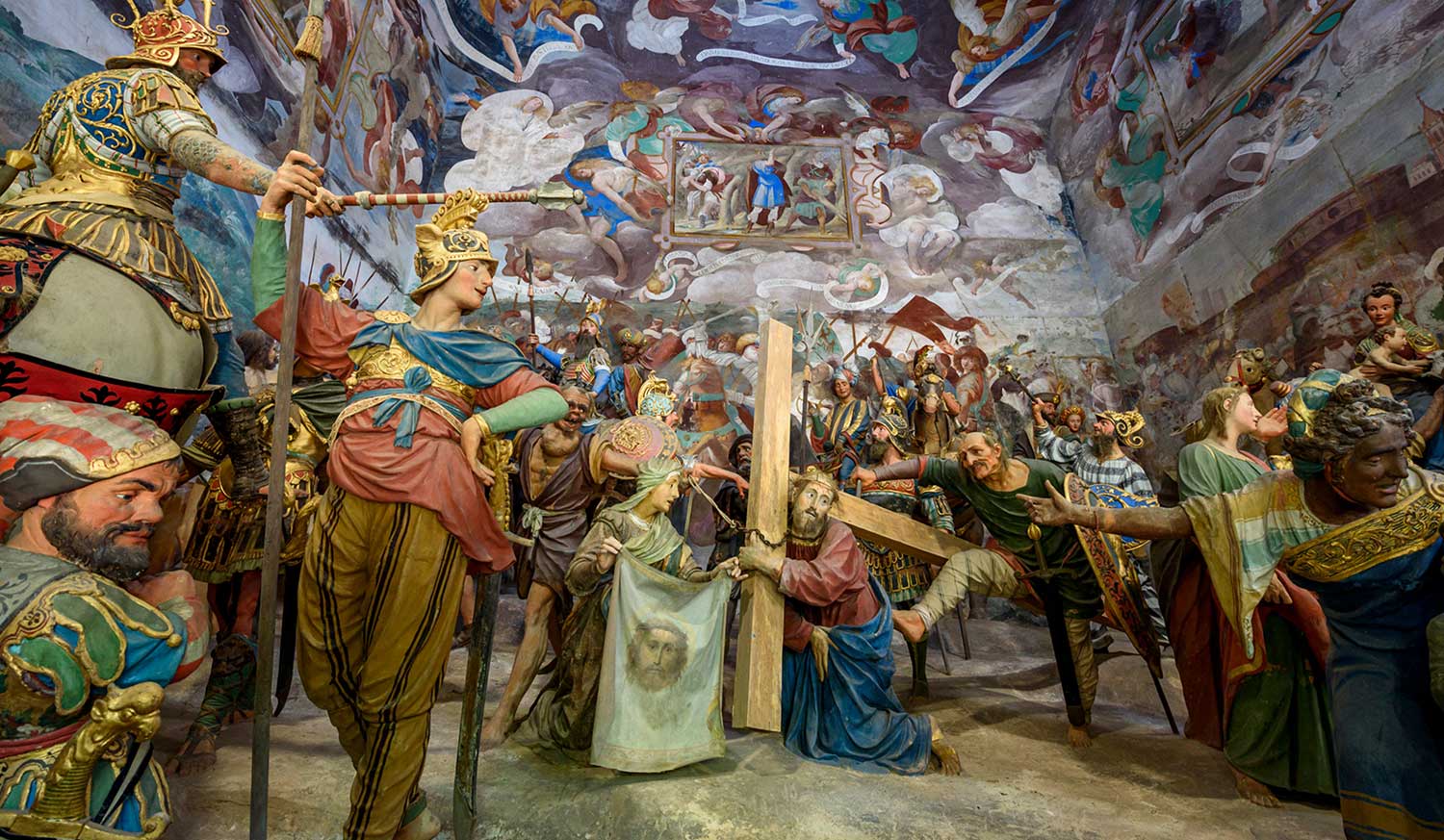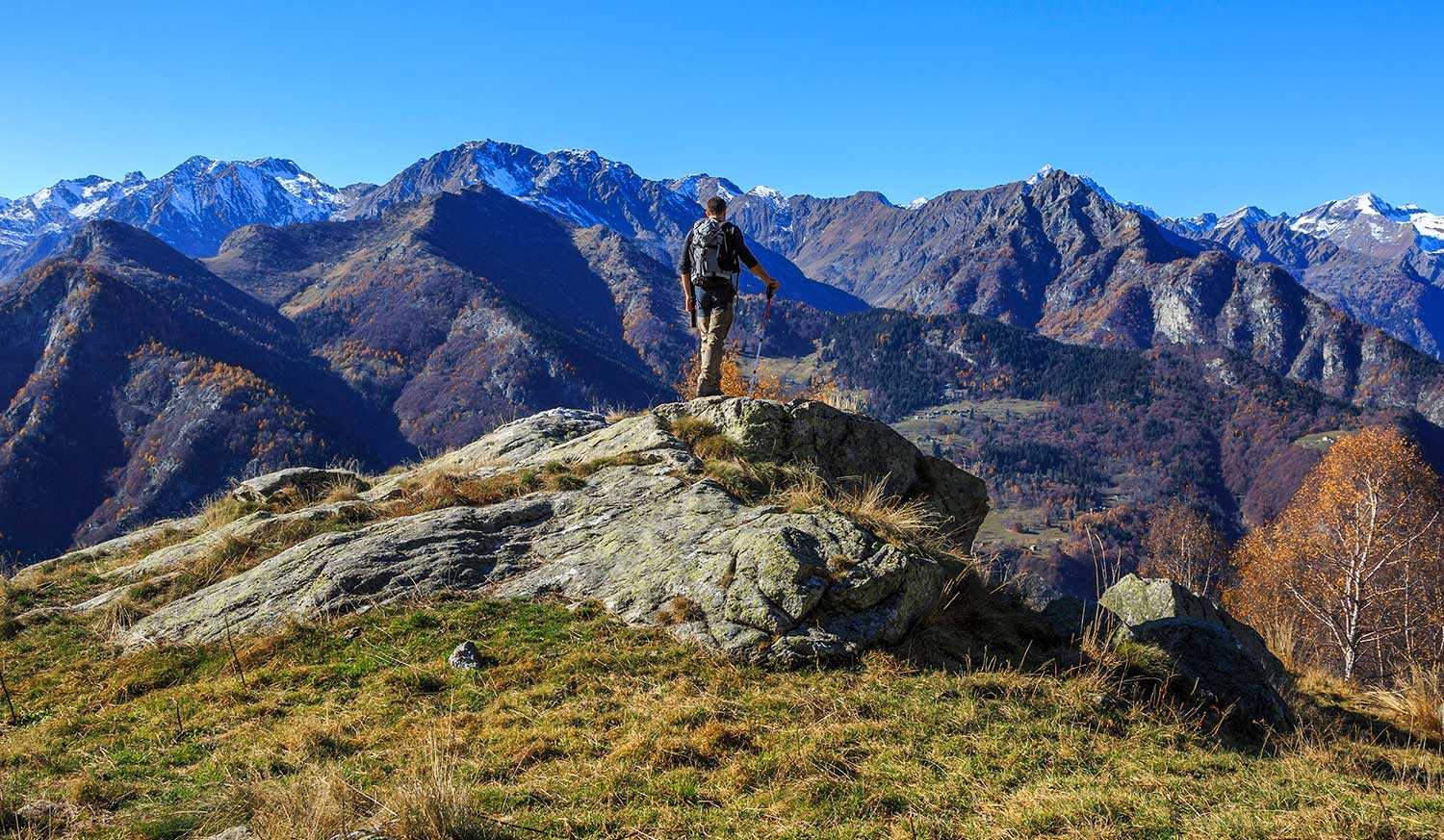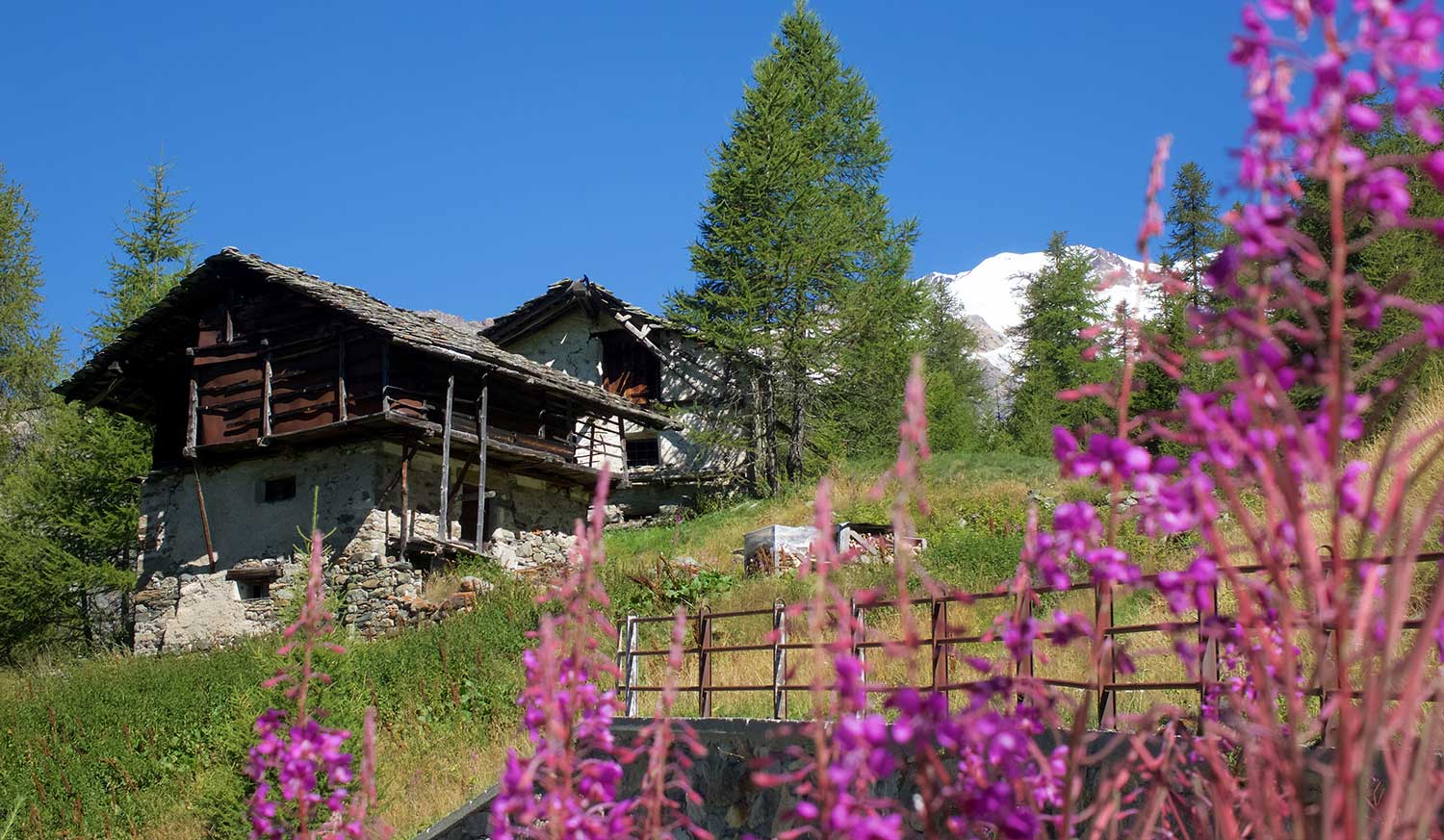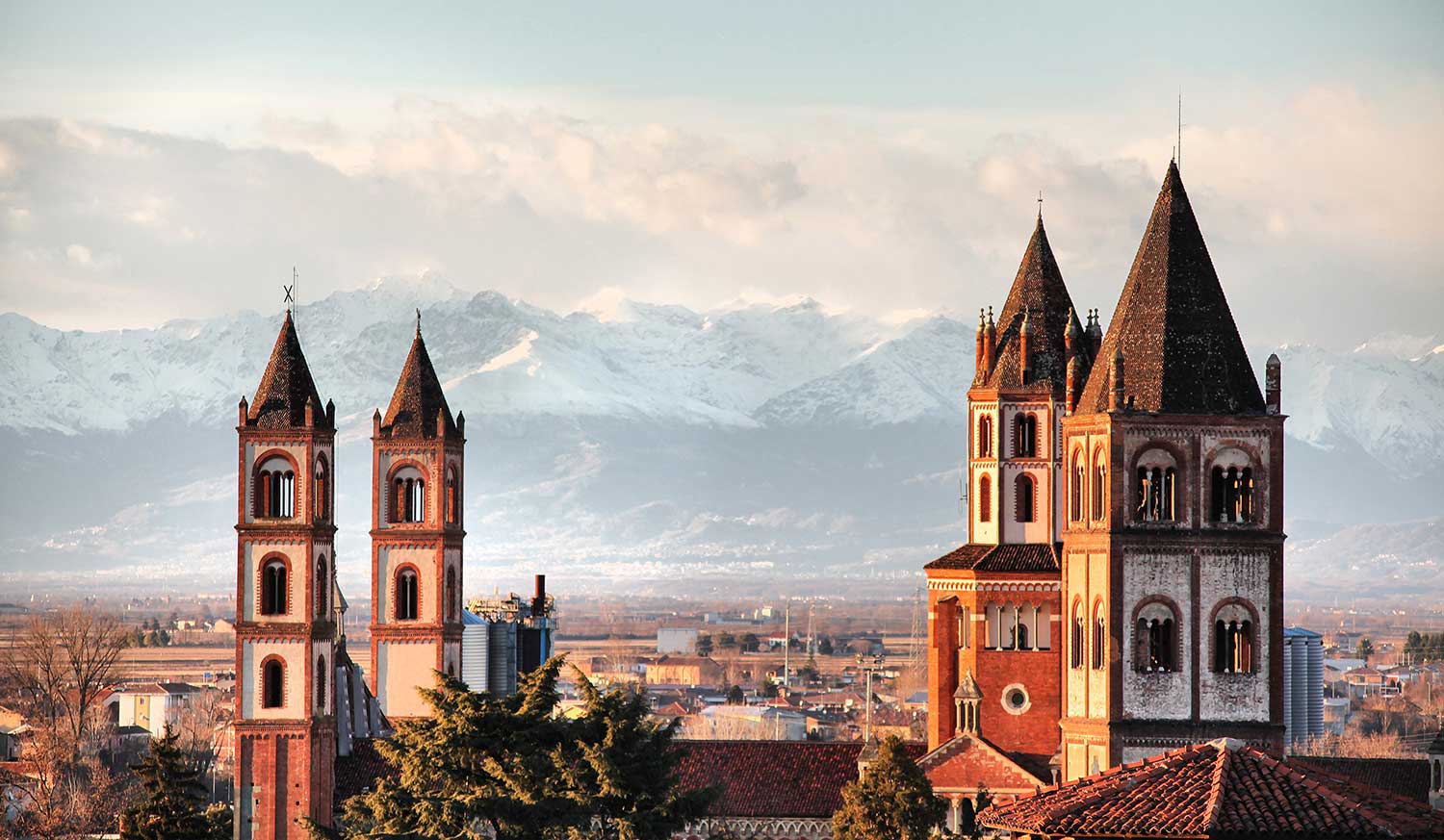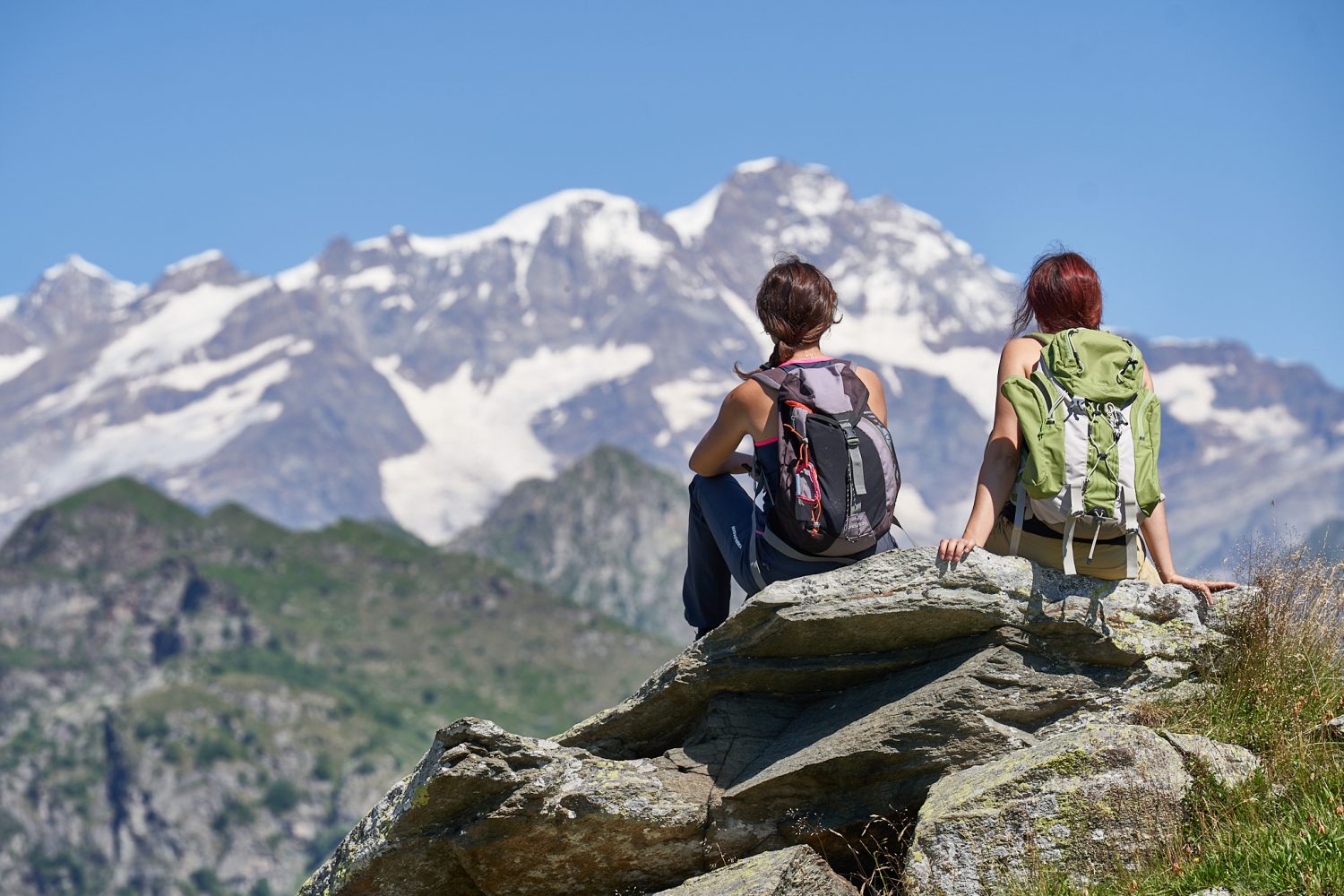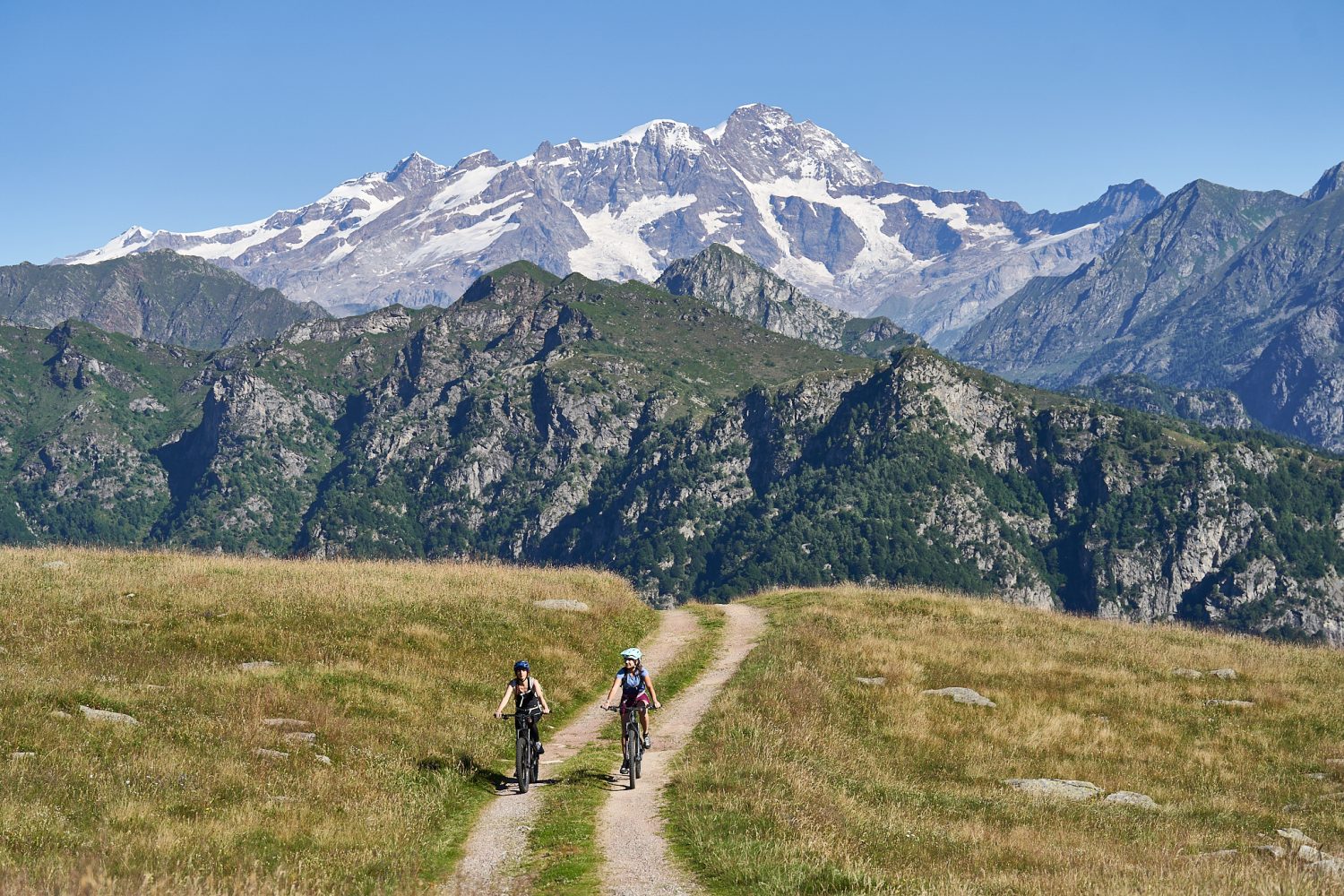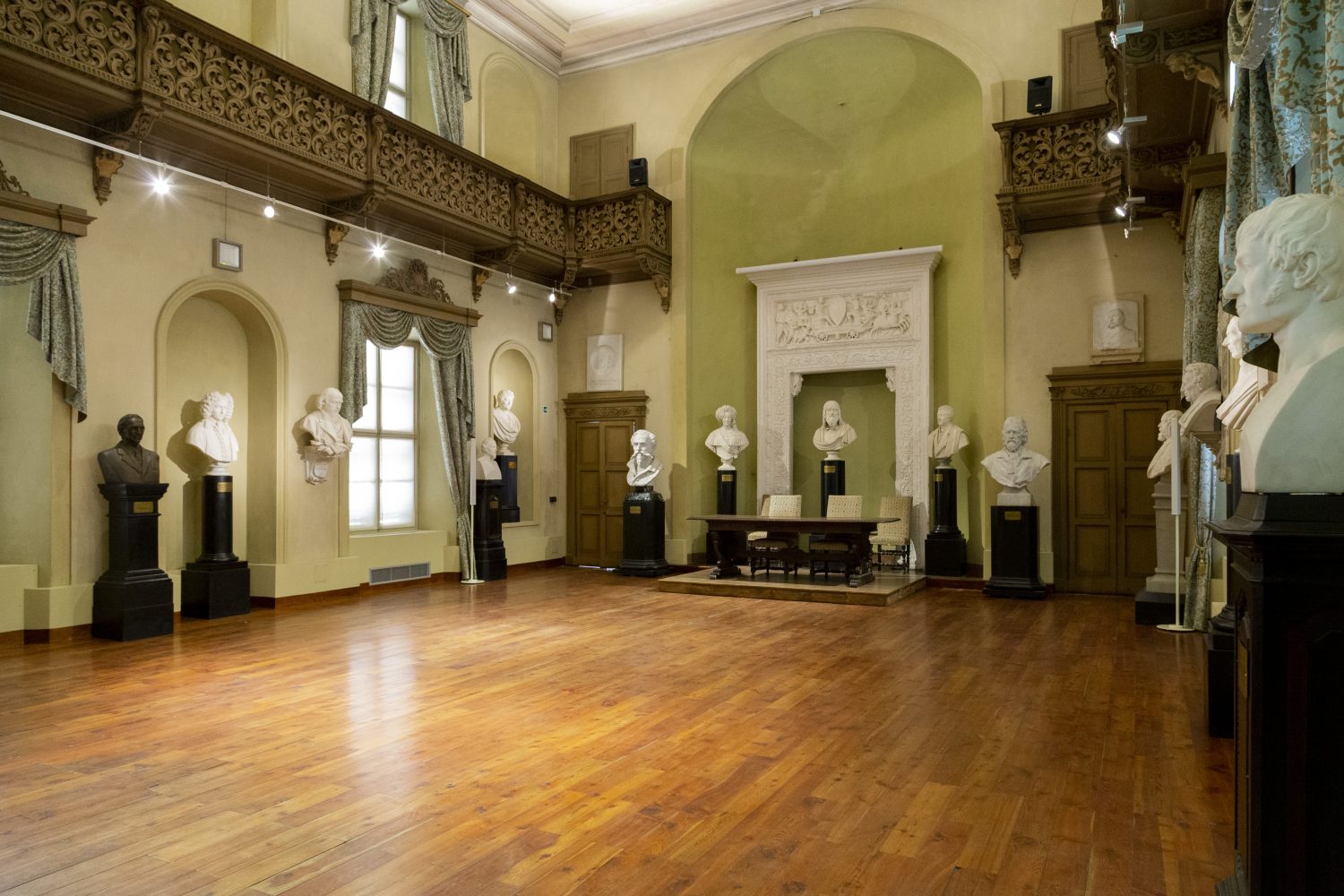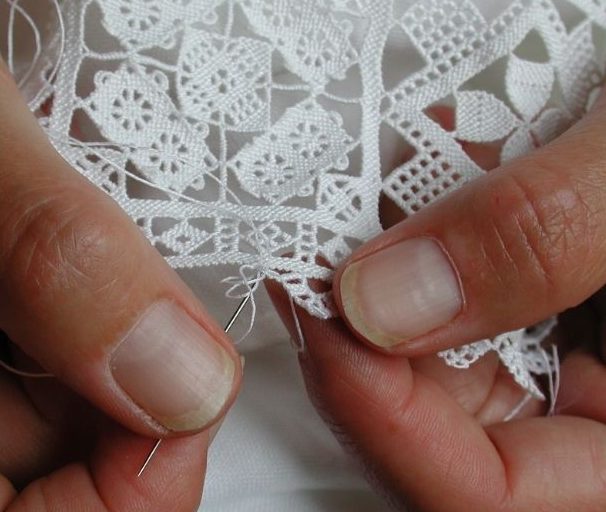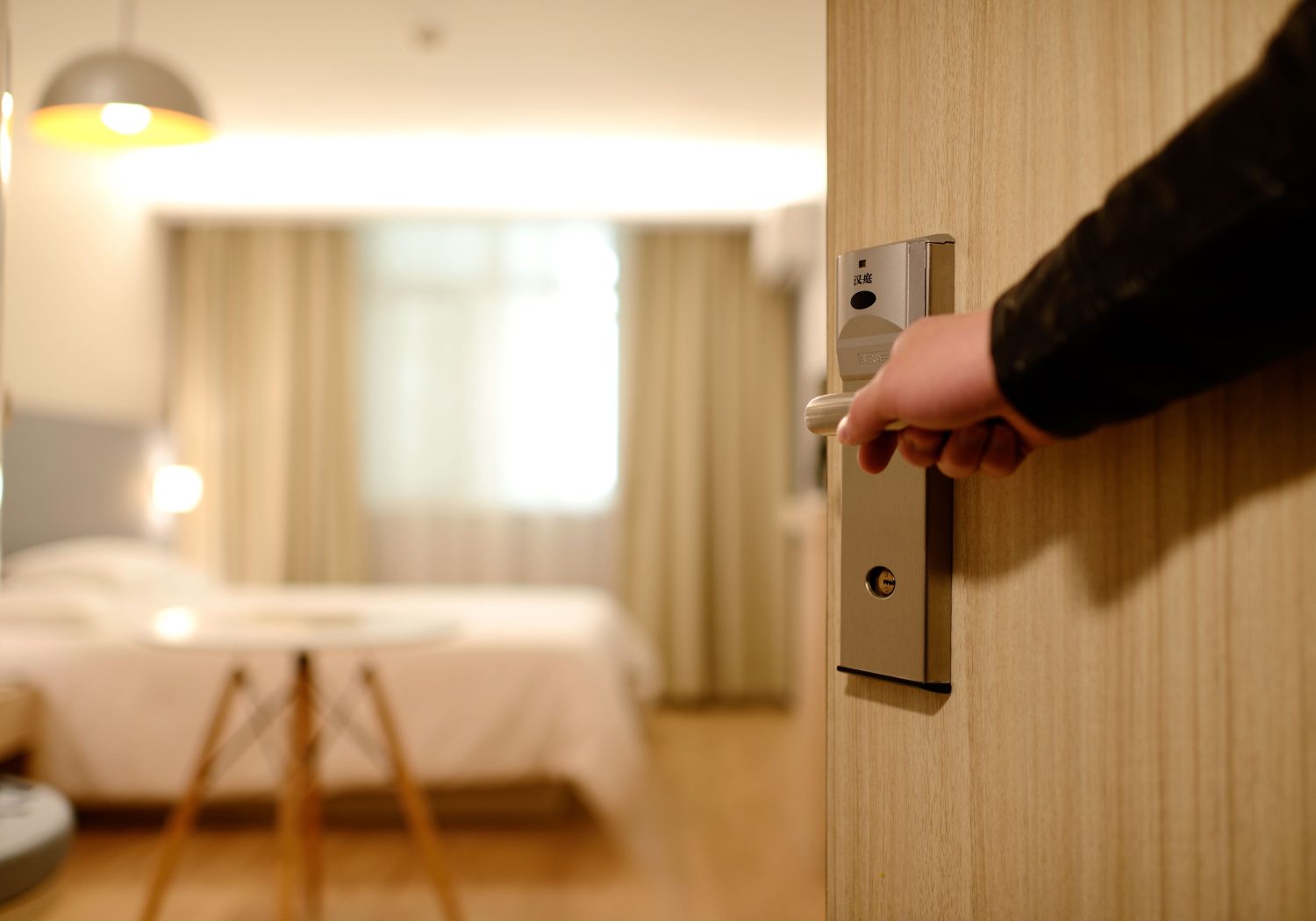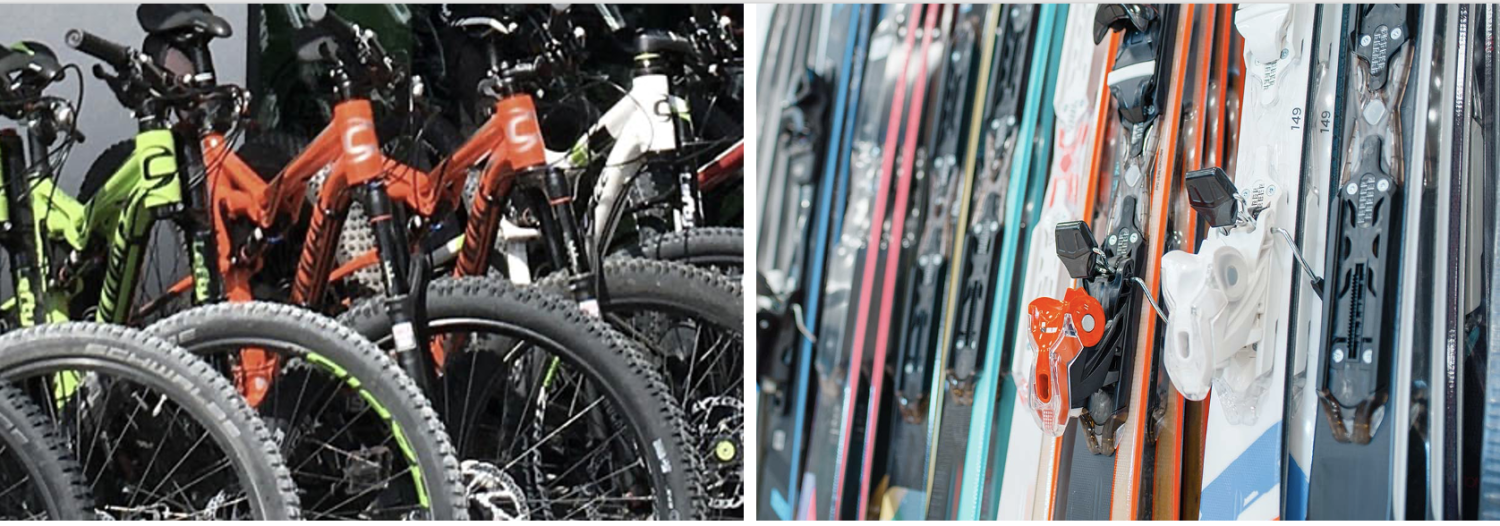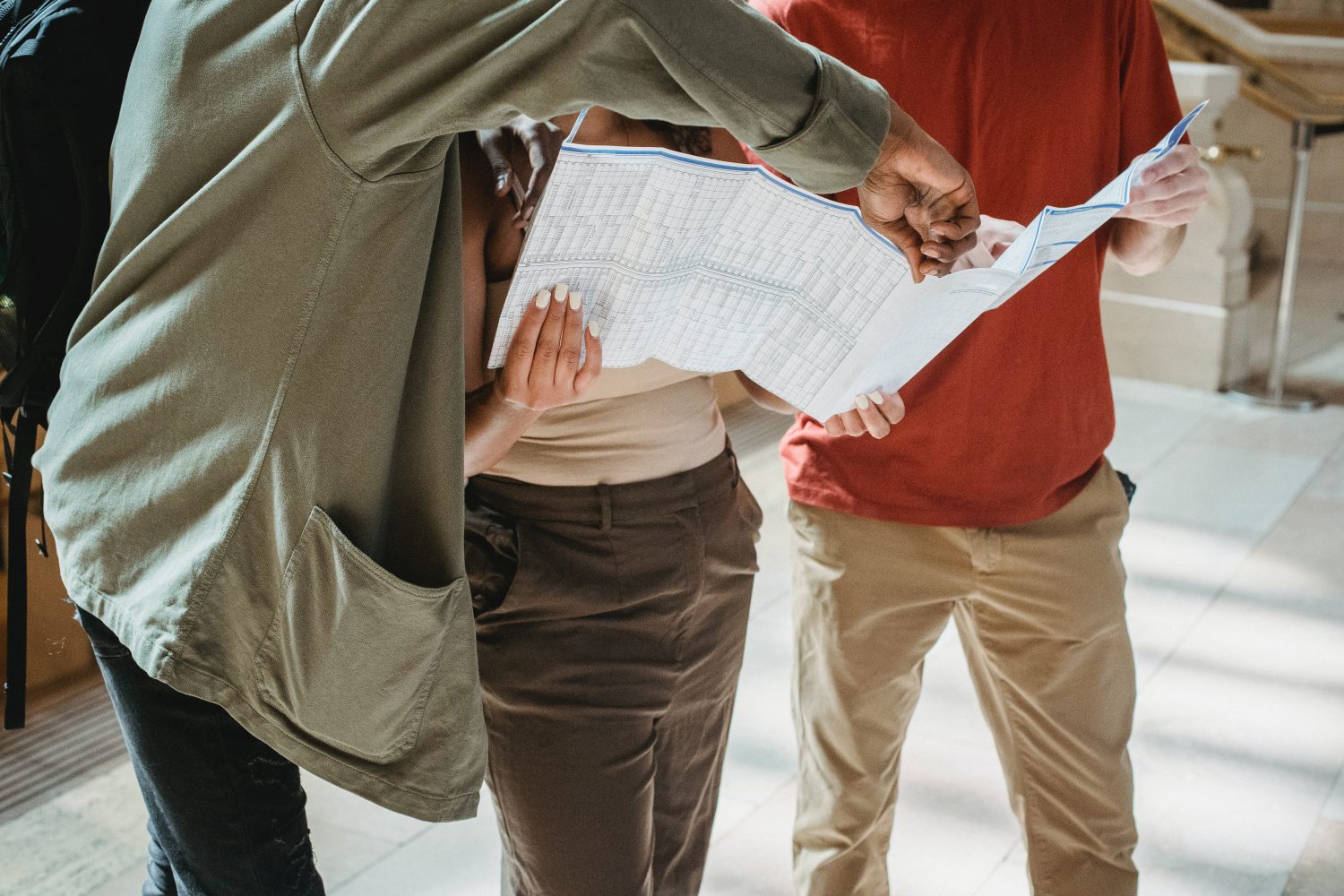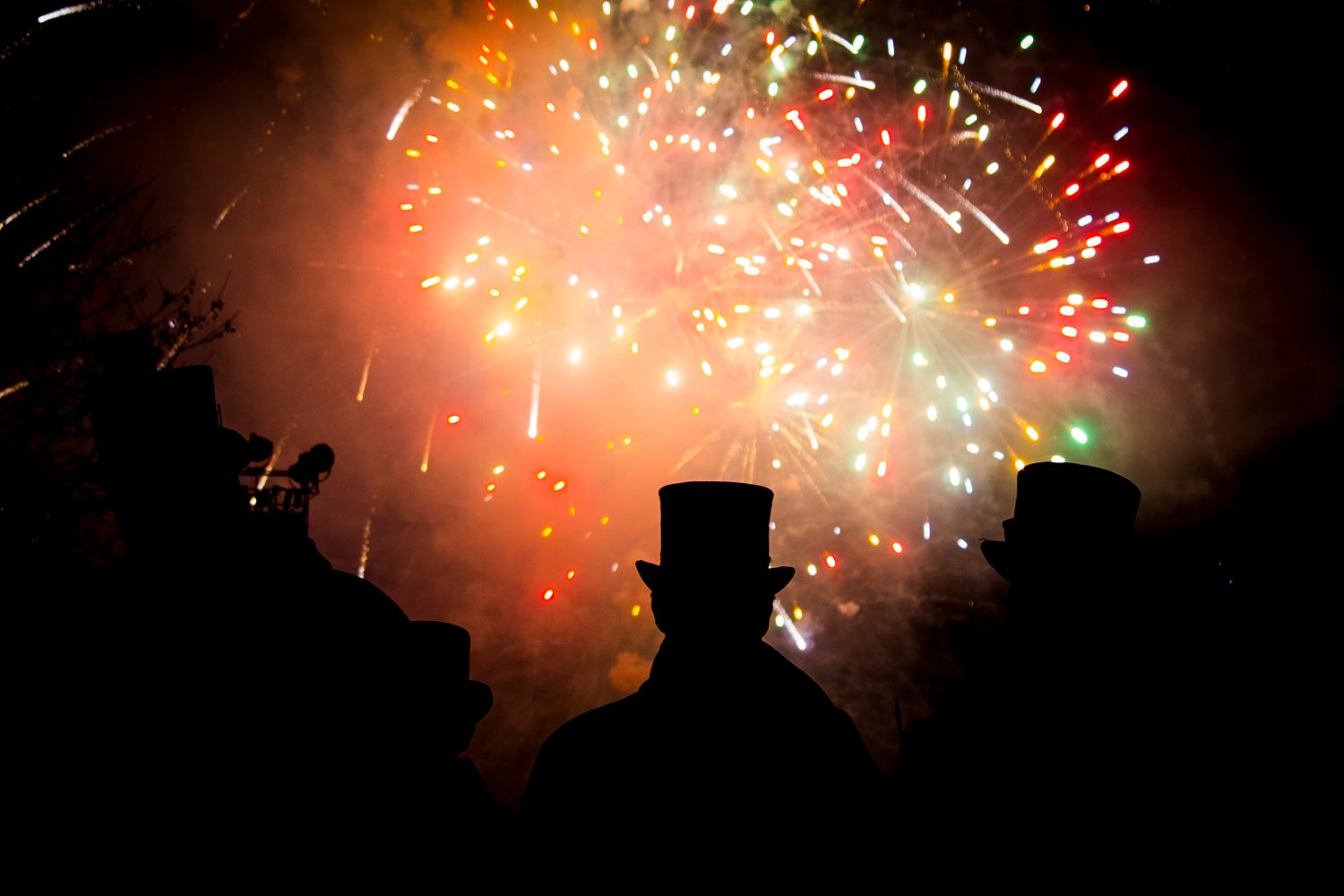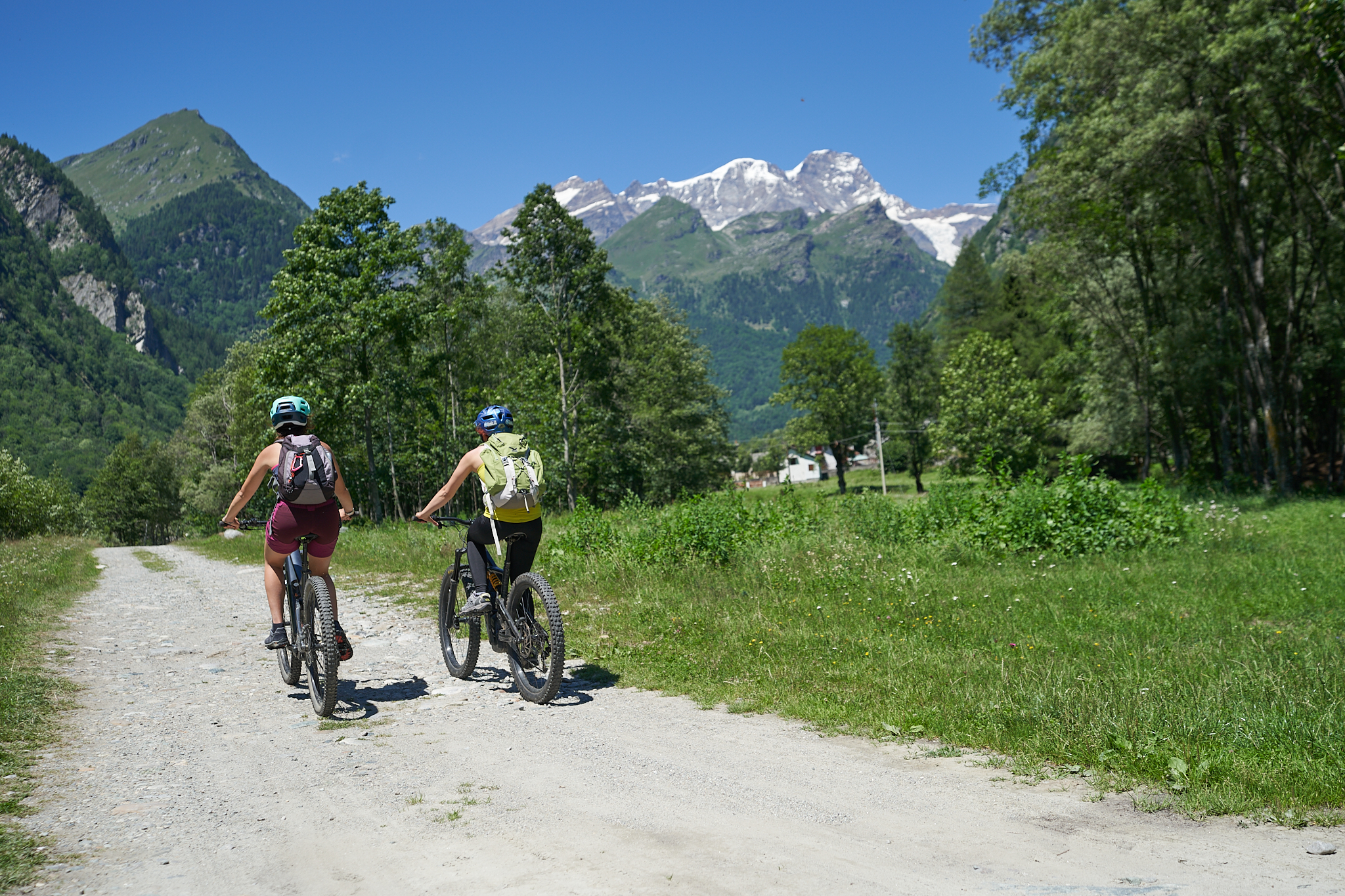
Bike path Balmuccia – Alagna Valsesia
Bike path Balmuccia -alagna valsesia
Route that crosses the length of Alta Valsesia, passing through the most relevant artistic and cultural sites in the area and arriving in the renowned Alagna, Walser Green Paradise
Difficulty: medium
Distance: 31 km
average duration: 2 hours
highest elevation: 1185 mt
lowest elevation: 553 mt
altitude difference: 772 mt
Route description
On Provincial Road 299 at the height of Balmuccia, you will meet the first yellow sign of the bicycle path. Turning right, continue following the yellow signs to the parking lot of the Balmuccia School or following the signs bearing the name Monrosa, to that of the Monrosa Canoe and Rafting Center.
From here starts an interesting trail that, once crossed the bridge over the Sesia, goes into the side of the mountain with a striking view of the canyon below. After overcoming some challenging gradients, it reaches the northernmost bridge that once crossed leads to the village of Scopetta reached by crossing SP 299. From here you travel about 400 meters on the Provincial Road, to follow on the Muro di Scopa bike path. At the height of Scopa, you cross the Provinciale again and then take the orographic left side of the Sesia again until you cross an iron bridge.
From here you recover altitude with a challenging drop through chestnut woods to descend again in the hamlet of Chioso reaching Scopello. A stretch of about 1 km. on asphalt road leads to the entrance of the wide path that, smoothly reaches Piode on the orographic right side of the Sesia. From here you reach Quare Bridge after passing a larch forest. After 100 m in the direction of Rassa, on the right you take a paved road that descends on the flat and crosses wide meadows and farmsteads for almost 2 km.
When you reach Campertogno, leave the Sesia on the right and climb on a paved road to the pretty hamlet of Rusa. From here you re-enter a path through the woods that leads to Mollia and continue with moderate gradient in a contour of lush vegetation to Otra Sesia. From this point take the generous dirt road recently made within a spectacular and impressive larch forest. After overcoming a couple of challenging but short gradients, you reach the Isolello bridge, which, with a steep, short cemented ramp, leads to the bridge that crosses the Sesia, returning to the orographic left side of the river.
Continuing on a wide and easy dirt road, in places covered with a grassy carpet, you reach the hamlet of Balma di Riva Valdobbia and from here continue without particular difficulty to the small bridge leading to the Circonvallazione. The sign on the left of the last yellow sign allows you to reach the center of Alagna.
For those who do not wish to travel the full 35 km, it is possible to access the route in the villages of Scopa, Scopello, Piode, Campertogno, Mollia, and Riva Valdobbia. Each access is marked by a yellow sign posted on SP 299. The distances of the individual sections measure an average of 5 km.
Other paths
recommended
Discover the bike trails Valsesia has to offer!
Bike and Mtb excursions through breathtaking views surrounded by the nature of Valsesia
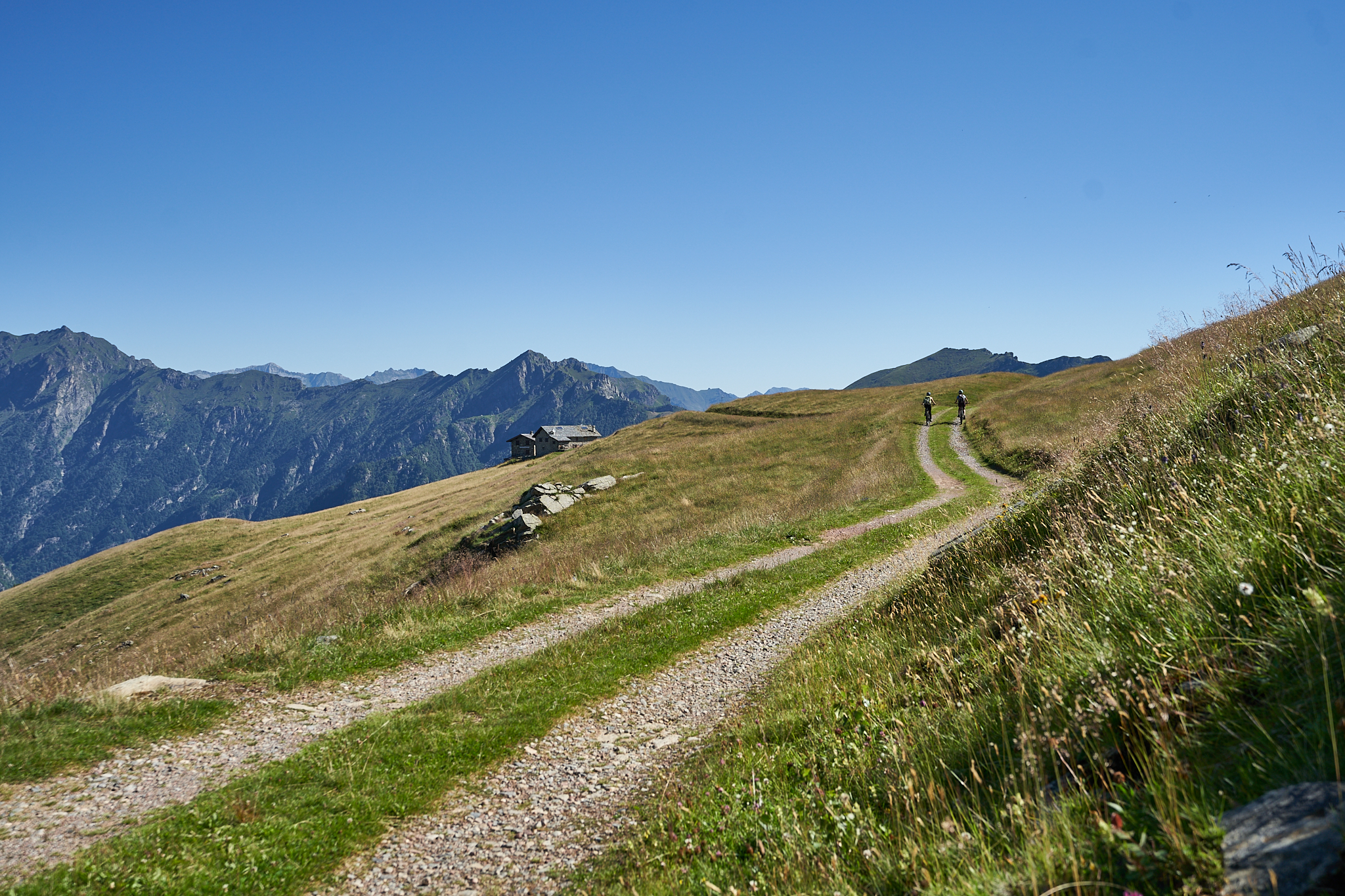
Bike path Scopello-Mera-Meggiana-Rassa-Scopello
Bike path Scopello-Mera-Meggiana-Rassa-Scopello
Difficulty: medium
Distance: 38 km
average duration: 3 hours
Departure altitude: 1441 mt
arrival altitude: 1440 mt
altitude difference: 360 mt
Route description
The bike path starts in front of the arrival of the Scopello-Mera chairlift, where a steep ramp leads to the foot of Mount Camparient.
A striking view of Monte Rosa guides the route, which with very small elevation changes crosses the entire Alpe di Mera among magnificent rhododendron and blueberry bushes to Colle d’Ovago, below Monte Ometto.
From here you continue at altitude without any particular difficulty until you reach first Alpe Meggiana, at the height of the charming Lake of Pizzo, then with moderate gradient Alpe Sorbella from where you descend with a dozen hairpin bends reaching the bridge that crosses the Sorba stream.
This stretch, although wide, requires for the slope and the bottom an adequate preparation. It is therefore recommended to get off the vehicle by accompanying it on foot.
The next section of the dirt road route leading to Rassa is of moderate gradient and presents no particular difficulty. On a paved road, you will come downhill in a few kilometers to the Quare bridge to rejoin itinerary No. 1. At this point it is possible to choose whether to continue toward Alagna or return to Scopello as the more classic route provides.
Other paths
recommended
Discover the bike trails that Valsesia has to offer!
Bike and Mtb tours through breathtaking views surrounded by the nature of Valsesia
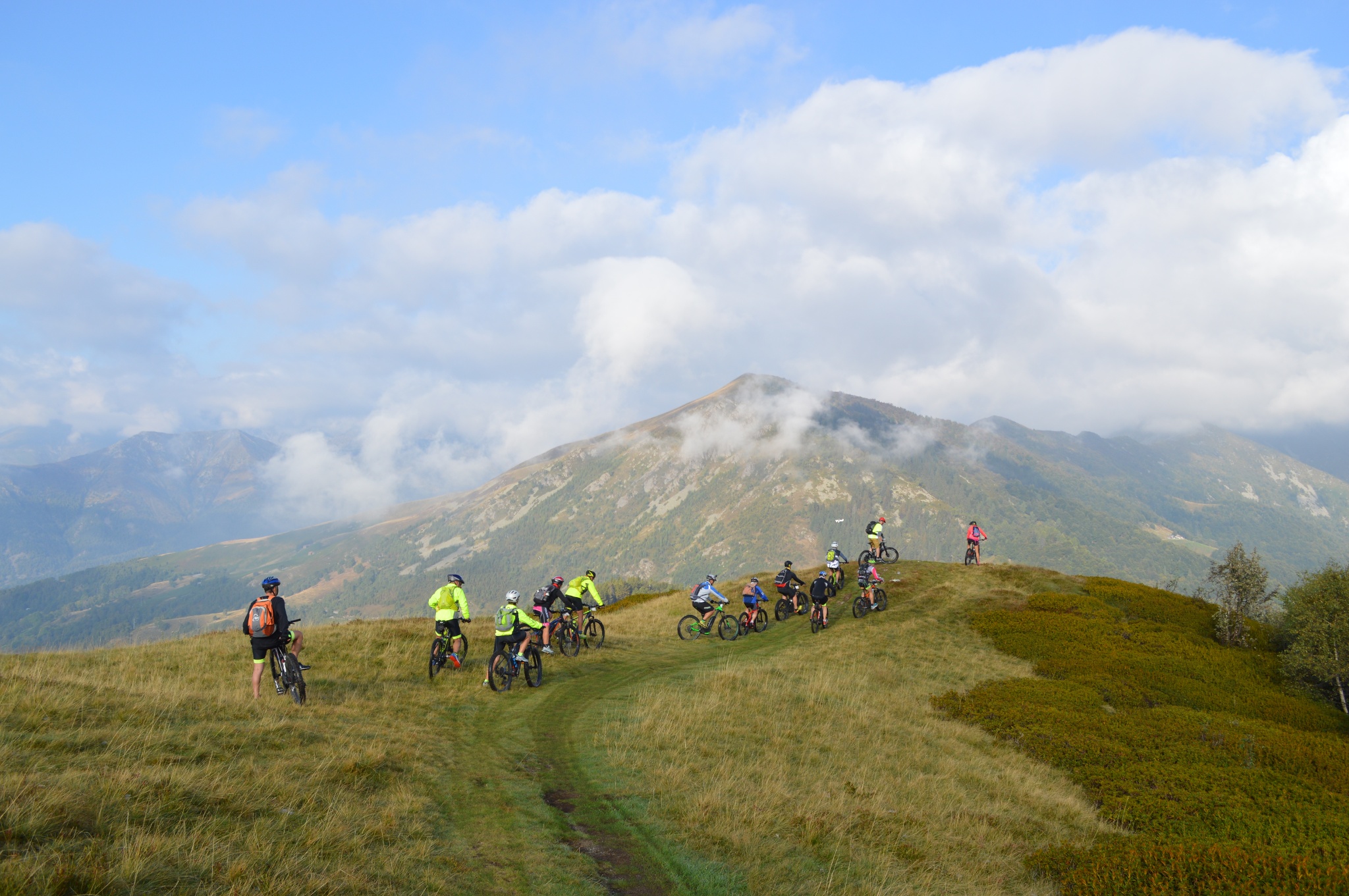
Bike path Alpe di Mera-Bielmonte
bike path Alpe di Mera-Bielmonte
Difficulty: medium
Distance: 20 km
average duration: 3 hours
departure altitude: 786 mt
arrival altitude: 831 mt
altitude difference: 360 mt
Route description
The uniqueness of this itinerary is definitely to unite, while remaining at altitude, two provinces of Piedmont. Riding it means exploring Valsesia but also Valsessera, and cycling in one of the most appreciated and well-known parks in the region, Oasi Zegna.
With a pleasant and scenic chairlift ride, you reach Alpe di Mera. From here descend along the carriage road for about 2 km. to the junction for Bocchetta della Boscarola.
Always follow the yellow sign with the stylized figure of a cyclist and the number 3 in a red field. A smooth dirt road leads up to the 1,423-meter elevation of the Col, with a gentle climb about 2.5 km long.
This is followed by a downhill section, to Dolca, and then an alternating 10-km-long climb and descent to the Fisherman’s House.
From this point the ascent resumes, for about 5 km, until the arrival in Bielmonte through Bocchetto Sessera.
The route runs mainly within the Zegna Oasis in the Alta Valsessera Regional Forest.
The bicycle path is wide and smooth the entire way. The apparently unimpressive duration should be calculated taking into account also the return, which if done in the saddle doubles km and hours indicated.
Other paths
recommended
Discover the bike trails Valsesia has to offer!
Bike and mountain bike tours among Valsesia’s breathtaking views.
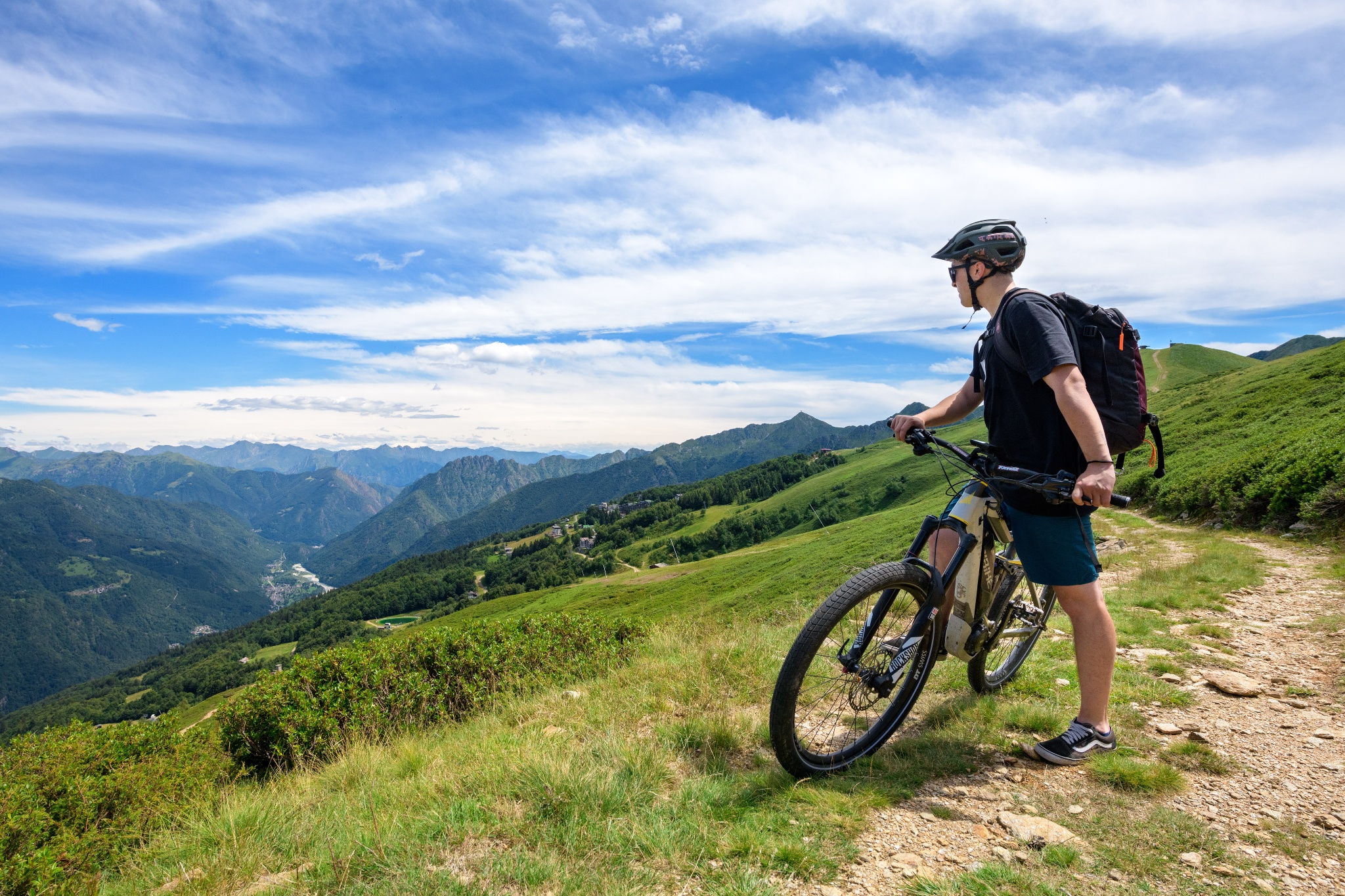
Mera bike path
Mera bike path
Loop bicycle and pedestrian route that crosses the most picturesque and panoramic points of Alpe di Mera, with views of Valsesia and Monte Rosa.
Difficulty: EASY
Distance: 4.3 km
average duration: 1.5 hours
LOWEST POINT: 1511 mt
HIGHEST POINT: 1648 mt
altitude difference: 136 mt
Route description
The trail begins in front of the Scopello-Mera chairlift arrival, where signs guide to Alpe Campo, initially on asphalt road through the village, then on dirt road. From here begins a gradual ascent on trail to Pian d’Asnin. At this point, route 2A meets number 2 (the Mera-Meggiana-Rassa bike path). Signs indicate to ride it in the opposite direction and then at the fork to turn left towards the village of Mera. This section is wide, scenic and almost flat until you reach Boschetto, where a quick descent brings you back to the starting point.
Directions to follow
Yellow signage with stylized cyclist and number 2a from the chairlift station to Alpe Campo and Pian d’Asnin. Yellow signage with stylized cyclist and number 2 from the Pian d’Asnin-cycleway 2 Mera-Meggiana-Rassa intersection (follow the directions in the opposite direction from that indicated by the arrows).
Info e contatti utili
To reach the start of the route take the Valsesia SP 299 to Scopello, where you can park your car for free in the Piazzale Seggiovie and take the chairlift up to Mera on opening days (see https://www.alpedimera.it/).
Alternatively, you can reach Mera by car from Scopello (9 km). High-altitude parking lots for a fee.
Other paths
recommended
Discover the bike trails Valsesia has to offer!
Bike and mountain bike tours among Valsesia’s breathtaking views.
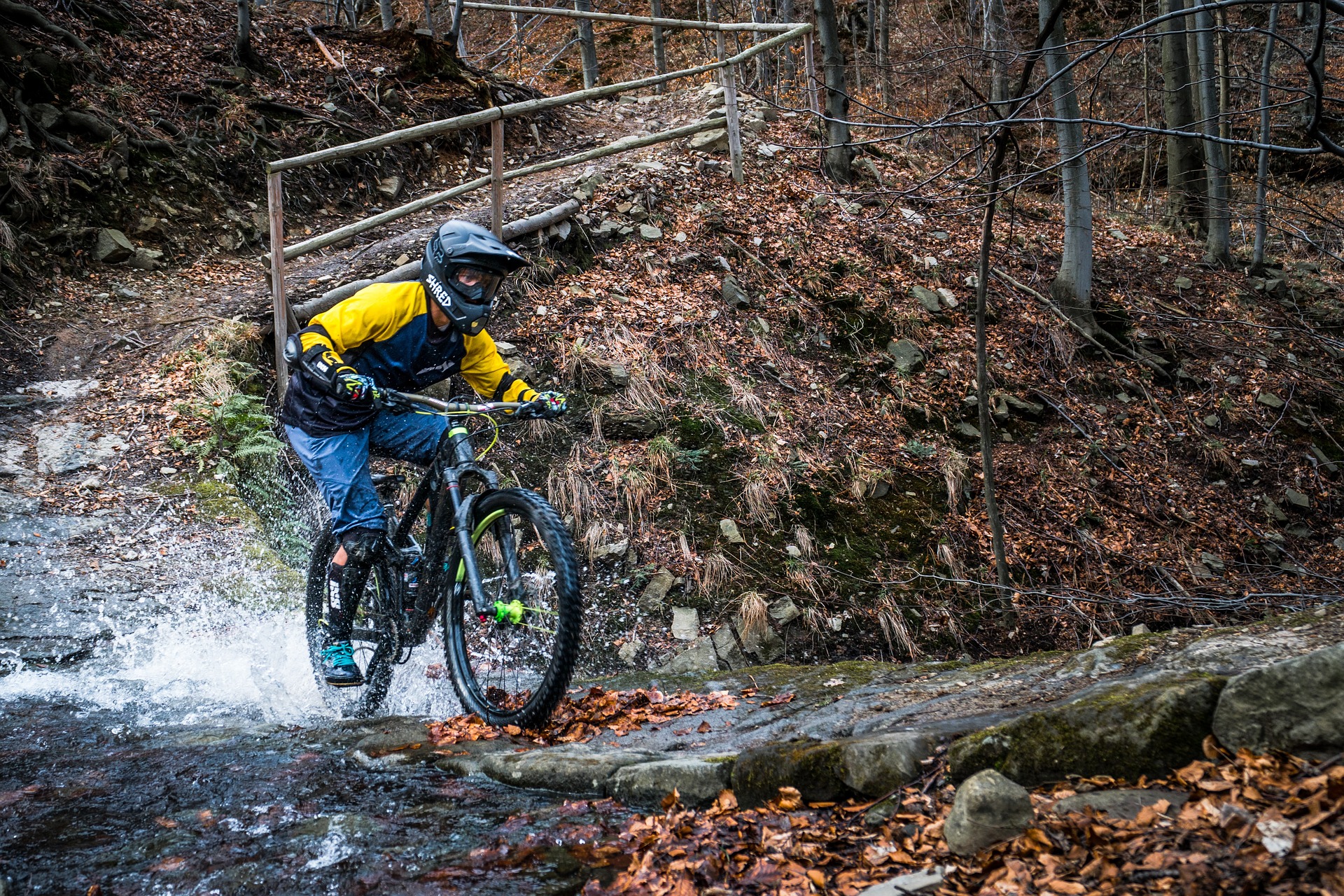
MTB routes of Serravalle Sesia
MTB routes of Serravalle Sesia
Route Description
Climbs on sometimes steep dirt roads, adrenaline-fueled descents and lots of fun: this and much more in the woods of Serravalle Sesia!
With your mountain bike you can climb to gain the descent, ride among friends, meet new places and confront each other on the descent to see who is the fastest. The climbs serve mainly as transfers to reach the start of the adrenaline-filled descents: trails of varying difficulty that between jumps, turns and descents are ideal for those looking for fun and speed.
These trails for mtb downhill enthusiasts are known as the “Sentieri E-Gravity Team“.
Enduro is the ideal discipline for the all-around biker who wants a means to do everything, who likes long rides on his bike, who does not necessarily want to use mechanized ascents, and who most of all loves downhill competition.
Numerous trails are constantly cleaned and monitored so that everyone can enjoy smooth and fast descents.
If you do not have adequate training, the use of an E-Bike is recommended.
Other routes
recommended
Discover the bike trails that the Province of Vercelli has to offer!
Bike and Mtb excursions through breathtaking views immersed in the nature of Vercelli and Valsesia
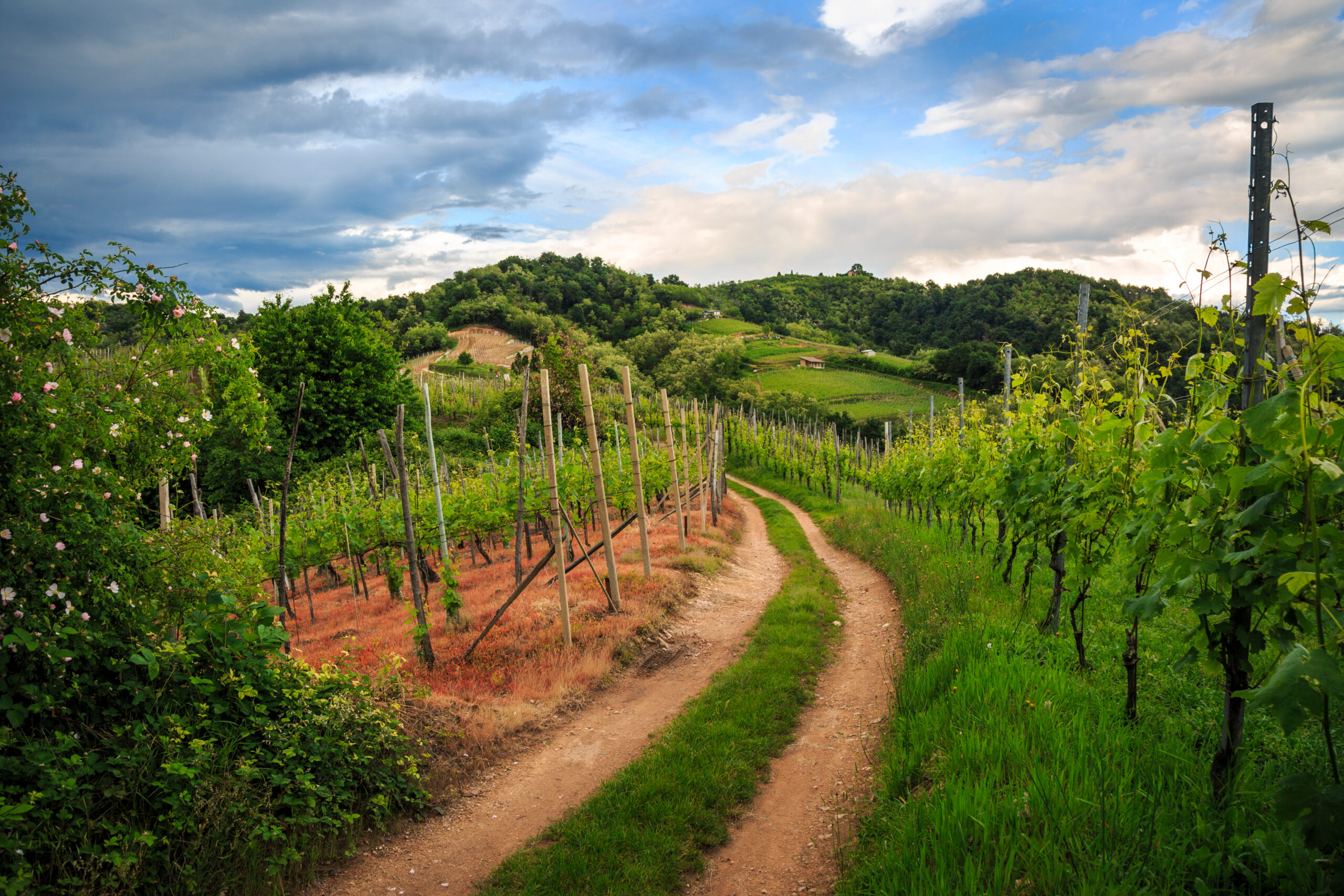
Mtb among the vineyards of Gattinara
Mtb among the vineyards of Gattinara
Route Description.
From the center of the pretty town of Gattinara, the mtb ride begins among the vineyards of its beautiful hills. The asphalt climb will take you to a scenic first stop: the Castelle Tower, with its Giant Bench. Continuing along a mostly unpaved road, you will reach the Castle of San Lorenzo, the highest point in Gattinara, from which you can enjoy an exceptional view of the mountains, the hills and the city.
From the castle you continue pedaling toward the Nervi vineyards and the panoramic terrace of the same name. From here you can then return to Gattinara by following the road that descends to the foot of the vineyards
Along your route you cannot fail to notice three beautiful art installations depicting characteristic chalices, placed at scenic points: the Vie dei Calici.
The hills of Gattinara, in addition to offering beautiful views and trails among the vineyards for relaxation, also provide a good adrenaline rush: just between the woods and vineyards there are numerous trails dedicated to enduro, for those who are looking for a little speed. These trails for fans of mtb descents, are known as “I Sentieri dei Gatti”, The Cat Trails.
Riding your bike, get ready to ride on uphill roads through the vineyards that connect to the start of the different trails that, with adrenaline-fueled curves and descents, will take you back to the foothills.
If you do not have adequate training, the use of an E-Bike is recommended.
Other paths
recommended
Discover the bike trails that the Province of Vercelli has to offer!
Bike and Mtb excursions through breathtaking views immersed in the nature of Vercelli and Valsesia
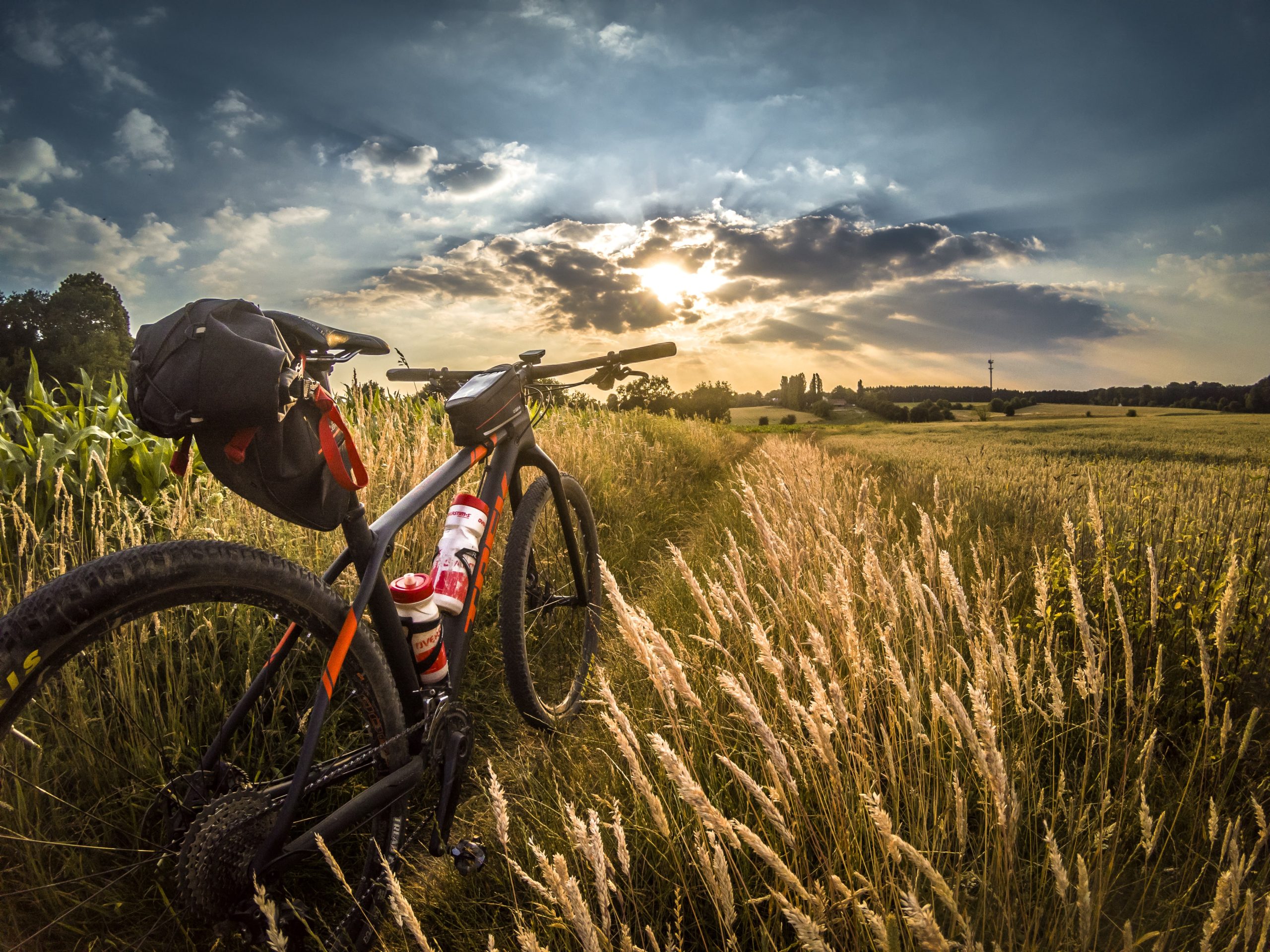
cyclable Rice paddies n.4 – on the rice roads
Vercelli – Pizzarrosto – Pezzana – Caresana – Pezzana – Prarolo – Vercelli
An ideal route to discover an area of authentic beauty surrounding the city of Vercelli: the Squared Sea, a pleasant loop itinerary dicirca 40 km that thoroughly explores the Vercelli Rice Fields area.
Difficulty: EASY
Distance: 44 km
average duration: 3 hours
departure altitude: 92 mt
arrival altitude: 94 mt
altitude difference: 2 mt
Route description
From Vercelli station, follow the bike lanes toward Corso Italia to Rione Cappuccini, then continue in the direction of Prarolo, skirting the bank of the Sesia River among poplar groves and rice paddies. At the fork, head toward Palestro to reach the famous “locks,” a series of jumps with which the Sesia River overcomes a drop of about 10 meters. After passing the hamlet of Pizzarrosto, continue to the village of Pezzana. Passing first Tenuta Valgioja and then Cascina Bellincontro, you reach Caresana, famous for the centuries-old tradition of the “Running of the Oxen,” shared with the neighboring municipality of Asigliano, which finds its origins in 1236 and whose origin is now attributed to the stage of return to the village that followed the procession in honor of St. George. Also noteworthy are the majestic parish church of San Matteo and the Church of San Giorgio with the chapel of the SS. Annunziata. Returning toward Pezzana, we
continue on to Prarolo, home to one of the best-preserved castles in the Vercelli area dating back to the end of the 14th century. Built by the Benedictines of the Abbey of Santo Stefano di Vercelli, it is characterized by a cylindrical tower and a quadrangular one with conspicuous machicolations. Also worth mentioning is the Parish Church of Our Lady of the Assumption, rebuilt in 1628 and enlarged in the early 20th century, which contains an 18th-century canvas originally painted by Beaumont. Particular then is the public fountain with its incessant jet, also known as the “chita mai.” To return to Vercelli, retrace the bike paths back to the starting point.
Recommended period: spring and autumn
Type of terrain: dirt and asphalt
Other paths
recommended
The Vercelli area by bicycle has so much to offer!
Explore all the pleasant loop routes and set out to discover the Vercelli rice lands on two wheels.

cyclable rice paddies n. 5 – the grange itinerary
Vercelli – Casalrosso – Lucedio – Montarolo – Fontanetto Po – Palazzolo V.se – Trino – Saletta – Asigliano – Vercelli
An ideal route to discover an area of authentic beauty surrounding the city of Vercelli: a loop itinerary of about 50 km that leads to the heart of the Grange Vercellesi area, which, thanks to the work of Cistercian monks, saw the first rice cultivation in Italy in the 15th century.
Difficulty: medium
Distance: 52 km
Average duration: 5-6 hours
D- : 135 mt
D+ : 135 mt
altitude difference: 0 mt
Route Description
From the Vercelli station, follow the Viale Garibaldi bike path, Via Paggi and Via Trino to leave the city in the direction of Crescentino, passing through the village of Casalrosso. Then continue on the Strada delle Grange (lit. Granaries), which takes its name from the ancient housing units that arose on uncultivated and forest-covered land on which the Cistercian monks carried out reclamation works to turn them into productive areas. The Grange rise out of the water like small islands, and it is to one of the most fascinating Grange that one arrives just past the crossroads to Darola: the Principality of Lucedio and the Abbey of Santa Maria built in 1123. Honorable mention deserves the Principality, since in the first half of the 15th century it was the Cistercians of Lucedio who first introduced rice cultivation to Italy. Having passed the sanctuary of Madonna delle Vigne and its sinister atmosphere, we continue to the village of Montarolo, skirting the Bosco delle Sorti forest of the Partecipanza di Trino,
a rare example of a lowland forest, which gives us a previously unseen image of the Po Valley in days gone by. When you then reach Montarolo, you can shorten the route by 25 km by continuing in the direction of Trino, or continue to Crescentino by rejoining the Strada delle Grange and You deviate by following the signs for San Genuario and the Nature Reserve of the marsh of the same name. Once through the village, you reach the hamlet of Monticelli, where you follow in the direction of Trino, and then continue following the signs for Asigliano V.se. After crossing the town of Asigliano, continue in the direction of Vercelli to return to the starting point.
Recommended period: spring and autumn
Type of terrain: dirt and asphalt
Other paths
recommended
The Vercelli area by bicycle has so much to offer!
Explore all the pleasant loop routes and set out to discover the Vercelli rice lands on two wheels.

cyclable rice paddies n. 6 – castles, rice fields and lakes
Vercelli – Olcenengo – Vettignè – Santhià – Cavaglià – Lago di Viverone – Tronzano – Crova – Vercelli
An ideal route to discover an area of authentic beauty around Vercelli: a ring route of about 80 km that explores through the Vercelli rice fields, approaches the Via Francigena that reaches Santhià and leads up to the waters of Lake Viverone.
Difficulty: medium
Distance: 77 km
Average duration: 6 hours
D+: 306 mt
D-: 306 mt
altitude difference: 0 mt
Route Description
From the Vercelli train station, take the Corso Gastaldi overpass, Via Donato, and follow for the small town of Olcenengo. After crossing the village, continue in the direction of Casanova Elvo, until you reach the hamlet of Vettignè, from which you can see the silhouette of the eponymous castle of medieval origin looming over the rice fields. The hamlet of Vettignè, built in the 15th century at the crossroads between the Via Svizzera and the Via Francigena, retains traces of that historical period in its name: in fact, the toponym of Vettignè derives from vectigal, that is, the duty required of wayfarers to obtain the right of passage. Resuming the road, we soon reach Santhià: the town is worth a stop if only to admire the Collegiate Church of Sant’Agata, inside which is preserved a well-known polyptych by Giovenone, with its 12th-century Roman bell tower. From the first spring sunshine to mild autumn days, it is then not uncommon to catch a glimpse of some pilgrims venturing along the Via Francigena that leads from Canterbury to Rome, a total of more than 3,000 km. On the Santhià bypass, follow the signs for
Biella to Cavaglià where you follow the direction to Viverone. From a distance you can make out Roppolo, which, with its castle and church, is also a key stop on the Via Francigena. The route then continues overlooking Lake Viverone, the third largest in Piedmont shared between the provinces of Turin, Biella and Vercelli, and skirting it for 5 km reaches Alice Castello, then continues in the direction of Tronzano V.se. In this stretch the Naviglio di Ivrea, Depretis Canal and Cavour Canal, essential sources for rice cultivation in the Vercelli area, intersect. From here, you pass through the villages of Crova and Salasco, with its lake a destination for fishing enthusiasts, and then rejoin the SP11 at Cascine Strà, from where you then follow the signs back to the starting point.
Recommended period: spring and autumn
Type of terrain: dirt and asphalt
Other paths
recommended
The Vercelli area by bicycle has so much to offer!
Explore all the pleasant loop routes and set out to discover the Vercelli rice lands on two wheels.

cyclable rice paddies N. 7 – from rice lands to wine lands
VERCELLI- OLCENENGO-CASANOVA ELVO-BALOCCO ROVASENDA-GATTINARA-GHEMME-FARA NOVARESE-SIZZANO-SAN NAZZARO SESIA-VILLATA-VERCELLI
Difficulty: medium
Distance: 17 km
average duration: 2 hours
departure altitude: 1411 mt
arrival altitude: 1741 mt
altitude difference: 360 mt
Route Description
From the Vercelli train station, take the Corso Gastaldi overpass and follow to Olcenengo and Casanova Elvo, where you can admire the pre-12th-century castle and the majestic Church of S. Martino in the main square. Follow to Formigliana, taking some time to observe the Monte Rosa Massif that frames the ancient farmsteads along the way. Crossing the Cervo stream, you continue on to Balocco, where you can admire the 15th-century castle and the Church of San Michele, inside which a triptych by Giovenone is preserved; you then pass through the villages of San Giacomo Vercellese and Rovasenda, respectively, to continue on to Gattinara. A stop here is a must, to visit the town and its surroundings, on whose hills the DOCG wine of the same name is produced. The town center features important historic-artistic buildings, such as the Parish of St. Peter, dating from the early medieval period, and the Castelle Tower, which dominates the town from the surrounding hills.
We continue the route by crossing the Sesia River and reaching Romagnano Sesia, passing to the left orographic bank, entering the territory of the Novara hills. Here in succession we encounter Ghemme, Sizzano and Fara, a hilly region producing excellent DOC wines. Approaching the Sesia again, we pass Carpignano and Landiona, to arrive at the towns of Recetto and San Nazzaro Sesia, which present, respectively, the historic village with its ancient castle and 13th-century walls and the Abbey of SS. Nazario and Celso, an example of medieval fortified abbeys, dating back to the 11th century. From here it continues past the towns of Villata and Borgo Vercelli, returning to the city of Vercelli.
Recommended period: spring and autumn
Terrain type: asphalt
Other paths
recommended
The Vercelli area by bicycle has so much to offer!
Explore all the pleasant loop routes and set out to discover the Vercelli rice lands on two wheels.
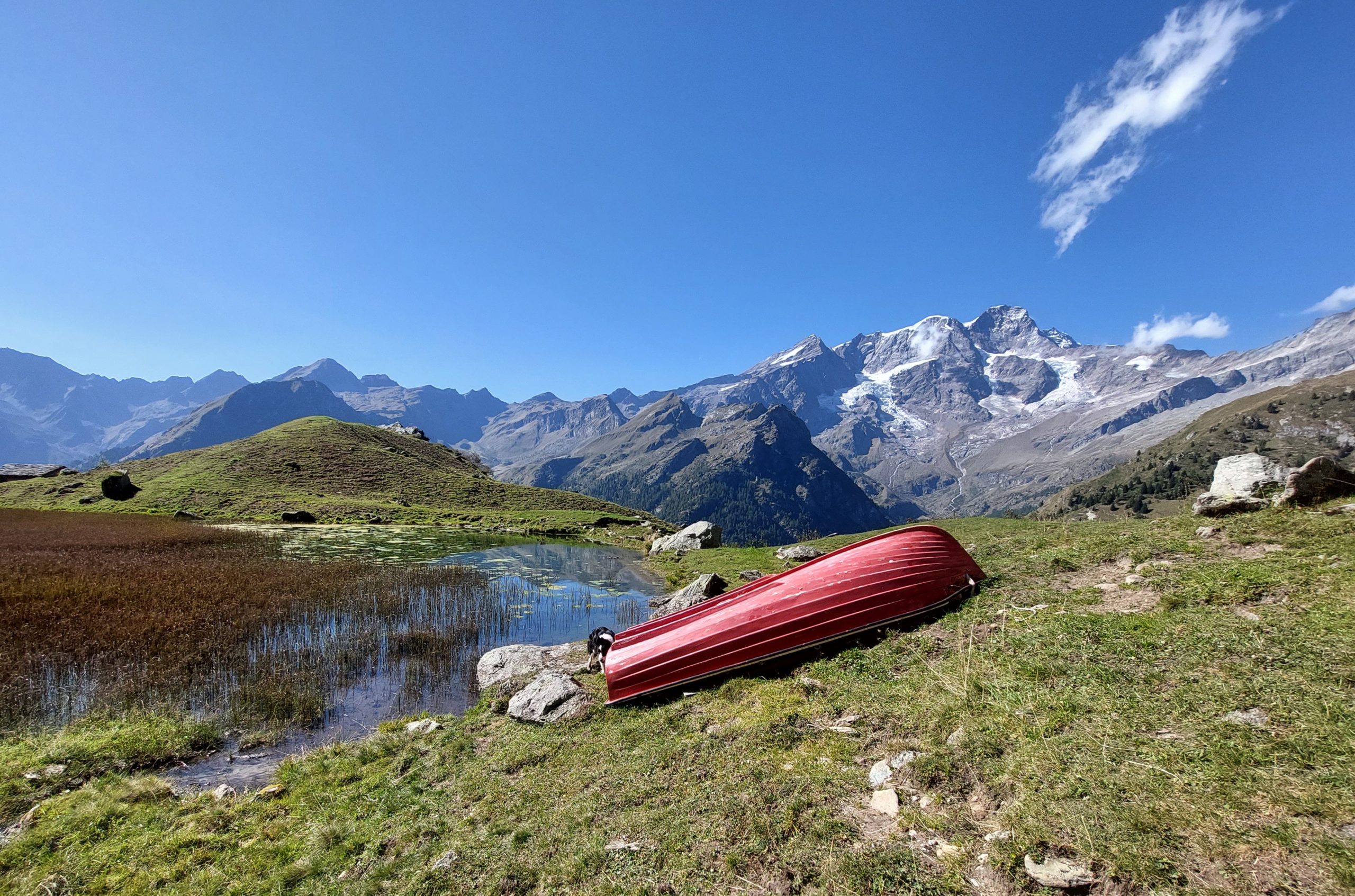
ALAGNA, Fraz. Pedemonte – Alpe Campo – Alpe Sattal/Bocchetta della Moanda
trail n. 209 Pedemonte – Alpe Campo – Alpe Sattal/Bocchetta della Moanda
A long and scenic trail that allows the traverse from Alagna to Rima and is also the normal route to climb Mount Tagliaferro from Alagna
Difficulty: medium
Difficulty: medium
departure altitude: 1242 mt
arrival altitude: Bocchetta della moanda 2422 mt
altitude difference: 1180 mt
Route description
From the village of Alagna, follow the carriage road that runs alongside the Sesia River until you cross the bridge to the hamlet of Pedemonte on the right, where at the end of the paved road you will find a parking lot for cars.
Just beyond the parking lot, take path 209, which approaches the hamlet of Ronchi (Im Rong) and crosses Wittwosma Inferiore. After crossing the Rio Campo after a short ascent, you reach the pasture of Upper Wittwosma (30 min). You then pass between a group of huts and climb up a steep path past the Rio Campo Waterfall (Kamp Zuba), thus reaching the depression of this watercourse. At this point you may notice a sign indicating on the right the path leading to the Alpe Sattal hut, 2097m: from Pedemonte in about 2 hours you can reach this beautiful alp where you will find the Alpe Sattal hut, a mountain B&B with Monte Rosa view.
If, on the other hand, you continue from the stream on the left, you take the path that leads to Alpe Campo inferiore (Undre Kamp), 1846m. A few steps further on you will reach the Upper Campo Alp (Oubre Kamp), 1923m (1.30 – 2h). This alpine pasture is situated in the basin dominated on the left by Mount Tagliaferro and on the right by Cima Carnera. The view of Monte Rosa is breathtaking as it is reflected in the waters of the small Piono Wasser lake.
One of the cottages in this ancient alpine pasture houses the social hut of the Alagna CAI Subsection.
Beyond the stream is a small chapel dedicated to St. Hubert, whose door is the original one of the first Margherita Hut built in 1893 on Punta Gnifetti.
For those wishing to reach the Bocchetta della Moanda, the itinerary continues by crossing the plateau in the direction of the slope of the southwest ridge of Tagliaferro, passing on the right bank of the small lake and passing some rivulets. The trail thus resumes climbing in a steep zig-zag pattern. Bending to the right and walking the last sections among steep grassy pastures, you reach the Bocchetta della Moanda, 2422m (total 3h30).
On the opposite slope you can descend to Rima S. Giuseppe with itinerary 320. If you choose to ascend on the left and head north on trails partly equipped with ropes, you can climb Monte Tagliaferro, 2964m.
Other routes
recommended
Valsesia has a lot to offer to hiking enthusiasts
Suggestive trails surrounded by nature that offer breathtaking views: be surprised by the beautiful mountains of Valsesia!
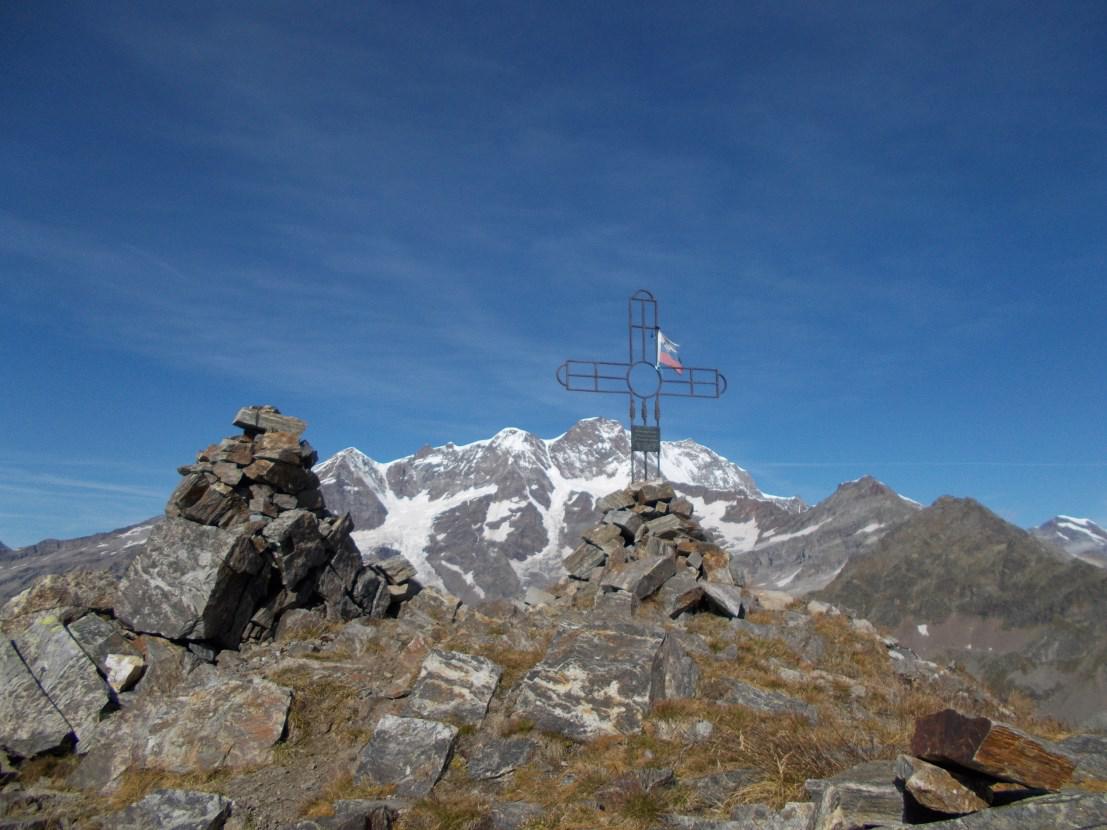
ALAGNA, Fraz. Pedemonte – Colle Mud
trail n. 208 Pedemonte – Colle Mud
This route has great importance as a traverse, but it is also the approach trail to what is the most classic of Valsesia’s mountaineering climbs, “The North Ridge of Mount Tagliaferro”
difficulty: medium
average duration: 2-3 hours
departure altitude: 1242 mt
arrival altitude: 2324 mt
altitude difference: 1802 mt
Route description
From the village of Alagna, follow the carriage road that runs alongside the Sesia River until you cross the bridge to the hamlet of Pedemonte on the right, where at the end of the paved road you will find a parking lot for cars.
Just beyond the parking lot, take path 209, which runs along the left bank of the Mud stream to the wooden bridge. Then cross over to the other bank and follow the staircase mule track. After passing a balm, you cross a small stream and then continue on a nice path that after about an hour’s walk reaches the cottages of Z’Ise hus (Iron House), 1627m. Now continue on the right side of the stream to pass by Alpe Mud di qua, 1887m, consisting of four huts that are just over a hundred meters from Alpe Mud di là located on the west side of the trail.
Keeping always on the mountainside, crossing three streams, we reach the cottages of Alpe Venghi, 2042m (2h). Past this alpine pasture, you enter the part of the valley dominated by Mount Tagliaferro.
The trail here passes between the ruins of two mountain huts and then climbs to reach the cottages of Alpe Superiore or Mud di Sopra 2264m, repurposed and turned into Rifugio Ferioli.
A short climb of moderate gradient leads to the Mud Pass, 2324m (total 2h30). The pass is symbolized by two cairns erected with stones: one is on the Alagna side, the other on the Rima side.
The pass can also be reached by following path 296 from the village of Rima, in Val Sermenza (find out the route).
Those who want to try to climb up to the extreme tip of the trail, i.e., the Corno Mud, can try to follow the unmarked (and not on the GPX track) trail for experienced hikers that starts right from the Colle Mud. The fairly steep trail consists of several switchbacks to the summit, marked only by a few stone cairns along the way. In about an hour and a half you reach the summit, symbolized by a metal cross placed on top of the Corno: behind it you have a direct and surreal view of Monte Rosa.
Other routes
recommended
Valsesia has a lot to offer to hiking enthusiasts
Suggestive trails surrounded by nature that offer breathtaking views: be surprised by the beautiful mountains of Valsesia!

ALAGNA – Val d’Otro
trail n. 203 val d’otro
Difficulty: medium – easy
average duration: 1 – 2 hours
departure altitude: 1191 mt
arrival altitude: 1664 mt
altitude difference: 510 mt
Route description
This trail is one of the classic and most beloved hiking trails in Valsesia. Reach the alpine landscape of Otro, of great cultural and naturalistic value, and enjoy the scenic beauty that this beautiful Valley can offer!
The route starts from the center of Alagna, at the Alagna Union. From here, continue to the left on the paved path that leads to the hamlet of Riale Superiore and, having crossed the carriage road, the trail begins: the Olterstiga, or Otro climb. Shortly after passing the Stiga cottage and leaving the path down to the Otro Boiler (Olter Chessi) on the left, you come to a characteristic fountain (located at the fork with path 203a to Dsender and Tailly Lakes).
Ascend to the right, pass a chapel and with numerous zig zags arrive at the beautiful Conca di Otro, in front of the beautiful little church of Follu, 1664m (total about 1h30).
This is the first of the characteristic villages on the Otro plateau. Short paths branch off the mule track linking the villages of Follu, Felleretsch, Ciucche, Dorf, Scarpia and Weng. The Zar Senni hut, immediately after the chapel, offers hospitality in the summer season and during many weekends.Continuing through the villages and pastures, you can reach Alpe Pianmisura.
Other routes
recommended
Valsesia has a lot to offer to hiking enthusiasts
Suggestive trails surrounded by nature that offer breathtaking views: be surprised by the beautiful mountains of Valsesia!
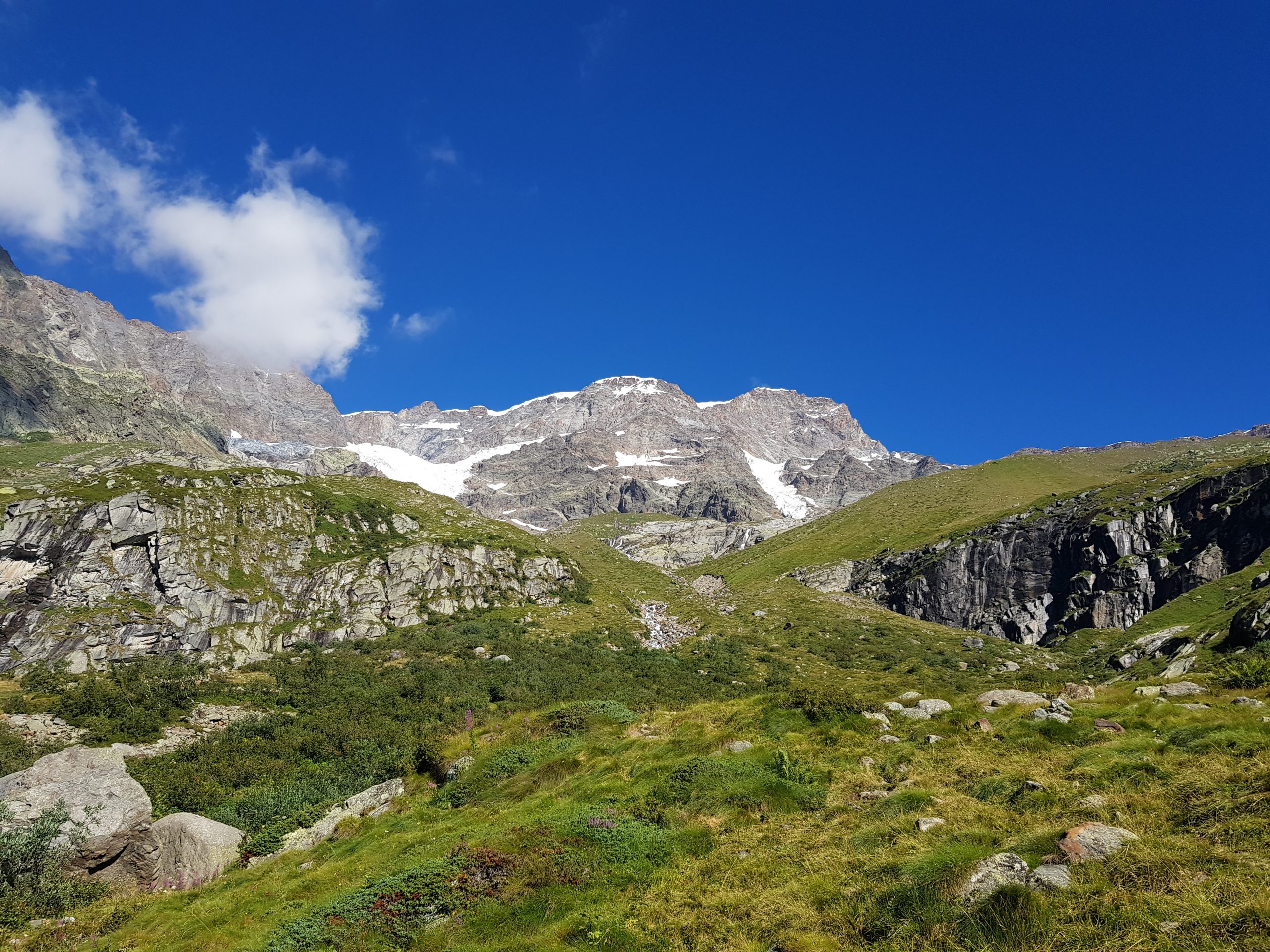
ALAGNA – Alpe Vigne Superiore, Rif. Barba Ferrero
trail n. 207 Alagna – Alpe Vigne Superiore, Rif. Barba Ferrero
Difficulty: medium
average duration: 2 – 3 hours
starting elevation:
wold parking 1278 mt
arrival altitude: 2247 mt
altitude difference: 969 mt
Route description
To reach the beginning of the itinerary, follow the road from the village of Alagna to the square at Wold, 1278m, where you can park your car. (In the summer months you can use the Wold – Acqua Bianca shuttle service for a fee).
Those who proceed on foot, either by choice or during the periods when there is no shuttle service, follow the paved road not open to traffic and, a little further on, can choose between two options: take the path on the left bank of the Sesia, No. 206 which arrives behind the Pastore Refuge in about 1h and connects to Alpe Pile by crossing the small wooden bridge just beyond the refuge on the right and going up the path, or continue always on the paved road until you reach the Acqua Bianca Waterfall in about 45min (arrival of the summer shuttle), from where first a mule track and then a steep staircase starts, reaching Alpe Pile (above the Pastore Refuge).
From here you head to Alpe Fum Bitz (1606m, which hosts the Park House and Botanical Garden) and pass it, following trail 207. The trail continues up and down, then picks up on uneasy ground, crosses over small bridges the Flua Grobe and the Rio Vigne, near which the traditional “Flower Rosary Procession” starts.
Passing near the waterfall of the last stream, it continues in hairpin bends on the moraine, bypasses a rocky drop and climbs gently eastward towards Alpe Vigne Superiore, 2247m, where the Barba Ferrero Refuge is located, the arrival point of the hiking section (total 2 -3 hours), which can also be reached with itineraries 207d and 207e, coming from the Turlo way.
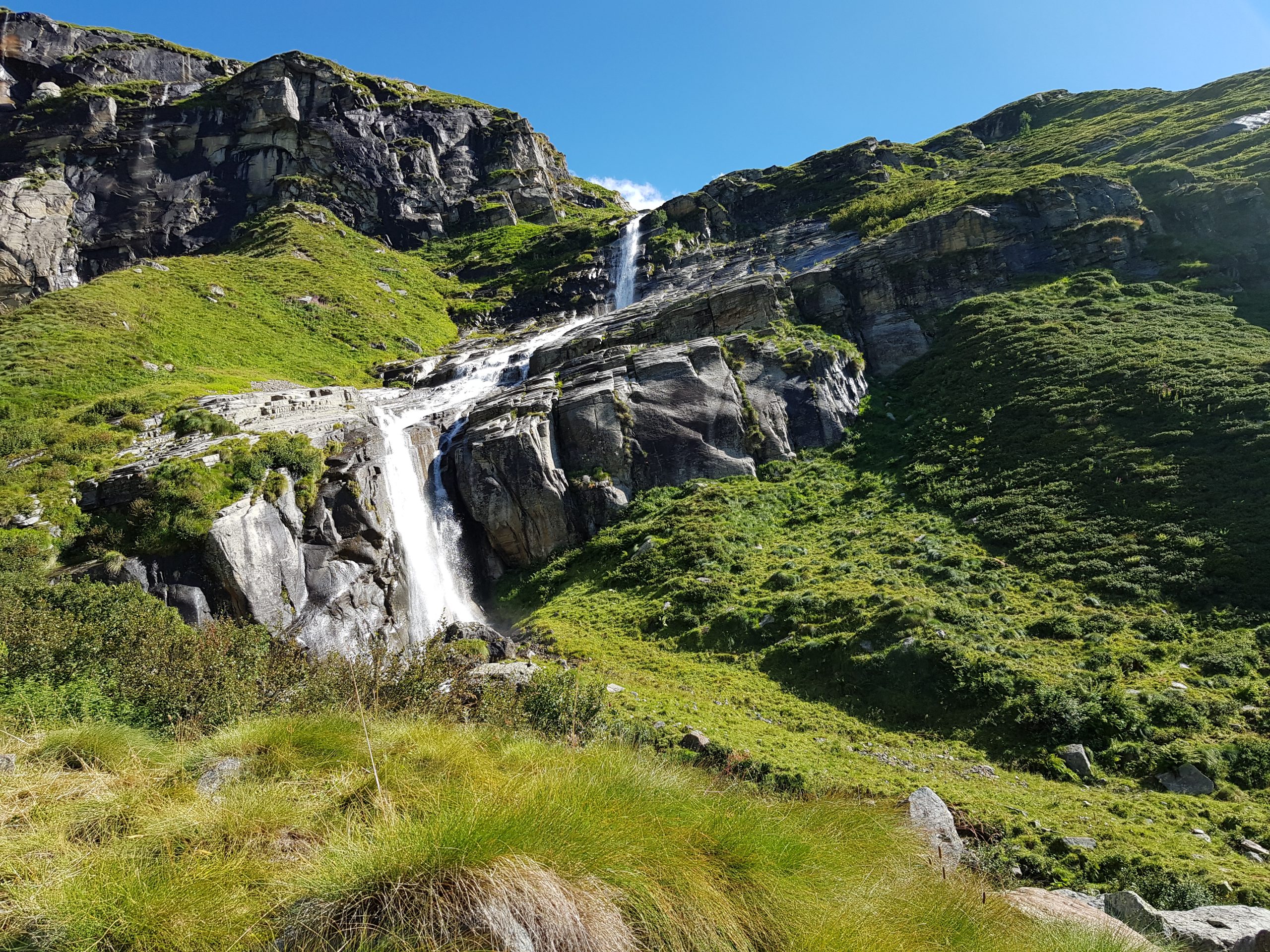
Other routes
recommended
Valsesia has a lot to offer to hiking enthusiasts
Suggestive trails surrounded by nature that offer breathtaking views: be surprised by the beautiful mountains of Valsesia!
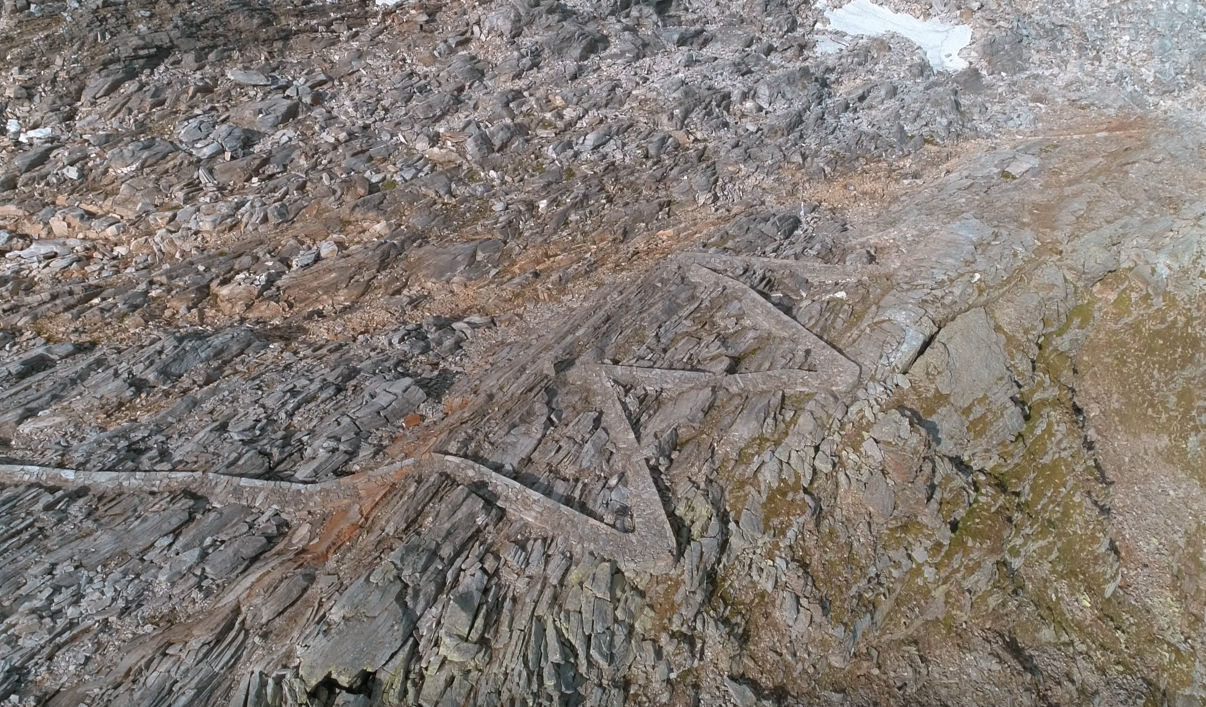
ALAGNA – Colle del Turlo
trail n. 207a alagna, piazzale dell’Acqua Bianca – Colle del Turlo
difficulty: medium
average duration: 3-4 hours
departure altitude: 1495 mt
arrival altitude: 2738 mt
altitude difference: 1243 mt
Route description
To reach the beginning of the itinerary, you need to follow the road from the village of Alagna to the Wold square, 1278m, where you can park your car. You start walking on the paved road precluded to traffic, until you reach in about an hour the square of the Acqua Bianca Waterfall, 1495m (in this section in the summer months you can use the shuttle service Wold – Acqua Bianca for a fee).).
The itinerary starts a few tens of meters after the Acqua Bianca square, continuing to follow route 207 (which leads from Alagna to the Barba Ferrero hut at Alpe Vigne).
At the first turnoff you can admire the Brunnenwasser Waterfall, and continue to climb to an elevation of about 1650m where several trails cross, including on the left path 207f that descends to Alpe Fum Bitz, the Park House, and the Alpe Pile Shepherd Hut, 1575m.
To begin the Turlo road, trail 207a crosses the Testanera Brook and passes through a larch grove, then first touching on Alpe Im Mittlentheil di là, 1928m, and then passing upstream to Alpe in d’Ekku and Alpe Faller.
Continue on the old mule track, passing just short of Alpe Grafenboden and the Turlo lakes, and finally, crossing the old road in several places, reach Turlo Pass, 2738m (in about 3 hours from the Acqua Bianca waterfall).
The path up to the Turlo Pass was in the past a particularly important place of passage, both for trade and for migratory flows: in the 14th century the Walser settlers from Macugnaga passed through here, and they founded the first settlements on the territory of Alagna. It is in fact a historic military road transformed into a mule track in the 1930s by the Alpini.
Other routes
recommended
Valsesia has a lot to offer to hiking enthusiasts
Suggestive trails surrounded by nature that offer breathtaking views: be surprised by the beautiful mountains of Valsesia!
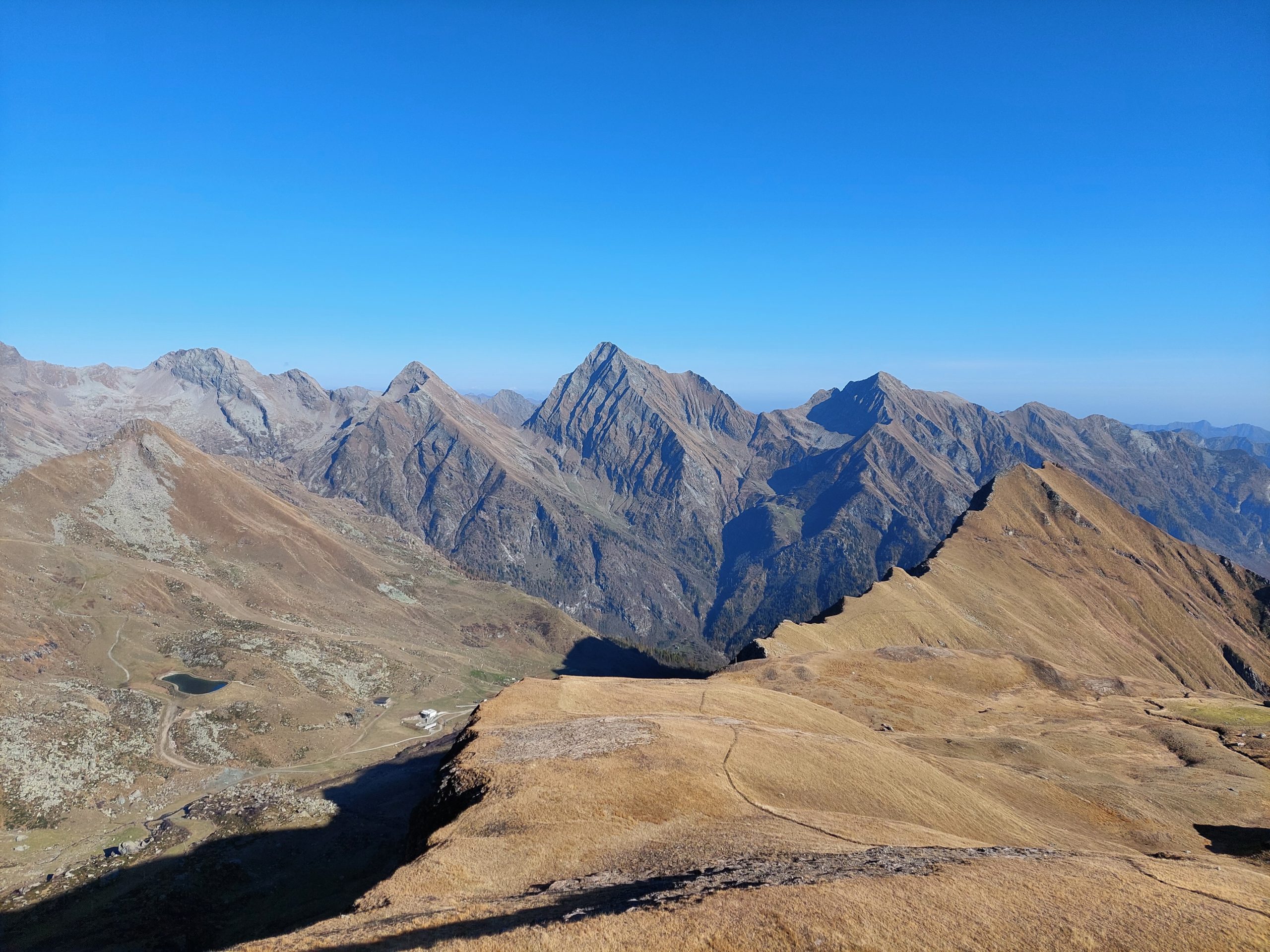
ALAGNA – Alpe Pianmisura – Passo Zube
trail n. 203b Alpe Pianmisura – Passo Zube
difficulty: medium
average duration: 2-3 hours
starting altitude:
alpe pianmisura 1835 mt
arrival altitude: 2872 mt
altitude difference: 1037 mt
Route description
Alpe Pianmisura Piccola can be reached from Alagna, 1191m, by the Vallone d’Otro following trail 203 in an hour and a half, with an elevation gain of 644m.
From the alpine pasture of Pianmisura Piccola, 1835m, keep to the right to follow the Rio Foric, leaving just above, opposite, Pianmisura Grande, 1848m.
It climbs by taking a few hairpin bends on the path, steep in places, that runs northward through the valley. At the top, a series of more comfortable slopes lead to Foric Pass, 2432m (in about 2 hours), a panoramic point directly overlooking Monte Rosa and the Vallone d’Olen (reached by trail 205b).
From the pass continue on trail 203b on the left, and leave Alpe Zube, 2515m, behind at a short distance. Climb a steep grassy hump and go around a second rocky drop to the left, then rise over the vast meadows of the slope.
Aim for the pass and enter the gully, which gradually becomes scree, until you reach Zube Pass, 2872m (total about 3h30).
The pass, high over the basin of the homonymous name, leads into the Lys Valley and joins the path from Gressoney up to Col d’Olen, bypassing Corno Rosso,3023m (reachable in about 30/45 minutes, EE – for experienced hikers).
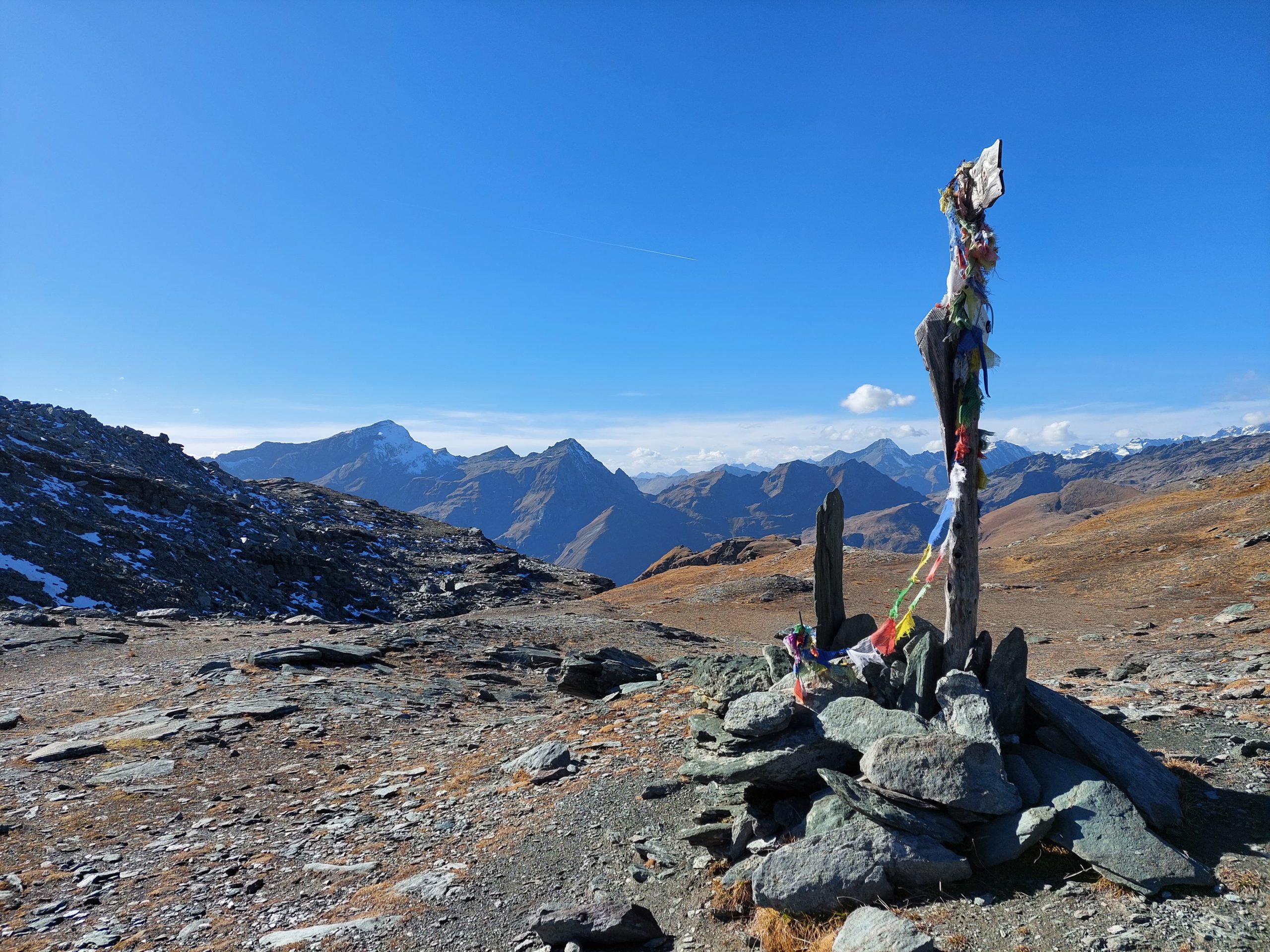
Other routes
recommended
Valsesia has a lot to offer to hiking enthusiasts
Suggestive trails surrounded by nature that offer breathtaking views: be surprised by the beautiful mountains of Valsesia!
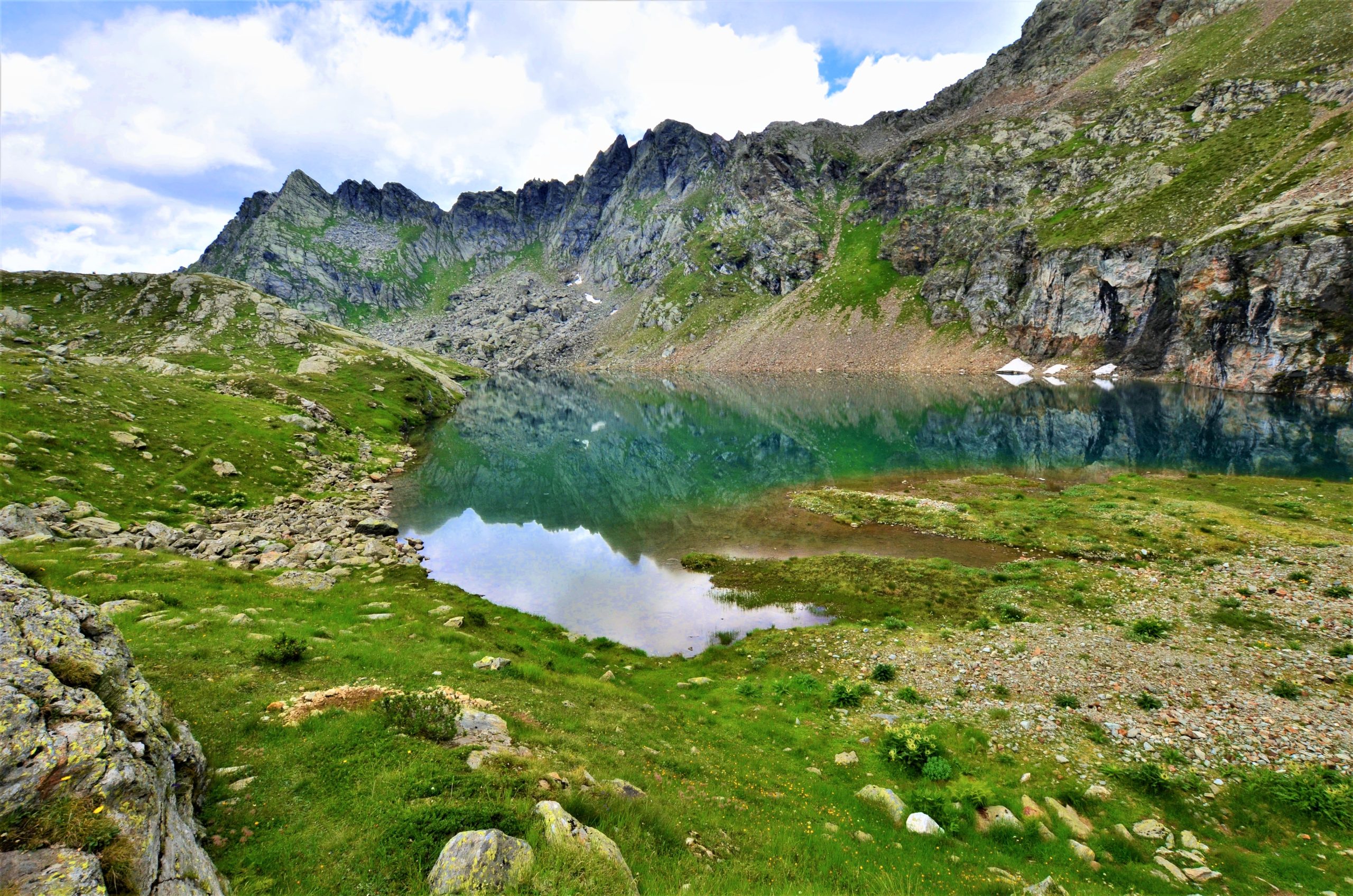
ALAGNA – Laghi Tailly
trail n. 203a Alagna – Laghi Tailly
difficulty: medium
average duration: 2-3 hours
departure altitude: 1191 mt
arrival altitude: 2428 mt
altitude difference: 1237 mt
Route description
The route begins in the center of Alagna, at the Alagna Union. From here, continue left on the paved path that leads to the hamlet of Riale Superiore and, having crossed the carriage road, the trail begins: the Olterstiga, that is, the ascent of Otro. Shortly after passing the Stiga cottage and leaving the path down to the Caldaia di Otro (Olter Chessi) on the left, you will reach a characteristic fountain at an altitude of 1420m in about 30min.
At this point you follow the path that continues to the left, leaving the path 203 that climbs into Val d’Otro, along the comfortable and shady mule track goes flat into the valley. You cross the Otro stream on a wooden bridge and slightly uphill through the woods you reach a grassy clearing. Crossing the Rio Taill, you arrive at the pasture of Alpe Dsender (Undre Dsender), 1625m.
The trail turns left and steeply uphill, reaching the plateau of Pian dell’Asino, 1829m. The trail continues steeply again and then reaches Alpe Tailly, 2065m.
Continue behind the alpine pasture and follow a long diagonal between rocks and short grassy shelves until you arrive on the side of a hump that closes the basin of the lakes, at the bottom of which is the picturesque Lower Tailly Lake, 2382m.
Rounding the hump on the right, you reach Upper Tailly Lake, 2428m (total about 2h30), which is smaller and shallower
The Tailly Lakes can also be reached by taking the Alta Via Tullio Vidoni (AVTV), a route for experienced hikers: to the right the Alta Via heads to Bivacco Ravelli, 2503m (route 203e).
Other routes
recommended
Valsesia has a lot to offer to hiking enthusiasts
Suggestive trails surrounded by nature that offer breathtaking views: be surprised by the beautiful mountains of Valsesia!
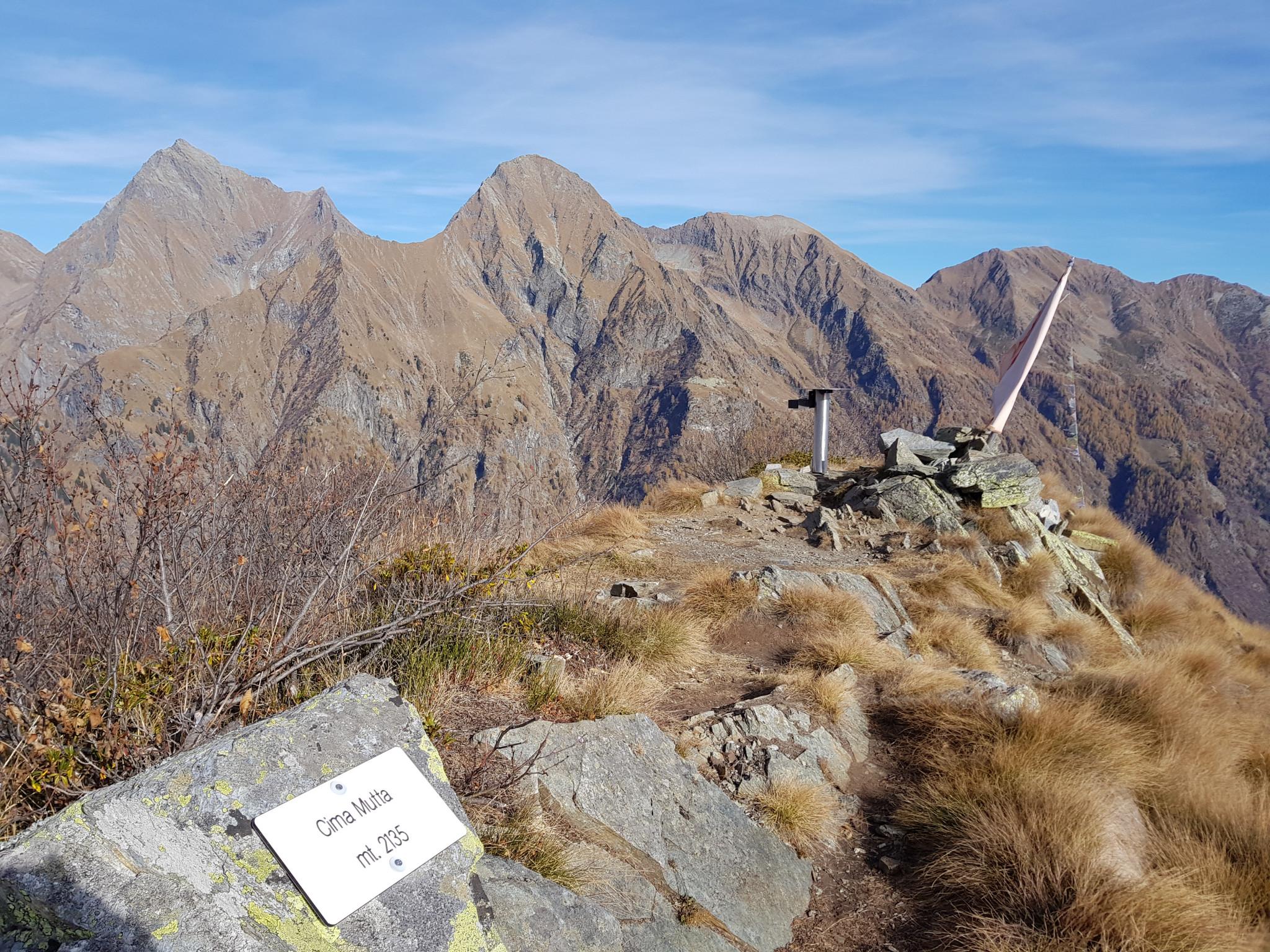
RIVA VALDOBBIA, Fraz. Ca’ di Janzo – Cima Mutta
trail n. 210 Ca’ di Janzo – Cima Mutta
difficulty: medium
average duration: 1-2 hours
departure altitude: 1354 mt
arrival altitude: 2135 mt
altitude difference: 781 mt
Route description
This trail leads to the first peak of the ridge that divides Val Vogna and Val d’Otro. The view from the peak is scenic and interesting: it directly overlooks Monte Rosa , the village of Alagna and the beautiful Val d’Otro.
From Riva Valdobbia follow the Val Vogna road to the square of the hamlet Cà di Janzo, 1354m (where you can park your car).
Here take trail No. 210, which climbs to the right flanking a stream, then zigzagging up through the woods until you reach the cottages of Selveglio, 1550m: this section is part of the Val Vogna Art Trail.
It then climbs to Alpe Poesi, 1715m, and Alpe Piane, 1832m (in about 1h/1h30).
From this alpine pasture, the trail turns right, crossing the valley that gains the summit of Cima Mutta, 2135m (in total about 2 hours), from which there is a splendid view of the Otro basin, Alagna and Monte Rosa that dominates the horizon.

Other routes
recommended
Valsesia has a lot to offer to hiking enthusiasts
Suggestive trails surrounded by nature that offer breathtaking views: be surprised by the beautiful mountains of Valsesia!
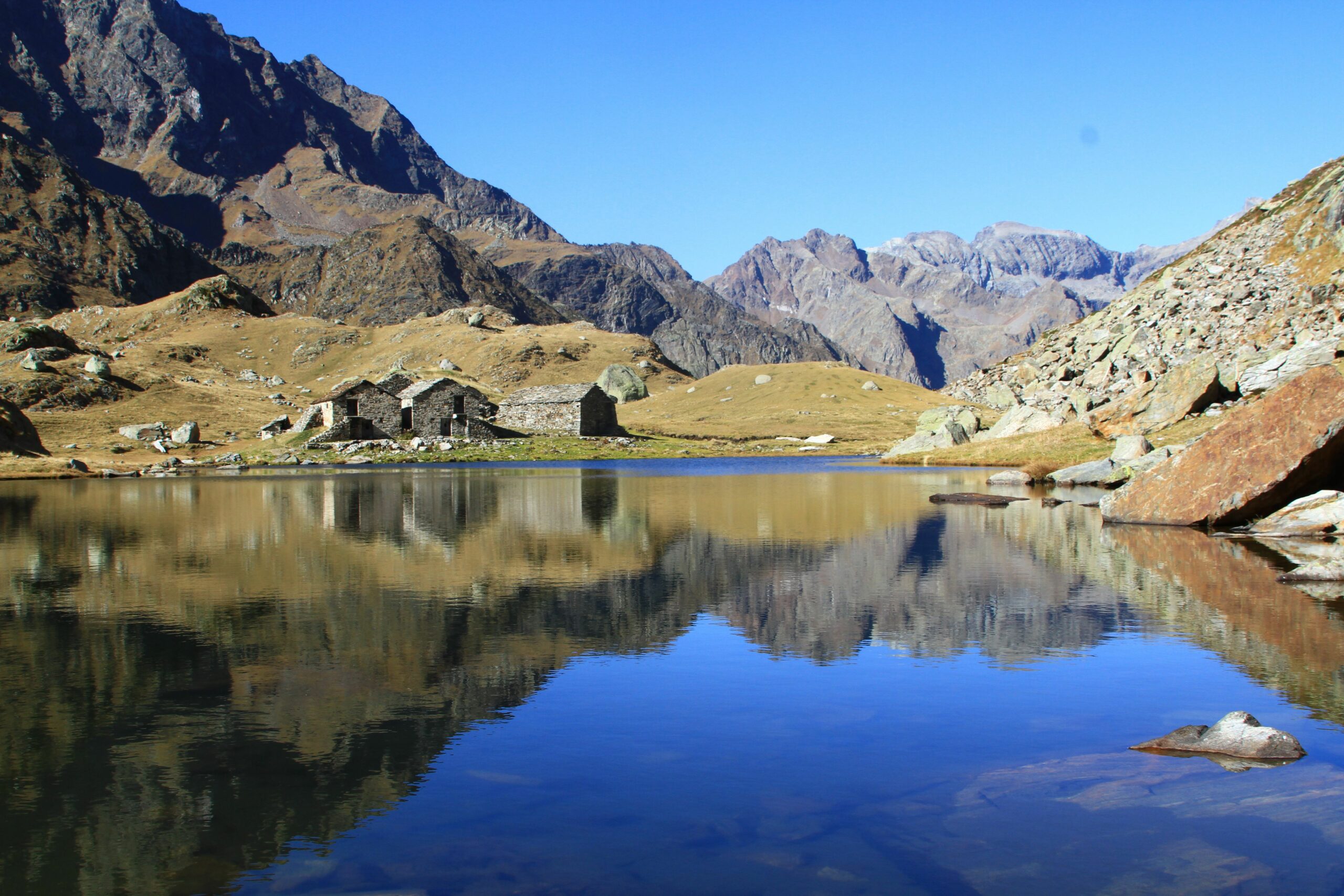
RIVA VALDOBBIA, Fraz. Sant’Antonio – Alpe Maccagno
trail n. 205 S. Antonio – Alpe Maccagno
difficulty: medium
average duration: 3 hours
departure altitude: 1380 mt
arrival altitude: 2188 mt
altitude difference: 808 mt
Route description
Alpe Maccagno, renowned for its historic alpine pasture, lies on a grassy plain in a wide and bright basin. The cheese produced in this pasture, Toma Maccagno, is considered special and unique, and for this reason mentioned in almost every alpine and tourist guidebook in the area since the 19th century.
To reach the starting point of this itinerary, from the village of Riva Valdobbia you follow the paved carriage road to the hamlet of Ca’ di Janzo, continuing then always on the road (partially subjected to transit restrictions, during the summer season) to the hamlet of Sant’Antonio, where you can park your car (arrival point of the Ca di Janzo – Sant’Antonio summer shuttle).
Starting on foot on the unpaved road past the houses and small church of the hamlet, follow the old path to Aosta with the 201 marker. At the end of the dirt road you reach the hamlet of Peccia, with its characteristic Walser houses and beautiful small lake. Continuing on the path to the right that passes between the small houses, just past the small church of the Oratory of San Grato, you pass the old Napoleonic-era bridge (reachable in about an hour from Sant’Antonio). Immediately afterwards, leaving the mule track to the right that leads to Alpe Larecchio and Colle Valdobbia, our itinerary begins.
After the Napoleonic bridge we turn left and cross the Maccagno stream on the wooden bridge. The mule track flanks the stream almost level for a good stretch, while it climbs with a high-stepping ramp, crossing the Rio Tillio and arriving at Alpe Buzzo Inferiore, 1698m (here we leave out itinerary 206 on the left, which leads to the Alpe and Lake Tillio, 2207m).
Go straight on past the Alpe Buzzo Superiore casera, 1718m, and reach Alpe Pioda di Sotto, 1830m, and Alpe Pioda di Sopra, 1877m (from where with route 205a you can climb to the Alpe, Lake and Bocchetta del Cortese, 2562m). Past the alpine pasture, cross the bridge and continue along the ascent that leads to the plateau of Alpe Camino, 2031m.
Continuing for a stretch uphill and then almost flat, you reach Alpe Maccagno, 2188m (in about 3 hours total). From here you can enjoy the view that this picturesque alpine pasture, which is mirrored in a small lake, is able to give!
Wanting to continue further and climb further, one can enter the small valley, passing some ponds, to reach Black Lake, 2322m (about 3h30). A final climb leads to the Maccagno Pass, 2493m (about 4h).
From the Pass, the trail descends to the Piani di Loo from where you can reach the hamlets of Loomatto and Champsil, in the Lys Valley (Gressoney) with itinerary 12b. From the Piani you can also climb left to the Loo Pass, from where you can descend through the Sorba Valley to Rassa along Trail 251.
Other routes
recommended
Valsesia has a lot to offer to hiking enthusiasts
Suggestive trails surrounded by nature that offer breathtaking views: be surprised by the beautiful mountains of Valsesia!
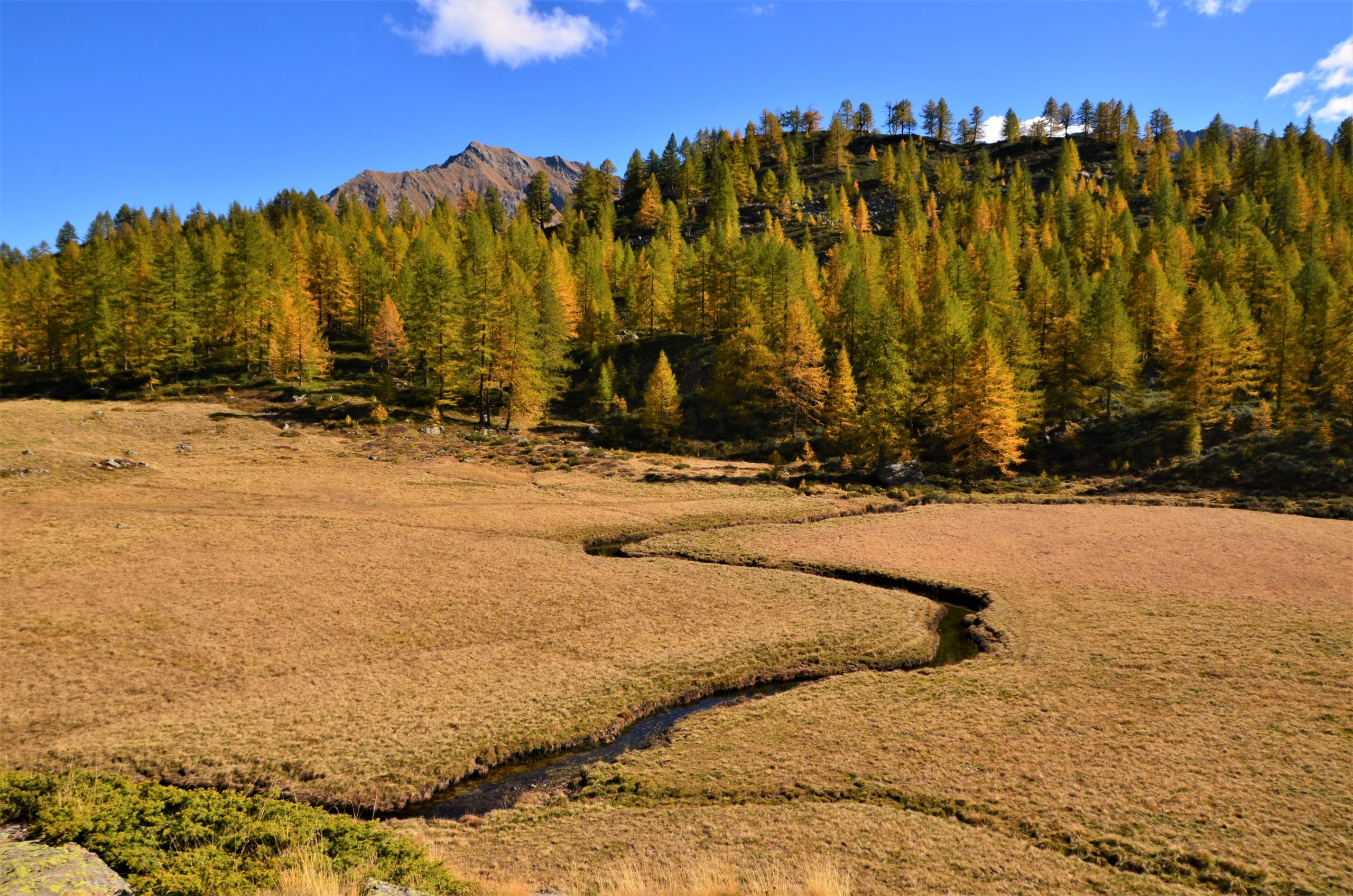
RIVA VALDOBBIA, Fraz. Sant’Antonio – Alpe Larecchio
trail n. 201a Peccia – Alpe Larecchio
Difficulty: medium – easy
average duration: 2 hours
departure altitude: 1380 mt
arrival altitude: 1895 mt
altitude difference: 515 mt
Route description
This route is one of the variants found on the way to the Valdobbia Pass, leading to Alpe Larecchio, one of the most beautiful pastures in Valsesia. Its small lake surrounded by larch trees and the wide plateau crossed by the distinctive serpentine created by the passage of the Valdobbia stream make it a beloved and fascinating destination, especially during the colorful fall season!
To reach the starting point of this itinerary, from the village of Riva Valdobbia you walk along the paved carriage road to the hamlet of Ca’ di Janzo, continuing then always on the road (partially subjected to transit restrictions, during the summer season) to the hamlet of Sant’Antonio, where you can park your car (arrival point of the Ca di Janzo – Sant’Antonio summer shuttle).
Starting on foot on the dirt road past the houses and the hamlet’s small church, follow the old route to Aosta with the 201 marker. At the end of the dirt road you reach the hamlet of Peccia, with its characteristic Walser houses and beautiful small lake. Continuing on the path to the right that passes between the small houses, just beyond the small church of the Oratory of San Grato, you pass the old Napoleonic-era bridge (reachable in about an hour from Sant’Antonio).
Then take the path that climbs to the right toward La Montata, 1638m, then reaches the two huts of Alpe Tecchiale, and climbs to the little Lancone chapel, 1739m. Further up, inside the larch forest, you reach the junction with the mule track to Colle Valdobbia, which you leave on the right. Then continue left along a good path in the larch forest that soon leads to Alpe Larecchio, 1895m (about 2 hours in total), a splendid and picturesque alpine pasture, which houses a farmhouse.
The origin of the name derives precisely from the many larch trees that surround the alp: one of these large trees stands on a large rock in the center of the basin, from which one can enjoy the special view of the wide plateau. Following the particular path of the small stream that crosses the alp, one can reach the charming little lake located a little higher up.
From the farm building, you can climb up to Pian del Celletto, at about 2100m (0.30-2.45 hours), where you will find the 201 trail leading to Ospizio Sottile again.
Other routes
recommended
Valsesia has a lot to offer to hiking enthusiasts
Suggestive trails surrounded by nature that offer breathtaking views: be surprised by the beautiful mountains of Valsesia!
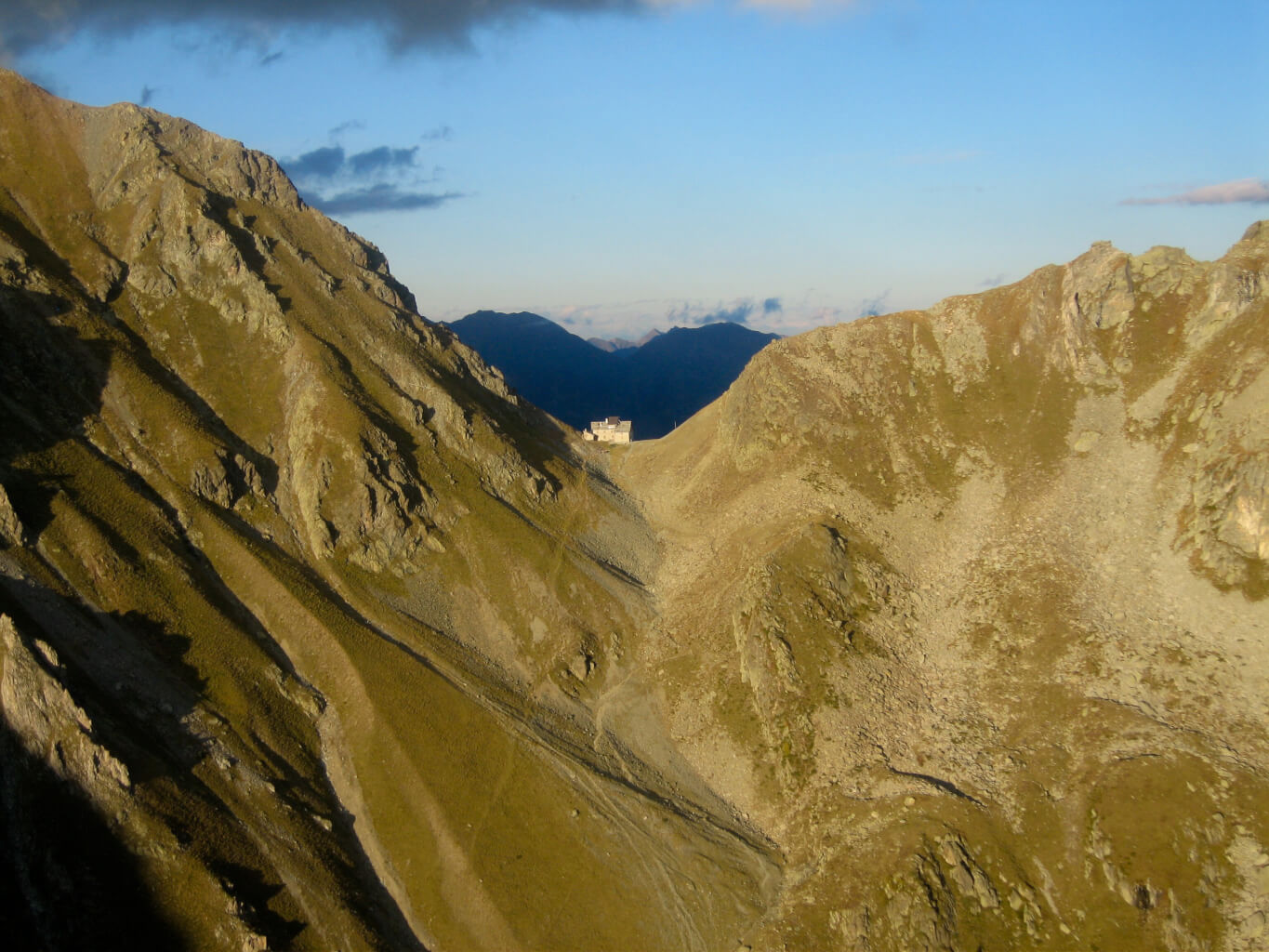
RIVA VALDOBBIA, Fraz. Sant’Antonio – Colle Valdobbia, Rifugio Ospizio Sottile
trAIL n. 201 sant’antonio – colle valdobbia, Rifugio Ospizio Sottile
difficulty: medium
average duration: 3-4 hours
departure altitude: 1380 mt
arrival altitude: 2480 mt
altitude difference: 1100 mt
Route description
The Valdobbia Pass, located at 2480 meters above sea level, allows communication between two regions and two valleys: the Valsesia and the Aosta Valley. The Vogna Valley, with its mild climate, favored the settlements of Walser colonists coming from Gressoney in the 1300s: emigrants, shepherds, merchants, soldiers, nobles and rulers traveled this important passage for centuries. The crossing often proved risky, due to darkness, fatigue, cold and fog. It was precisely for this reason that Canon Nicolao Sottile, understanding the plight of the Valsesian emigrants, undertook the project of erecting a hospice at the pass: the still-present and popular Rifugio Ospizio Sottile, opened in 1833. This route is part of the Gta (Great Traverse of the Alps), the Via Alpina and the Sentiero Italia Cai.
The road to Colle Valdobbia historically started from Riva Valdobbia, 1112m, and went up the Val Vogna. Now this is crossed by the carriage road leading to the hamlets of Ca di Janzo and Sant’Antonio, where you can park your car (arrival point of the Ca di Janzo – Sant’Antonio summer shuttle).
Starting on foot on the dirt road past the houses and the hamlet’s small church, follow the old path to Aosta with the 201 marker. At the end of the dirt road you reach the hamlet of Peccia, with its characteristic Walser houses and beautiful small lake..
Continuing on the path to the right that passes between the small houses, just beyond the small church of the Oratory of San Grato, you pass the old Napoleonic-era bridge (reachable in about an hour from Sant’Antonio). Immediately afterwards, leaving the path to the left that leads to Alpe Maccagno, 2493m, climb to the right on the path that leads to La Montata, 1638m.
Passing the two huts of Alpe Tecchiale, climb to the small chapel of Lancone, 1739m. Further up, inside the larch grove, leave itinerary 201a on the left that leads to Alpe Larecchio, and to the Piano del Celletto variant. You then take the path that turns right, then crossing the Valdobbia stream on a bridge. You then ascend with a wide loop to Pian del Celletto (where you rejoin trail 201a coming from Alpe Larecchio). Past a hump, there it appears, still far up the hill, the Ospizio Sottile!
We continue through the plains called Piana Grande and Sasselli dell’Asina, until we enter the final gully, which we traverse with a few hairpin bends, finally reaching the Valdobbia Pass, 2480m, on which the Ospizio Sottile is located (total about 3h30).
Ospizio Sottile is the base for ascents to Cresta Rossa, 2986m, Corno Valdobbia, 2755m, Punta Plaida, 2689m, and Punta Carestia (or Corno Rosso), 2979m. Although off-center, it can also be used for ascents to Corno Bianco, 3320m, and Punta Ciampono, 3233m. Route 11 takes you down to Valdobbia (Lys Valley), just downstream from Gressoney.
Other routes
recommended
Valsesia has a lot to offer to hiking enthusiasts
Suggestive trails surrounded by nature that offer breathtaking views: be surprised by the beautiful mountains of Valsesia!
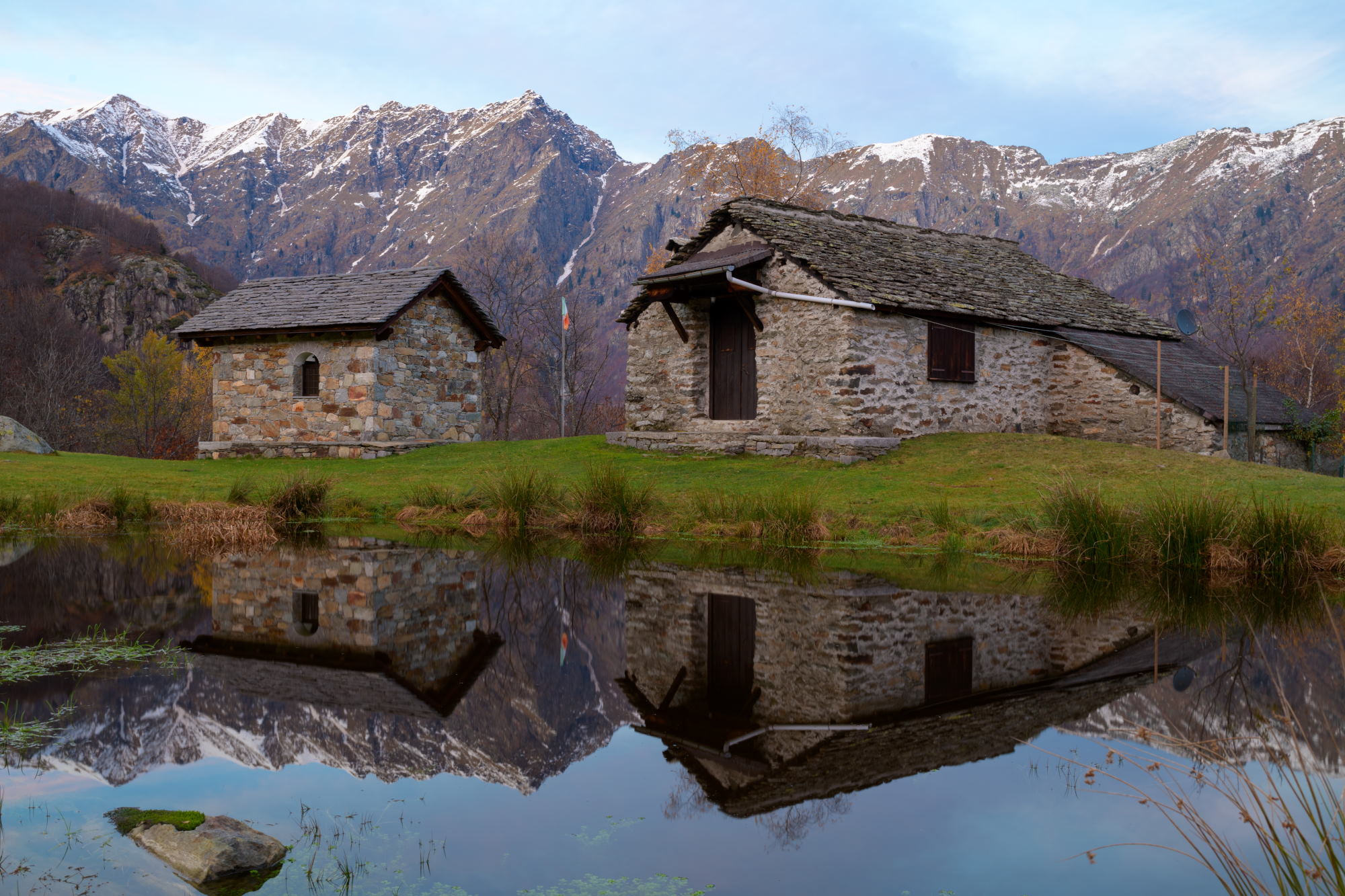
CAMPERTOGNO, Fraz. Tetti – Alpe Argnaccia – Punta Sivella
TRAIL n. 278 Campertogno, fraz. Tetti – Alpe Argnaccia – Punta Sivella
Difficulty: easy
average duration: 5 hours
departure altitude: 827 mt
arrival altitude: 2523 mt
altitude difference: 1696 mt
Route description
This is the normal and most popular way up to Punta Sivella, passing through the beautiful and vast Alpe Argnaccia.The first section of the trail is part of the Art Trails, the “Campertogno-Cangello Art Trail,” which touches on the fourteen niches illustrating the life of the Virgin Mary, the two churches of Madonna degli Angeli and Callone, the Argnaccia plateau and the Cangello Alp. Punta Sivella, which rises between Valle Artogna and Val Sassolenda thanks to its location, offers a splendid view of the surrounding landscape. On the peak every year in August, Holy Mass is celebrated.
The route starts from Tetti, a hamlet of Campertogno. After crossing the village, you reach near the cemetery where the carriage road ends (and where there are some car parking spaces). You then take the mule track lined with low walls and meet the first of the small chapels on the Art Trail. The mule track begins to climb, crosses a stream and continues to where the oratory of Madonna degli Angeli stands. The trail enters the woods, crosses the stream again on wide stones and continues on a beautiful mule track always lined with the little chapels until it reaches Madonna del Callone (1092m).
It then crosses a beech forest and shortly afterwards reaches the splendid shelf of Alpe Argnaccia, (1183m).
The Alpe features a small lake on which are reflected characteristic mountain cottages, the alpegggio and a small chapel. The path to the left leads to the alpine huts
Our route points west, flanked by low walls, through characteristic cottages surrounded by meadows, ash and conifer groves
We approach Alpe Cima (1260m), leaving the route leading to Becco della Guardia on the left, and shortly afterwards reach Alpe Cangello (1364m) where there are some huts, a fountain and a old little church. Turn left and enter Vallone Massero, touching Alpe Cascine. You climb into the pasture of Alpe Campo dei Frei (1477m) and enter the fir and larch forest before reaching the Sella (1583m). The route follows the southern flank until it reaches Alpe Vasnera (1743m). From this alpine pasture, still frequented by shepherds, the route to Vasnera Pass begins. Instead, the trail continues uphill, which becomes steeper, near the Fontanone shelf. Hovering on the opposite slope some large rocks, you reach Punta Sivella or Ciciozza (2523m). A small chapel, dear to the citizens of Campertogno, was built on the summit in 1942, from which the cross rises.
The peak can also be reached by route 274a coming from Alpe Campo in Valle Artogna.
Other routes
recommended
Valsesia has a lot to offer to hiking enthusiasts
Suggestive trails surrounded by nature that offer breathtaking views: be surprised by the beautiful mountains of Valsesia!
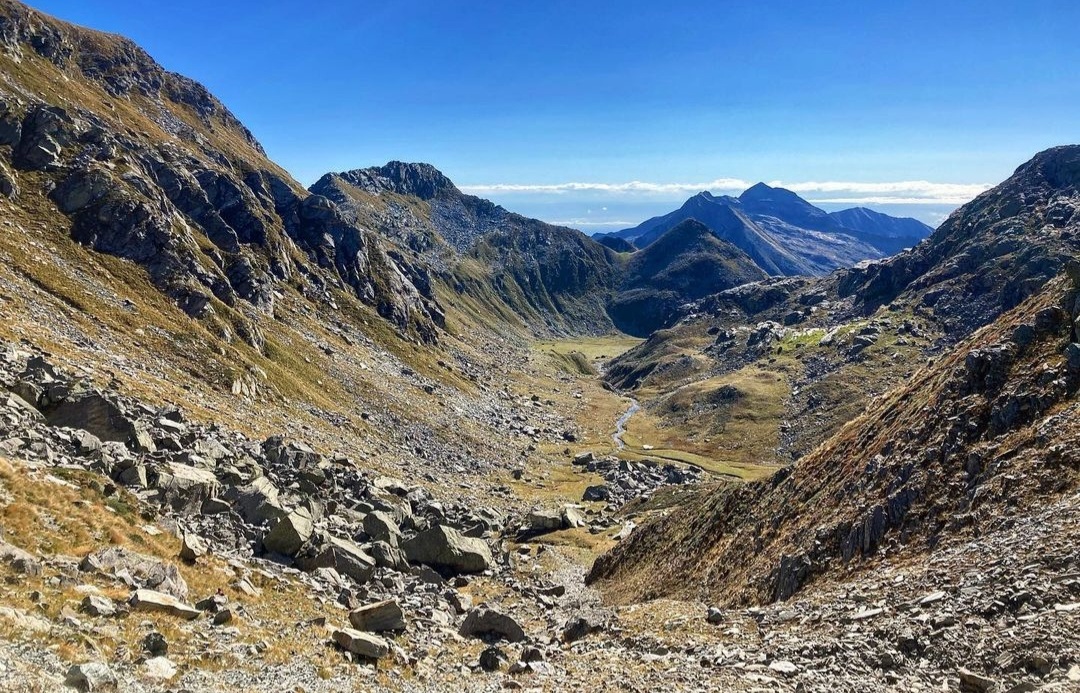
RASSA – Colle del Loo
TRAIL N. 251 Rassa – Colle del Loo
Difficulty: medium
average duration: 4 – 5 hours
departure altitude: 917 mt
arrival altitude: 2452 mt
altitude difference: 1535 mt
Route description
From the parking lot in Rassa (917m) located across the stream on the left side of the village, follow the paved road to the end and then take the steep road that climbs to the left, then take the mule track near Alpe Crosetti alla Cottura (1055m). Leave the dirt road that continues on a slight incline, and in a few minutes, you reach Alpe Campello, (1099m) where there is a cozy refreshment point.
Continuing on the mule track you pass Alpe Sorba (1151m) and the Prabella Bridge, (1180m), at the junction with the path to Alpe Sorbella. Without crossing the bridge, but continuing uphill, you pass Cascina Antaiua (1220m). Just beyond you can still see an old lime kiln and the characteristic Sorba stream waterfall, the “Gula Talheintha.” Crossing the dirt road, you will soon reach the pasture of Alpe Dosso, (1395m).
Crossing the Artorto stream, you reach the hut of Alpe Massucco, (1528m). The mule track, at first flat, then rising more steeply, leads with a few hairpin bends to Alpe Toso (1649m), where the CAI Support Point of Varallo is located.
The trail follows the Sorba stream to the end of the plateau where the ascent begins with its wide switchbacks. Just before Alpe Lamaccia, (1918m), you ford the Sorba stream. The trail climbs the rocky hump on the right and, after passing a spring, climbs with short hairpin bends and crosses the Rio Nero, an outflow of the Three Bishops’ or Sorba Lakes, and then reaches Alpe del Prato (2218m).
Near the huts, partly ruined, we can admire a slab of rock on which we can distinguish ancient inscriptions in Latin dated August 1751, with the name and surname of the person who made them. Our route continues westward among large boulders, thus reaching Colle del Loo (2452m).
On the opposite side, the trail crosses the Loo Valley and reaches Loomatten and then Gressoney St.Jean in the Lys Valley. The Colle di Loo also allows a northward connection to the Maccagno Pass and Alpe Maccagno (2493m) and then to descend to Riva Valdobbia.
Other routes
recommended
Valsesia has a lot to offer to hiking enthusiasts
Suggestive trails surrounded by nature that offer breathtaking views: be surprised by the beautiful mountains of Valsesia!
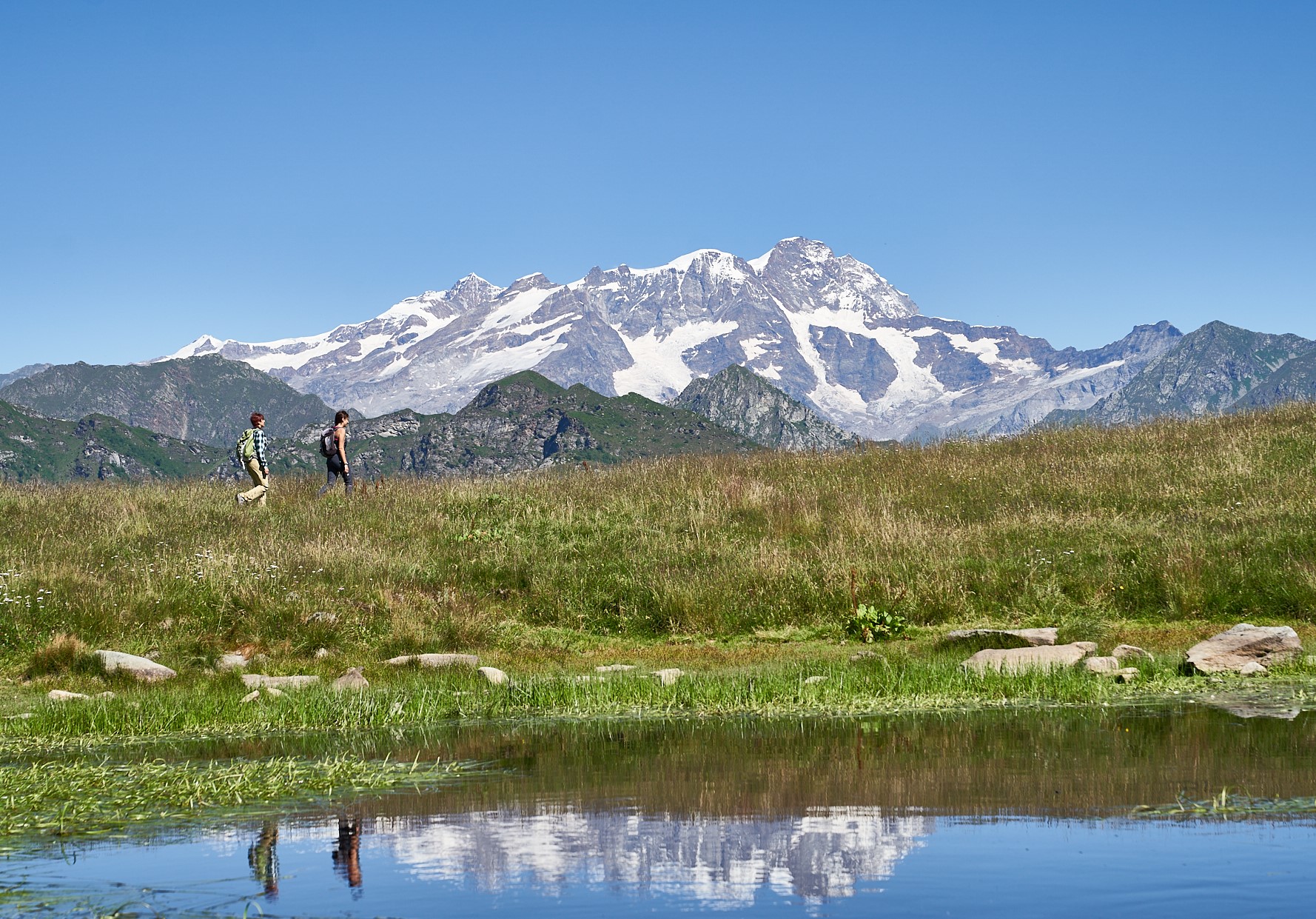
PIODE – Alpe Il Pizzo – Monte Bo di Valsesia
trail n. 243 Piode – Alpe Pizzo – Monte Bo di Valsesia
Difficulty: medium
average duration: 3-4 hours
departure altitude: 952 mt
arrival altitude: 2072 mt
altitude difference: 1312 mt
Route description
From the village of Piode, 752m, past the ancient and characteristic bridge over the Sesia River, follow the road briefly to Piedimeggiana, 760m, where the itinerary begins, reaching shortly afterwards the sanctuary of the Madonna delle Pietre Grosse, 814m.
A first section of mule track follows itinerary 241 and climbs to reach the chapel of Madonna delle Pose, 952m. From here you set off on a comfortable mule track surrounded by an attractive beech forest.
You take trail No. 243 at the fork, which leads to Alpe Giumenta and grazes Alpe Balmello, reaching the carriage road at an elevation of about 1480m where you can also arrive by car. The trail continues a little further down the valley.
It skims the Piana Alps and reaches Alpe Il Pizzo, 1704m. This alpine pasture, located between the Meggiana basin and Val Sorba, is a genuine balcony overlooking the Val Grande
Continuing north on the alpine pasture, one arrives at the picturesque Laghetto del Pizzo, on which the Monte Rosa ranges are reflected. The alpine cottages, the green pasture, the pretty pond and the surrounding mountains with Monte Rosa in the background make this a favorite destination for hikers.
Staying on the main road and bypassing the fork on the right that leads to Alpe Sorbella, you will soon reach the junction for Monte Bo, identified by a large stone. Turning right, about a hundred meters later you meet the bike path that climbs from Rassa heading toward Alpe Meggiana. Behind the explanatory panel and the bike station, take trail 243 again, which climbs to the summit of Mount Bo di Valsesia, 2072m. A statue of the Madonna is placed on the summit.
From Bo Valsesia there is an extensive panorama, especially of the Rassa valleys and surrounding peaks.The summit can also be reached from the village of Rassa, following trail 252. On the opposite ridge there is trail 244 to Colma Colora and the Three Alps Head.
Other routes
recommended
Valsesia has a lot to offer to hiking enthusiasts
Suggestive trails surrounded by nature that offer breathtaking views: be surprised by the beautiful mountains of Valsesia!
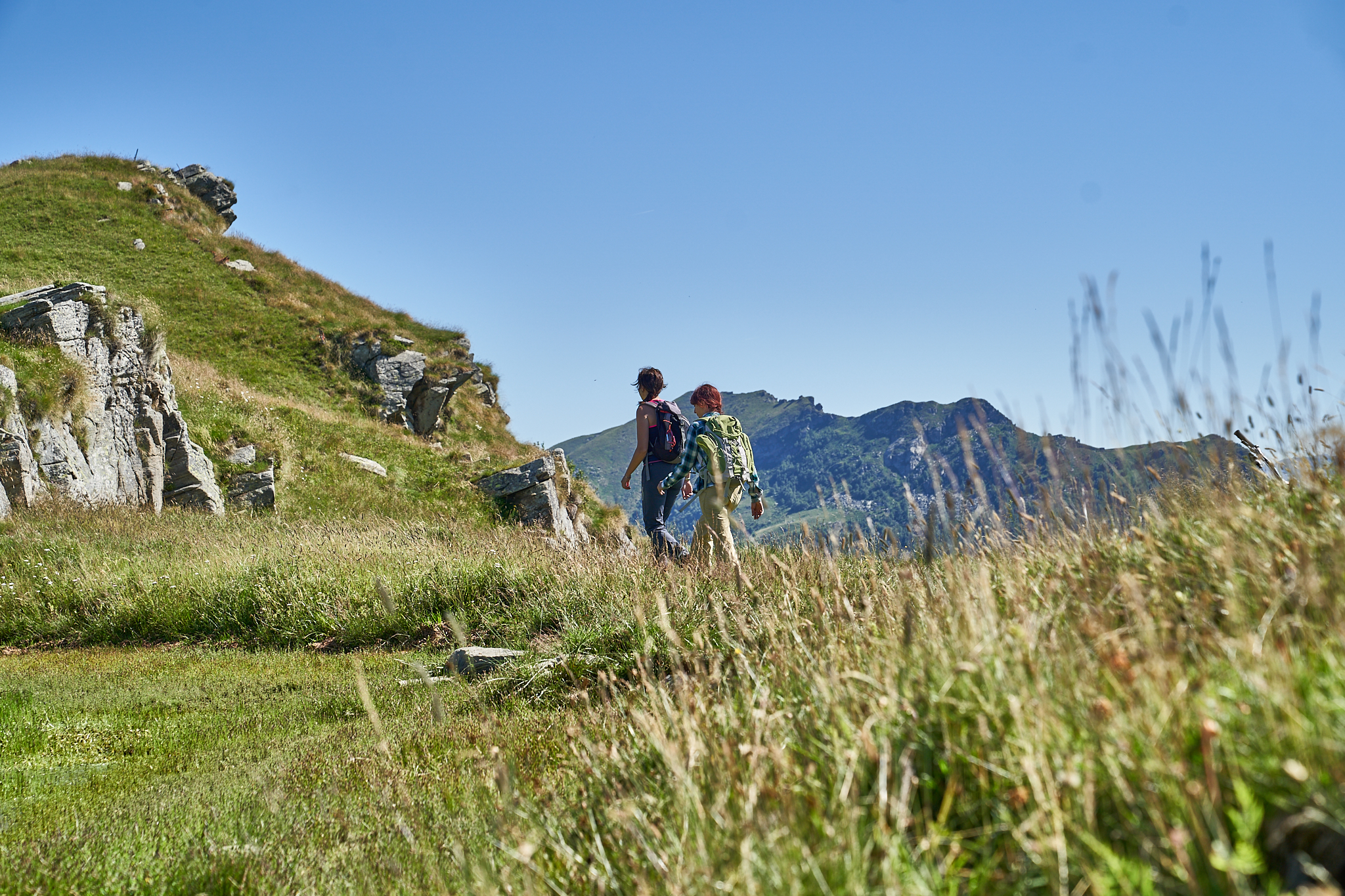
PIODE – Alpe Meggiana – la Crocetta
trail n. 241 Piedimeggiana – alpe Meggiana – la Crocetta
Difficulty: medium
average duration: 2 – 3 hours
departure altitude: 760 mt
arrival altitude: 1779 mt
altitude difference: 1019 mt
Route description
From the village of Piode, 752m, past the ancient and characteristic bridge over the Sesia River, follow the road briefly to Piedimeggiana, 760m, where the route begins, reaching shortly afterwards the sanctuary of the Madonna delle Pietre Grosse, 814m.
A first section of mule track climbs reaching the chapel of Madonna delle Pose, 952m. You continue on path 241 passing the bridge over the Croso del Pè and reach the oratory of Prapolla, 1185m. You then approach the many small houses of the beautiful Alpe Meggiana. You gain the wide pastures of Meggiana, coming out on the paved road that climbs from Piode, which is also passable by car.
From here you follow the asphalt road to the left as it climbs and reach Alpe Sopra il Croso, 1560m, (in about 2 hours) where the Meggiana Refuge is located.
Continue this way on the road that becomes unpaved, cross the Rassa-Mera bike path and, with an uphill traverse, reach La Crocetta, 1779m (in total about 3 hours). This viewpoint is surrounded by some of the most important peaks in these valleys: the Monte Bo di Valsesia, the Testone Tre Alpi and the Cima d’Ometto.
Already at the first cottages of Meggiana, Monte Rosa can be admired in its grandeur. This is a very fascinating route in terms of landscape!
During the ascent, when you arrive on the paved road that climbs from Piode, you may notice a fairly wide dirt road appearing on the right side, which conveniently connects Meggiana to another very picturesque area: the Alpe Pizzo, with its small lake and breathtaking view of Monte Rosa.
Other routes
recommended
Valsesia has a lot to offer to hiking enthusiasts
Suggestive trails surrounded by nature that offer breathtaking views: be surprised by the beautiful mountains of Valsesia!
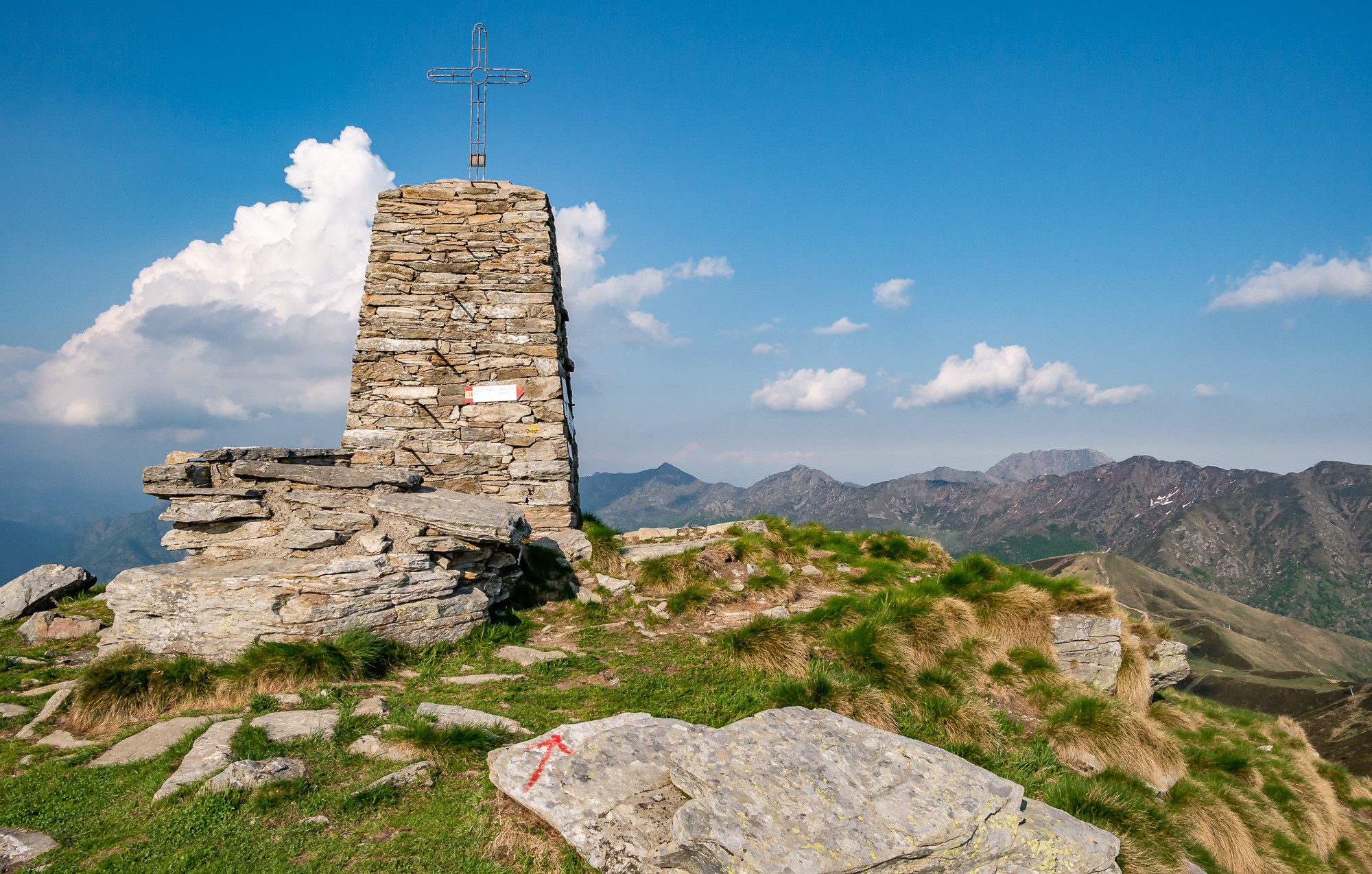
PILA/SCOPELLO – Alpe di Mera – Cima d’Ometto
trail n. 236 Pila – Alpe di Mera – Cima d’Ometto
Difficulty: medium
average duration: 3-4 hours
departure altitude: 686 mt
arrival altitude: 1911 mt
altitude difference: 1225 mt
Route description
The route begins in Pila, 686m, near the bridge over the Sesia River. From here starts a comfortable mule track that crosses meadows and woods and contours Alpe della Rivaccia.
Climbing, surrounded by beech trees, you pass the cottages of Alpe Pianello, 900m, where there is a chapel , and then reach the huts of Alpe Dughere, 938m. Leaving this now-abandoned alpine pasture, the mule track flanks the ski slope, following it in places, then proceeding back into the woods.
This point of the trail can also be reached from the village of Scopello by taking trail No. 236a, which starts in front of Bar Capriccio, across the bridge over the Sesia River.
This path, which crosses uphill through the forest, connects to our route 236, which at an elevation of 1160m underpasses the valley station of the Pian Rastò ski lift, 1230m, to continue to the edge of the alp pasture.
We then cross the meadow of Alpe Ruscàa, 1370m to reach Alpe Ciotto di Sopra, 1385m. The trail proceeds uphill in a southerly direction and enters the beautiful pastures of Alpe di Mera, heading for the little church of Madonna della Neve, 1503m.
From the oratory continue on the road that climbs to the right, passing under some houses and apartment buildings of Mera, until you reach Alpe Campo, with a cozy restaurant, a pond and a very fun playground for children!
From here you continue with a fair climb, approach the spring of Pian d’Asnin, 1600m, lined with rhododendron bushes, and reach Colma dei Lavaggi, 1720m.
The route now follows the edge of the ridge reaching Cima d’Ometto, 1911m. At the summit there is a stone construction, on which rests an iron cross.
From the summit the view of Monte Rosa and the entire Alpe di Mera, as well as the surrounding valleys, is unique and spectacular! Three ridges branch off from here: the North ridge that divides the Mera basin from the Meggiana basin, the East and West ridges that act as a watershed between the Sesia and Dolca valleys. Following the ridge westward, one can easily reach the Crocetta Pass, 1779m.
Other routes
recommended
Valsesia has a lot to offer to hiking enthusiasts
Suggestive trails surrounded by nature that offer breathtaking views: be surprised by the beautiful mountains of Valsesia!
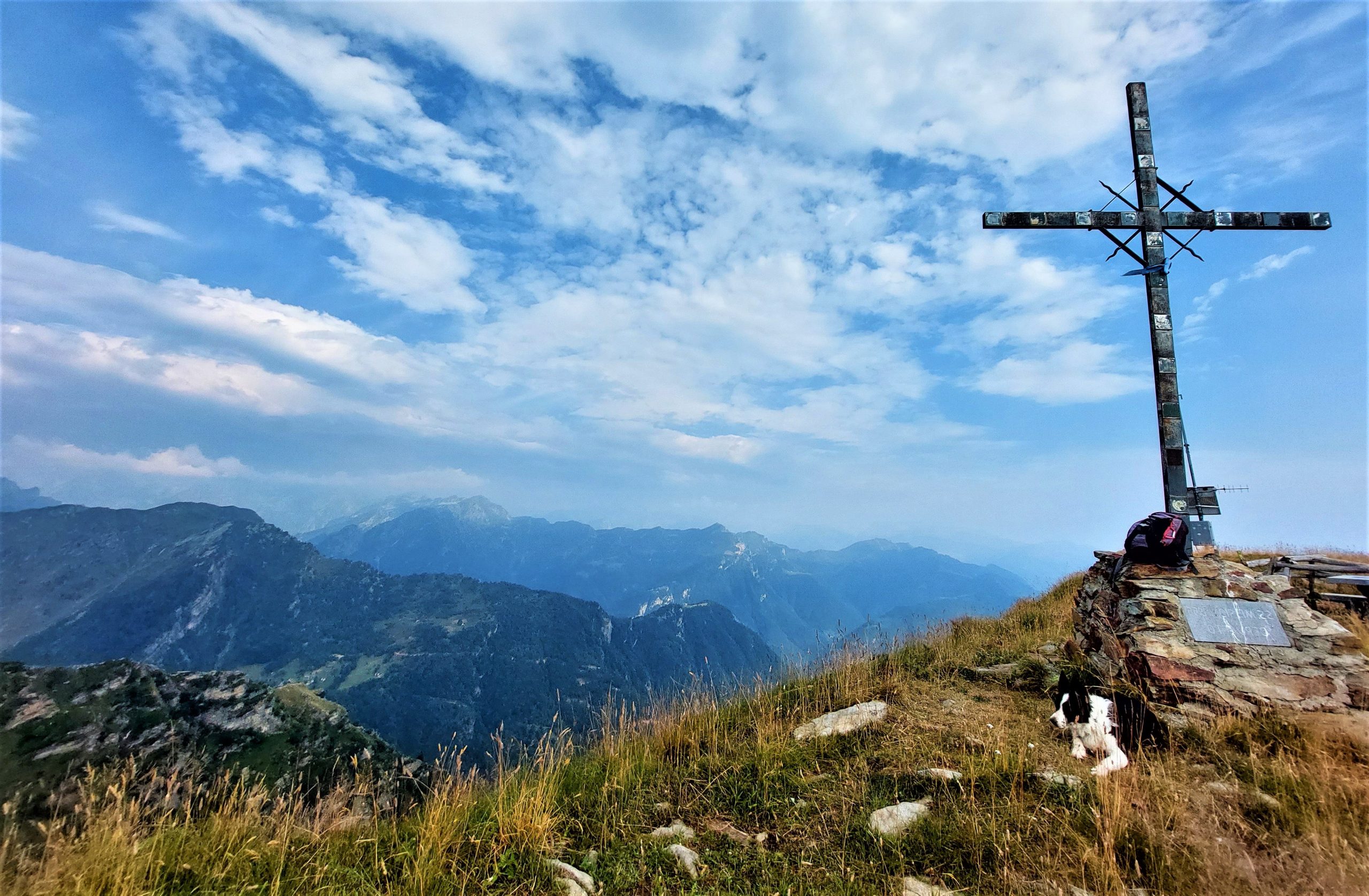
Rossa – Pizzo Tracciora
trail n. 400 Rossa – Pizzo Tracciora
Difficulty: medium
average duration: 2 hours
departure altitude: 813 mt
arrival altitude: 1917 mt
altitude difference: 1104 mt
Route description
II Pizzo Tracciora is one of Valsesia’s best-known and most popular mountains, thanks to its gentle, rounded shapes, accessibility and central location that offers a splendid 360-degree view of the entire Valley.The itinerary in the first section is part of the Art Trail.
From the central square of the village of Rossa, 813m, take the comfortable mule track that in a short ascent leads to the locality of Vaz, 950m where, on the left begins itinerary 401 that leads to the hamlet of Rainero. Continue straight through meadows and cultivated fields and you reach the hamlet Piana, 1050m, surrounded by two pretty little churches dedicated to St. John the Baptist.
Continuing inside the forest, you climb to Alpe Sella, 1170m and later to Alpe Selletto, 1266m, where stands the “Sleeping Lord Chapel,” so called because of the lying position of the statue of the Redeemer that is placed inside. Right here there has been a conservation intervention by the “Ancient Mountain, Mountain to be Saved” Commission.
Advancing further through pastures and woods, we move to Alpe Barbughera, 1403m, Alpe Suaroli, and Alpe Campello, 1552m, a vantage point over the Monte Rosa Massif. Continuing on, you enter the forest and transit to “Sass del Bech,” 1650m, finally exiting into the pastures divided between Alpe Prato Bianco di Sotto, 1717m, and Alpe Prato Bianco di Sopra, 1809m, which are named for the wonderful bloom of mountain lilies, aconite-leaved buttercups, and other beautiful species of alpine flora that cover them in spring and summer.
Continue on the grassy hillside and with an increasingly gentler slope you reach the summit of Pizzo Tracciora, 1917m, marked by a cross and a memorial stone erected in 1967 to mark the centenary of the CAI section of Varallo.
From here there is an extensive panorama sweeping over the upper Mastallone Valley, the Sermenza Valley and the chain of the Western Alps with Monte Rosa in the foreground.
Other routes
recommended
Valsesia has a lot to offer to hiking enthusiasts
Suggestive trails surrounded by nature that offer breathtaking views: be surprised by the beautiful mountains of Valsesia!
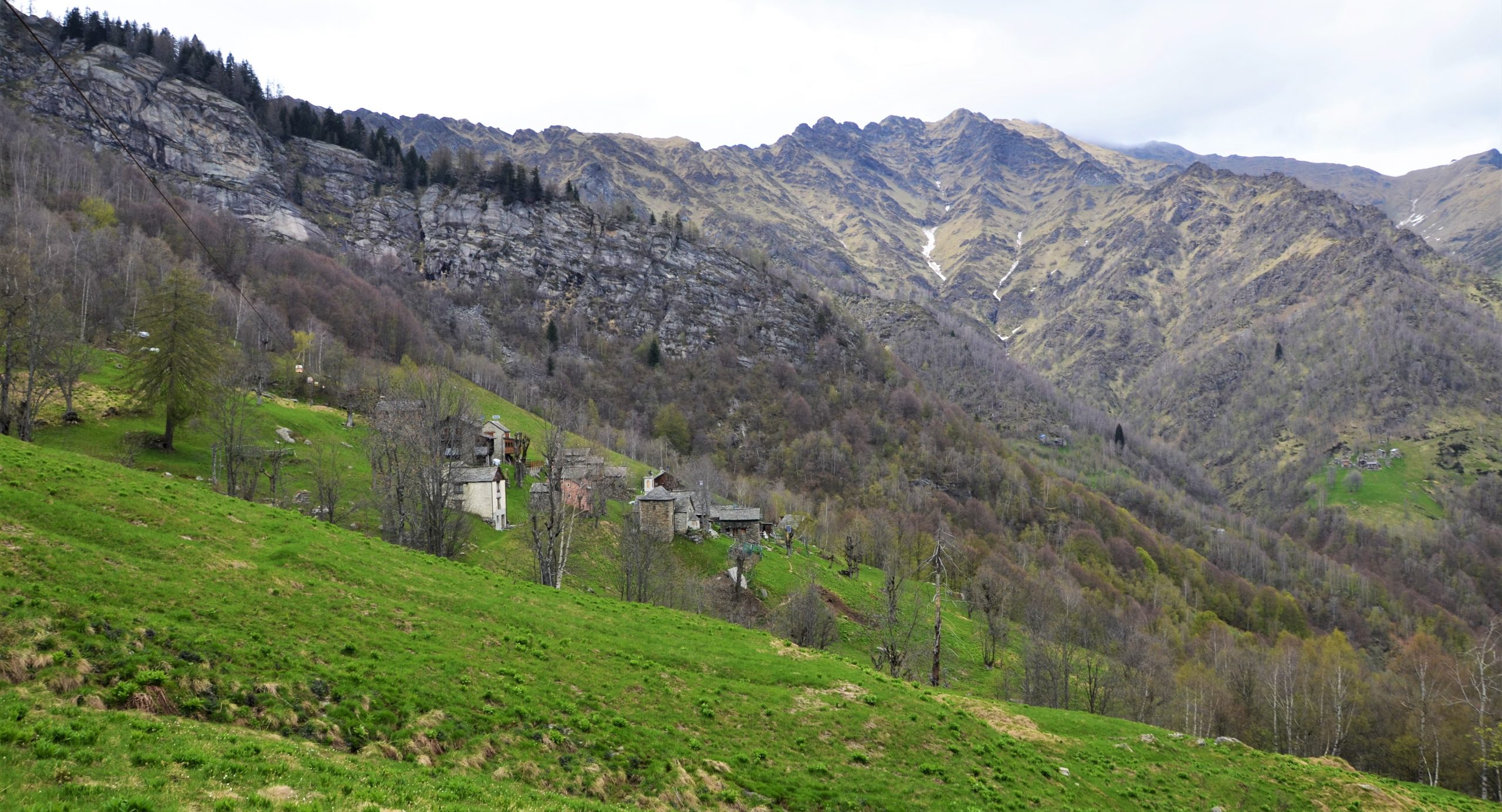
BOCCIOLETO – Alpe Seccio
trail n. 387 Boccioleto – Alpe Seccio
Difficulty: medium
average duration: 2-3 hours
departure altitude: 667 mt
arrival altitude: 1263 mt
altitude difference: 764 mt
Route description
This itinerary is part of the Valsesia Art Trails. In fact, it is rich in art testimonies distributed along the entire route, including the center of Boccioleto itself, the small churches of Ronchi, Ormezzano, Solivo, the chapel of Selletto and especially the Church of Seccio, with frescoes from the first half of the 15th century.
From the center of the village of Boccioleto, 667m, cross the residential area and take trail 387, a comfortable mule track that, in about 20 min, leads to the hamlet of Ronchi, 814m. (Those wishing to shorten the route can skip this first section and drive directly up along the carriage road.)
The church of Ronchi with its frescoed facade is only the first valuable building encountered along this route. From here the mule track winds through meadows and woods, passes the Genestroso chapel and, crossing the carriage road, reaches the hamlet of Ormezzano, 964m, situated on a slope. Going along one more stretch of road, another inhabited hamlet can be found: Solivo, 1017m, characterized by the pretty little church and oratory of San Nicolao, renewed in its architectural parts by the Commission “Montagna antica, montagna da salvare.”
Immediately afterwards the mule track becomes steeper as it enters the forest, passing Selletto at an altitude of 1208m, and then crosses the Daloch Alps, 1261m, Sul Sasso, and then reaches Alpe Seccio 1390m, a wide alpine pasture where there are numerous mountain dwellings.
Here stands a small church of considerable artistic significance, dating back to the 15th century and dedicated to St. Lawrence, believed by some to be the oldest in Val Sermenza.
From the Alpe you can continue to descend until you reach the Cavaione stream, crossing it by a small bridge and then climbing the opposite slope to reach Alpe Sull’Oro, 1263m. Here you meet routes 396 and 399, which descend to Rossa and Boccioleto, and the second to Rainero.
Other routes
recommended
Valsesia has a lot to offer to hiking enthusiasts
Suggestive trails surrounded by nature that offer breathtaking views: be surprised by the beautiful mountains of Valsesia!
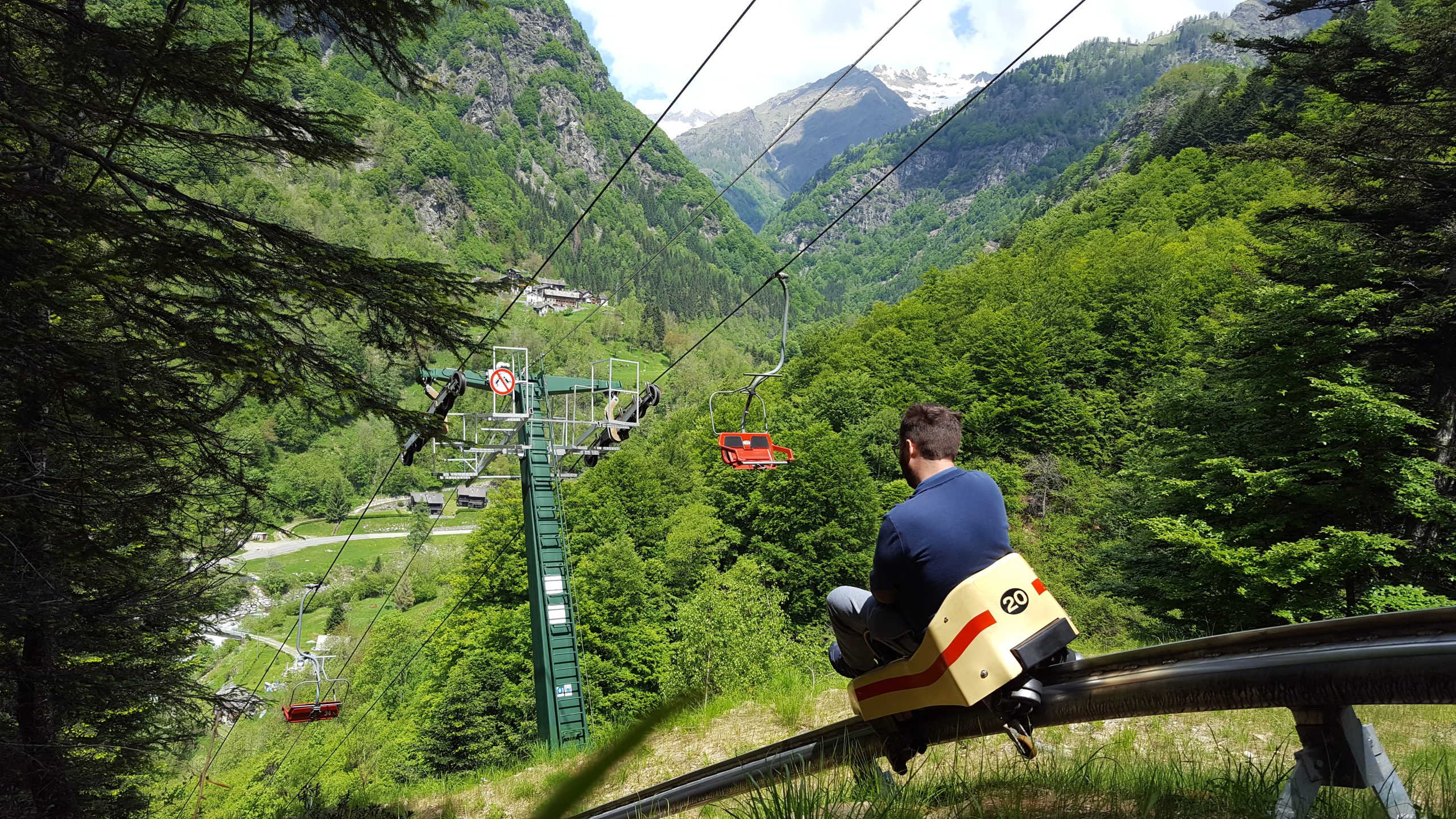
Rimasco – Alpe Campo
trail n. 370 Rimasco – Alpe Pian della Ratta – Alpe Campo – Siunal
Difficulty: medium – EASY
average duration: 1 – 2 hours
departure altitude: 906 mt
arrival altitude: 1492 mt
altitude difference: 586 mt
Route description
Leaving the village of Rimasco, just after the church of Santa Croce, cross the Egua stream and arrive at Sponde del Lago. Proceed as you enter a deciduous forest and in about 45 minutes you reach Pian della Ratta, 1140m, the arrival station of the chairlift and starting point of the fun summer bobsleigh, with the Alpe Campo Refuge.
Try the adrenaline-pumping fun bobsled on rails, ideal for a fun-filled day!
You cross the shelf keeping to the left and then climb up the edge of the Vecchia meadow to enter the woods and ascend it to come out in the vicinity of the Alpe Pianali hut, 1360m. You keep to the edge of the forest and shortly afterwards return, turning left, thus arriving at Alpe Campo, 1390m.
Wanting to continue the itinerary beyond the alp, turn right up the slope and reach a saddle on the slopes of Cima Castello. Following the ridge to the right to the summit of the hump, at Siunal, at an altitude of 1492m, you have a magnificent view of Monte Rosa, Tagliaferro and the entire Sermenza Valley.
Other routes
recommended
Valsesia has a lot to offer to hiking enthusiasts
Suggestive trails surrounded by nature that offer breathtaking views: be surprised by the beautiful mountains of Valsesia!
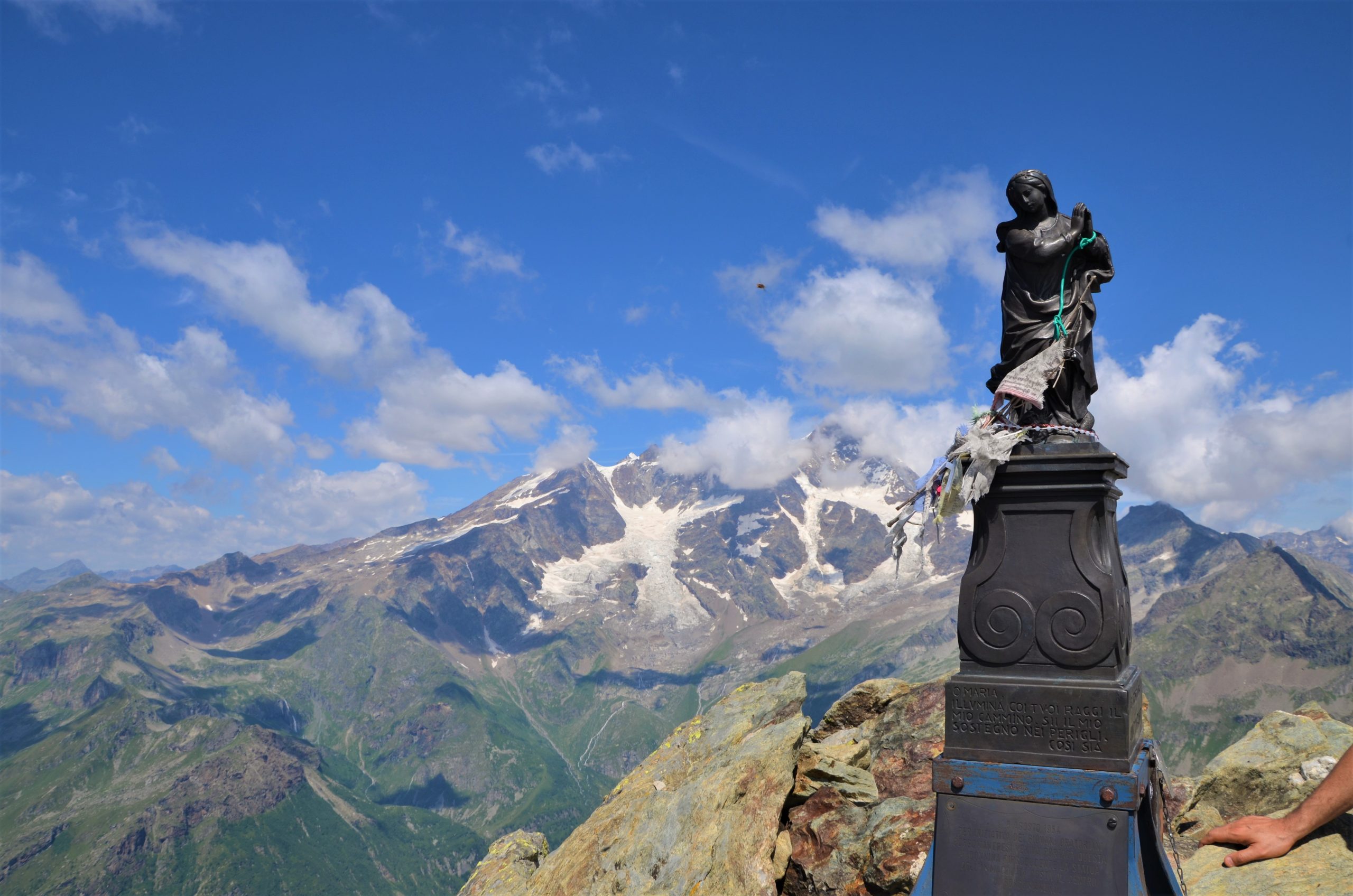
RIMA – Monte Tagliaferro
trail n. 318 Rima – Monte Tagliaferro
Difficulty: EE – Experienced Hikers
average duration: 4 hours
departure altitude: 1411 mt
arrival altitude: 2964 mt
altitude difference: 1553 mt
Route description
The route starts from the village of Rima, 1411m, and the first part of the trail is shared first with the 292 mule track to the Little Altar Pass, and then with the 296 to the Mud Pass, up to an elevation of about 1700m (in about 30/45min). Abandoning the mule track, take trail 318, which drops off to the left, crosses the Rio Valmontasca and continues on level ground to Alpe Scarpia di Sotto, 1712m.
Proceed diagonally uphill to reach Alpe Scarpia di Sopra, 1916m. From the alpine pasture move left and reach a large boulder near which flows a spring and on which is placed a plaque. Climbing to the left through pastures and slabs we reach Vallarolo Pass, 2332m.
Our route points west instead and reaches a giant boulder that provides precarious natural shelter. The trail accentuates the slope until it takes you below the vertical of a very steep grassy slope for which, with narrow, exposed switchbacks, you gain the Passo del Gatto, 2730m, (in about 3 hours). On the opposite side climbs the track from Bocchetta della Moanda, recently equipped by Alagna guides; EEA.
Turning right, follow the trail that cuts across the steep mountainside and reaches the ridge of rocks and boulders that leads to the summit of Mount Tagliaferro, 2964m, (in about 4 hours total). From the summit the view is unique and breathtaking, a veritable window looking directly into Monte Rosa!
Other routes
recommended
Valsesia has a lot to offer to hiking enthusiasts
Suggestive trails surrounded by nature that offer breathtaking views: be surprised by the beautiful mountains of Valsesia!
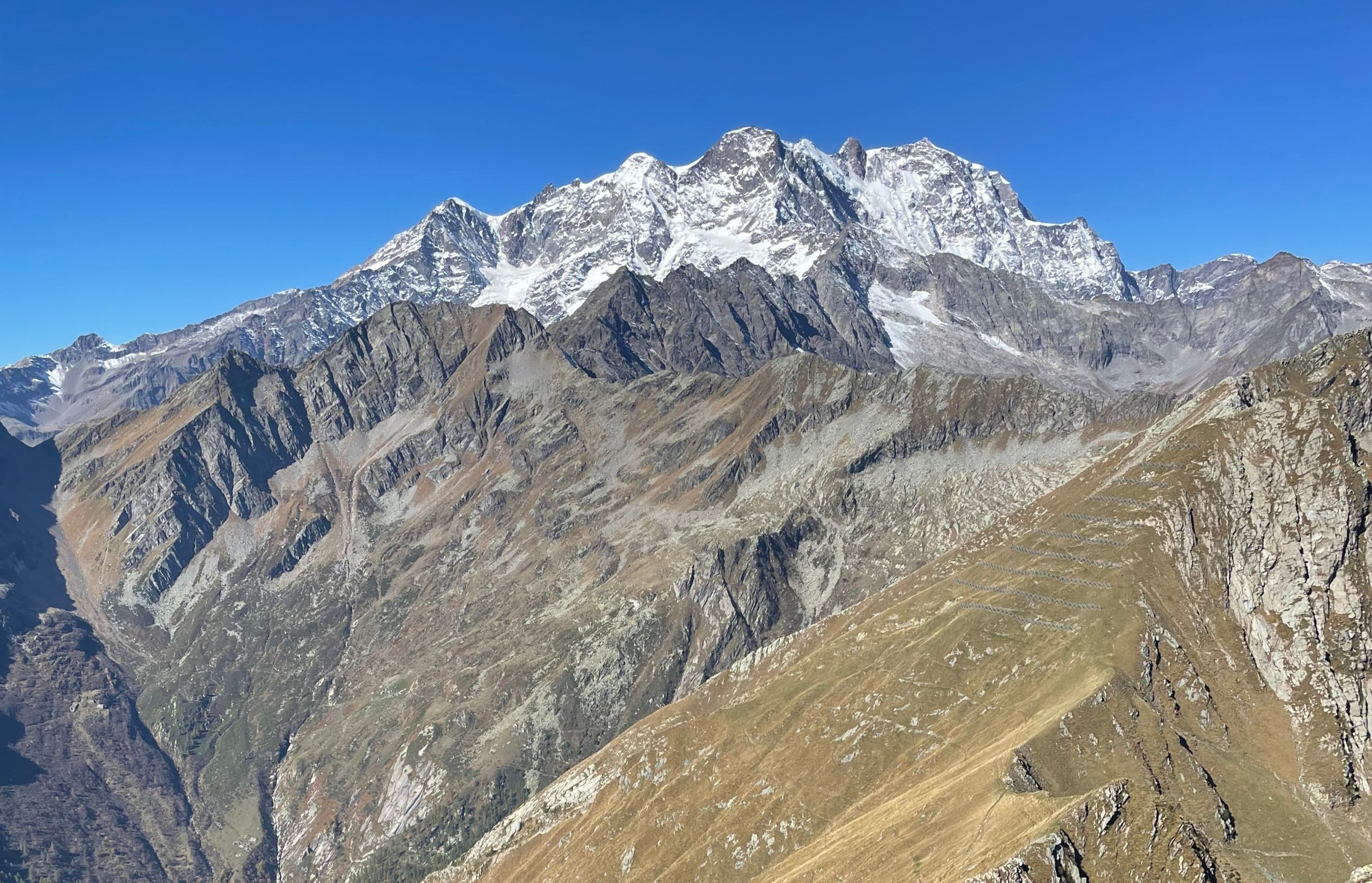
RIMA – Colle del Termo
trail n. 293 Rima – Colle del termo
Difficulty: medium
average duration: 2 – 3 hours
departure altitude: 1411 mt
arrival altitude: 2351 mt
altitude difference: 940 mt
Route description
It is the classic traverse route between Rima and Carcoforo. It is part of the GTA (Great Traverse of the Alps), the Great Walser Trail, the Via Alpina and the Cai Italy Trail.
From the back of the church located in Rima, 1411m, a beautiful mule track leaves the village heading east, and climbs in hairpin bends through the woods and reaches Alpe Chiaffera or Ciaffera, 1706m, in about an hour. It continues through coniferous forest to a very steep grassy slope with short, numerous narrow hairpin bends until it comes out on Colle del Termo, 2351m, (in about 2h30).
From here you can comfortably descend to Carcoforo by taking trail No. 112.
Turning right you can reach Cima Lampone, 2586m (caution: mountaineering path), while to the left, following the ridge with an unmarked path, you can climb to Cima del Tiglio, 2545m.
Other routes
recommended
Valsesia has a lot to offer to hiking enthusiasts
Suggestive trails surrounded by nature that offer breathtaking views: be surprised by the beautiful mountains of Valsesia!
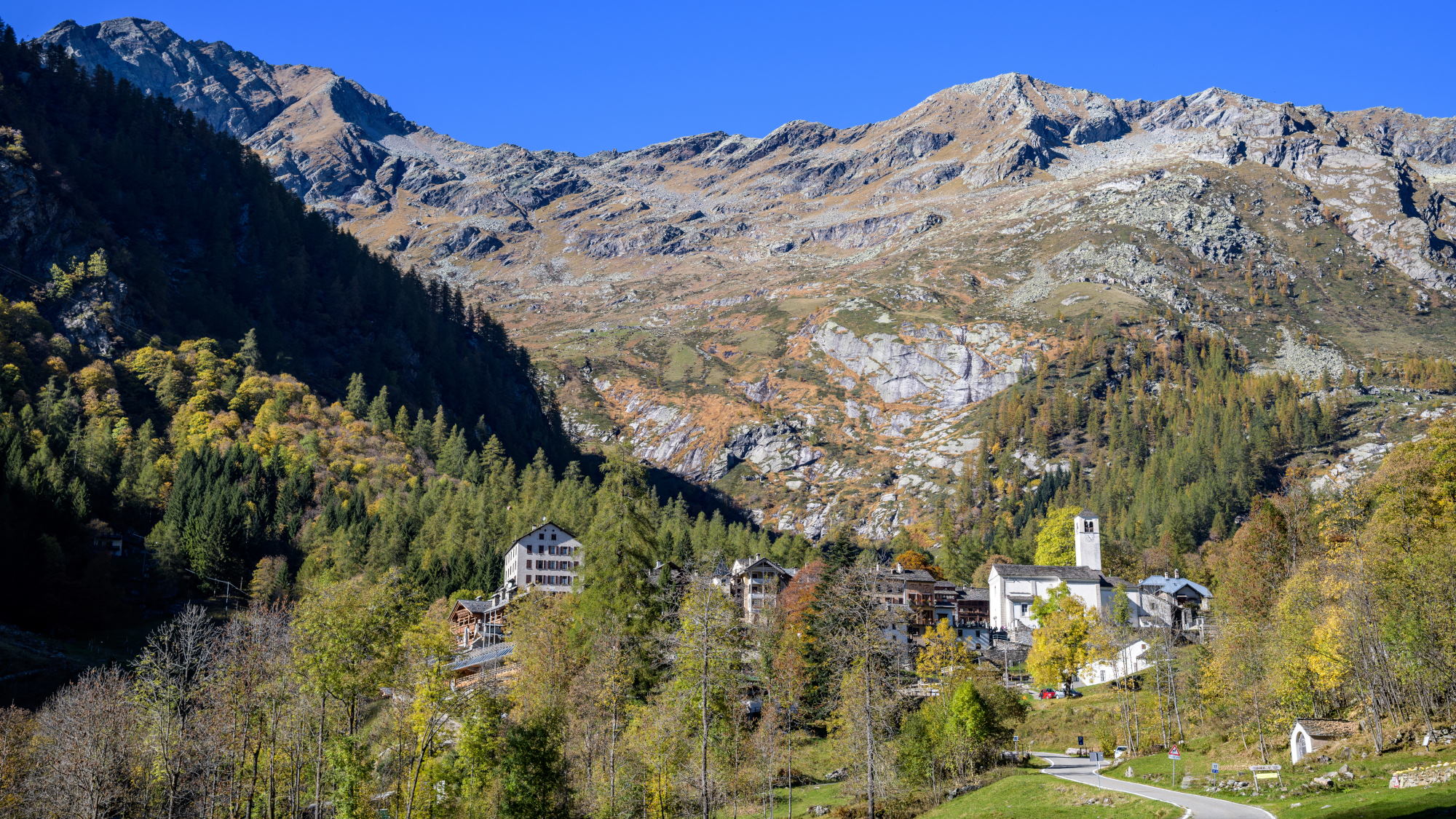
RIMA – Colle del Vallè
trail n. 291 Rima – Colle del Vallè
Difficulty: medium
average duration: 3 hours
departure altitude: 1411 mt
arrival altitude: 2625 mt
altitude difference: 1214 mt
Route description
From the square in Rima, 1411m, cross the village, take the mule track and heading out to the pastures, head moderately uphill on the left bank of the stream. You ford the Croso del Vallé and continue on the right bank. From here the slope becomes steeper and shortly afterwards you pass Alpe Vallaracco at an altitude of about 1600m.
You pass through a larch grove and numerous rhododendron bushes and reach Alpe Brusiccia, 1943m, where there are excellent panoramic views of the valley floor. You leave the alp by taking the mule track to the right along which, at an altitude of 1988m, there is a small chapel.
Continuing on you reach Alpe Vallezö, 2167m, characterized by some characteristic huts. After a short flat section you reach the buildings of Alpe Vallè di Sopra, 2175m, where the Vallè hut owned by the Alta Valsesia Natural Park is located.
At the back of the alp you climb north through pastures and rocks where the path is not always clearly visible. Follow the signs to the upper part of the valley. Passing the scree, you reach the final slope and narrow notch of Colle del Vallè, 2625m, (total about 3h30).
This trail leads to one of the passes between Val Sermenza and Valle Anzasca, rarely taken as a traverse because the easier and more practical Colle del Piccolo Altare is preferred.
From the pass one can traverse at high altitude to the Colle della Bottiggia and descend to Val d’Egua and Carcoforo.
Other routes
recommended
Valsesia has a lot to offer to hiking enthusiasts
Suggestive trails surrounded by nature that offer breathtaking views: be surprised by the beautiful mountains of Valsesia!
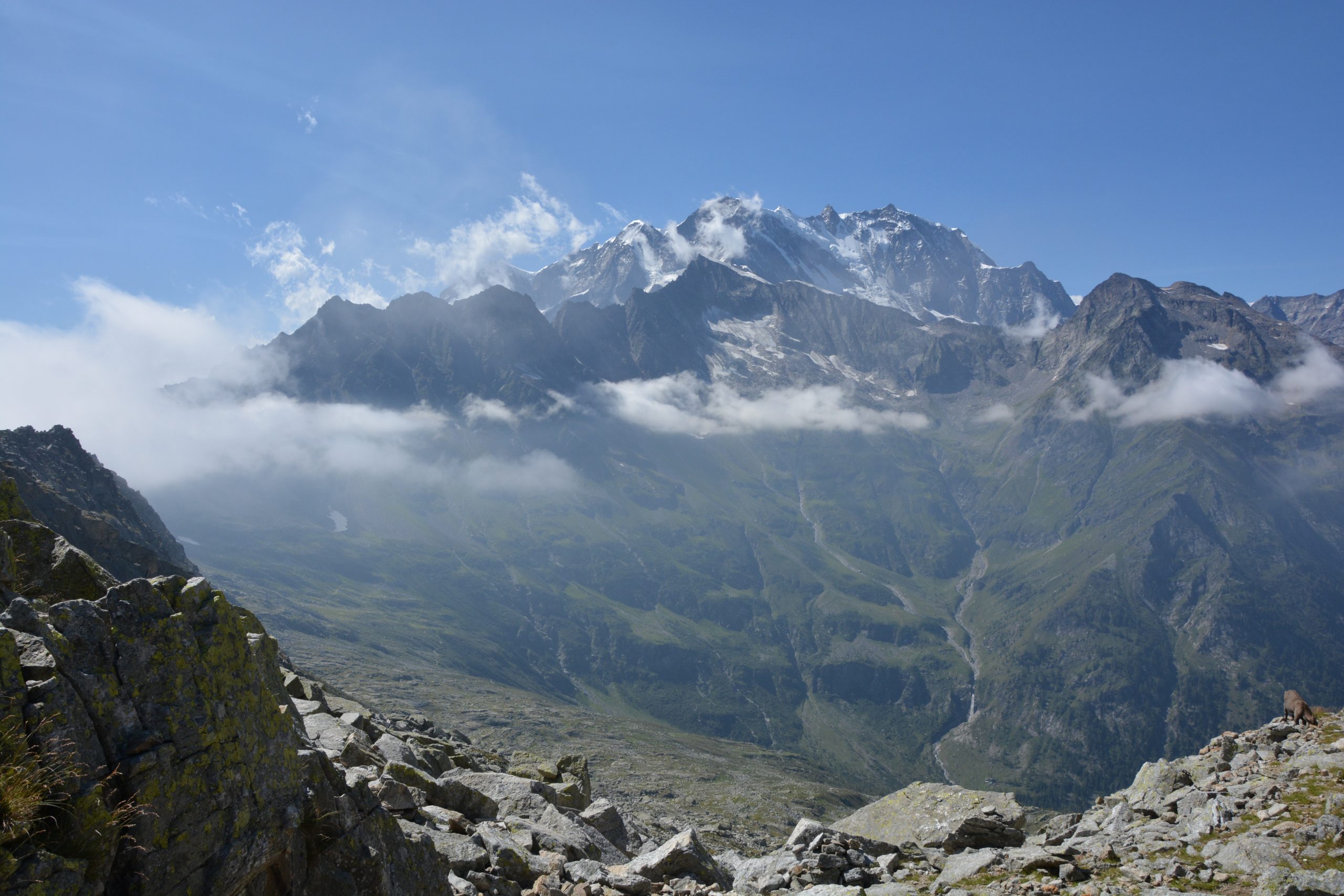
CARCOFORO – Rif. Massero – Colle della Bottiggia
trail n. 113 Carcoforo – Rif. Massero – Colle della Bottiggia
Difficulty: medium
average duration: 4 hours
departure altitude: 1304 mt
arrival altitude: 2607 mt
altitude difference: 1303 mt
Route description
The route to the Bottiggia Pass is the most convenient route between Carcoforo and Macugnaga. It is a long route, but of considerable interest, especially scenic.
From the parking lot in the village of Carcoforo, past the bridge over the Egua stream, follow the road shared with itineraries 112 and 117 to Alpe Le Coste, where you turn off right onto 117, which leads to Passo della Miniera. Crossing Rio Giovanchera and Rio Fornetto, leave trail 112 on the left, which continues to Colle del Termo. You then take the path through the woods until you reach Alpe Chignolo.
You still zigzag up the steep slope and reach the vast pasture of Alpe Fornetto, 1926m. At the top of the Alpe you reach Rifugio Massero, 2082m, (in about 2h30) open and guarded from June to September.
Continue in an open environment among extensive pastures, slabs, rocks and scree. Enter the valley and follow the path towards the depression of the pass that can be glimpsed to the east, dominated to the right by the Torrioni di Val Quarazza, and with arduous ascent you reach the Colle della Bottiggia, (in about 4 hours).
From here there is a stunning view of Val Quarazza and the south and east faces of Monte Rosa.
From the pass you can descend to Alpe Schena, 2005m, then to Borca, hamlet of Macugnaga (trail B98A).
Other routes
recommended
Valsesia has a lot to offer to hiking enthusiasts
Suggestive trails surrounded by nature that offer breathtaking views: be surprised by the beautiful mountains of Valsesia!
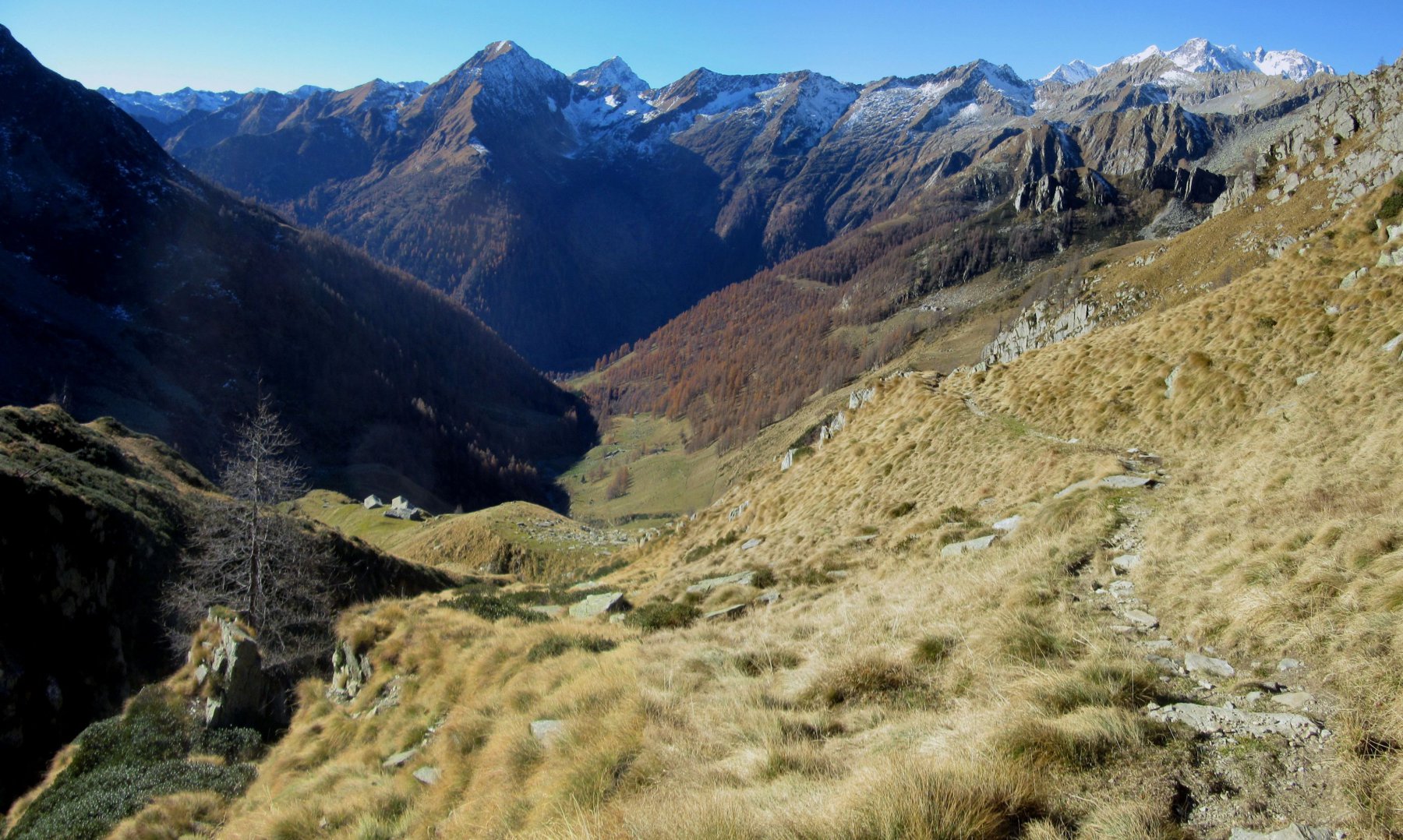
CARCOFORO – Colle d’ Egua
trail n. 122 Carcoforo – Colle d’ Egua
Difficulty: medium
average duration: 2 – 3 hours
departure altitude: 1304 mt
arrival altitude: 2239 mt
altitude difference: 935 mt
Route description
It is one of the classic historic traverse routes to connect Carcoforo with the Mastallone Valley and the Anzasca Valley. It is part of the route of the Great Traverse of the Alps (GTA), the Great Walser Trail, the Via Alpina and the Cai Italia Trail.
From the center of Carcoforo, located on the hydrographical right side of the Egua stream, continue toward the houses upstream of the village, then rising through meadows and passing by the little Torbe chapel. One enters Val d’Egua continuing with a moderate climb finding a larch grove on the left. You cross the Rio Passone, a affluent of the Egua, leaving the alpine huts of Alpi Giacc and Casera Bianca, 1523m, in the valley, leading to Alpe Piovale, 1637m. Climbing a few more meters, at 1685m rises the Boffalora Majerna hut, reachable in about an hour.
The trail then grazes Alpe Egua, 1799m, and reaches Alpe Sellette, 1915m.
From here, keeping to the left ridge, it reaches Colle d’Egua, 2239m, in about 2h30/3 hours total.
In 2013 a stone building was inaugurated near the col to house the Volpone-Sesone Bivouac, equipped with 12 beds, stove, stove and services.
Descending the northeast slope you enter the Mastallone Valley (route 517) and, having reached Alpe Selle, 1824m, you can descend to the right through the Baranca Valley to Fobello.
Other routes
recommended
Valsesia has a lot to offer to hiking enthusiasts
Suggestive trails surrounded by nature that offer breathtaking views: be surprised by the beautiful mountains of Valsesia!
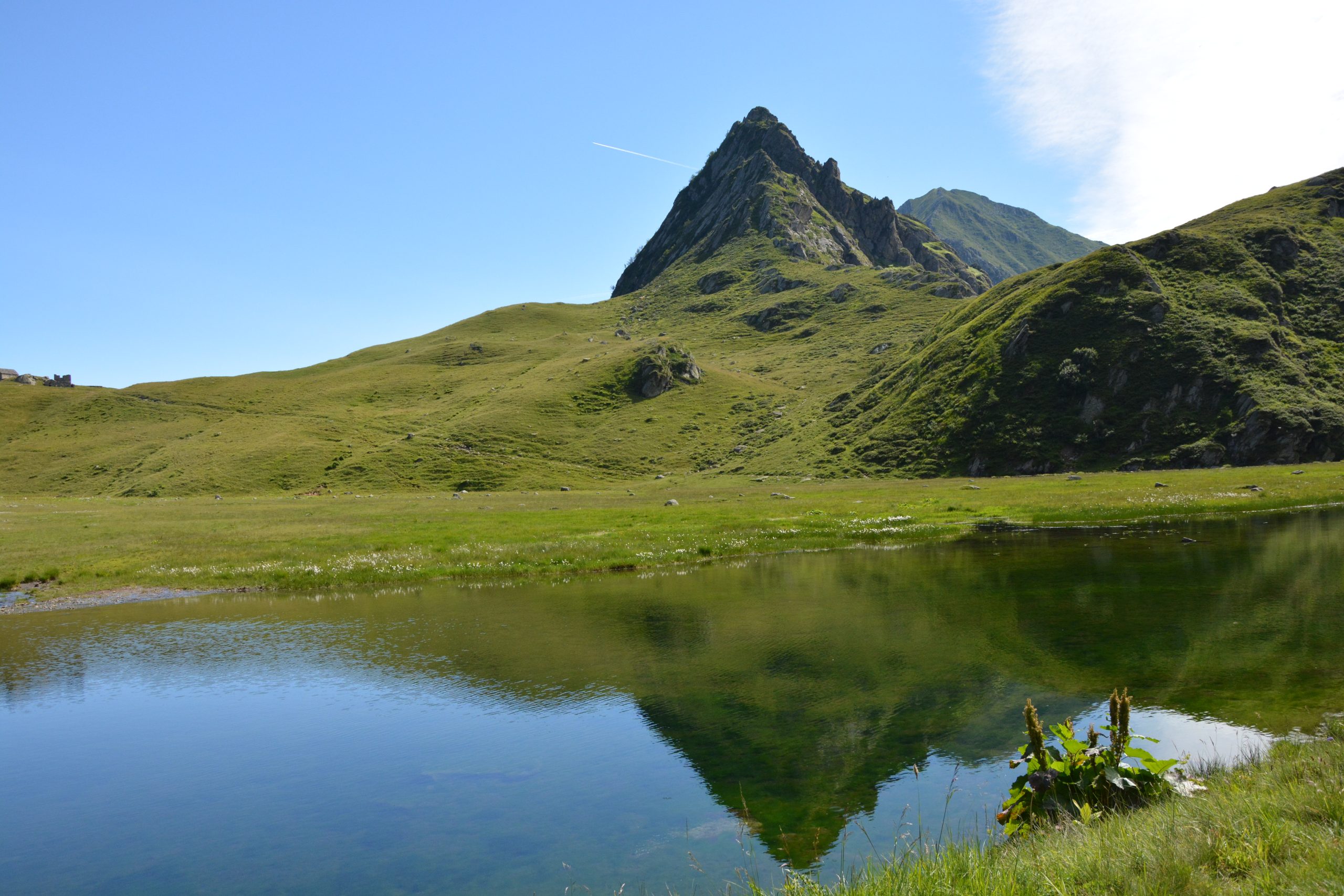
FOBELLO – Lago e Colle di Baranca
trail n. 517 Fobello,Fraz. S. Maria – Lago e Colle di Baranca – Colle d’Egua
Difficulty: medium
average duration: 3-4 hours
departure altitude: 1106 mt
arrival altitude: 2239 mt
altitude difference: 1133 mt
Route description
This route leads to Lake and Colle di Baranca, which connects to Colle d’Egua along a trail of great historical importance, often used in the “grands tours” of the 19th century.
It is part of the route of the Great Traverse of the Alps (GTA), the Great Walser Trail, the Via Alpina and the Cai Italy Trail.
From the village of Fobello, 873m, we continue by car on the carriage road, passing through the hamlets of Boco and La Piana, to Santa Maria, 1106m, the starting hamlet of our itinerary.
At the end of the paved road, where there is a parking lot, we take trail 517, which follows the course of the Mastallone stream, and on the way up we meet the alpine pastures Catolino, 1252m, and Lungostretto, 1291m. A little higher up, crossing the Mastallone on a bridge, the mule track proceeds with a couple of hairpin bends, passing by a picturesque beech glade.
You then reach Alpe Baranca, at an elevation of 1600m, a lovely cluster of renovated huts, with the GTA stage point hut.
The route proceeds slightly uphill near the waterfall, formed by the waters of Lake Baranca. You reach the lake by following the trail to Alpe Selle, with several characteristic huts. Not far away, you can see the ruins of what was once the famous Villa Aprilia, known as Villa Lancia, destroyed during the last World War.
From the hill one can descend toward Bannio and Anzino.
From here you can resume climbing through picturesque meadows rich in alpine flora, on the southeast-oriented path that leads to Colle d’Egua, 2239m, and then connect to the village of Carcoforo.
Other routes
recommended
Valsesia has a lot to offer to hiking enthusiasts
Suggestive trails surrounded by nature that offer breathtaking views: be surprised by the beautiful mountains of Valsesia!
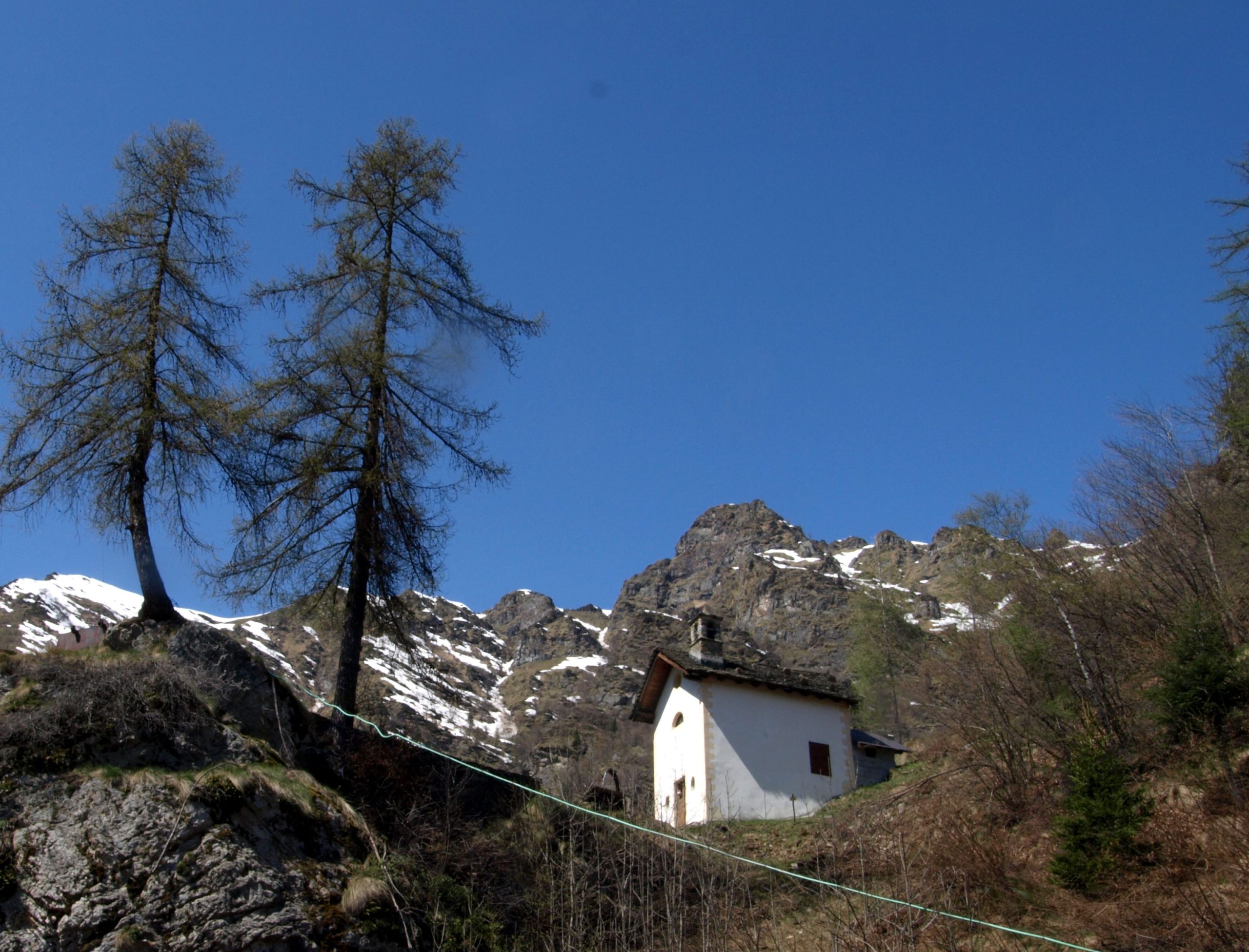
CERVATTO – Madonna del Balmone
trail n. 507 Cervatto – Madonna del Balmone
Difficulty: medium – easy
average duration: 1 hour
departure altitude: 1033 mt
arrival altitude: 1363 mt
altitude difference: 330 mt
Route description
This route partly coincides with the “Art Trail.” It touches on pretty hamlets and numerous oratories to arrive at the charming mountain shrine of Madonna del Balmone.
The itinerary starts from the village of Cervatto,1002m, traveling by road, approximately in 15 minutes, along Route 501 to Giavina, 1033m.
Here you start walking along the mule track on the right. You pass under the Consolata Oratory and shortly arrive at the small hamlet of Orlino, 1101m. Here several are the characteristic houses developed on many floors so as to make the most of the modest building area.
You then pass by where the church dedicated to St. Martin stands and enter the forest on a continuous ascent among oaks, firs and beeches to reach the small church of Saints Peter and Paul, 1184m.
One enters the valley dominated by Punta Castello, 2096m, then climbs gently there finding oneself in a short time in the meadows of the hamlet Taponaccio, 1236m. Crossing the surrounding meadows, the trail continues uphill and arrives, preceded by a characteristic renovated hut, at the sanctuary of Madonna del Balmone, dedicated to the Madonna of Oropa.
Other routes
recommended
Valsesia has a lot to offer to hiking enthusiasts
Suggestive trails surrounded by nature that offer breathtaking views: be surprised by the beautiful mountains of Valsesia!
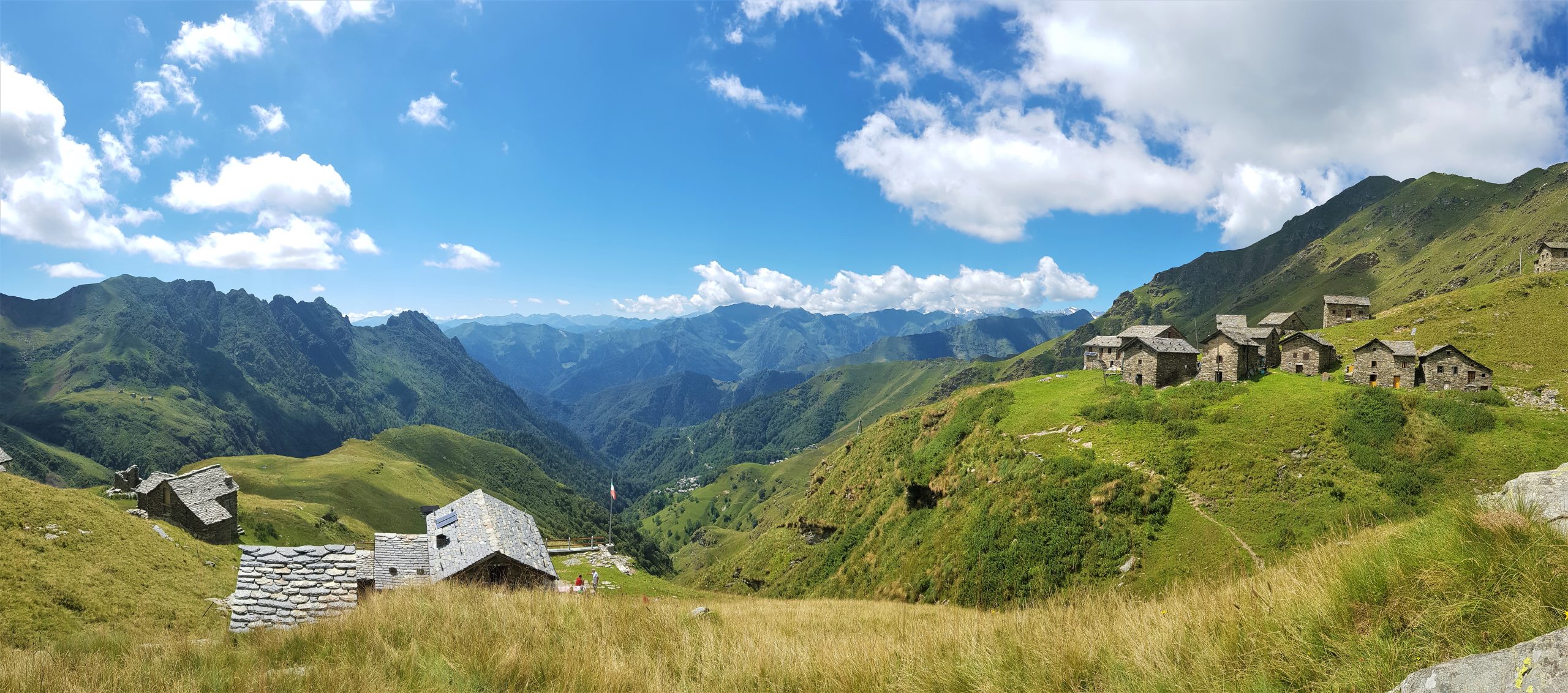
RIMELLA – Alpe Pianello – Bocchetta di Campello
trail n. 548 Rimella – Bocchetta di Campello
Difficulty: medium
average duration: 2-3 hours
departure altitude: 1176 mt
arrival altitude: 1924 mt
altitude difference: 748 mt
Route description
This is the historic trail that connects Rimella to its ancient hamlet of Campello Monti in the Strona Valley.
This route is part of the Great Traverse of the Alps (GTA), the Via Alpina, the Cai Italia Trail, the Great Walser Traverse and with a Resistance Route.
From the village of Rimella, 1176m, follow the paved road up to the hamlet of Sella, 1287m. You pass the village by continuing on the road that arrives just before the hamlet of San Gottardo, parking your car in a parking lot on the right, just after the Chapel of the Madonna del Rosario. From here take path No. 548, which comes off to the left and proceeds uphill, briefly, thus reaching the locality known as “Posa dei Morti,” 1395m. Here stands a small church beside a rocky balm, under which is located a cross.
Continue moderately uphill through the woods passing Alpe Selletta, 1461m, located on the ridge above San Gottardo. Continue over a vast meadow that covers the entire western side of the valley.
The trail passes high above the hamlets of Wan, 1470m, and Verch, 1525m, and past several rivulets descending from Pizzo or Blatte to reach an elevation of 1780m near Alpe Pianello (in about 1h30/2 hours). In this alpine pasture, the Rifugio CAI Città di Borgomanero is located.
The trail continues uphill and reaches Bocchetta di Campello, 1924m, (in total about 2h30). A rock altar dedicated to the memory of Father Giovanni Gallino, priest and teacher, founder of GRIM, has been built nearby.
For those who want to continue, you can follow the path that climbs the Strona Valley side and leads first to the Alpe, then to the Lake and then to Cima Capezzone, 2421m.
Going down the valley instead, one reaches Alpe Scarpia and then Campello Monti, an ancient hamlet of Rimella..
Other routes
recommended
Valsesia has a lot to offer to hiking enthusiasts
Suggestive trails surrounded by nature that offer breathtaking views: be surprised by the beautiful mountains of Valsesia!
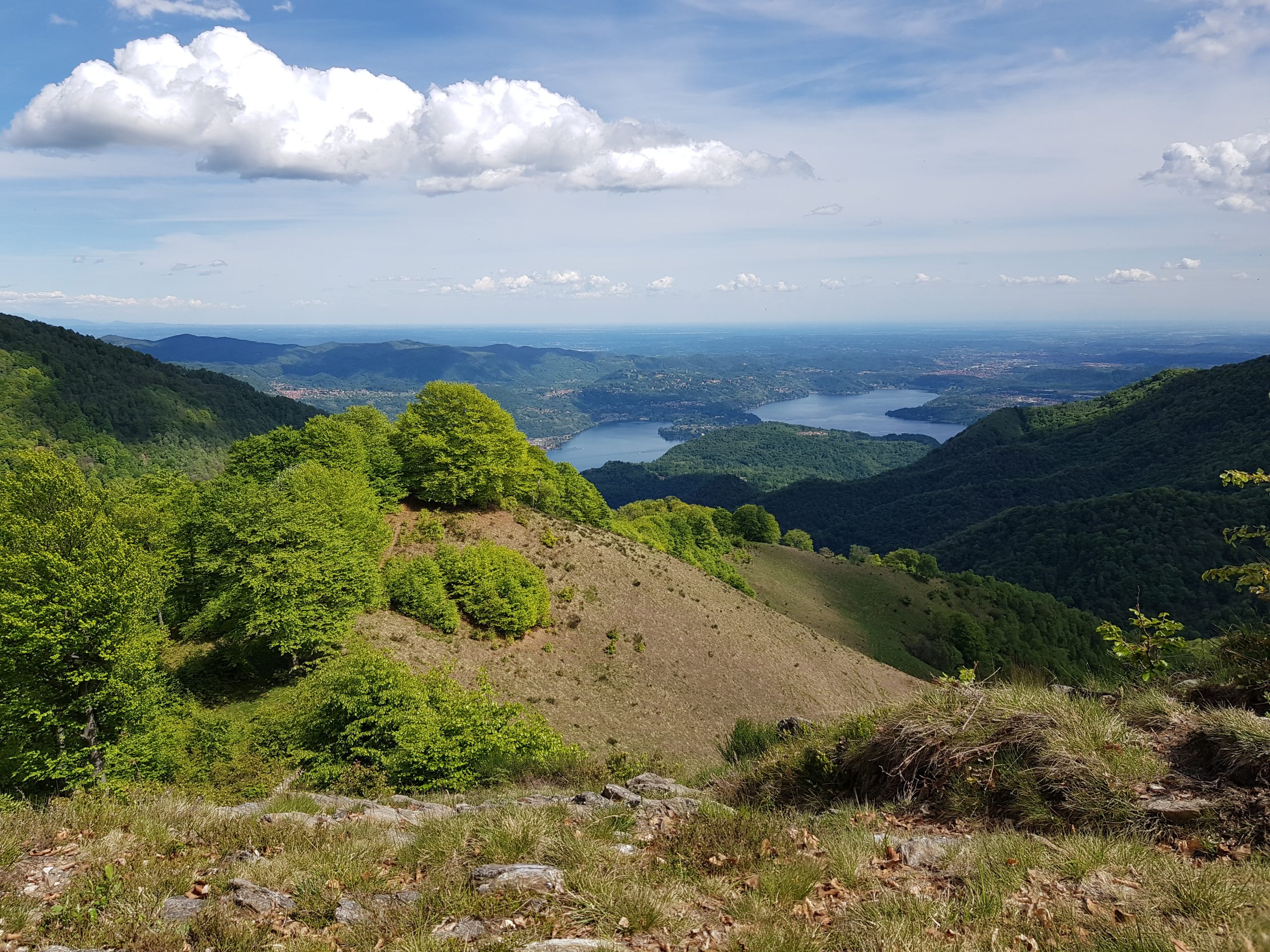
VARALLO, fraz. Corte (Camasco) – Alpe Sacchi
trail n. 626 Corte (Camasco) – Alpe Sacchi
Difficulty: medium – easy
average duration: 1-2 hours
departure altitude: 800 mt
arrival altitude: 1230 mt
altitude difference: 496 mt
Route description
A beautiful trail leading to Alpe Sacchi, a scenic valley directly overlooking the Cusian side, with memorable views of Lake Orta.
The trail begins immediately upstream from one of the hamlets of Camasco, 756 m, Corte. Crossing the bridge, you skirt a fence following a track that leads to the ford of a stream. Arriving at a pasture area, take a left and climb a clearing. The trail proceeds through the forest until you reach Alpe Rüsi, at an elevation of 1100m. You then continue across the dirt road that climbs cutting across the slope to reach Sella delle Sacche, 1296m. Continuing, you then descend briefly to the road coming from Morondo.
Follow the road and you will soon reach Alpe Sacchi, 1230m, where there is a wonderful view of Lake Orta, the mountains of Cusio, Ossola and Ticino, and even a glimpse of the Lombard Pre-Alps.
Alpe Sacchi can also be reached by a paved road from Varallo via Morondo.
Following the ridge northward, one can reach by a route partly on a dirt road and partly on a path, in about half an hour, the Colle del Ranghetto, 1272m.
Other routes
recommended
Valsesia has a lot to offer to hiking enthusiasts
Suggestive trails surrounded by nature that offer breathtaking views: be surprised by the beautiful mountains of Valsesia!
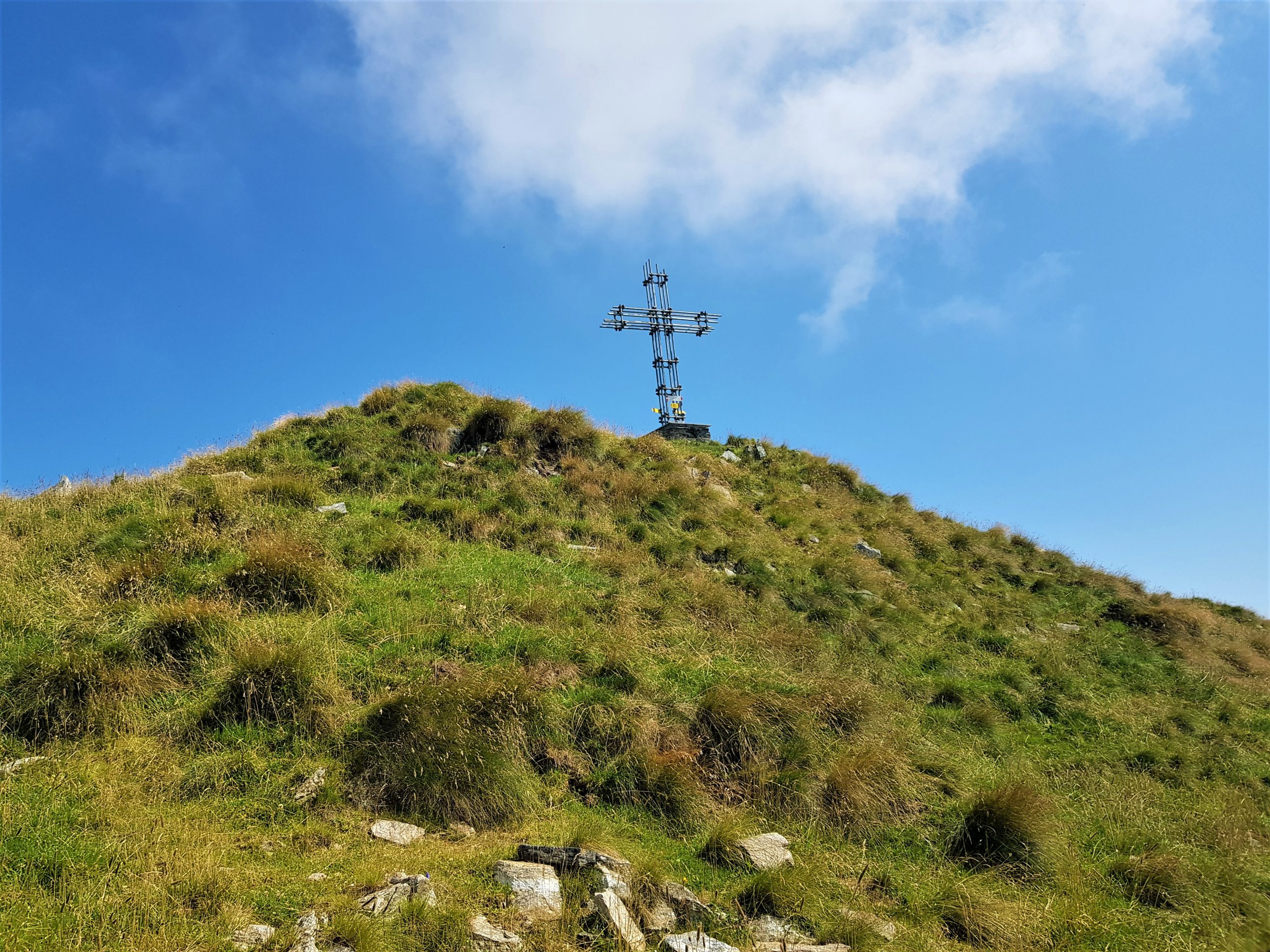
VARALLO, Fraz. Piane di Cervarolo – Massa del Turlo
trail n. 620 VARALLO, Fraz. Piane di Cervarolo – Massa del Turlo
Difficulty: medium
average duration: 2-3 hours
departure altitude: Alpe Piane 1222 mt
arrival altitude: 1959 mt
altitude difference: 737 mt
Route description
The itinerary begins in the hamlet of Piane di Cervarolo, where at the end of the road stands Alpe Piane, 1222m. From this beautiful plateau, characterized by peculiar houses and huts, a pretty little church and the Camosci Refuge, you cross the vast alpine pasture following trail no. 620. You cross a beech forest, reaching Sella Vaneccio, 1297m. Continue along the ridge as the forested landscape gradually becomes less dense and you reach Bocchetta Schillottàa, 1414m.
Cutting diagonally across a section of rocky ridge on the west side and regaining the ridge, you reach Cima di Ventolaro 1620m. You then proceed along the ridge passing first an anticima, then Bocchetta del Sonato, 1900m, and reach the summit of Massa del Turlo, 1959m, on which a tall iron cross is erected. From the summit there is an impressive view of part of the alpine circle, the lakes of Lombardy and several villages of Val Strona and Valsesia.
Other routes
recommended
Valsesia has a lot to offer to hiking enthusiasts
Suggestive trails surrounded by nature that offer breathtaking views: be surprised by the beautiful mountains of Valsesia!
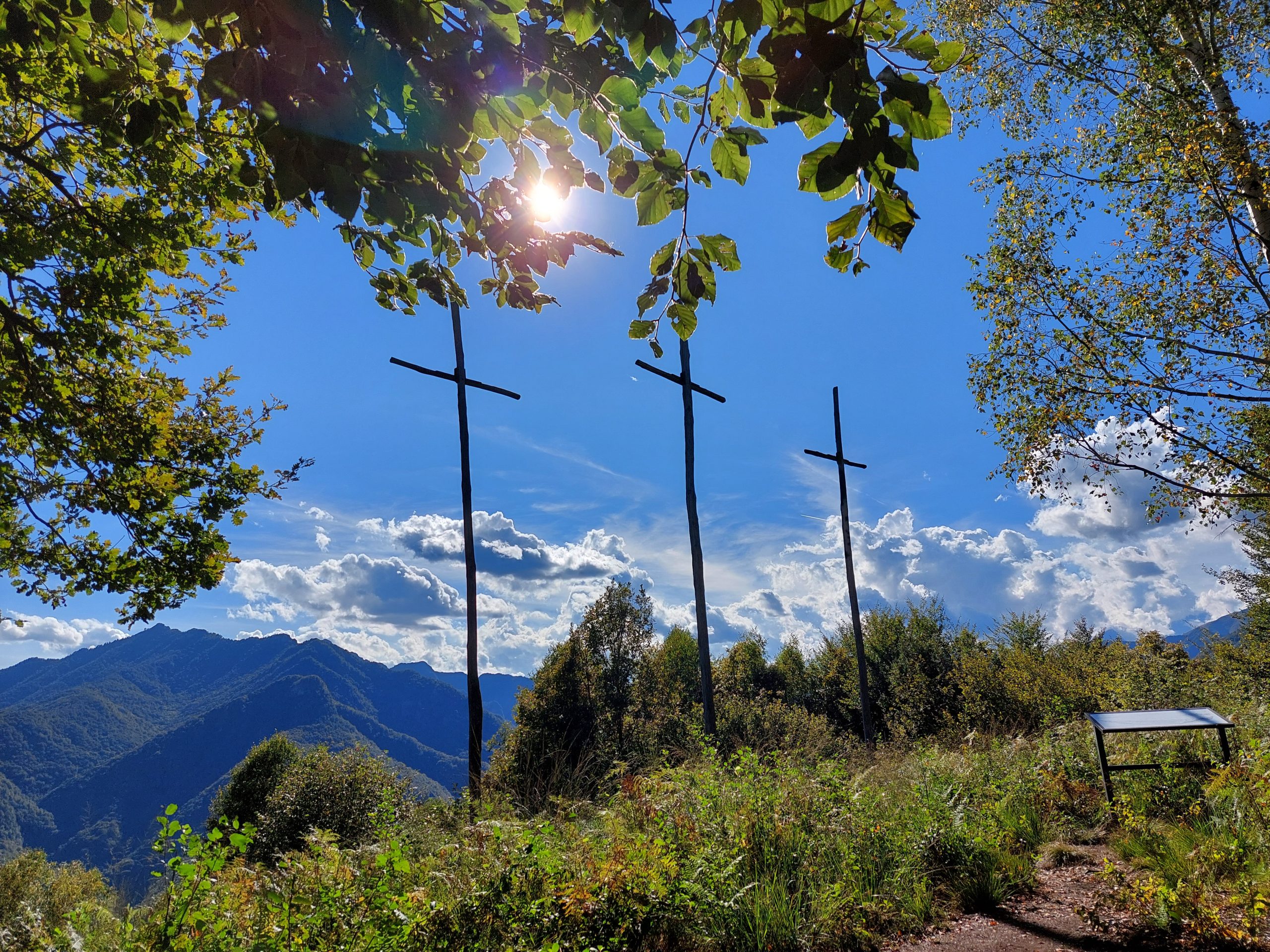
VARALLO – Sentiero di Padre Gallino
trail Padre Gallino Segnavia 616-spg
Difficulty: medium
average duration: 3 hours
departure altitude: 454 mt
arrival altitude: 919 mt
altitude difference: 465 mt
Route description
The itinerary connects Varallo to Sacro Monte and the scenic peak of Monte Tre Croci, along an evocative loop trail of great artistic and religious interest. It was realized in honor of Father Giovanni Gallino (1921-1986), a great figure of educator and founder of GRIM (Gruppo Ragazzi in Montagna).
The itinerary begins in Varallo, 450m, near the Church of Santa Maria delle Grazie just after the cable car to Sacro Monte. You take an almost level lane to the right that shortly after climbs to the little church of Our Lady of the Heart and then reaches the entrance square of the splendid Sacro Monte of Varallo, 612m. You cross it on a pleasant climb to take a right onto the mule track located after the guides’ kiosk.
You follow the path until you reach the carriage road. Cross it and climb up the path that leads to the right to an impressive viewpoint and the small church of Cucco. Then proceed uphill taking the path that climbs to the left, and at a junction keep left until you reach the Sasei viewpoint, from where there are views of the Mastallone Valley, Varallo and Sacro Monte.
Next, taking the path that climbs steeply into the woods, you reach the summit of Mount Tre Croci, 919m (also reachable from the aforementioned fork by taking a steeper path). From this mountain, characterized by three high crosses, there is a fabulous view of Varallo and the surrounding mountains.
Continuing northward for a stretch on the ridge, you descend to the carriage road near the oratory of Gerbidi. Continuing to the right, you arrive, in about 20 minutes, at the hamlet of Verzimo, 743m.
Just before the church on the left, take the path steeply downhill through the woods that grazes an alpine pasture and reaches the dirt road that approaches a beautiful stream. You then reach the ruined oratory of San Pantaleone.
At last you return to the carriage road near the “Buzzo Bridge,” and staying to the left, along the road, in a few hundred meters you return to the starting point.
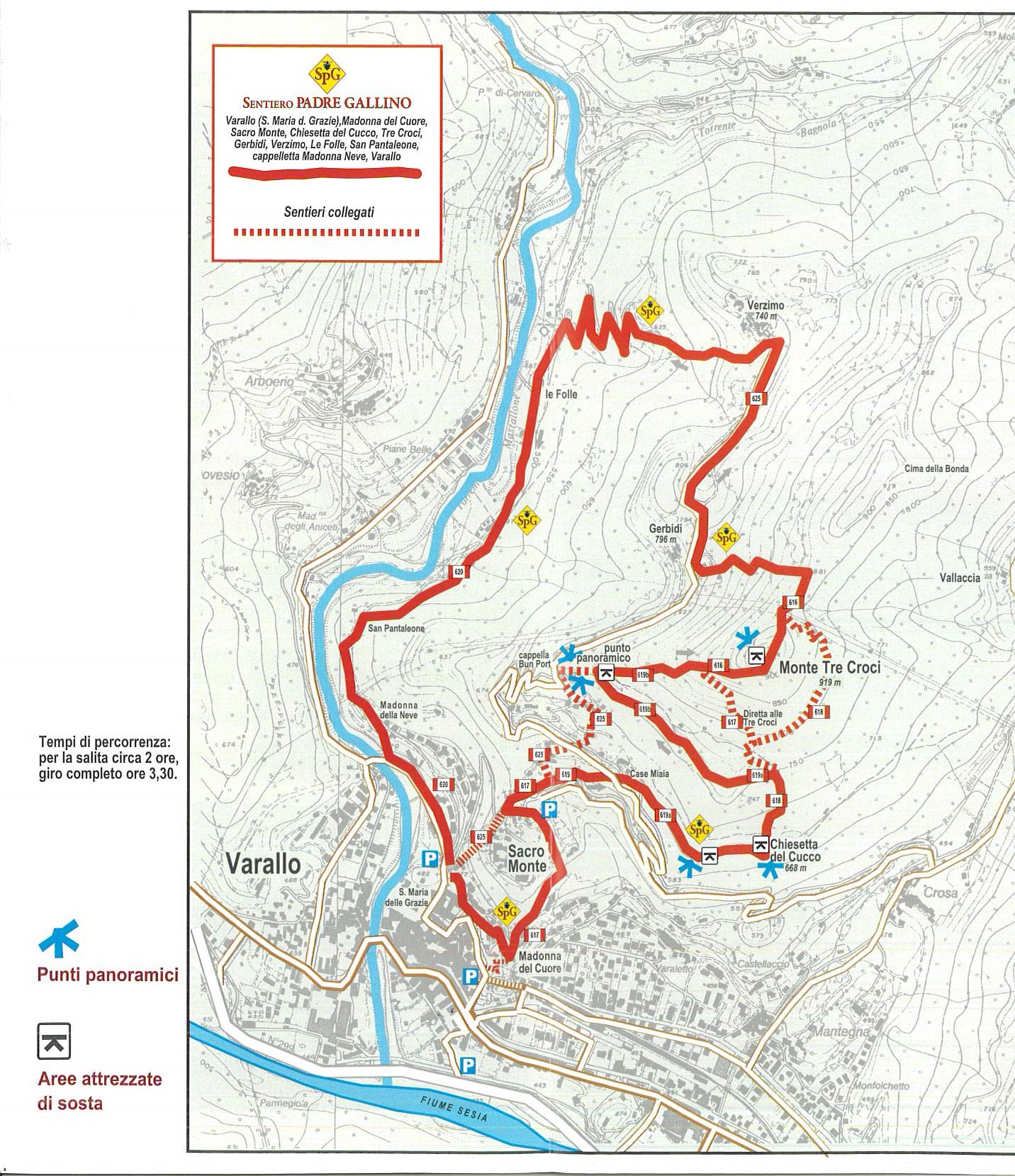
Other routes
recommended
Valsesia has a lot to offer to hiking enthusiasts
Suggestive trails surrounded by nature that offer breathtaking views: be surprised by the beautiful mountains of Valsesia!
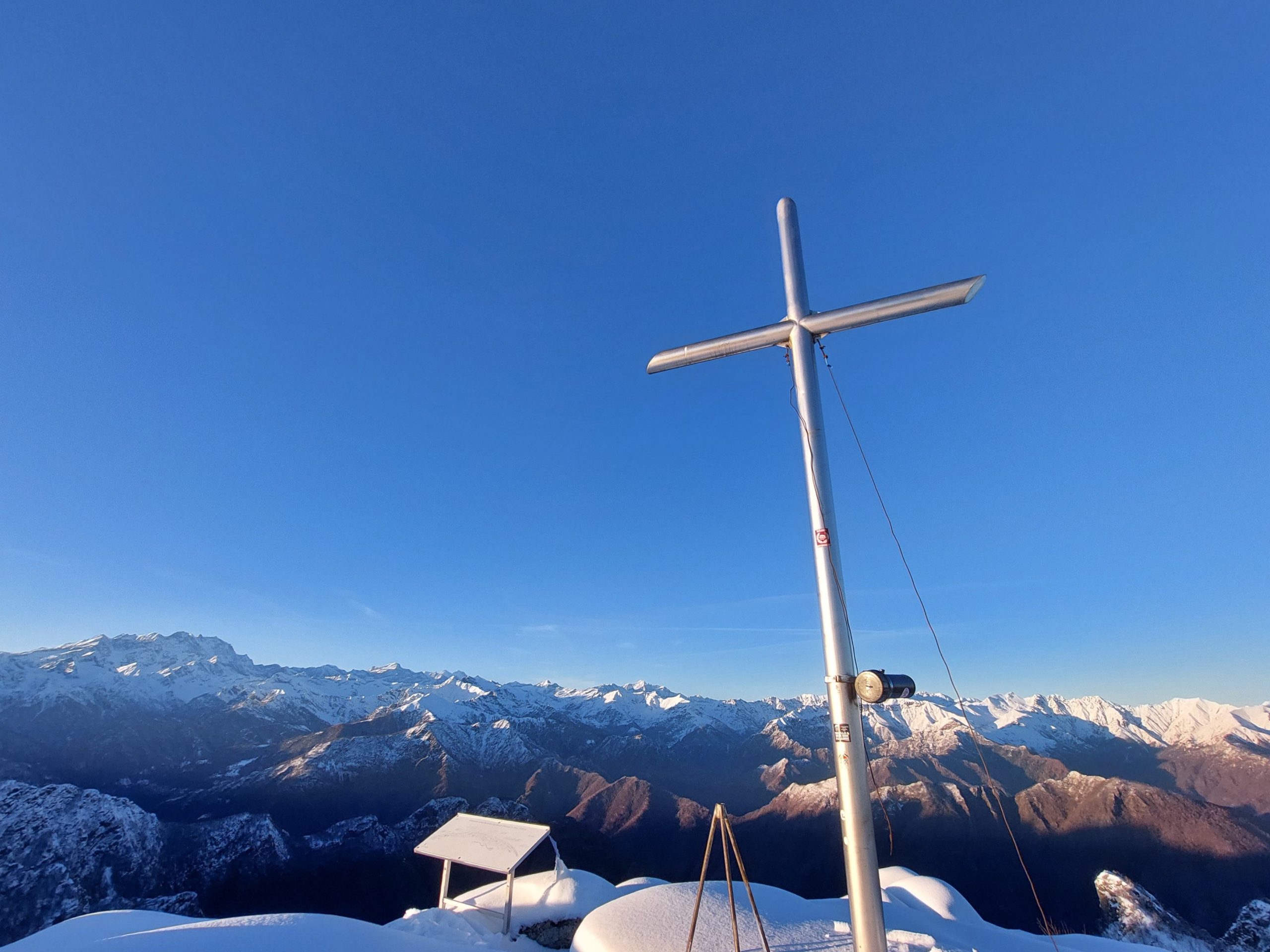
VARALLO, fraz. Crevola – Res o Bec d’Ovaga
trail n. 605 Varallo, fraz. Crevola – Res o Bec d’Ovaga
Difficulty: medium
average duration: 2-3 hours
departure altitude: 441 mt
arrival altitude: 1631 mt
altitude difference: 1190 mt
Route description
This is the most popular route to reach this peak from which it is possible to see one of the best views of lower and upper Valsesia, the imposing Monte Rosa and the chain of the Swiss Alps. It is very popular in all seasons.
The route can start from the hamlet of Varallo Crevola, near the parish church, or by driving up to the village of Casavei.
Starting from Crevola, proceeding left along the main road in the direction of Parone, turn right at house number 134 taking an alley thus reaching the mouth of the trail. Going uphill, you will cross the Crevola-Parone carriage road at a bend. Proceeding along the path to the right, you reach an alpine pasture and then the plateau of Alpe Cerei, 708m.
Continuing uphill through a mixed forest, you come to a ruin and enter a beech forest, thus coming out at the wide pasture of Casavei, 809m, an alpine pasture with several repurposed houses, where the carriage road ends.
The hamlet of Casavei can also be reached by car, and begin the walk from this point.
Continue on a mule track and then continue on the path at the edge of the meadow that touches Rio di Casavei. You arrive along Casavei-Alpe Campo service road at Sella di Taglione, 986m, and follow it to Alpe Campo, 1090m. Continue on the trail through a coniferous forest, and passing the ruins of Alpe Volpera, 1130m, you reach Alpe del Pastore or Alpe Res, at 1216m.
Proceed up and over the Riale stream, and continue in hairpin bends to reach the Spanna-Osella Refuge, run by the Valsesian Section of the ANA.
Passing between the small chapel and the hut, in a few minutes a steep section leads to the summit of Res or Bec d’Ovaga, 1631m. Here there is a hut, a small chapel, and, climbing a few more minutes past the chapel, you reach the cross on top of the mountain, from where there is a 360-degree view of the Alpine arc and Monte Rosa.
For those who wish to continue, quite popular is the traverse along the ridge that beyond the Sella di Vazzosa, over the peaks of Castello di Gavala, Monte Luvot and the Sella della Rosetta leads to the pastures of Monte Tovo and to Foresto.
Other routes
recommended
Valsesia has a lot to offer to hiking enthusiasts
Suggestive trails surrounded by nature that offer breathtaking views: be surprised by the beautiful mountains of Valsesia!
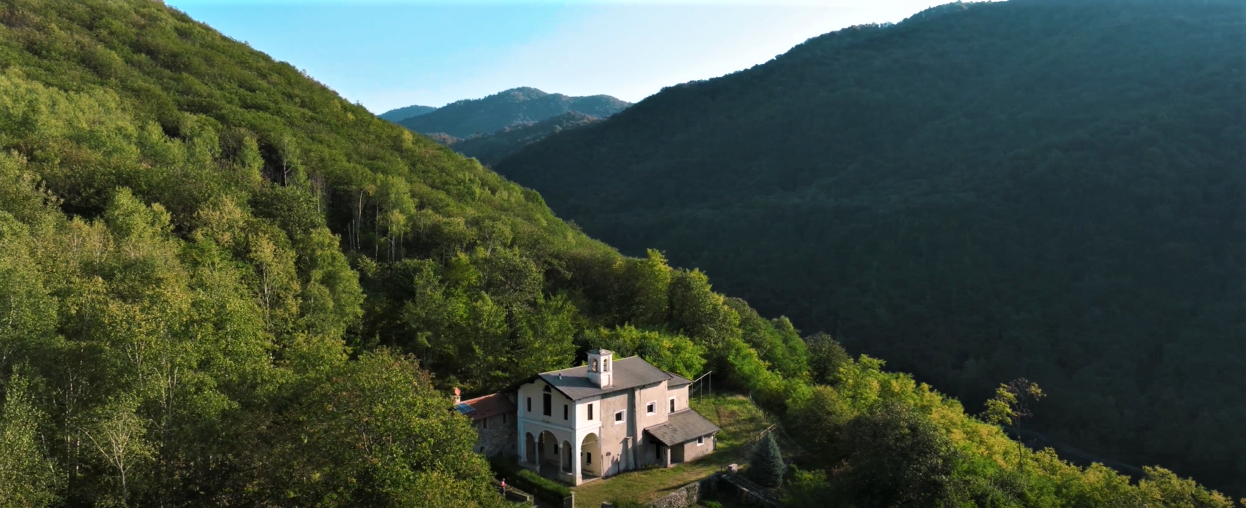
Quarona – San Giovanni al Monte – Monte Tucri
trail n. 733 QuaronA – San Giovanni al Monte – Monte Tucri
Difficulty: medium – EASY
average duration: 1 hour
departure altitude: 406 mt
arrival altitude: 791 mt
altitude difference: 385 mt
Route description
A pleasant walk along an elegant cobbled mule track will tell you the story of “Blessed Panacea,” a local legend, through several small chapels with paintings by Lino Tosi depicting highlights of the Blessed’s life. The cult for the Valsesian shepherdess is deeply felt by the community, and is remembered every year through various initiatives and events of the tradition.
The walk begins in the village of Quarona, 406m, more precisely near the Chapel of the Blessed Panacea located in via Lanzio. One almost immediately takes the comfortable mule track and the climb proceeds in hairpin bends passing two votive pillars, arriving in about twenty minutes at the Church of San Giovanni al Monte, a national monument. Historian Ottone believes it is one of the oldest churches in the Novarese area. Studies carried out during restoration in 1952 showed that the oldest part of the church rests on the remains of a Roman construction, as the tombs that were discovered would suggest. The churchyard until about 1600 served as the cemetery of the religious communities of Quarona, Cavaglia, Breia, Cadarafagno, and Castagnea. On the terrace in front of the church, on the other hand, one can admire the knotty, centuries-old hornbeam trees.
The mule track climbs further past the church and after passing several small chapels reaches the Church of the Beata al Monte, 616m, erected on the site of the martyrdom of the shepherdess Panacea.
On the side of the church continues the path that steeply reaches the southern ridge of the summit of Mount Tucri, 791m, characterized by dense vegetation.
Just before the summit, climbing past the Church of the Beata al Monte, one reaches instead a vantage point that acts as a balcony over the town of Quarona, the surrounding mountains and most of Lower Valsesia.
Other routes
recommended
Valsesia has a lot to offer to hiking enthusiasts
Suggestive trails surrounded by nature that offer breathtaking views: be surprised by the beautiful mountains of Valsesia!
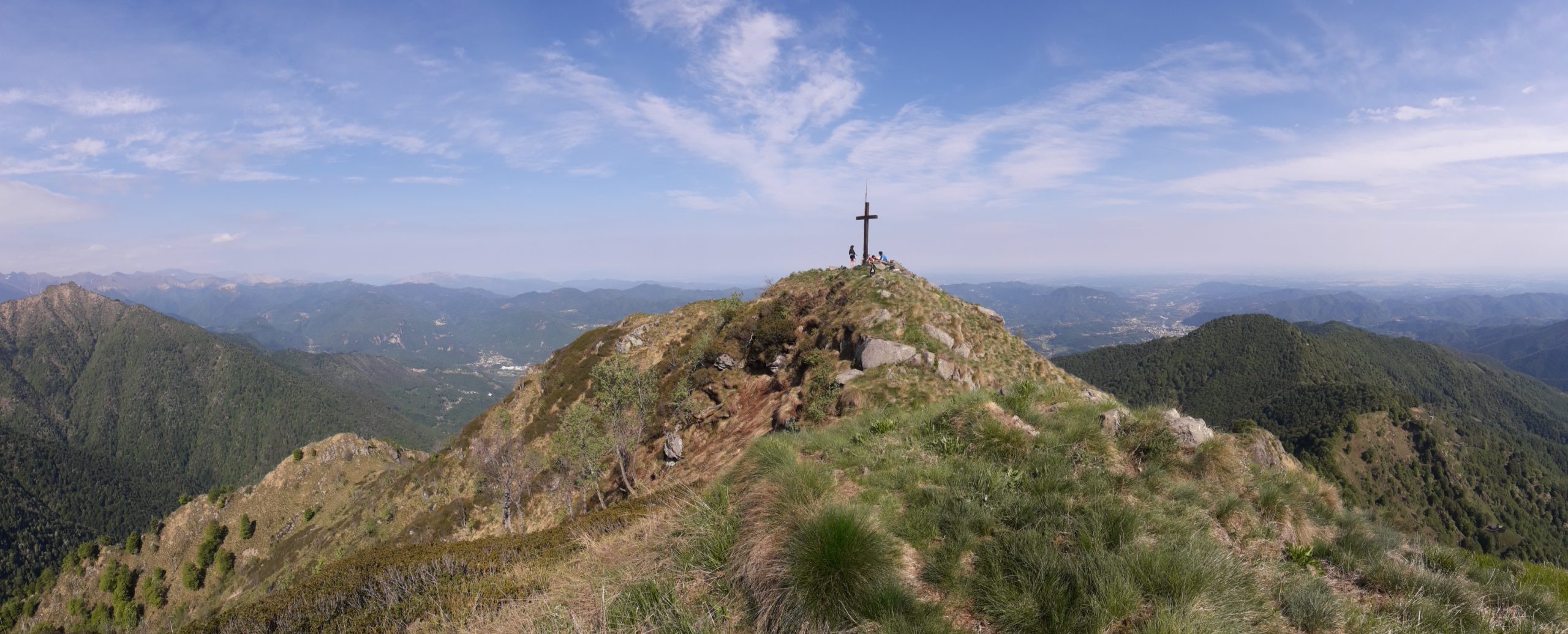
BORGOSESIA fraz. Foresto – Monte Tovo – Castello di Gavala
trail n. 715 Borgosesia, fraz. Foresto – Monte Tovo – Castello di Gavala
Difficulty: EE – Experienced Hikers
average duration: 4-5 hours
departure altitude: 371 mt
arrival altitude: 1827 mt
altitude difference: 1456 mt
Route description
The route touches the highest peaks in the town of Borgosesia.
The route begins near the parish church of Isolella, 371m, following the municipal road of the hamlet of Foresto until it reaches the first hairpin bend. Here you take a wide mule track that climbs keeping to the right for a good stretch. Passing an oratory, you reach, in about 30 minutes, Foresto, 551m in the vicinity of the cemetery and parish church dedicated to St. John. (You can also get to Foresto by car).
Enter the village and continue to reach an old chestnut grove located above the hamlet of Costa, via a mule track. Leaving two farmsteads on the left and crossing a chestnut forest, you reach the inter-modal road of Monte Tovo, cross it and proceed on the mule track that leads to the Fontana degli Alpini. The route climbs and skirting the pine forest reaches Alpe Bonde, at an altitude of 945m. It then proceeds along the hairpin bends of the trail through a beech, fir and birch forest to meet the road again at Alpe Stanvone, 1092m.
You pass the fountain and quickly climb to Rifugio Luciano Gilodi (Cà Mea), 1110m. You can also reach the Refuge, which is below the summit of Mount Tovo, by car.
Behind the hut one climbs up the road and reaches the large square overlooked by the pretty little chapel with a view of Borgosesia. From here you can climb to the extreme tip of Mount Tovo, where a symbolic cross rests, by climbing up the path on the wide slope to the right. Instead, the itinerary continues on the wide unpaved road on the right into the beech forest and reaches a shoulder of the Falghé hump, at the point where it intersects with itinerary 713, which leads from Doccio to Monte Tovo.
Proceed always keeping to the right along the dirt road that with several ups and downs reaches Sella della Rosetta, 1246m. From here, continue on the path that runs along the ridge reaching a grassy shelf, the Soglio, the arrival point of the itinerary coming from Doccio.
Proceeding on the Doccio side, you climb a gully that comes out on the ridge; you then pass on the Postua side (left), passing a ledge under a wall: the “Balmaccia.” You then reach the Sella del Casone by climbing a gully until below the anticima. Having circumvented the anticima in a steep section that requires caution, one arrives by walking a few more minutes to the summit of Mount Luvot, 1603m, symbolized by a large cross. In his “Guide to the Mountains of Valsesia,” Don Ravelli refers to it as Sasso di Soliva or Baudrocco.
Then proceeding along the ridge and passing several humps, you go around, below the ridge, on the Valsesian side, the Terraggiolo peak, 1656m. Instead, proceed following the ridge until you reach the first rocks of Gavala. Bending to the right, you flank the Locarno slope. Ascending by traces the ridge toward the west summit, then passing a small gully, you reach the first one. Later, past a second big head on the right, you pass a saddle where there are trail tracks leading along the ridge toward Massale and Res. From the saddle, via an exposed section, you can reach the main summit of Gavala Castle, at an altitude of 1827m.
Other routes
recommended
Valsesia has a lot to offer to hiking enthusiasts
Suggestive trails surrounded by nature that offer breathtaking views: be surprised by the beautiful mountains of Valsesia!
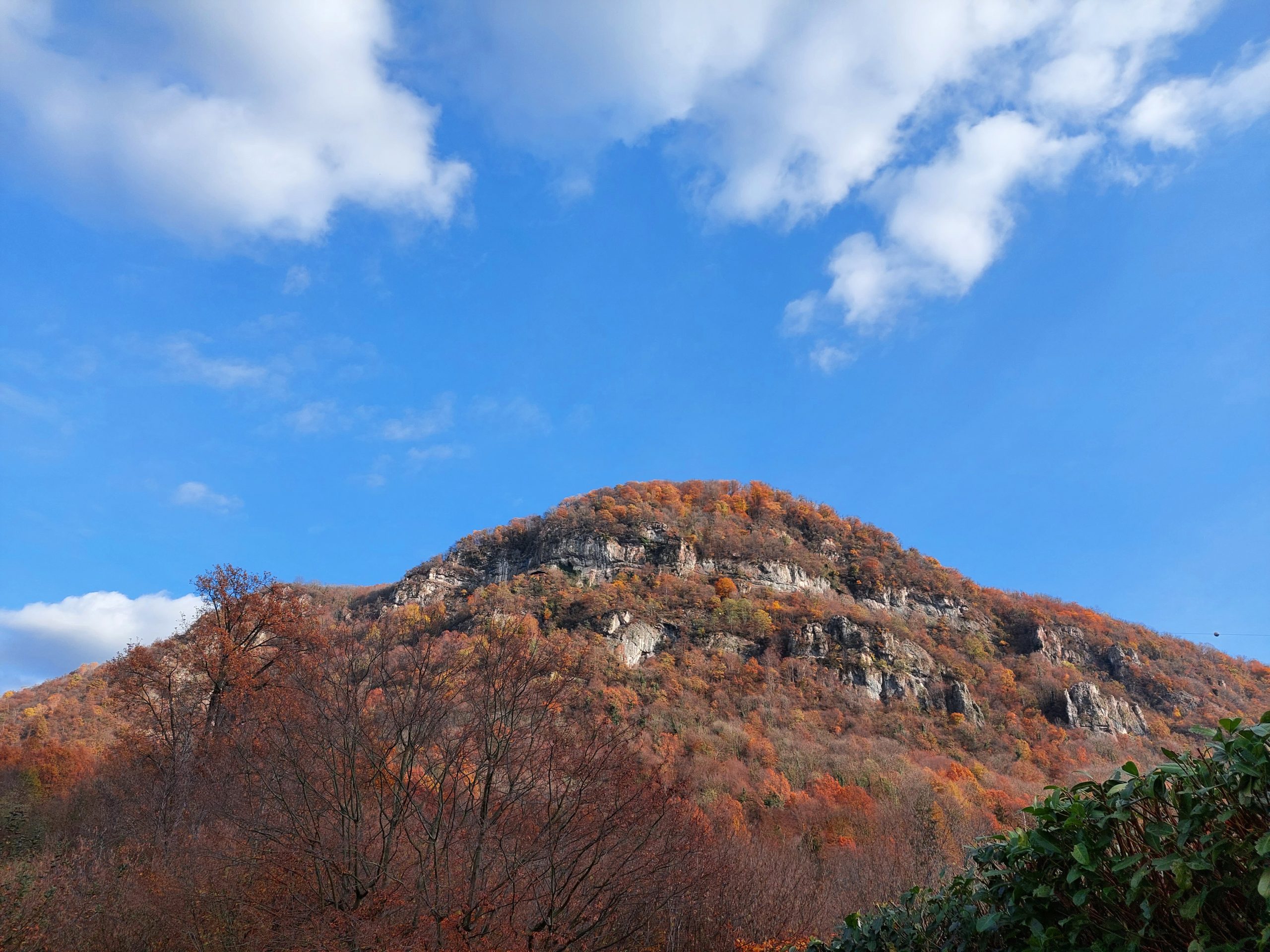
BORGOSESIA, fraz. Bettole – Monte Fenera
trail n. 769 Bettole – Monte Fenera
Difficulty: medium
average duration: 1 – 2 hours
departure altitude: 350 mt
arrival altitude: 899 mt
altitude difference: 549 mt
Route description
An easy mule track joins the old railway station in the hamlet of Bettole, 350m, with the hamlet of Fenera San Giulio, 414m, in about fifteen minutes. (You can also get to the hamlet of Fenera San Giulio by car, where you will find a parking lot at the end of the road.)
Here you take a flight of steps in front of the parking lots that crosses cultivated meadows and begin to climb, passing the houses of the hamlet until you reach the wide gravel road that, after a few meters, turns right until it joins the path that climbs into the woods. Following the path that zigzags uphill, at an altitude of 610m you will find on the right the detour to the Ciutarùn cave, which can be reached in a short time and is protected by a gate.
Proceeding instead on the path, after a few tens of meters there is a gully, the crossing of which requires attention and caution, due to the possible fall of stones and the slipperiness of the ground. At the top you turn left. From here you can catch a glimpse of the Ciota Ciara cave. On the right, on the other hand, you can reach the Belvedere sub-rock and a little further on, climbing a steep metal ladder, you can reach the GASB (Archaeological Speleological Group of Borgosesia) Shelter. Nearby comes path 780 coming from Ara: for those who do not want to climb the metal ladder, can take this path for a few meters, descend a wooden staircase, continue a little straight ahead and, immediately on the left, climb a path that leads behind the refuge.
Returning instead to the main itinerary, then at the fork, continue on the left, flanking the rock face and reaching the karst cavities: the most relevant is the Ciota Ciara.
The route proceeds with a short traverse uphill until it reaches the cave known as Buco della Bondaccia at an elevation of 690m. Entering a karst basin and turning right, it climbs the wooded flank until it crosses with path 768; follow it for a few meters and then leave it, veering right again and continuing to the saddle that divides the two peaks of the mountain. Here also coincides the arrival of path 768 that we previously met and of path 772 coming from Colma and Grignasco.
Continuing to keep to the right for about a hundred meters we reach the stone cross located on Cima Bastia, 899m, the culminating point of Mount Fenera from which to enjoy a 360° panorama of Borgosesia and most of the Alps.
The Mount Fenera territory became part of the regional system of protected areas in 1987 with the establishment of the Mount Fenera Natural Park and covers an area of 3378 hectares. The park takes its name from the mountain of the same name, which rises, mighty and lonely, above the foothills of Lower Valsesia and whose profile is recognizable from the Novara and Vercelli plains. Mount Fenera, has on its western slopes numerous caves, some of which are of considerable archaeological and paleontological interest, as they have revealed unique signs in Piedmont of the presence of the Neanderthal man, who lived in these places about 300,000 years ago, the Cave Bear and Merk’s Rhinoceros.
Other routes
recommended
Valsesia has a lot to offer to hiking enthusiasts
Suggestive trails surrounded by nature that offer breathtaking views: be surprised by the beautiful mountains of Valsesia!
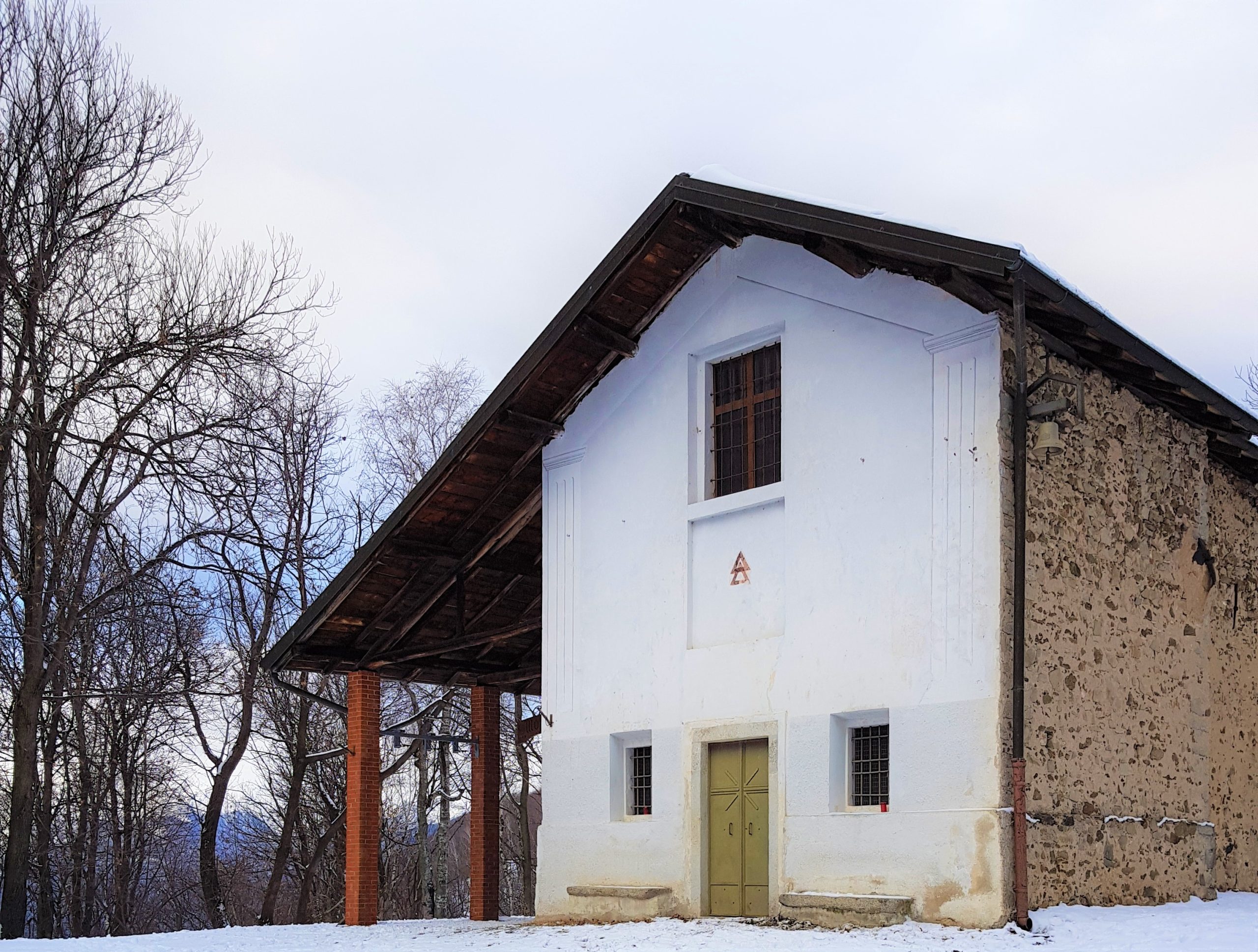
CELLIO CON BREIA, fraz. Carega – Monte San Grato
trail n. 746 CELLIO CON Breia, fraz. Carega – Monte San Grato
Difficulty: medium – EASY
average duration: 1 – 2 hours
departure altitude: 607 mt
arrival altitude: 914 mt
altitude difference: 307 mt
Route description
The route begins near the square of the church of San Matteo in the hamlet of Cellio Con Breia, Carega, 607m, where it also meets route 747 (Borgosesia-Monte Briasco).
Proceed following the paved road and, keeping to the right, cross the village center. When you reach the crossroads with two fountains, keep right with the ascent coming out on the carriage road near the aqueduct storage tank. Keeping to the right on the road to Casaccia, 670m, continue climbing until you reach the small church dedicated to the Name of Mary. Arriving at some houses above, take the mule track to the right and continue until you reach the stone bridge over the Rio di Robbia. From here the mule track begins to climb in hairpin bends and takes us in about 40 minutes to Agarla, at an altitude of 770m. Crossing the square we enter the village passing the oratory of Saints Lorenzo and Apollonia and come out near an unpaved road.
Keeping to the left you enter the carriage road and follow it past the church of San Rocco. Then leaving the road that descends to Breia shortly afterwards on the right, you reach Sella di San Bernardo, 857m.
You can also reach San Bernardo by car by following the carriage roads coming from Cellio or the village of Quarona.
Before the little church, below the restaurant, take the wide dirt road on the left and climb up the road that bypasses on the southern slope Mount Three Crosses of Breia and continuing the route, you gain Mount San Grato, 914m, where there is a pretty little church surrounded by woods.
Mt. San Grato can also be reached from the hamlet of Rozzo di Borgosesia, following the somewhat more strenuous trail No. 745, which arrives just in front of the church.
Other routes
recommended
Valsesia has a lot to offer to hiking enthusiasts
Suggestive trails surrounded by nature that offer breathtaking views: be surprised by the beautiful mountains of Valsesia!
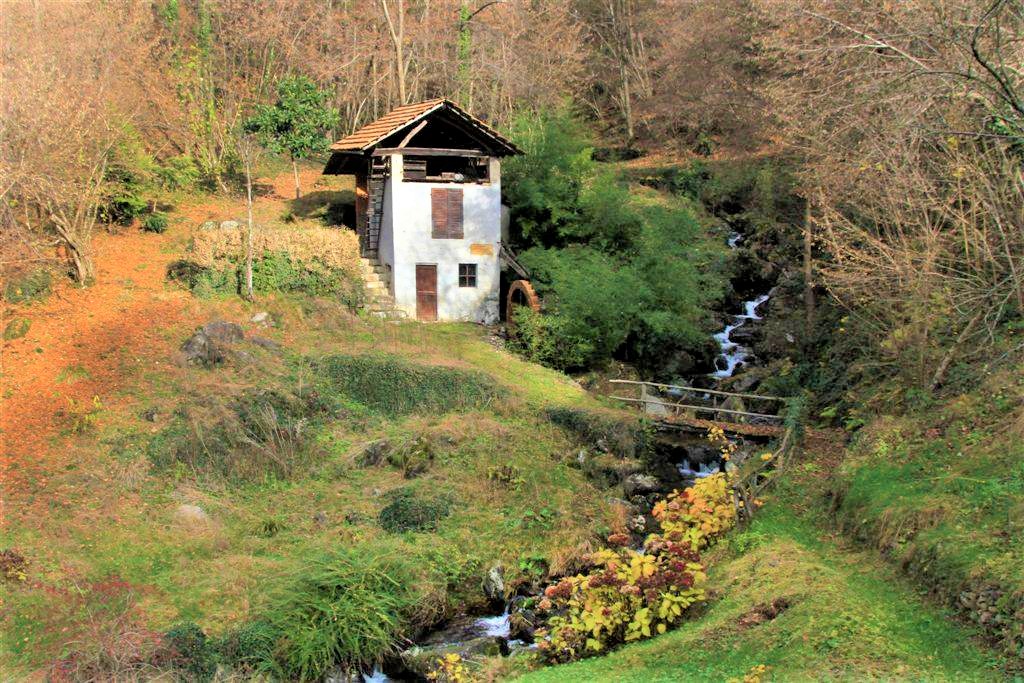
Sentiero Agnona, fraz. BORGOSESIA – POSTUA
trail n. 719 Agnona, fraz. BORGOSESIA – POSTUA
Difficulty: medium
average duration: 1 -2 hours
departure altitude: 350 mt
arrival altitude: 459 mt
altitude difference: 300 mt
Route description
Route that has always been used as a link between the two localities. In the central part it winds through the valleys of the Venenza stream and its tributaries, in completely wild territory, at times suggestive.
Starting from Borgosesia, from the Bridge of Agnona, 350m, (in the vicinity of which there is a Geosite of the Supervolcano), climb a steep asphalt road and past the first bend proceed straight along the cobbled road that enters the hamlet of Agnona 400m.
Taking the central street of the village, you follow it to the right. You pass the chapel of St. Anthony and the house of the musician Carlo Fassò, near a little fountain, and immediately afterwards turn left taking a steep little road that soon reaches Piancastello.
Past another fountain, leave path 724 on the right and turn left. Climbing steeply on a comfortable mule track you reach Franzano, a locality consisting of a historic mansion with a large park.
Continue flanking this park on a mule track and take the unpaved road at the junction with route 720. Follow it for a few meters and then immediately take the path on the left that descends to the Nanzola stream.
Ascending the opposite slope with a rather steep section to the next shelf is Ruse Rosse, 620m, where the trail continues and then shortly returns to descend to another minor stream. Having gone around some bumps one then passes some basins whose tracks tend to get lost.
Once past the Sacche stream’s reservoir, continue until the trail becomes a mule track and crosses the Venenza stream via a small bridge that shortly after reaches San Rocco di Postua, where it meets route 724, which continues in a short time keeping to the left until it reaches a small chapel.
Across the paved road you can descend to the village of Postua, 459m, and, passing in front of the town hall, the route ends reaching near the parish church.
Other routes
recommended
Valsesia has a lot to offer to hiking enthusiasts
Suggestive trails surrounded by nature that offer breathtaking views: be surprised by the beautiful mountains of Valsesia!
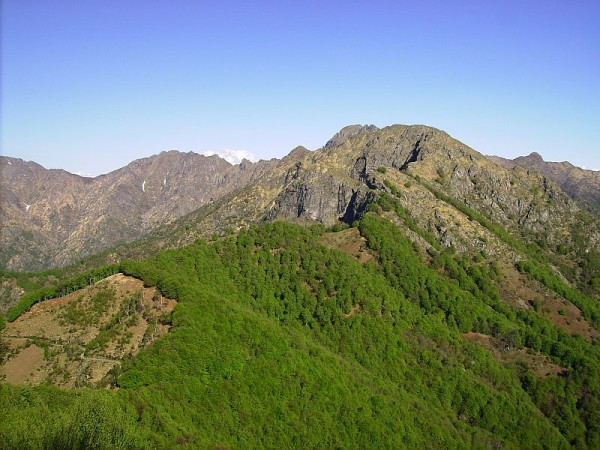
Sentiero n. 719 Postua – Agnona
trail n. 719 Postua – Agnona
Route once frequented as a link between the two localities. In the central part it winds through the valleys of the Venenza stream and its tributaries, in completely wild, at times picturesque territory.
Difficulty: medium
Distance: 17 km
average duration: 2 hours
departure altitude: 1411 mt
arrival altitude: 1741 mt
altitude difference: 360 mt
Route description
From the Agnona Bridge, 350m, near which there is a Supervolcano Geosite, go up the steep asphalt road and after the first bend go straight along the cobbled road that passes where the Napoleonic-era customs house was and enters Agnona 400m.
Reaching the central street of the village, follow it to the right with a stretch in common with itinerary 724. Pass the chapel of Sant’Antonio and at the house of the musician Carlo Fassò, near a drinking fountain, take a steep little road to the left, reaching Piancastello in a short time.
Past another fountain, leave path 724 on the right and turn left. Steeply uphill on a nice paved mule track you reach Franzano, a locality consisting only of a historic mansion house with a large park. Continue skirting the park on more degraded mule track and reach the dirt road at the junction with route 720 (0.40 hours). Follow it for a few meters to turn immediately left onto a path that descends to the Nanzola stream.
Ascend the opposite slope with a rather steep section to the next shelf, Ruse Rosse, 620m, where the trail continues recessed and then returns to a short descent to a minor stream. You go around some bumps and pass some hollows where the trail tends to get lost.
You pass the reservoir of the Sacche stream, cross it and for a steep incised section go around another shoulder. Here the trail becomes a mule track, crosses the Venenza stream on a small bridge and shortly after reaches San Rocco di Postua, where it crosses a dirt road with itinerary 724, which you follow briefly on the left to the small chapel (0.50-1.30 hours).
On the steep paved road you descend to Postua, 459m, pass the town hall and arrive at the parish church (0.10-1.40 hrs).
Other routes
recommended
Valsesia has a lot to offer to hiking enthusiasts
Suggestive trails surrounded by nature that offer breathtaking views: be surprised by the beautiful mountains of Valsesia!
